

Har Ki Dun Trek
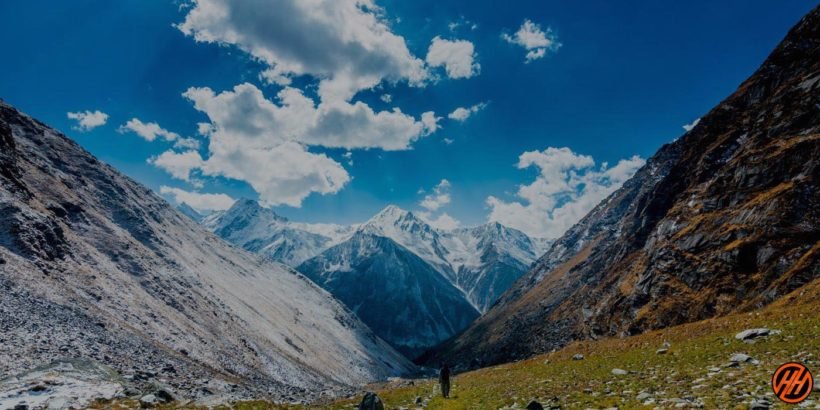
Description
Reviews (23), things to take, available dates, include / exclude.
Har Ki Dun is a popular trekking destination in the Indian state of Uttarakhand. It is known for its natural beauty and is often referred to as the “Valley of Gods.” Har Ki Dun Trek takes you through dense forests, and quaint villages, and offers stunning views of the Himalayan peaks.
Har Ki Dun Trek comes under Govind Wildlife Sanctuary National Park . No doubt, the Himalayas have enchanting beauty, a bracing climate, and desirable useful green meadows. So, what else can be better than spending some days here in the serenity?
Reasons why you should do Har Ki Dun Trek with Himalayan Hikers
Local expertise: Himalayan Hikers is a local trekking company based in Uttarakhand, India. They have extensive knowledge and experience of the Har Ki Dun trek, including the terrain, weather, and culture of the region. This can be helpful in ensuring a safe and enjoyable trekking experience.
Experienced Guides: The guides at Himalayan Hikers are experienced and certified. They have a good understanding of the Har Ki Dun trek route and can provide valuable insights into the culture and traditions of the local communities.
Good reviews: Himalayan Hikers has received positive reviews from previous clients who have completed the Har Ki Dun trek. They are known for their professionalism, excellent service, and commitment to safety.
Sustainable tourism: Himalayan Hikers is committed to promoting sustainable tourism practices on the Har Ki Dun trek. They follow Leave No Trace principles, use eco-friendly trekking equipment, and support local communities by hiring local staff and using locally sourced food.
Customized itineraries: Himalayan Hikers offers customized itineraries for the Har Ki Dun trek to suit the needs and preferences of their clients. They can tailor the trekking experience to your fitness level, time constraints, and interests.
Affordable Prices: Himalayan Hikers offers competitive prices for their Har Ki Dun trek packages. They provide a range of packages that cater to different budgets and requirements.
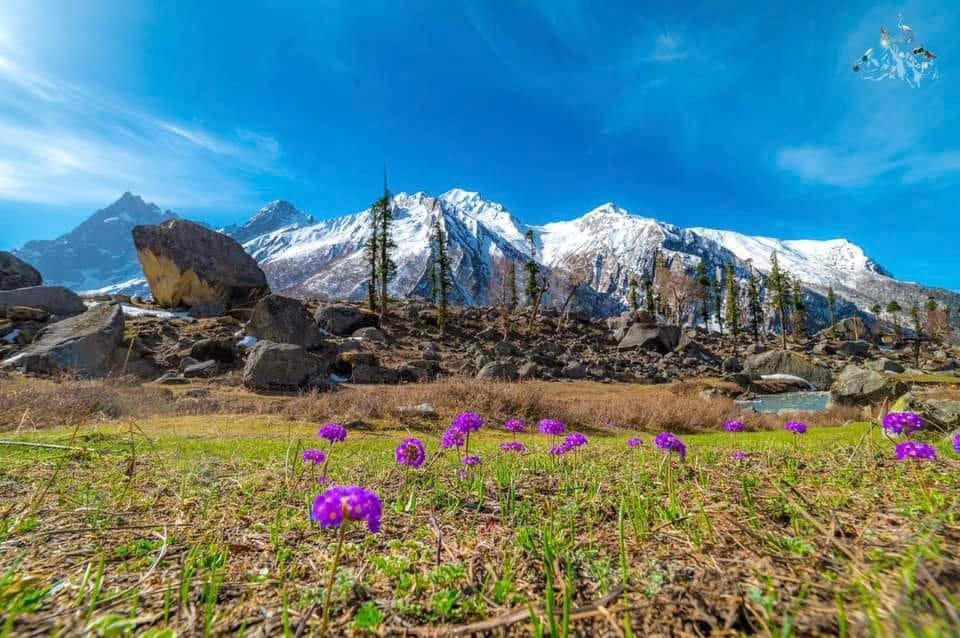
Here are some of the highlights of Har Ki Dun Trek:
Jaundhar Glacier: This is a beautiful glacier located near the Har Ki Dun Valley. The glacier is surrounded by snow-capped peaks and offers stunning views of the surrounding landscape.
Morinda Tal: This is a beautiful high-altitude lake located on the Har Ki Dun Trek. The lake is surrounded by lush meadows and offers a serene and peaceful atmosphere.
Har Ki Dun Valley: The Har Ki Dun Valley is one of the main highlights of the trek. The valley is home to a variety of flora and fauna and offers breathtaking views of the surrounding mountains.
Osla Village: Osla is a small and picturesque village located on the Har Ki Dun trek. The village is home to a number of traditional houses and offers a glimpse into the local way of life.
The term “Har ki Dun” translates to “Valley of Gods” or “Valley of Lord Shiva” in Hindi. It is derived from the combination of two words:
“Har” or “Hara”: This word refers to Lord Shiva, who is considered one of the principal deities in Hindu mythology. Lord Shiva is often associated with the Himalayan region and is regarded as the supreme deity who resides in the mountains.
“Doon”: This word refers to a valley or fertile, flat land nestled between mountains. The term “Doon” is commonly used in the Indian subcontinent to describe such valley regions
Har Ki Dun Trek Day by Day Short Itinerary, Altitude, and Trek Distance
DAY 01- Pickup Dehradun Railway Station Morning 07:00 Am | Drive to Sankri Market , Via Mussoorie, Kamptifall, Damta, Purola, Mori Sankri,
Drive Distance: 190 km | Duration: 08-09 hours | Altitude 6,309 ft | Overnight Stay The Grand Shiva Home stay at Sankri – Twin Sharing
DAY 2 – Drive from Sankri to Taluka 13 km 01 hours- Same Day Trek to Cheludgad Near Seema | Trek Distance: 12 km | Trek Time : 6/7 hours | Altitude 8,158 ft | Overnight Stay Camp – Twin Sharing
DAY 3 – Trek from Cheludgad Camp to Bhosla Camp| Trek Distance: 12 km | Trek Time: 7/8 hours | Altitude 9,795 ft | Overnight Stay Camp – Twin Sharing
DAY 4 – Trek from Exploration Day Har Ki Dun Valley or Manida Tal- Jamadar Glacier | Trek Distance: 08 km | Trek Time: 6/7 hours | Altitude 12,720 ft | Overnight Stay Camp – Twin Sharing
DAY 5 – Trek from Har Ki Dun to Cheludgad Camp | Trek Distance: 13 km | Trek Time: 6/7 hours | Via OSLA Village or Devsu Bugyal -Altitude 9795 ft | Overnight Stay Camp – Twin Sharing
DAY 6 – Trek from Cheludgad to Taluka | Trek Distance: 12 km | Trek Time: 5/6 hours | Same Day Drive to Sankri Market The Grand Shiva Home stay -Altitude 6309 ft | Overnight Stay Camp – Twin Sharing
DAY 7 – Drive Back from Sankri Market to Dehradun City Drive Distance: 190 km | Drive Duration:08-09 hours | Drop point for Himalayan Hikers trekkers: Dehradun Railway Station
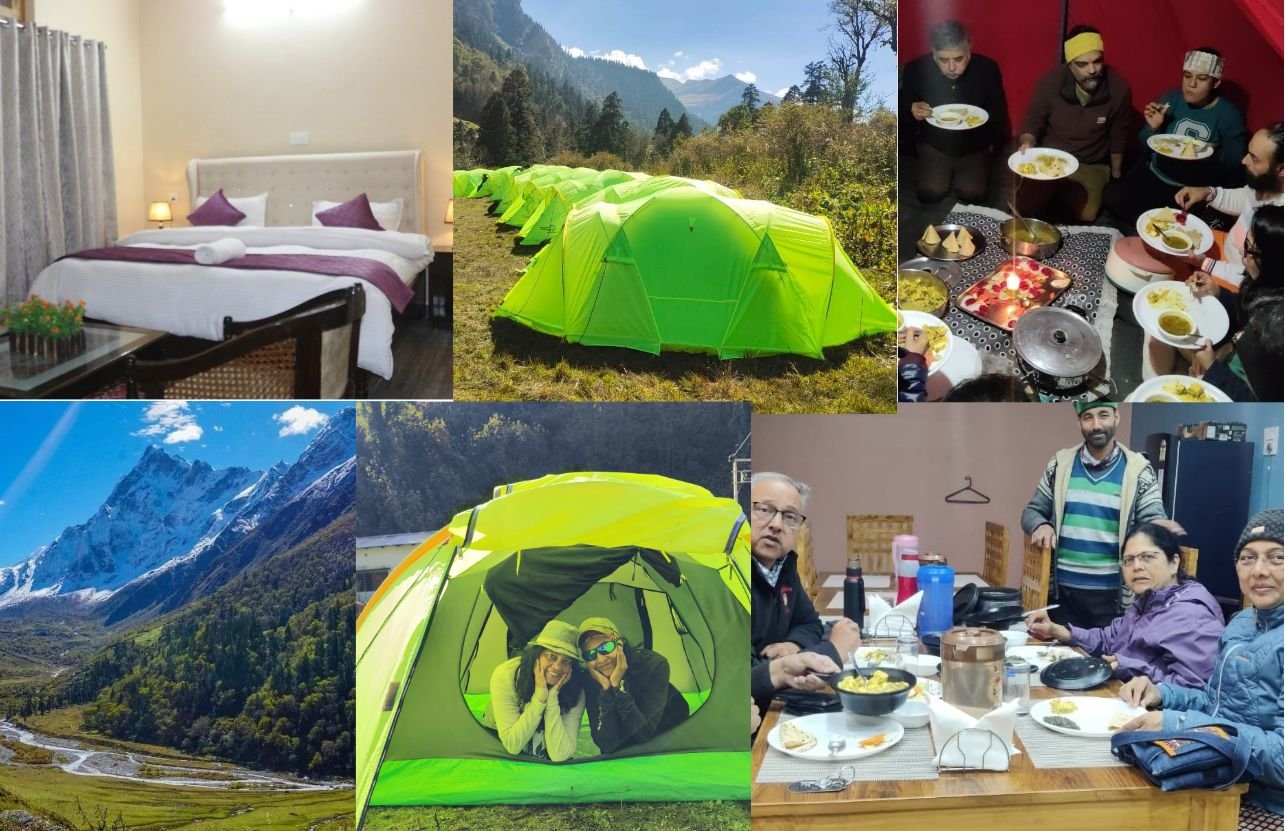
About Har Ki Dun Trek
Har Ki Dun trek, which is the most popular trek in the Garhwal Himalayas. The height of the Har Ki Dun trek is 3600 meters. It starts from Sankri – A Small Paradise and Taluka which are the last road point of this trek. Har ki Dun trek comes along this route in 4 Himalayan Villages , the first Dhatmir, Gangad, Panwani, and Osla village are the last villages of this area which Are called marginal villages, Har ki dun trek is a very popular trek not only in India but also in the world.
My grandfather used to say, at some time, foreign tourists used to come here a lot, and then people in India did not know much about trekking. That’s why Har Ki Doon treks are the oldest and special.
People go for other treks by this route, like, Bali Pass , Borasu Pass, Dhumdhar Kandi Pass , Maldaru Lake, Bainya Top , Black Peak Expedition, Swargarohini Peak Expedition, Ruinsara Ta l, there are more so people come here all year round Live on.
The temperature of the Har Ki Dun Trek always varies with time. The summer temperature of this is Day – (5°C to 15°C), Night – (2° C to 8° C) and the winter temperature is Day (-2°C to -5° C) Night (-5°C to -12°C).
Many people also called this trek is Har Ki Doon or Har Ki Doon Valley because they may not know the exact name of this trek. Many People search for this trek on Google in different names like Harkidun, Har Ki Doon, Har Ki Doon Valley, and etc.
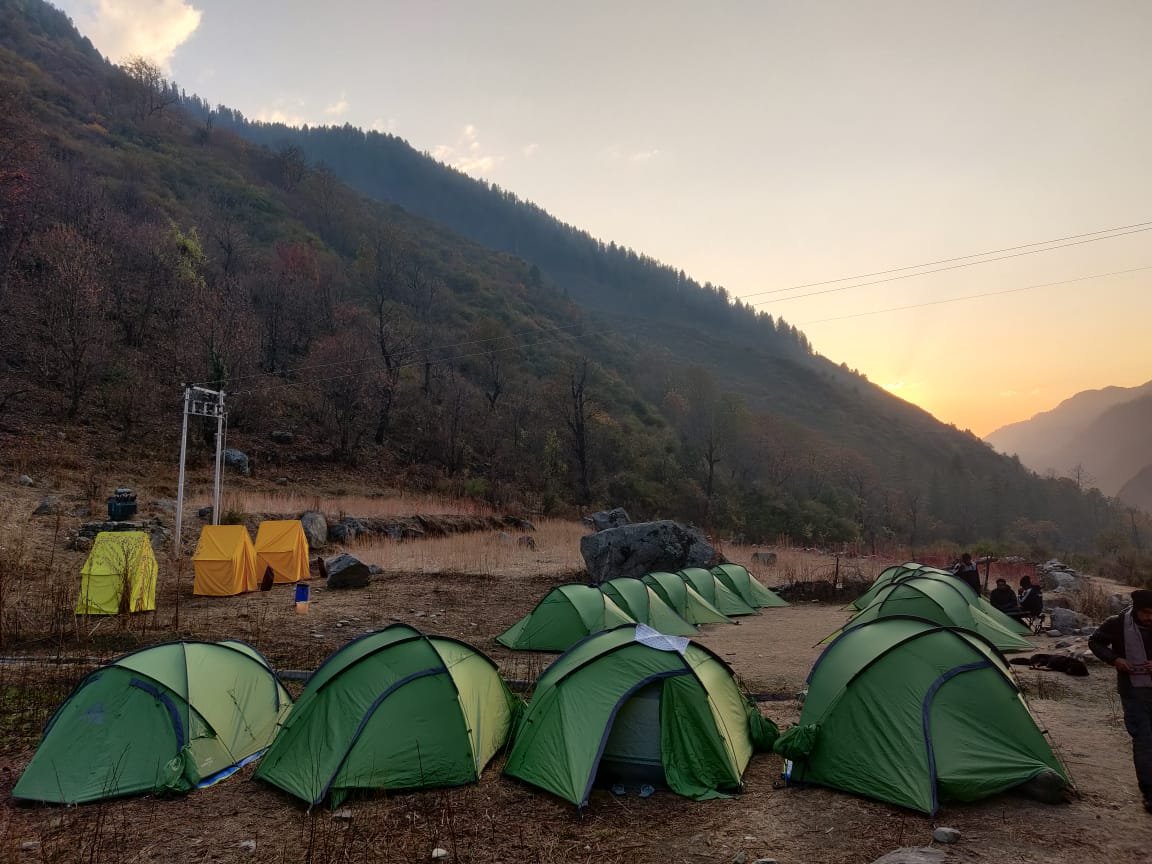
Trekking to this enthralling valley can be a divine experience for a lifetime.
Har Ki Dun Trek or Har Ki Doon Trek comes in the category of epic historic adventure treks. There you can find the essence of mythologies. You can find lavish meadows, and grasslands, You will go through a thick dense forest covered with Rhododendron trees, and many others trees, the trail is beautiful you can see flowers blooming all around and in winter it gets covered by snow, there is the number of species of birds in the woods, you can spot a variety of birds there. mountain ridges, pine forests, glacial ranges, and jaw-dropping views of the Great Himalayas.
Har Ki Doon (The Valley of Gods) or Har Ki Dun is the only valley from where you can have a glimpse of elevated peaks. Like Bandarpoonch , Black Peak, Kalanag, Bali Pass , Ruinsara Lake, and Swargarohini – I, II , and III. And many other peaks!
During the trek, you will come across the ancient villages. It’s about 300 decades old and will surely take you back in time. On the trail, you will encounter the local lifestyle and communities with lavish vegetation grown in the fields.
Today also, the local people there still worship Duryodhana As their deity. Thus, the Har Ki Dun trek is filled with solemn surroundings and legendary culture. It is a must-go for all the travel lovers and nature seekers out there.
Har Ki Dun Trek the Majestic valley in Garhwal Himalayas
Har Ki Dun is Situated in the charming Garhwal region of the Great Himalayas in Uttarakhand. It’s a large valley that follows in the footsteps of Indian mythology and, till today, is known to be “ Har Ki Dun.”
It has been present for more than 500 decades, no doubt famous as the “Valley of the Gods”. Har Ki Dun has the essence of history and mythology along with natural beauty. There is a lush climate surrounded by the soothing greenery desired. So that’s the reason why Har Ki Dun is known as the “Valley of Gods”.
Truth Behind The Myths
Many fables and tales of the era of Mahabharata are admired here. However, it is essential aware of the readers and trekkers about the real facts and myths.
Many trekking companies claim myths about the worship of Duryodhana in the temple of Yudhishthira. Local people believe that they reach heaven via the Har Ki Dun Trek. The truth is none of this exists here as per accurate facts and research. On the contrary, the chronicle of Yudhishthir reaching heaven through the Har ki Dun trail never exists here.
Instead, the saga of reaching heaven was through the path of Badrinath towards Swargarohini peak at Narayan Parvat (mountain).
The locations elapsed are Laxmi van, Chakaratir, Sahastradhara, and Satopanth Lake .
Furthermore, there is no existence of any Duryodhana temple in the Mori district of Uttarkashi. Instead, the temple, which is claimed as Duryodhana Temple, is the Someshwar Mahadev temple, a chapel of Lord Shiva .
Thus, Har Ki Dun is also known as “The Valley of Shiva.”
Why Choose Har Ki Dun Trek?
Before heading towards the itinerary, it is essential to perceive the reason behind choosing the Har Ki Dun trek.
- Scenic Beauty: The trek provides breathtaking views of the Himalayan peaks, lush green meadows, dense forests, and serene landscapes. The natural beauty of the region is sure to captivate people of all ages.
- Moderate Difficulty: Har Ki Dun is considered a moderately challenging trek, making it suitable for families with older children, as well as adults of varying fitness levels. The trekking distance is manageable, and the terrain is not too steep.
- Cultural Experience: The trail takes you through several picturesque villages like Sankri and Osla. This offers a unique opportunity for families and students to interact with the local communities, learn about their culture, and gain insights into the traditional way of life in the Himalayan region.
- Wildlife and Flora: The Govind Wildlife Sanctuary, through which the trek passes, is home to diverse flora and fauna. It’s a great educational opportunity for students and nature enthusiasts to observe and learn about the local ecosystems and wildlife.
- Educational Value: For school groups, the trek can be a valuable educational experience, providing lessons in geography, biology, and ecology. It’s a chance to learn about Himalayan geology, wildlife, and the impact of climate change on the region.
- Physical Activity: The trek encourages physical activity, helping families and adults stay active and healthy. It’s a great way to enjoy the outdoors and bond with family members or friends.
- Adventure and Exploration: For those seeking a taste of adventure, the trek offers a sense of exploration and adventure in a relatively safe and controlled environment.
- Peace and Tranquility: The serene and tranquil surroundings of Har Ki Dun make it an ideal place for relaxation and rejuvenation. It’s an opportunity to disconnect from the hustle and bustle of everyday life.
- Accessibility: The trek starts from Sankri, which is accessible by road from Dehradun, making it relatively easy to reach for families and groups.
- Safety: Har Ki Dun is generally a safe trek, and the local trekking community is well-versed in guiding and assisting trekkers. However, it’s important to follow safety guidelines and be prepared for changing weather conditions.
Best Time to Visit Har Ki Dun Trek?
The best time to visit Har Ki Dun Trek in Uttarakhand, India, depends on your preferences and what you want to experience during your trek. Here are the two primary trekking seasons, each with its own advantages:
- Blooming Meadows: The alpine meadows along the trail come alive with colorful flowers, making it a sight to behold.
- Mild Weather: Daytime temperatures are comfortable, ranging from 15°C to 20°C, making it ideal for trekking.
- Clear Skies: You’ll have clear views of the surrounding peaks and landscapes.
- Fall Colors: The deciduous forests turn vibrant shades of red, orange, and yellow, creating a picturesque environment.
- Cooler Weather: While it can get chilly at night, the daytime temperatures are still pleasant, ranging from 10°C to 15°C.
- Fewer Crowds: This period is less crowded compared to the peak summer season.
Keep in mind that the winter season (December to Feb end ) is not recommended for trekking in Har Ki Dun. The region experiences heavy snowfall, and the temperatures drop significantly, making it challenging and dangerous for trekkers. Additionally, some of the trekking trails might be inaccessible during the winter months.
How Difficult Is Har Ki Dun trek
The Har ki Dun trek is generally considered to be a moderate trek, suitable for beginners and experienced trekkers alike. It offers a beautiful and relatively accessible trail through the western Garhwal Himalayas in Uttarakhand, India.
The trek usually takes around 06 nights and 07 days to complete, covering a distance of approximately 47 kilometers round trip. The trail involves moderate ascents and descents, with some steep sections, rocky paths, and occasional river crossings. However, compared to other high-altitude treks in the region, the Har ki Dun trek has a relatively gradual ascent, making it more manageable for beginners.
The highest point on the trek is the Jaundhar Glacier, which is situated at an altitude of around 4,200 meters (13,780 feet). Altitude sickness is generally not a major concern on this trek unless you have a pre-existing condition or are particularly sensitive to altitude.
While physical fitness and stamina are important for any trek, including Har ki Dun, it is advisable to prepare yourself with regular exercise and some pre-trek training to enhance your endurance and strength. It’s also recommended to acclimatize properly by taking rest days and staying hydrated during the trek.
Har Ki Dun Trek Safe or Best Treks For Beginners ?
Yes, the Har ki Dun trek is generally considered safe and suitable for beginners. While it is always important to be prepared and take necessary precautions when embarking on any trek, Har ki Dun offers a relatively moderate level of difficulty that can be managed by beginners who are physically fit and prepared.
Here are a few reasons why the Har ki Dun trek is often recommended for beginners:
Moderate Difficulty: The trek involves moderate ascents and descents, with gradual climbs and manageable terrains. While there are some steep sections and rocky paths, they can be tackled with proper care and trekking techniques.
Well-Defined Trail: The trail for Har ki Dun is well-marked and well-defined, making navigation easier for beginners. This reduces the chances of getting lost or straying off the intended path.
Trekking Infrastructure: The trek is quite popular among trekkers, and there is a decent infrastructure in place, including trekking guides, local support staff, and well-established campsites along the route. This provides a level of comfort and assistance for beginners who may not have extensive trekking experience.
Limited Altitude Concerns: While the trek reaches a maximum altitude of around 4,200 meters (13,780 feet) at the Jaundhar Glacier, the gradual ascent and the overall altitude profile of the trek make it less prone to altitude sickness. However, it’s always important to be aware of the symptoms of altitude sickness and take necessary precautions.
Despite being considered safe for beginners, it’s still recommended to prepare adequately for the trek. This includes physical fitness training, carrying the necessary gear and supplies, and consulting with experienced trekkers or local guides for any specific advice or precautions related to the current conditions of the trek.
Remember to plan your trek well, be aware of your own limitations, and prioritize safety at all times.
Weather conditions
Weather conditions depend on the time of the year trekkers are traveling. The weather of Har Ki Dun trek always changes from time to time, so you can bring clothes for yourself according to the season in which you want to come. If possible, you can inform us about it
- Spring marks the beginning of the trekking season.
- Daytime temperatures range from 10°C to 20°C, making it a pleasant time for trekking.
- The weather is generally clear, and the meadows start to come alive with blooming flowers.
- Summer is the peak trekking season in Har Ki Dun.
- Daytime temperatures can range from 15°C to 25°C at lower elevations.
- While the days are warm, the nights can be cooler, so it’s important to carry warm clothing.
- This is the best time to witness the lush greenery and vibrant landscapes.
- Post-monsoon is another good time for trekking.
- Daytime temperatures range from 10°C to 15°C, and nights can get quite chilly.
- The forests turn vibrant with fall colors, creating a picturesque setting.
- Har Ki Dun is generally not recommended for trekking during the winter season.
- Heavy snowfall and extremely cold temperatures make it challenging and potentially dangerous for trekkers.
- The area is covered in deep snow, and some trails might be inaccessible.
What you should keep some things in mind is the Har Ki Dun Trek.
Har Ki Dun Trek is as good as it is said, you also need to be prepared., Har Ki Dun Trek is a moderate trek that starts from Sankri and ends after the trek same point Sankri, So what are the special things to keep in mind before coming on this trek? Har ki doon Trek is one such trek, which you can do in all seasons in a year.
Winter Season
- In Har Ki Dun Trek Winter Trek, you will need warm clothes a lot, for which you will need proper good uniform clothes
- Winters are always cold, so only warm clothes can keep you safe on trek feet.
- Always take the information from the company with which you are booking the trek before going on the trek, what do we need to bring
- In the winter season, the temperature always drops day by day , so warm clothes will help you a lot.
Summer Season
- Summer trek to Har Ki Dun Trek is very special, the view and the temperature are all favorable to you
- For summer trek, you have to bring only normal clothes, so that your trek can be good, there is no need for hot clothes, but in hiking it is also necessary to bring all the equipment which is necessary for you.
- It is necessary to have 3 pairs of clothes from trekking, especially the poncho, you will have to bring every season
- In the summer season, the temperature is always normal, so there is no need for hot clothes.
Monsoon Season
- During the monsoon season, it rains occasionally during the Har Ki Dun Trek, especially in the Uttarakhand Himalayas , so if you have dry clothes here, it is very good, even when wet, it dries quickly.
- At this time you have to bring at least 3 pairs of clothes, for monsoon trek you do not have to bring too warm clothes, at this time you, hiking pants and t-Sart, I can trek
- It’s only a little cold in the morning and evening and the day is a good temperature for you
- Before going on any trek, it will be easy for you to take information related to each season.
- Trekkers need to know about these, you can ask us anytime like, trek route, trek map, temperature, weather condition, difficulty level, trek starting point, end point, transport, view of the trek, best time to visit, How to reach, trek distance etc, Trek Location, keep this information before going
About Base camp Sankri in Har Ki Dun Trek
Not only Sankri is the base camp for the Har Ki Dun Trek but also for 25 + Himalayan treks . Thus, it always remains busy by the hustle and bustle of trekkers. This small village is genuinely beautiful because of its pleasant setting and calm environment.
There are quaint wooden houses made of Deodar wood. And also some hotels and restaurants serving delicious local food. Their specialty is “Red Rice.” So, get to know the villagers and have a glimpse of their lifestyle.
It is the best place to explore the Himalayan culture and tradition.
You will also have some excellent views of lofty Swargarohini Peaks and Bandarpoonch. And yes, do not miss their glorifying sunrise and sunset views.
Moreover, the nearest village to Sankri is “Saur” The temple of Someshwar Devta there is highly worshiped by the villagers.
Therefore, the base camp will leave you admiring its exquisite beauty.
The altitude we are going to cover at Har Ki Dun Trek
The Har Ki Dun trek is a popular trek in the Uttarkashi district of Uttarakhand, India. The trek covers an altitude of around 12,000 feet (3,657 meters) and takes around 07 days to complete. from Dehradun to Dehradun Here’s a day-by-day breakdown of the altitude covered during the Har Ki Dun trek:
Day 1: Sankri to Taluka (7,800 feet/ 2,377 meters)
- Altitude gain: 0 feet
- Altitude loss: 1,000 feet (305 meters)
Day 2: Taluka to cheludgad (8,560 feet/ 2,609 meters)
- Altitude gain: 760 feet (232 meters)
- Altitude loss: 130 feet (40 meters)
Day 3: Cheludgad to Har Ki Dun (11,700 feet/ 3,566 meters) and back to Kalkattiyadhar
- Altitude gain: 2,140 feet (652 meters)
- Altitude loss: 2,140 feet (652 meters)
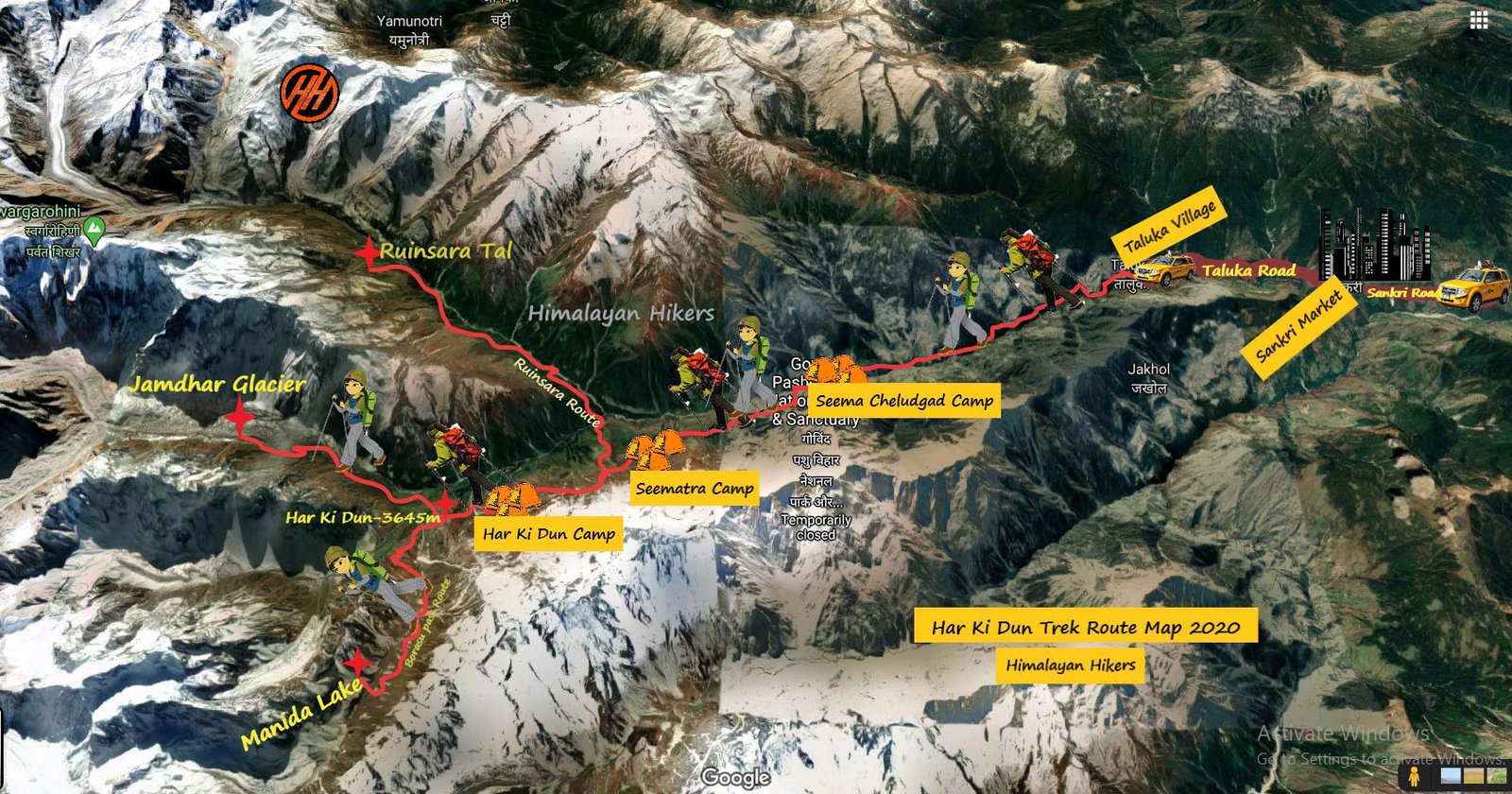
How to Reach Har Ki Dun Trek?
First of all, you people have to come to Dehradun Uttarakhand
From Dehradun itself, you will go with the Himalayan hikers for this Har Ki Dun trek.
In Dehradun, you will get our staff that will arrange transport for you. The contact no Transport coordinator or our office team will give you a week ago to your departure
Train and flight are always available from where you will go to Dehradun.
Himalayan Hikers arranged for your transport from Dehradun railway station or Airport
Transport costs you can pay directly to your taxi driver both sides pick up and drop
Your Travel Plan for Har Ki Dun Trek
Har Ki Dun trek is located in the Uttarkashi district of Uttarakhand and can be reached through Dehradun, which is the nearest major city. Here are the steps to reach Har Ki Dun trek from Dehradun:
- By air: The nearest airport to Dehradun is Jolly Grant Airport, which is about 29 km away. From the airport, you can take a taxi or a bus to Dehradun.
- By train: Dehradun is well connected by rail to major cities in India. The Dehradun Railway Station is located in the heart of the city and can be reached easily by taxi or auto-rickshaw.
- By road: Dehradun is connected to major cities by road and has a good network of buses and taxis. You can take a bus or a taxi from Delhi, which is about 240 km away, to reach Dehradun.
Once you reach Dehradun, you can take a taxi or a bus to reach Sankri, which is the starting point of the Har Ki Dun trek. The distance between Dehradun and Sankri is about 190 km, and it takes around 8-9 hours to reach by road. From Sankri,
Here are the various options to reach Dehradun from some major cities in India:
Mumbai to Dehradun:
- By Air: You can take a direct flight from Mumbai to Dehradun. The flight duration is approximately 2 hours and there are multiple airlines operating on this route.
- By Train: You can take a direct train from Mumbai to Dehradun. The journey duration is approximately 30-36 hours, depending on the train you choose.
- By Road: There are no direct buses from Mumbai to Dehradun. You can take a bus to Delhi or Chandigarh and then take another bus or taxi to reach Dehradun.
Delhi to Dehradun:
- By Air: You can take a direct flight from Delhi to Dehradun. The flight duration is approximately 1 hour and there are multiple airlines operating on this route.
- By Train: You can take a direct train from Delhi to Dehradun. The journey duration is approximately 5-7 hours, depending on the train you choose.
- By Road: You can take a bus or a taxi from Delhi to Dehradun. The distance is approximately 250 km and the journey duration is around 6-7 hours.
Pune to Dehradun:
- By Air: There are no direct flights from Pune to Dehradun. You can take a connecting flight via Delhi or Mumbai.
- By Train: There are no direct trains from Pune to Dehradun. You can take a train to Delhi or Chandigarh and then take another train to reach Dehradun.
- By Road: There are no direct buses from Pune to Dehradun. You can take a bus to Delhi or Chandigarh and then take another bus or taxi to reach Dehradun.
Chennai to Dehradun:
- By Air: There are no direct flights from Chennai to Dehradun. You can take a connecting flight via Delhi or Mumbai.
- By Train: There are no direct trains from Chennai to Dehradun. You can take a train to Delhi or Chandigarh and then take another train to reach Dehradun.
- By Road: There are no direct buses from Chennai to Dehradun. You can take a bus to Delhi or Chandigarh and then take another bus or taxi to reach Dehradun.
Bangalore to Dehradun:
- By Air: You can take a direct flight from Bangalore to Dehradun. The flight duration is approximately 2 hours and there are multiple airlines operating on this route.
- By Train: There are no direct trains from Bangalore to Dehradun. You can take a train to Delhi or Chandigarh and then take another train to reach Dehradun.
- By Road: There are no direct buses from Bangalore to Dehradun. You can take a bus to Delhi or Chandigarh and then take another bus or taxi to reach Dehradun.
Hyderabad to Dehradun:
- By Air: You can take a direct flight from Hyderabad to Dehradun. The flight duration is approximately 2-3 hours and there are multiple airlines operating on this route.
- By Train: There are no direct trains from Hyderabad to Dehradun. You can take a train to Delhi or Chandigarh and then take another train to reach Dehradun.
- By Road: There are no direct buses from Hyderabad to Dehradun. You can take a bus to Delhi or Chandigarh and then take another bus or taxi to
Reach Sankri by yourself
Take a bus from the Railway station of Dehradun, the first one leaves at 5:30 am, the other one at 6:30 am and the last bus leaves at 7:00 am. So reach there on time.
You can also hire a taxi from Dehradun Railway Station, the fare is Rs 6000 from Dehradun to Sankri (190 km)
A short story of your journey Dehradun to Sankri?
The journey from Dehradun to the Sankri is beautiful and it is you in Dehradun. From Rajpur Road you will go and they will come to Mussoorie which is called the queen of the mountains. After Mussoorie, you will come to Kamptitall. Here you will stop 45 minutes for breakfast and after breakfast, you will come along the Yamuna River – Purola, here you will stay for lunch for 1 hour. After that you will be taken straight to the place where our team Himalayan Hikers will be ready to welcome you.
Before starting the journey to Har Ki Dun trek, make sure that you need payments, and then take out the cash on the way, no bank and ATM. No, the Purola market is the last place where you can withdraw cash from ATM, (If you want to withdraw money then do it in Dehradun.)
Mobile Connectivity
Sankri is a small village located in the Uttarkashi district of Uttarakhand, India. Being a remote location, the mobile network connectivity in Sankri may be limited. However, some of the major mobile network providers in India like , Jio, Vodafone and BSNL have network coverage in the area. It’s important to note that the network coverage may vary depending on the location and the network provider. In some areas, you may experience poor or no network connectivity, while in others, you may have good network coverage. It’s a good idea to check with your network provider regarding the network coverage in Sankri and the surrounding areas before your trip.
The Grand Shiva Home Stay in Sankri, Uttarkashi, Uttarakhand
The Grand Shiva Home Stay is our newly constructed luxurious hotel in Sankri (the base camp of Kedarkantha Trek). It offers you local and delicious food prepared by our local family members, 24 Horse Hot Water, Cold Water, Free Wi-Fi, Room Services, and much more, with the help of which we provide our guests with a special experience. Our Homestay has exquisite furnishings with luxurious furniture and high-quality toiletries.
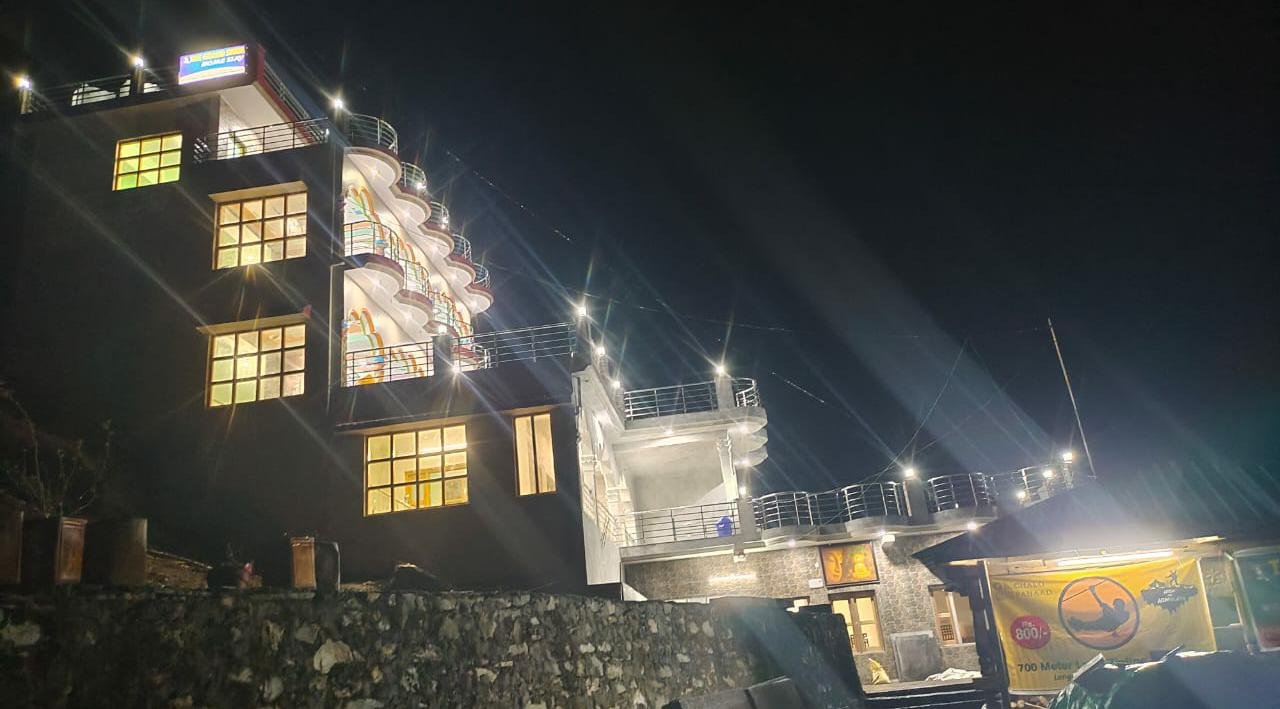
Luxury Rooms in The Grand Shiva Home Stay Sankri
The Grand Shiva Home Stay rooms are spacious, elegant, and comfortable all at once, equipped with everything you need for a wonderfully rejuvenating stay. Every detail of the design and features have been carefully considered. Suites feature lavish furnishings with sleeping and sitting areas and a host of other amenities, including complimentary Wi-Fi Internet,
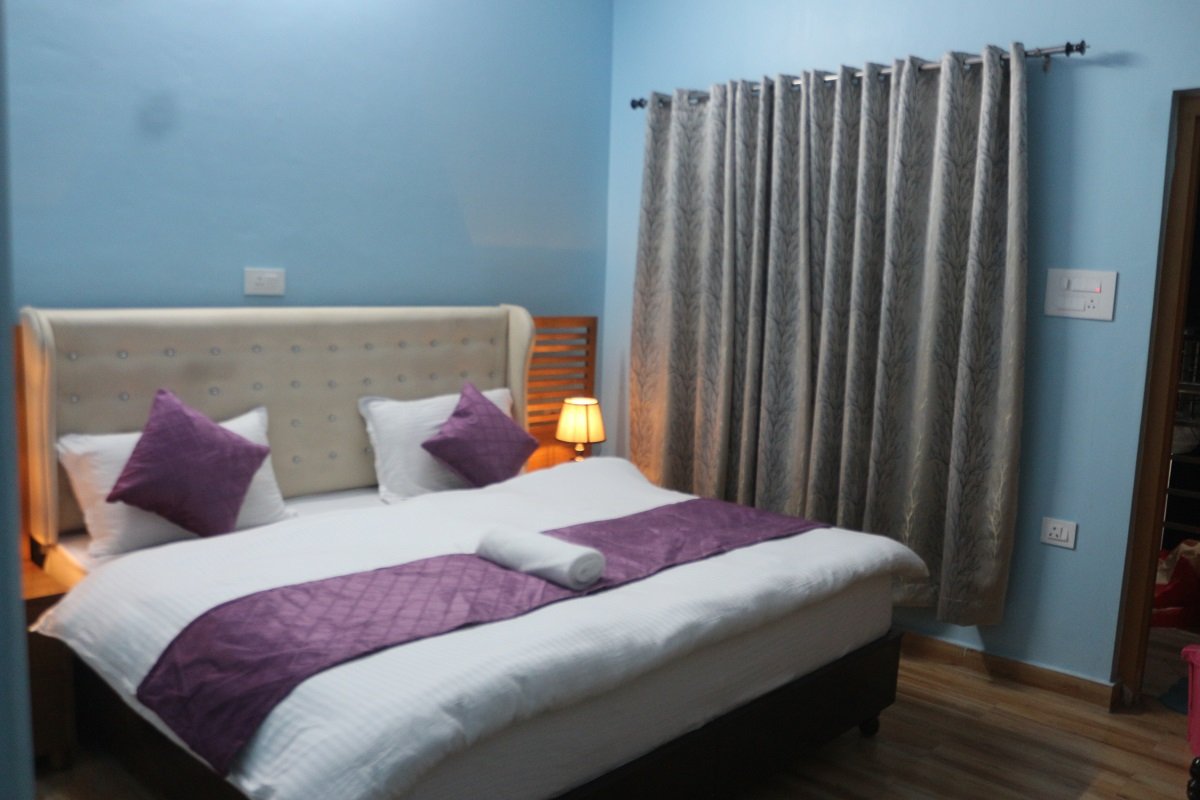
What do we do for safety in the Har Ki Dun trek?
First of all, the safety of trekkers is much more for us, if you see in the trek, then there are all the risks, which I do not think about.
Himalayan Hikers worry more about you that no one should ever have any problem in the trek.
What should we and you keep more safety in the trek
- Whenever you are going for any trek, it is very important that you go completely fit and ready.
- The trek is not difficult, if you make your feet and your mind calm and strong, you will find the trek very easy.
- While trekking, keep in mind that you are walking on the right route or not always with your guide.
- Most people look somewhere and where they are walking, this can cause twitching in your legs, which can ruin your entire trek.
- It is important to ask your doctor if you have any medical problems
- I should always keep my medical kit with me, it is very important.
- Himalayan Hikers always keep a medical kit with you, such as oxygen cylinders, and medicine to be given in an emergency on the trek
- If any trekkers have any more problems, then they are brought back to the base camp by laying them in the stretcher.
- Our camp in Har Ki Dun trek is around the tree line where you can not have any problem of oxygen
- In case of any medical problem, the help of your guide or well-informed trekkers should be taken
- If there is major health problems in Har Ki Dun trek, then Nearest Hospital is in Mori which is about 46 Kms away from Har Ki Dun trek.
Important to make certain preparations. Here are some key aspects to consider:
Physical Fitness: Enhance your physical fitness and stamina through regular exercise, such as cardiovascular workouts, hiking, and strength training. Focus on building endurance and leg strength to cope with the trek’s demands.
Trekking Gear: Invest in appropriate trekking gear, including sturdy and comfortable trekking shoes, layered clothing suitable for changing weather conditions, a backpack, a sleeping bag, a trekking pole for stability, and a raincoat or poncho.
Packing Essentials: Pack essential items such as a first aid kit, sunscreen, sunglasses, a hat, insect repellent, toiletries, quick-drying towels, a headlamp or flashlight, water bottles or a hydration bladder, and energy-rich snacks.
Acclimatization: Allocate a day or two for acclimatization in Sankri, the base village for the trek. This will allow your body to adjust to the altitude and reduce the risk of altitude sickness.
Trekking Permits and Research: Obtain the necessary permits for the trek, which can be acquired in Sankri. Additionally, conduct thorough research on the route, weather conditions, and any recent updates or advisories related to the trek.
Trekking Guide or Local Support: Consider hiring an experienced trekking guide or joining a guided tour to enhance safety and local knowledge. They can provide assistance with navigation, ensure proper campsites, and offer insights into the region.
Hydration and Water Purification: Stay hydrated throughout the trek by carrying an adequate supply of water. Carry water purification tablets or a water filter to treat water from streams or sources along the trail.
Weather Preparedness: Be prepared for changing weather conditions, as it can vary significantly during the trek. Carry appropriate clothing layers to adjust to temperature fluctuations, and keep an eye on weather forecasts before starting the trek.
Emergency Contacts and Communication: Carry a list of emergency contacts, including local authorities, trek organizers, and medical services. Ensure you have a reliable means of communication, such as a mobile phone or satellite phone, in case of emergencies.
Leave No Trace: Respect the environment and practice the principles of Leave No Trace. Dispose of waste responsibly and follow guidelines to minimize your impact on the natural surroundings.
Remember, the Har ki Dun trek can have specific requirements and conditions that may change over time. Stay updated with the latest information and seek advice from experienced trekkers or local guides for any additional preparations specific to your trekking period.
For Himalayan Hikers or trekkers, it’s crucial to have some emergency medical support available, given the remote and rugged terrain they often traverse. Here are some essential medical supplies to consider carrying:
- First Aid Kit : Include bandages, antiseptic wipes, adhesive tape, gauze pads, scissors, tweezers, and a CPR mask.
- Oxygen cylinder- Oxygen can be beneficial in alleviating symptoms of altitude sickness, such as headache, dizziness, nausea, and shortness of breath. Administering oxygen can provide relief and help prevent the condition from worsening.
- Personal Medications : Any prescribed medications should be carried in sufficient quantities.
- Pain Relief : Ibuprofen or acetaminophen for pain relief in case of minor injuries or headaches.
- Antihistamines : For allergic reactions and insect bites.
- Anti-diarrheal Medication : Such as loperamide, in case of gastrointestinal issues.
- Water Purification Tablets : In areas where clean water may not be readily available.
- Blister Treatment : Moleskin or blister pads for foot care.
- Tweezers : For removing splinters or ticks.
- Emergency Blanket : To keep warm in case of exposure.
- Whistle and Signal Mirror : For attracting attention in emergencies.
- Flashlight or Headlamp : Essential for navigating in the dark or signaling for help.
- Emergency Communication Device : Such as a satellite phone, PLB (Personal Locator Beacon), or a two-way radio for calling for help if needed.
- Basic Wilderness First Aid Guide : To assist in treating common injuries or illnesses.
- Sun Protection : Sunscreen, sunglasses, and a wide-brimmed hat to protect against sunburn.
- Emergency Shelter : Lightweight emergency shelter or tarp for protection from the elements.
It’s also essential for hikers to have basic knowledge of first aid and wilderness survival skills. Additionally, informing someone of your hiking plans and expected return time can be crucial in case of emergencies. Always be prepared and stay safe while exploring the beautiful but challenging Himalayan terrain.
FAQ Har Ki Dun Trek 2024
Q- why should you do har ki dun trek.
Har Ki Dun is located in the Garhwal region of Uttarakhand, India, which is rich in culture and tradition. Along the trekking route, trekkers get a chance to interact with the locals, who belong to villages like Osla, Taluka, and Sankri, and experience their unique way of life, customs, and hospitality. Har Ki Dun valley holds historical significance as it is believed to be the path followed by the Pandavas during their ascent to heaven in the Hindu epic Mahabharata. This adds a spiritual and mythological dimension to the trek, attracting pilgrims and history enthusiasts alike.
Q -What is the best time to visit Har ki dun Trek?
The best time to visit Har Ki Dun depends on your preferences and the kind of experience you’re seeking. However, the most favorable time for trekking in the region is during the following periods:
Summer (March to June) :- Post-Monsoon/Early Autumn (September to November) :
Q- How many days is it best to do Har Ki Doon trek?
The ideal duration 6 nights 07 Days minimum for the Har Ki Dun trek depends on various factors, including your fitness level, trekking experience, and personal preferences. Typically, the trek is completed in 6 to 8 days. Here’s a common itinerary:
Q-Is it suitable for first time trekkers?
Yes, the Har Ki Dun trek is suitable for first-time trekkers, provided they are reasonably fit and prepared for moderate physical activity. Here are a few reasons why it’s a good option for beginners:
Moderate Trek, Gradual Altitude Gain:, Scenic Beauty: Guided Tours Available: Cultural Experience:
However, even though the Har Ki Dun trek is suitable for beginners, it’s essential to prepare adequately by building stamina through regular exercise, including cardiovascular and strength training. Additionally, packing appropriate gear, clothing, and essentials, as well as being mindful of altitude-related challenges, will contribute to a safer and more enjoyable experience for first-time trekkers.
Q- Points to keep in mind on Har Ki Doon Trek?
When embarking on the Har Ki Dun trek, it’s essential to keep several points in mind to ensure a safe and enjoyable experience. Here are some key considerations:
Physical Fitness: -Altitude Acclimatization:- Proper Gear: -Hydration and Nutrition: -Trekking Permits: -Leave No Trace: -Safety Precautions:- Weather Awareness:- Emergency Preparedness:-
Q- Documents to be carried for Har Ki Dun trek?
Identification Proof: Carry a government-issued photo identification document such as a passport, Aadhar card, driver’s license, or voter ID card. This is required for permits, registrations,
Trekking Permits/Permissions :- Travel Itinerary :- Medical Information :- Travel Insurance :- Fitness Certificate /Medical certificate;- Emergency Contacts :- Photocopies/Scans:- Cash and Payment Methods:- Trekking Agency/Guide Details :
Q- What kind of weather will there be in Harkidoon at what time?
Spring (March to May):
- March: The weather gradually transitions from winter to spring. Days can still be cool, with temperatures ranging from 5°C to 15°C (41°F to 59°F). Nights are cold, with temperatures dropping to around 0°C (32°F) or below.
- April to May : Spring fully sets in, with milder temperatures during the day ranging from 10°C to 20°C (50°F to 68°F). Nights are still chilly, with temperatures ranging from 5°C to 10°C (41°F to 50°F).
Post-Monsoon/Early Autumn (September to November) :
- September October & November: After the monsoon season, the weather begins to clear up. Days are pleasant, with temperatures ranging from 10°C to 25°C (59°F to 77°F). Nights are cool, with temperatures around 10°C to 15°C (50°F to 59°F).
- October: Autumn sets in, bringing crisp, clear days with mild temperatures ranging from 10°C to 20°C (50°F to 68°F). Nights become colder, with temperatures ranging from 5°C to 10°C (41°F to 50°F).
Himalayan Hikers – Provided food During the Har Ki Dun Trek
– We serve five -05 times meals a day including- Breakfast, Lunch, Eevening Snakes, Soup, Dinner, A variety of delectable and healthy food is provided which includes; Indian, Chinese and other Western meals. They are nutritious and keep you fit and healthy on the trek.(Veg or non-veg food) With our local food and Day Pack, for Summit Day like fresh fruits
Food Menu – Roti + Rice + Salad + Papad +Matter paneer +Daal +mix veg+ daily more vegetable +sweet+ Bread +Omelets +Nutella + jam + butter +Muesli, Milk+Banana+ Allo parantha +Tea & coffee Cornflakes, Milk +Egg bhurji +Bread, Peanut Butter +Pancake +Plain parantha +Fruits+ Porridge Oats+ +Bread & cheese +Poha +Boiled egg + Gulab Jamun+ Custard+ Jalebi+ Chilla +Honey+ Puri + Chole more
Note: – This is only list Himalayan Hikers Team Cook provide you more healthy food and more items of per day menu
The type of food provided during a trek can vary depending on factors like the location, duration, and the trekking company or organization you’re with. However, there are some common types of food that are often included in trekking provisions:
- Carbohydrates : Foods high in carbohydrates provide energy for the trek. This includes items like rice, pasta, bread, and potatoes. More
- Proteins : Protein-rich foods help with muscle repair and recovery. Common protein sources include lentils, beans, tofu, meat (if available), eggs, and dairy products.
- Fruits and vegetables : These provide essential vitamins, minerals, and fiber. While fresh produce may not always be available, dried fruits and vegetables or canned options might be included.
- Snacks : Trekking often involves long hours of physical exertion, so snacks are important for quick energy boosts. Snacks like nuts, energy bars, trail mix, and chocolate are common choices.
- Local cuisine: Depending on the region you’re trekking in, you might also get the chance to sample local dishes. This can be a delightful way to experience the culture and flavors of the area.
Day 1: Pickup from Dehradun Railway Station and Drive to Sankri (base camp) by taxi-Tempo Travellers
Total distance 190 km – 8/9 Hours journey
Mode of journey – By taxi- Tempo Travellers 13+D
Altitude – Sankri base camp – 1920 Meters
Night stay – The Grand Shiva Hotel – on twin share basis
Himalayan Hikers organizes transport for trekkers from Dehradun Railway Station in the morning which will leave for Sankri around 6:00 am to 7:00 am.
The route from Dehradun Railway Station to Sankri is a picturesque journey through the Himalayan foothills, passing through charming towns and scenic landscapes. Here’s a suggested route along with notable viewpoints and markets:
- Dehradun Railway Station: Start your journey from Dehradun Railway Station. You can hire a taxi or take a bus to begin your trip towards Sankri.
- Dehradun City: As you leave the railway station, you’ll pass through Dehradun city. If you have time, you can explore some of the local markets here, such as Paltan Bazaar or Rajpur Road, where you can find local handicrafts, clothing, and delicious street food.
- Mussoorie Road: The route to Sankri often begins by heading towards Mussoorie Road. Along this route, you’ll start witnessing the gradual ascent into the hills. The drive itself offers beautiful views of the surrounding valleys and forests.
- Kempty Falls: If you have time for a detour, Kempty Falls is a popular tourist spot along Mussoorie Road. It’s a scenic waterfall surrounded by lush greenery, offering a refreshing stop on your journey.
- Yamuna Bridge: As you continue your drive, you’ll cross the Yamuna Bridge. This bridge offers stunning views of the Yamuna River flowing through the valley below.
- Naugaon: Naugaon is a small town you’ll pass through on your way to Sankri. While there might not be significant markets here, you can find local shops and eateries to grab a quick snack or take a break.
- Purola: Purola is another town along the route where you can find local markets. It’s a good place to stock up on any essentials you may need for your journey ahead.
- Jarmola: As you near Sankri, you’ll pass through Jarmola, a small village known for its serene surroundings and traditional Himalayan architecture. Take a moment to enjoy the quaint charm of this village before continuing your journey.
- Sankri: Finally, you’ll arrive at Sankri, a scenic village nestled in the Uttarkashi district of Uttarakhand. The drive from Dehradun Railway Station to Sankri takes approximately 8-10 hours, depending on road conditions and traffic.
Throughout your journey, you’ll encounter numerous viewpoints offering breathtaking vistas of the Himalayas and the surrounding valleys. Be sure to stop and take in the beauty of the landscape as you make your way to Sankri.
Day 2 : Trek from Sankri to Taluka by taxi – 11 km same day trek to Cheludgad camp
Total distance 27 km – 5/6 Hours journey
Mode of journey – On foot (12 km) and By taxi (15 km)
Altitude – Cheludgad camp – 2600 Meters
Night Stay – Camp site – on twin share basis
travel from Sankri to Taluka by taxi and then trek to Cheludgad camp on the same day, here’s a suggested itinerary:
- Start early in the morning from Sankri to make the most of your day.
- Hire a taxi from Sankri to Taluka, which is approximately an 11-kilometer journey. The road from Sankri to Taluka is a scenic route passing through forests and along the Supin River.
- The journey by taxi should take around 45 minutes to an hour, depending on road conditions.
- Ensure you have arranged the taxi in advance or find one upon arrival in Sankri.
- Upon reaching Taluka, you’ll begin your trek towards Cheludgad camp. Taluka serves as the starting point for several treks in the region.
- The trek from Taluka to Cheludgad camp is approximately 11 kilometers and typically takes around 4-6 hours, depending on your pace and the trail conditions.
- The trail offers beautiful views of the surrounding forests, rivers, and mountains. You’ll pass through quaint villages, lush greenery, and occasionally cross wooden bridges over streams.
- Cheludgad camp is a picturesque camping site along the trekking route, situated amidst serene surroundings. It’s an ideal spot to set up camp for the night.
- Upon reaching Cheludgad camp, set up your tents and settle in for the night.
- Enjoy the tranquility of the Himalayan wilderness and the clear night sky filled with stars.
- You can either cook your meals at the campsite if you’re carrying camping gear or arrange for meals with local guides or camping services in advance.
Please note:
- It’s essential to start early to ensure you have enough daylight for both the taxi ride and the trek to Cheludgad camp.
- Check the weather conditions before starting your trek and prepare accordingly with appropriate clothing, footwear, and gear.
- Carry sufficient water, snacks, and any other essentials for the trek.
- Ensure you have necessary permits if required for trekking in the region.
- Respect the local environment and culture, and follow Leave No Trace principles during
Day 3 : Trek from Cheludgad camp to Har Ki Dun Camp
Trek Distance 13 Km – 6/7 Hours journey/p>
Mode of journey – On foot – 13 km
Altitude – Har Ki Dun base camp – 3500 Meters
The trek from Cheludgad camp to Har Ki Dun camp is a beautiful and moderately challenging trek that offers stunning views of the Himalayan landscapes. Here’s what you can expect in terms of trek route, difficulty level, time required, and views:
- The trek route from Cheludgad camp to Har Ki Dun camp typically follows a well-defined trail.
- You’ll start from Cheludgad camp and ascend gradually along the trail, passing through forests, meadows, and crossing streams.
- The route takes you deeper into the Govind National Park, offering glimpses of diverse flora and fauna along the way.
- After a few hours of trekking, you’ll reach the Har Ki Dun valley, where the Har Ki Dun campsite is located.
- The trek from Cheludgad camp to Har Ki Dun camp is considered to be of moderate difficulty.
- While the trail is well-marked and not overly steep, there are some sections that involve gradual ascents and descents.
- Trekking poles can be helpful, especially while crossing streams or navigating uneven terrain.
- The trek from Cheludgad camp to Har Ki Dun camp typically takes around 5-7 hours, depending on your pace and trail conditions.
- Factors such as weather conditions and your level of fitness can also affect the trekking time.
- It’s advisable to start early in the morning to make the most of daylight hours and to reach the campsite before nightfall.
- Throughout the trek, you’ll be treated to breathtaking views of the surrounding Himalayan peaks, including Swargarohini, Bandarpoonch, and Black Peak.
- The trail offers panoramic vistas of lush green valleys, snow-capped mountains, and cascading waterfalls.
- As you approach Har Ki Dun camp, the scenery becomes even more spectacular, with the iconic valley opening up before you, surrounded by towering mountains.
Overall, the trek from Cheludgad camp to Har Ki Dun camp is a memorable experience, combining natural beauty with a sense of adventure. Be sure to carry essential trekking gear, stay hydrated, and take breaks as needed to enjoy the stunning views along the way.
Day 4 : Exploration Day (Manida Lake) (Jaundhar Glacier View ) Har Ki Dun valley back to camp
Trek Distance – Manida Lake 08 Km – 5/6 Hours journey
Jaundhar Glacier – 14 km – 7/8 Hours journey
Mode of journey – on foot
Altitude – Har Ki Dun – 3645 Meters
Exploration Day in the Har Ki Dun valley, with visits to Manida Lake and the Jaundhar Glacier View, offers an opportunity to witness some of the most breathtaking sights in the Himalayas. Here’s a detailed guide:
- Start from the Har Ki Dun campsite early in the morning.
- Trek towards Manida Lake, which is nestled amidst the scenic beauty of the valley.
- After spending some time at Manida Lake, continue towards the Jaundhar Glacier Viewpoint.
- Return to the Har Ki Dun campsite by late afternoon or early evening.
- The trek from Har Ki Dun campsite to Manida Lake involves a moderate level of difficulty.
- The trail meanders through alpine meadows, dense forests, and rocky terrain.
- You’ll encounter some ascents and descents along the way, so sturdy trekking shoes and trekking poles are recommended.
- The trek to Jaundhar Glacier Viewpoint may involve a slightly more challenging ascent, depending on the specific route chosen.
- The trek to both Manida Lake and the Jaundhar Glacier Viewpoint is of moderate difficulty.
- While the trails are well-defined, some sections may be steep or rocky, requiring moderate physical fitness and trekking experience.
- Throughout the trek, you’ll be surrounded by the majestic peaks of the Himalayas.
- The Har Ki Dun valley is known for its panoramic views of peaks such as Swargarohini, Bandarpoonch, and Black Peak.
- From the Jaundhar Glacier Viewpoint, you’ll get a closer look at the glaciers and snow-capped peaks that define the region.
- Manida Lake offers serene surroundings with crystal-clear waters reflecting the surrounding mountains.
- The Jaundhar Glacier Viewpoint provides a stunning panorama of glaciers cascading down from high mountain peaks.
- Along the trekking route, you’ll be treated to spectacular vistas of alpine meadows, lush forests, and cascading waterfalls.
- Keep an eye out for wildlife such as Himalayan birds, ibex, and musk deer, which are commonly spotted in the region.
Overall, the Exploration Day trek to Manida Lake and the Jaundhar Glacier Viewpoint offers a perfect blend of natural beauty, adventure, and Himalayan grandeur. Be sure to carry adequate water, snacks, and camera gear to capture the unforgettable moments along the way.
Jaundhar Glacier
If you want to go to Jaundhar glacier, 7 km away from the Har Ki Dun valley. then you have to cross some ridges, the trail is not an easy one and remains covered in snow but ahead it eases.
After reaching the final ridge you will see the Jaundhar Glacier and other towering peaks, then we’ll return back to the campsite and enjoy delicious evening snakes, Soup and Dinner enjoying bonfire and overnight stay there.
Day 5 : Trek from Har Ki Dun to Cheludgad camp Via Osla Village
Trek Distance 13 km – 6/7 Hours journey
Night Stay – on twin share basis
Trekking from Har Ki Dun to Cheludgad camp via Osla Village offers a diverse and scenic route through the Himalayan landscapes. Here’s what you can expect in terms of route, views, location, and trek level:
- Start your trek from the Har Ki Dun campsite in the morning.
- Descend back towards the village of Osla, which lies along the banks of the Supin River.
- From Osla, continue along the trail that leads towards Cheludgad camp.
- The route takes you through dense forests, charming Himalayan villages, and picturesque meadows.
- As you descend from Har Ki Dun towards Osla, you’ll be treated to panoramic views of the Har Ki Dun valley and the surrounding peaks.
- The trail passes through lush green forests and offers glimpses of the Supin River flowing alongside.
- Upon reaching Osla Village, you’ll have the opportunity to explore its traditional architecture and interact with the locals.
- Continuing towards Cheludgad camp, the trail offers stunning vistas of the Himalayan foothills and valleys below.
- Osla Village is situated at an altitude of around 2,570 meters (8,430 feet) above sea level.
- Cheludgad camp is located at a higher altitude, providing panoramic views of the surrounding mountains and valleys.
- The trek from Har Ki Dun to Cheludgad camp via Osla Village is of moderate difficulty.
- While the trail involves some steep descents and ascents, it is generally well-defined and suitable for trekkers with moderate fitness levels.
- Trekking poles may be helpful, especially during the descent from Har Ki Dun to Osla.
- Osla Village is known for its ancient temple dedicated to Duryodhana, a character from the Hindu epic Mahabharata.
- The trail offers opportunities to observe the local way of life in the mountain villages and interact with the friendly villagers.
- Cheludgad camp provides a tranquil setting amidst the Himalayan wilderness, making it an ideal spot to unwind and enjoy the natural beauty of the surroundings.
Day 6 : Trek from Cheludgad to Taluka 12 km same day Drive to Sankri
Trek Distance 27 km – 5 / 6 Hours journey
Mode of journey – On foot – 12 km – By taxi 15 km
Trekking from Cheludgad to Taluka and then driving to Sankri on the same day is feasible but requires an early start and efficient time management. Here’s a suggested itinerary:
- Start your trek early in the morning from Cheludgad campsite.
- The trail from Cheludgad to Taluka is approximately 12 kilometers and typically takes around 4-6 hours, depending on your pace and trail conditions.
- The trek involves descending from the higher altitude of Cheludgad towards Taluka, passing through forests, meadows, and streams.
- Ensure you have enough water and snacks for the trek, and take breaks as needed to rest and enjoy the scenery.
- Reach Taluka by late morning or early afternoon.
- Upon reaching Taluka, arrange for a taxi or private vehicle to drive you back to Sankri.
- The drive from Taluka to Sankri takes approximately 45 minutes to an hour, covering a distance of around 11 kilometers.
- Enjoy the scenic drive back to Sankri, passing through picturesque villages and landscapes.
- Upon reaching Sankri, you can relax and unwind after the trek.
It’s essential to start the trek early to ensure you have enough time to reach Taluka and catch transportation back to Sankri
Day 7: Return – Drive from Hotel Sankri to to Dehradun by tempo travellers or Taxi
Distance – 19 0 Km – 8/9 Hours journey
Mode of journey – By taxi- Tempo Travellers
The drive from Sankri to Dehradun offers stunning views of the Himalayan landscape and takes you through picturesque valleys and charming mountain villages. Here’s a guide to the route and what you can expect during the journey:
- The route from Sankri to Dehradun typically follows the same path as the one taken when you initially traveled from Dehradun to Sankri.
- You’ll start by leaving Sankri and heading towards Taluka, continuing through the scenic valleys and forests.
- From Taluka, the route descends towards the Yamuna Bridge, where you’ll cross the Yamuna River.
- After crossing the bridge, you’ll continue along the road towards Naugaon and then further towards Purola.
- From Purola, the route takes you through Jarmola and Mori, eventually leading to Nainbagh and then onwards to Dehradun.
- You can hire a tempo traveler or taxi from Sankri for the journey back to Dehradun.
- Tempo travelers are larger vehicles suitable for groups, while taxis are better for smaller groups or individuals.
- Ensure you arrange for transportation in advance, especially during peak tourist seasons, to avoid any last-minute hassles.
- The drive offers breathtaking views of the Himalayan peaks and valleys throughout the journey.
- You’ll pass through lush green forests, meandering rivers, and terraced fields as you descend from the mountains towards the plains.
- Keep your camera ready to capture the scenic vistas and charming mountain villages along the way.
- The drive from Sankri to Dehradun usually takes around 8-10 hours, depending on road conditions, traffic, and the chosen mode of transportation.
- It’s advisable to start early in the morning to make the most of daylight hours and to reach Dehradun before nightfall.
- There are several small towns and villages along the route where you can stop for refreshments and restroom breaks.
- Purola and Mori are two towns where you can find shops, restaurants, and other amenities.
- Plan your stops accordingly to ensure a comfortable journey.
Mandatory Documents
Please carry the documents given below.
Original and photocopy of government photo identity card- (Aadhar Card, Driving License, Voters ID, etc, Passport and Visa important to foreigners Medical Certificate (First part should be filled by the Doctor and Second part by the Trekker) Declaration Certificates
Note: – Many trekkers commit the same mistake of carrying unnecessary items on a trek which only makes the backpack heavy. It is important to know the right items to carry. It differs from season to season if you are trekking in summers then carry less layers of warm clothing and if you are trekking in winters carry enough layers to protect yourself against chilly cold.
Necessary Items for trekkers

Backpack (50 to 60 liters) A strongly built backpack with good support is compulsory for a trek. (Rain cover is important)
Sturdy Trekking Shoes The shoes should be strong enough with good support. The people ask if sports shoes would be comfortable but it is good to bring the right trekking shoes.
The Clothes You Should Bring On a Trek Avoid keeping extra clothes because it only makes you backpack heavy.
Trek Pants – The jeans are never suitable for a trek so you need at least 2-3 trek pants for treks carry more for longer treks.
Jacket – Jackets are very important to carry on a trek it protects you against the chilly weather. So carry 2 jackets on a week long trek.
Layers of warm Clothing Carry warm woolen layers or fleece. Carry more layers during winter season (at least 2 to 3) and less during summer.
Thermals – The Temperature decreases at night so you might be need thermals for Night.
T- Shirts – Bring those t shirts which dry fast.
Poncho –They are needed if you are trekking on a Rainy day to keep you dry.
Hiking Pole
Water Bottle 2
Cap or Balaclava
Woolen and Waterproof Gloves
Socks (Woolen and Regular)
Torch head light
Personal Toiletry Items – (toothpaste, toothbrush, toilet paper, sanitizer etc.)
Carry Personal Medical Kit
Personal Medical Kit (Carry minimum 5 tablets and maximum 10)

Diamox – (Prevents altitude sickness)
Digene – (It cures discomfort in stomach, acidity)
Crocin Advance – (Cures fever and headache)
Aspirin/Combiflam – (Pain reliever)
Disprin – (Cures headache)
Avomine – (Prevents motion sickness)
Avil – (It treat allergies)
Norflox TZ & Lomofen – (Prevents Diarrhoea)
Ranitidine – (Reduces the amount of acid in stomach)
Volini/Moov spray – (For sprains)
Betadine/Savlon – (Antiseptic cream)
Stretchable/Elastic bandage
Note:- Use medicines only when prescribed by the doctor. In case you face any problem during your trek, discuss and take advice from the Professional guide.
It is important to have some guidelines in place in case something unexpected happens. Here are some general guidelines that may be helpful:
- Have a first-aid kit: Make sure to carry a well-equipped first-aid kit that can be used to treat minor injuries and ailments.
- Follow safety protocols: It is important to follow all safety protocols and guidelines related to the trek. This includes staying on designated trails, avoiding risky or dangerous areas, and staying with your group.
- Have a communication plan: Make sure to have a communication plan in place in case of emergencies. This may include carrying a mobile phone or a satellite phone, or using a walkie-talkie to stay in touch with other members of your group.
- Know the local emergency services: Be aware of the local emergency services available in the area where you will be trekking. This includes knowing the location of the nearest hospital, police station, or rescue service.
- Carry proper gear and equipment: Make sure to carry appropriate gear and equipment for the trek, including proper footwear, warm clothing, and rain gear. This will help you stay comfortable and safe during the trek.
- Follow Leave No Trace principles: Follow Leave No Trace principles and leave the trekking area as you found it. This includes packing out all trash and waste, avoiding damaging vegetation, and respecting wildlife.
- Stay calm and collected: In case something unexpected happens, try to stay calm and collected. Assess the situation and take appropriate action to stay safe and help others in your group.
It’s also a good idea to consult with a local trekking agency or experienced guide before embarking on a trek, as they can provide additional guidance and support to ensure a safe and enjoyable experience.
03 May to 09 May 2024 (Open)
04 May to 10 May 2024 (Open)
05 May to 11 May 2024 (Open)
10 May to 16 May 2024 (Open)
11 May to 17 May 2024 (Open)
12 May to 18 May 2024 (Open)
17 May to 23 May 2024 (Open)
18 May to 24 May 2024 (Open)
19 May to 25 May 2024 (Open)
24 May to 30 May 2024 (Open)
25 May to 31 May 2024 (Open)
26 May to 01 June 2024 (Open)
01 June to 07 June 2023 (Open)
02 June to 08 June 2023 (Open)
08 June to 14 June 2023 (Open)
09 June to 15 June 2023 (Open)
15 June to 21 June 2023 (Open)
16 June to 22 June 2023 (Open)
22 June to 28 June 2023 (Open)
23 June to 29 June 2023 (Open)
September -2024
07 Sep to 13 Sep 2024 (Open)
08 Sep to 14 Sep 2024 (Open)
14 Sep to 20 Sep 2024 (Open)
15 Sep to 21 Sep 2024 (Open)
21 Sep to 27 Sep 2024 (Open)
22 Sep to 28 Sep 2024 (Open)
28 Sep to 04 Oct 2024 (Open)
29 Sep to 05 Oct 2024 (Open)
October -2024
05 Oct to 11 Oct 2024 (Open)
06 Oct to 12 Oct 2024 (Open)
12 Oct to 18 Oct 2024 (Open)
13 Oct to 19 Oct 2024 (Open)
19 Oct to 25 Oct 2024 (Open)
20 Oct to 26 Oct 2024 (Open)
26 Oct to 01 Nov 2024 (Open)
27 Oct to 02 Nov 2024 (Open)
November - 2024
02 Nov to 08 Nov 2024 (Open)
03 Nov to 09 Nov 2024 (Open)
09 Nov to 15 Nov 2024 (Open)
10 Nov to 16 Nov 2024 (Open)
16 Nov to 22 Nov 2024 (Open)
17 Nov to 23 Nov 2024 (Open)
23 Nov to 29 Nov 2024 (Open)
24 Nov to 30 Nov 2024 (Open)
30 Nov to 06 Dec 2024 (Open)
What is Included In This Trek?
Transport Facility from Dehradun to Dehradun. Tempo Travllers or Bolero Taxi
Forest Permit and entrance fee
Accommodation in The Grand Shiva Hotel at Sankri Best Accommodation
Accommodation in tents on twin share basis
All meals: Breakfast, Lunch, Tea, Coffee, Dnacks, Soup and Dinner
High quality tents
Sleeping bags
Separate Toilet tents – Ladies and Gents
Dining Tent
Dining Table
Kitchen team
Radio Walkie Talkie for Communication
Good Experience Trek Leader guide and Technical guide
Medical Kit
Oxygen Cylinders
Crampons and Gaiters
What is not Included in this Trek?
Personal Insurance
Medical Certificate
Personal toiletry Items and Personal Medicine kit
On first day En Route to base camp the Breakfast and Lunch are Not Included
Last Day En Route Lunch and Dinner are Not Included
If you not carry your bag during the trek- Offloading Bag Costs Per bag Per day Rs.400.00 This costs pay to Directly our Branch office at Sankri
23 reviews for Har Ki Dun Trek
Karthik – March 30, 2024
My wife and I recently done har ki dun with himalayan hikers. It was one of the most beautiful trails i ever witnessed. I thank himalayan hikers for making this memorable. Right from the pick up until drop, I never felt the need of any thing. Each and everything was taken care of. The food was amazing through out the trek. The himalayan hikers team treated us not like some random trekkers but like family. I really appreciate this thing. The guide was very experienced and made sure that we made the best of each and every second we spent on the trail. I thank each and every member of himalayan hikers team who made our trek an unforgettable one. Its more than worth what we have paid for. Thank you.
Amitha Nair – November 17, 2023
The trek for Har Ki Dun was really beautiful. We were a team of 6 and the guide was helpful with proper information. The highlight I would like to point out is about the food served was hot and everyday there were better options than the previous day, I could not expect anything better while camping in the hills. We were taken to all the places as the itinerary suggested. We went around the villages 300 years old and met the local people. And also experience the local tea and the pahadi maggi. Only feedback I would have was to train the younger staffs as a part of the guide’s team to be respectful as we all come tired from the trek. But there were no hickups whatsoever.
riju das – November 17, 2023
I had very good experience with himalayan hikers for har ki dun trek. The food was really amazing and the guide Ganga g was helpful in nature. The entire trek was very organized. So 5 star for them…cheears
Iimon – November 17, 2023
very good trek. very good organization by Himalyan Hikers. the scenary is very good. loved the valley. very beautiful place. lloking ahead for next time.
Natasha M – November 15, 2023
The trek was breathtakingly beautiful. We went in November and even experienced snowfall. Himalayan Hikers had planned the trip very well. Our guide Vikram along with Dhanesh and the rest of the team were friendly yet professional and took good care of us and the food cooked by chef Pradeep, was delicious. Our children aged 12 years and 9 years, enjoyed the trek thoroughly. Thank you Deepak and Kuldeep.
Shailendra Sajwan – April 22, 2023
I planned this trek as solo and was amazed by the service of Himalayan Hikers. The way they organised the entire trek, was fantabulous. The food was beyond expectations with great taste and variety in each meal. Looking forward to have more trek with Himalayan Hikers
Himalayan Hikers – April 22, 2023
thanks Mr. Shailendra sir ji
Ahin Chattopadhyay – October 16, 2022
We completed Har ki Dun trek with HH, starting from 2nd October to 8th October. HH had been brilliant, starting from cooking to our sleeping arrangements. They had been excellently cooperative and attentive towards our needs. It was a pleasure travelling with them.
Himalayan Hikers – October 16, 2022
thanks Mr. Ahin Chattopadhyay ji
Sindhu and Ben Clark – August 16, 2022
We have known Kuldeep and his team for over a decade and have never been disappointed. The team is excellent, food exceptional and wholesome. Harish, Negi and Janak took care of us. Home stay in Oslo was wonderful.
Thank you to Kuldeep and his team….
Himalayan Hikers – August 16, 2022
thanks Sindhu madam ji – Our team will be very happy with your experience
Kritika Bhatt – June 18, 2022
As suggested by my father who has done this trek almost 3-4 times now, I decided to give Har Ki Dun a try. It was just me and my partner who started the journey along with Kamlesh ji (lead guide), thapa (cook) and in no time they became like family. The entire experience was so warm and surreal. Adding to the beauty of the mountains, the staff made sure we have the best time of our lives. The humble yet sumptuous food, welcoming attitude and heartwarming hospitality made this trek a cake walk. If you want a trek to be more than just walking , you need to try it out with these people and through Himalayan Hikers. I have already planned my winter trek with them. Hoping to weave more memories with these amazing people. Cheers to the team and the company. ❤️❤️❤️❤️
Himalayan Hikers – June 18, 2022
thanks Kritika ji With this experience, our team will do even better, welcome you again
Madhuchanda Basak – May 13, 2022
we a group of 11 trekkers mainly sr.citizens trekked har ki dun/view pt jaumdhar glacier. we reached Dehradun from Noida on 30th april’22 & were received by Himalayan Hikers and were taken care of till we safely reached back Dehradun. The quality of logistic supports & food provided by the agency during trekking was of high standard & at reasonable price. we plan to trek Tarsar Marsar trek in Kashmir with them by august end.
Himalayan Hikers – May 17, 2022
Hi sir namaste please call us 9756197558
arti Chauhan – February 20, 2022
Himalayan hiker one of the best trekking organisation. The way they organise all events are really good… ??
Manmohan singh Negi – February 20, 2022
Loved The Trip And Enjoy Full ❤️ Great Experience ❤️ Thanks for the wonderful Trip ❤️❤️
Prachu Bhatele – October 16, 2021
Recently our Group of 11 members went on the Har ki dun trek which was organised by Himalayan Hikers. Our group members were of different age groups and physical standards. We were very happy by the professional manner in which the trek was conducted. The guides were excellent and ensured we have a great and enjoyable trek. The support staff was excellent and the standard ad quality of the food served was outstanding. I strongly recommend Himalayan Hikers to conduct any future treks. Well done and keep it up.
Monika shah – October 11, 2021
i didi har ki dun ruinsara tal trek with himlayan hikers 3 to 11 oct 2021 good hospitality and very caring people . good food and best equipment, tent, sleeping bag pillow foam mattress himalayan hikers local trekking organisation in sankri har ki dun valley thanks H.H
Mahesh Shah – May 4, 2020
)-”I already given a 5-star rating, but I also wanted to provide my two cents in case anyone is unsure about purchasing” Feedback from Mahesh Shah, Mumbai. We were group of 26 senior citizens and we intended to go for a first trek in our life to Har-ki-Dun in Oct 2012. We hired 15 horses, as some people wanted to go on horse not to trek. It was quite difficult terrain. Mr.Chain Singh and his team had managed quite well to an extent I can say that I have a doubt whether other team could have managed such senior citizens with care and love. I strongly feel that Mr.Chain Singh and his team can deliver to the trekers best services and attention. I recommend to all as we had best experience with him. If you want to contact me for further information you can call me on my mobile 09820023462. Mahesh Shah, Mumbai.
CHITRA SHARMA – May 4, 2020
CHITRA SHARMA from Bangalore I did my Har ki Dun trek from 29th Dec to 2nd Jan 2016 with Himalayan hikers . It was a great experience. Kuldeep ji, it was a pleasure meeting an experienced mountaineer as you.. The staff Ramesh ji and Vikram ji took very good care of us. Thank you for organizing a wonderful trek for us. Looking forward to more treks in future..
Abhishek Bhargava – December 1, 2019
To describe har ki dun I only have these words – “WOW”. After witnessing nature at its best I lost my heart there. I had no idea that my first Himalayan trek would be so amazing. Everything went smooth on the trek because of good arrangements and execution. The facilities and services provided were outstanding and the adventure of this trek was perfect for us. After combining everything, I want to say that our group had a great experience. – Abhishek Bhargava, Mumbai
Beena Gada – November 20, 2019
Our trek to Har ki dhun was in the end of march.being my first trek ever i was not that prepared but the motivation what we got from the team himalyan hikers was great.They are great backups who will stay with you till the end even if you are the slowest and motivate you to complete the trek.The food and hospitality is the best.We specially thank Pramodji and Gangaji our trek leaders who were very helpful. We had the best of experience with team Himalayan hikers.I. Surely going to plan my next trip with them very soon with my kids.
Moitreyee Dutta – November 20, 2019
One of the best trekking organisation. The way they organise all events are unmatchable. And the guides are the treasure of this group.
Sukeshi Vora – November 19, 2019
We had amazing winter trek of Harkidun with Team Himalayan Hikers…..Taking shelter in cave during adverse snowstorm and having riverside birthday celebrations of my son were the unforgettable experiences gifted to us by Gangaji and Pramod Ranaji…..Warmth and hospitality of staff is beyond words!!! In fact when all other trekking companies backed out due to heavy snowstorm, Himalayan Hikers team motivated us to complete the trek and reach the summit to admire the virgin beauty of mighty Himalayas. We’re eagerly awaiting to do Rupinpass trek ,Bardasar lake trek and Annapurna basecamp trek with them!!! Just can’t forget sipping hot tea with snacks sitting on riverside dining table….in misty weather!!! Trekking with Himalayan Hikers was an awesome experience!!!
Deb – November 19, 2019
It’s a must go trek for all the trek lovers. Himalayan hikers has a very good team to organize this trek. We enjoyed a lot and waiting for our next trek with Himalayan hikers.
Arnab Ganguly – November 19, 2019
We went with Himalayan Hikers on june for Har Ki Dun trek. They are awesome. Starting from food variety & quality, their guides and accomodation they were very good. They take care of every small things. Will love to do trek again with them.
Pankaj bhandari – November 19, 2019
I have done har ki doon with himalayan hikers and trust me what they committed they stood upto that ,they provide us everything food, tents, mules, medicines …thing which I liked most is the staff efficiency. They have really experienced staff who are very polite and helpful .they will help you through out your journey…so I will highly recommend them…Thanku kuldeep singh ji , chain singh ji for making my trip so amazing and successful
Your email address will not be published. Required fields are marked *
Name *
Email *
Save my name, email, and website in this browser for the next time I comment.
Related Tours
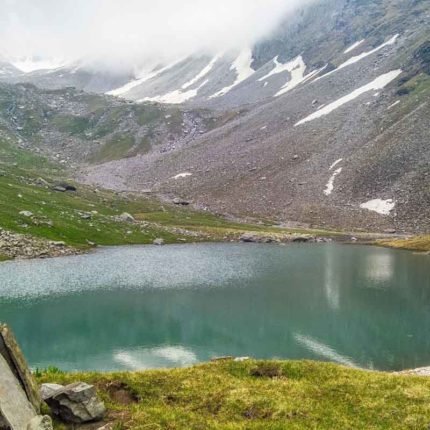
Chandranahan Lake Trek
CHANDRANAHAN LAKE an Alpine Lake in Himachal Pradesh
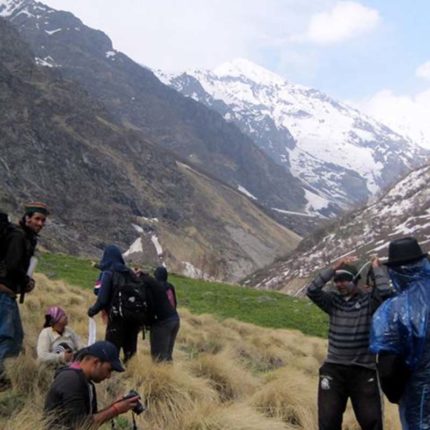
Vishkhopri Trek
It is present at the confluence of Supin and Guggal Gad.
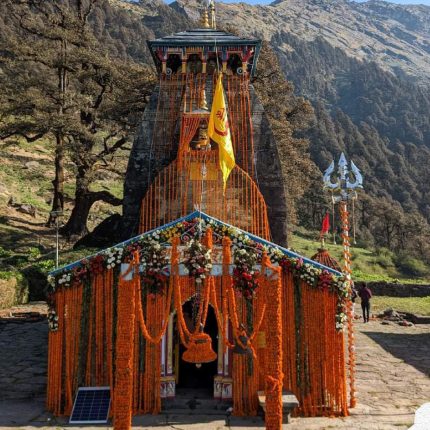
Panch Kedar Trek
The five pilgrim site circuit of Kedarkhand in garhwal region…
Price: ₹ 11,000.00
Book the tour
Send a quick enquiry.
- Overview Itinerary Dates Include/Exclude
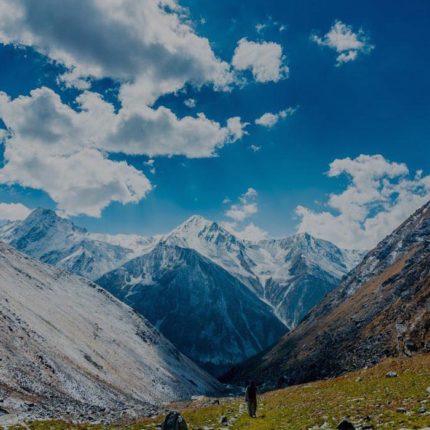
Our first Himalayan trek: Surmounting Har Ki Doon
- Our first Himalayan trek
Holding the hands of my husband and standing in front of fresh summer snow filled Panoramic Mountains around me, I thought to myself, “this is all worth it! Taking the leaves, flying from Bengaluru and standing at the foothills of these gigantic beauties! ” Himalayas it was! Our dream come true (though my husband’s dream is EBC 😉
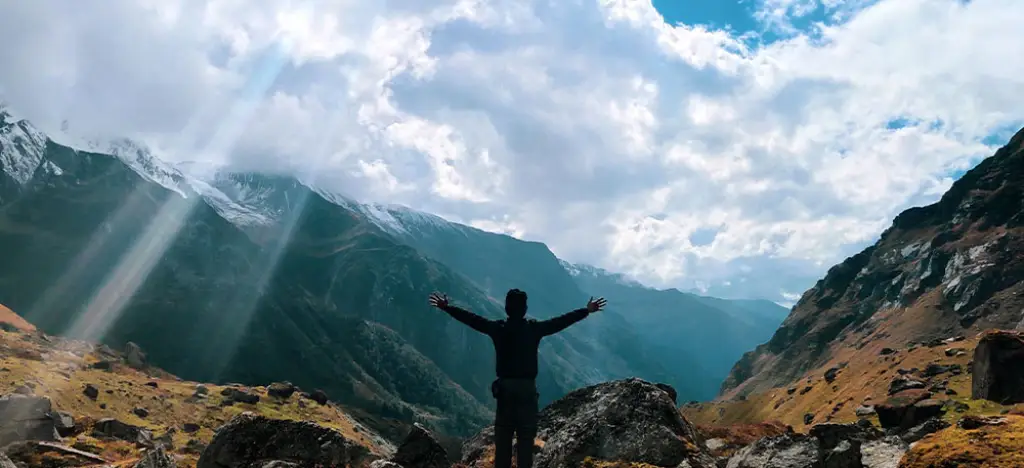
After canceling Himalayan treks for 3 times, I finally was ready with my filled backpack for the forth time to soak into an absolute bliss! This trek was special to me in the sense that it was the first Himalayan trek with my husband and we were extremely excited for what was awaiting us!
I would like to start writing about the lesser known information which will be helpful for the maiden Himalayan trekkers and then move on to unfold our tale!
- When did we embark this unforgettable walk? May 25th to May 31st, 2019 Given that the end of May or beginning of June is Summer, it is fairly warmer in the day time but the cold temperatures at night time can come as a surprise especially,if you are coming from the planar parts of the country like southern India.
- What about the water during the trek?
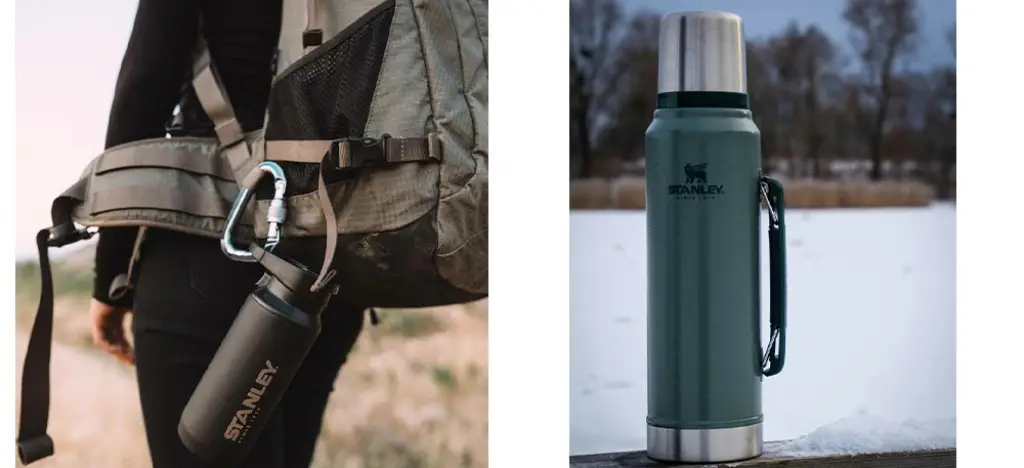
- What to carry for cold during June?

- What to carry for rains?
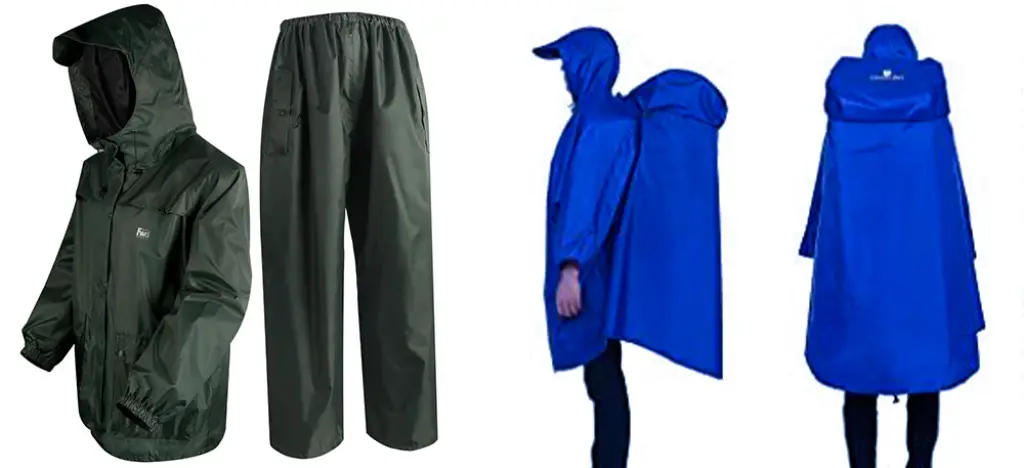
- The kind of shoes for your feet? I saw a lot of people trekking in their sneakers. Even though Har Ki Doon is fairly an established trail, you will be walking a lot on loosely held small rocks. it’s always safe to carry proper trek shoes ( from decathlon as they are very reliable). Otherwise there is a good chance that you are going to hurt your knee due to the stress or twist your ankle.
- What kind of socks? Blister-free socks are a must buy!! Due to long walks and sweat, your feet might get blisters on the 2nd or 3rd day.
- Last minute shopping at Dehradun? BE CAREFUL!! There are no facilities near the Dehradun railway station even to buy protein bars or any trek gears. There is only one Decathlon in Dehradun which is about 5km from the railway station. As I did not visit it personally, i cannot comment on the collection there. It’s a better thing to wrap up all the shopping before you arrive at Dehradun. The last point where you can rent a few stuff is from our start point Sankri which is 220km from Dehradun. For obvious reasons it would be a little expensive.
- Instead rent from TTH : We rented a fleece jacket, rain jacket, trekking poles from TTH. Even though it was a last minute request, the guy Rohan was very cooperative with a baby smile on this face and helped us arrange all of it in time. We can’t thank him enough on this!
- Hydration pack and snacks? To stay hydrated, use ORS packs or hydration packs in one of the bottles and drink the same during the whole trek. Drink as much water as possible and don’t hesitate to stop the people to going ahead and pee more! 😀 Staying hydrated is very important to stay energetic. Carry more carbs and fats like til laddus, dry fruits, protein bars etc. avoid too much of chocolates with sugars.
Why book with TTH?
Their amazing crew : I have trekked with many other famous tour companies but the service provided by TTH is unmatchable!! The crew was very welcoming on the first day itself. They did a demonstration of how to use sleeping bags, CPR process. Our trek guide Manoj aka Manu was knowledgeable about the flora and fauna around the area and was enthusiastically answered our endless questions.
As we were 22 people, 4 crew members were assigned. They made sure the group doesn’t get scattered along the way. The best part was, there would always be one person at the end of the whole group to make sure nobody is left behind! Often times during the treks, people who remain at the end push themselves to catch up with the group and in the process they run out of breath resulting in accidents. TTH team did an extraordinarily good job at this!
Their food and punctuality : Lot of effort goes into getting the raw materials on the mountains, cooking well to retain the taste and serve it hot. They provided us with the desserts like gajar ka halwa, wheat payasam, jamuns, jalebis and tasty samosas, chole bature, popcorn, potato bhajis, gobi Manchurian. They were also very punctual in their itinerary.
Most exciting part, the trek !!!
Day 1: Dehradun to Sankri ride, 220km
The ride was in a TT. Driving through the never ending valleys, river on one side and high mountains on the other side it is here that I first saw the snow capped mountains far amidst the gaps of big green mix brown mountains and the journey became more intrigued of what we had in store further!
We reached Sankri around 5 pm and were welcomed with a warm tea. Unlike very hot Dehradun, sankri was very cold! I had to wear my thermals and bomb jacket even inside the room that was provided by TTH. It was a clean place and scenic as well!!
Day 2: Sankri to Taluka drive 11 km & Taluka to pauni Gharat trek 10-11km
%20(1).webp)
Trail type : mostly flat and a long walk, with tens of ups and downs on the way. The ground is mostly firm.
The trek starts with walking through the domestic fields slowly turning into thick forests like that of western ghats. After resting for a while at a fairly large flat area patched with fresh green grass which was also our first maggi point, we enthusiastically started moving forward.
The thing about Har ki doon is, as it’s a well-known trek you will find a good number of breakpoints where you can have tea, lemon juice, maggie, sandwich, packed snacks etc. walking through the forest we landed up at an open valley with a river flowing by its side. The mountains where covered by huge pine forests and boulders. At intervals, we could also see the traces of some former landslides along the mountains.
Getting through the strenuous first day we reached our first camp site Pauni Gharaat. The food for dinner is served inside a huge dinner tent and it’s amazing how the kitchen crew manages to wash all the utensils in such cold water which we weren’t even willing to wash our faces and feet with !!
As soon as we reach the campsite, we were called out for a nice stretching session! This was an everyday bittersweet ritual. Even though this seemed dreadful, we felt very relaxed after the stretches and this kept us ready for the next day’s efforts!
Day 3: Pauni Gharat to Kalkattiyadhar 7 to 8 km
Trail type: mostly steep at frequent intervals, very steep at few places.
Waking up to cold climate at 6 am with thermals, jackets, gloves on we slowly get down to single layer of cloth by 8 a.m, by the time we finish our morning rituals and breakfast. There is no way we can take a bath as the water is very cold so be prepared for no bath for complete 5 days and believe me that is fun :D. Every day here starts with HAR HAR MAHADEV slogans and we walked the whole day along the river on one side opening into valleys and high mountains on the other side. We reached around pretty early today by 2p.m and dead tired thanks to the steep steps. The hot lunch was a savior! After tea time me and my husband mostly roamed around the place and crashed to our bed after dinner at 9 p.m. Best thing of trek is we are really in the present. I didn’t think of work, the future, the past.. nothing mattered for the whole time I was in the trek. It’s just so present, NOW. So blissful and so exhilarating!
Every evening spent watching the mules in the grass, the sunset, gush of the river, light drizzle sometimes. It’s like the whole nature gathers up to present a spectacular celebration!
As we opted for one mule, our daily ritual before going to bed would be setting the next day’s clothes, socks, raincoats and snacks in the day pack and the remaining stuff to the mule. I would make a request to all of you here to carry light, travel light. When we see mule as a being that feels the pain, limiting our load would be respectful for its hard work!
Day 4: Kalkatiyadhar to har ki doon peak & back to kalkattiyadhar, 12km
Trail type : Starts with gaining altitude on an uphill, some ups and downs, one place where we had to cross the snow. Steep at few places, mostly long walk.
We started very early today around 6.30 am everybody were on the field finishing their Breakfast and ready to leave. The trail started with some uphill and as we walked about 1km we reached a point which opened up into a huge valley completely surrounded with the views of snowcapped mountains.
Walking another 2 kms through some steep parts,
we ended up seeing a new set of mountains which had this view of very long and thin waterfall through huge mountains which was such a dreamy view!
Today’s walk felt so endless and I was getting hopeless of it ending! At a point it felt as if we have started descending and every downhill would be hated because this means we have to climb more to gain our altitude towards the summit!
Finally around 11.30 am after a strenuous long walk the mystery unfolded in-terms of pine trees around us. With one final steep uphill which we walked through the streams, we came to a view just below the summit which had snow mountains, pine trees, freezing river and sunshine in the clear blue sky!
Minutes of ascend from this point opens up the summit with 6 mountains, swargarohini, har ki doon ( which translates to Har meaning Shiva, doon meaning valley i.e valley of Lord shiva). The peak has a shiv ling and a small cute temple around which people were chilling. The valley had these beautiful bunch of pink flowers for which the girls where going frenzy and taking pictures with the flowers in their head and ears! Team lead Manoj enlightened us with the fact that in the mountains at this altitude, the weather can change unexpectedly. Given that today’s weather was fairly sunny we aimed to reach peak by 11 a.m till which the weather might be clean. We did reach by 11.30 am!
By 1.30p.m after lunch, we started walking back to the same camp through the same way. As we felt relieved that it’s just the climbing down now, meanwhile hating the uphills on the way. It was almost around 4.30 p.m that we reached down and also the clouds playing peekaboo above us started drizzling. We were extremely lucky in the sense we never really encountered rain while on the trek in the last 3 days. The day was wrapped up after a small demo by our trek lead Manoj on CPR.
Day 5: Kalkathiyadhar to Pauni Gharaat : 9 km
Trailtype : same as day 2 with 1km extra through the village of Osla.
As coming down is much easier than climbing up, it also takes considerably less time to come down. We descended pretty quickly into the village of Osla that stands cascading on the mountain side with the view of huge valley. Here we learnt about the local culture, met the locals and had a small heartfelt chat.
A sense of accomplishment crept into me and my husband that we are almost at the end of our first Himalayan trek and a sense of relief that we finished it with no setbacks!
This was our last camp of the trek and we ought to celebrate it. We pulled our sleeping bags a little out of the tent and laid there to watch the humongous sky with countless twinkling stars. Zillions of stars were scattered at every point your eyes can take you to. We kept tracking the faint moving light of the planes until they faded into the horizon. We relived the moments of past 5 days and we felt we belong right HERE!
Day 6: Pauni Garaat to base camp Taluka
Trailtype : Same as Day 1
Upon reaching Taluka we had the valedictory function where we got the opportunity to express our experiences individually and also receive our certificates! As usual awesome dinner was served with kofta, egg curry, paranthas, rice and curry topped with pickles!
Day 7: Sankri to Dehradun TT travel, same as Day1
We were at Dehradun by 3p.m and it was oven hot! Hating the transition from cold to such hot weather we bid an emotional goodbye to the mountains to get back to the crunch! Our first Himalayan trek had etched an everlasting impression in our hearts and minds. We both bonded a little deeper and stronger through these trek days and the experience has left us hungry to come and see more of these mountains!
“Sanctum of fresh air and gleaming water
Let’s not poison it with our plastic scatter.
Mountains uplift and rejuvenate our soul
Let’s keep these majesties away from our foul”.
“MOUNTAINS GIVE US HAPPINESS,DON’T GIVE THEM BACK THE TRASH”
Our ovations to
Manu singh : the guiding light ( trek leader)
Naresh : the shy sprinting machine (he was shy, always had this wide smile on the face and the human who never walked but flew)
Narayan Pawar : the last check-post of the group while trekking
Yashpal : the stretch king ( he used to teach the stretches)
Helpful tips : If you are here in May end or start of June, you can also go to Rishikesh which is 40 km from Dehradun for white river rafting and bungee jumping. You can watch ganga aarti in rishikesh and also check out Haridwar further 20 km from Rishikesh. Plan to leave to dehradun airport from Rishikesh as it is nearer to airport than dehradun. Do consider some amount of traffic as well so better to keep a buffer of 2 hrs before check-in.
Some more snaps of the memoirs!
Written By Sindhu Bijjal
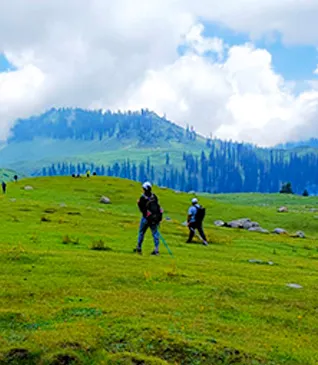
Doodhpathri Trek
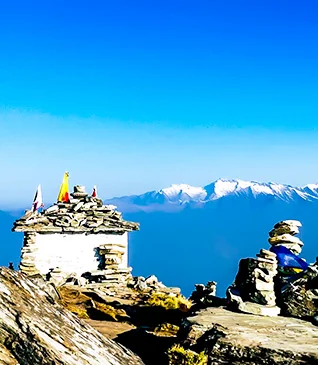
Chopta Chandrashila Tungnath Trek with Deorital
Uttarakhand
.webp)
Ranthan Kharak Trek
.webp)
Nafran Valley Trek
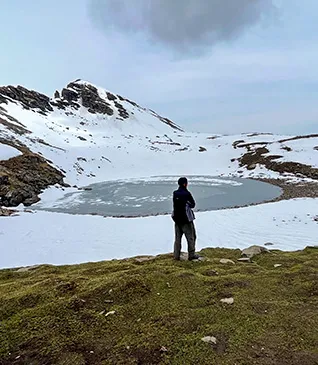
Bhrigu Lake Trek
Himachal Pradesh
.webp)
Dayara Bugyal Trek
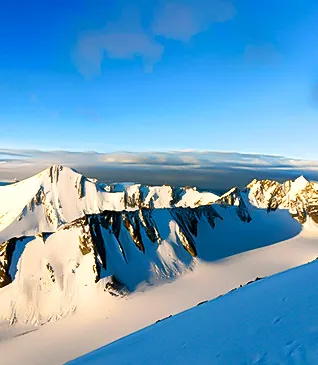
Twin Peak - Kang Yatse II, Dzo Jongo, Markha Valley Trek
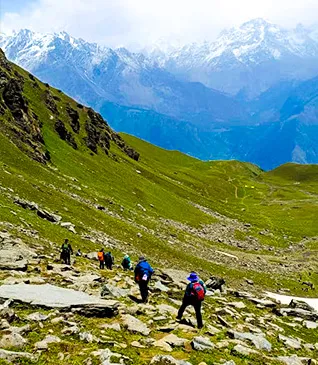
Sar Pass Trek
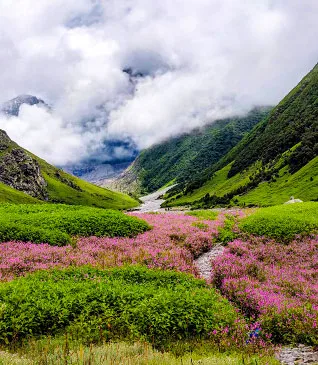
Valley of Flowers Trek
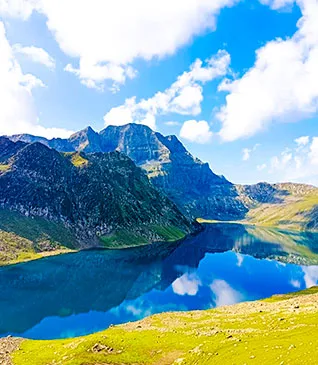
Tarsar Marsar Trek
Jammu and Kashmir
.webp)
Rupin Pass Trek
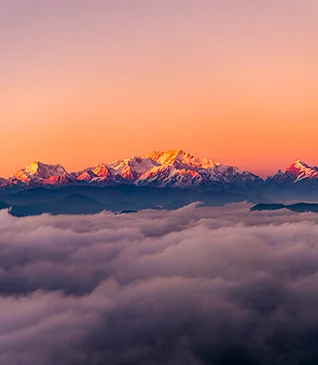
Sandakphu Trek
West Bengal
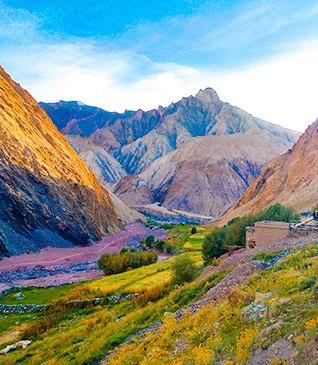
Markha Valley Trek
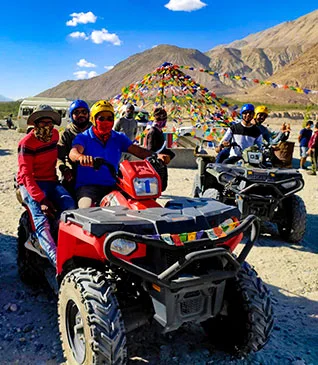
Leh Ladakh Multi-Sports Trip
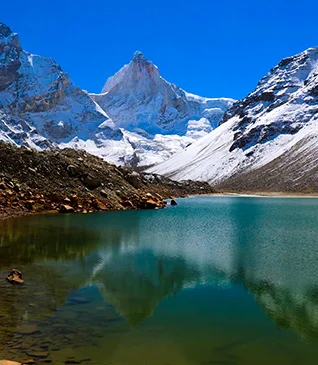
Kedar Tal Trek
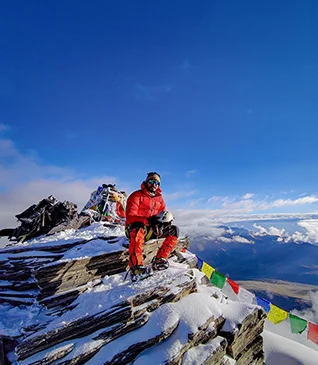
Kang Yatse II Peak Trek Expedition
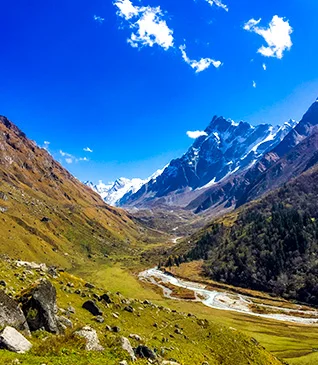
Har Ki Doon Trek
.webp)
Hampta Pass Trek
.webp)
Gaumukh Tapovan Trek
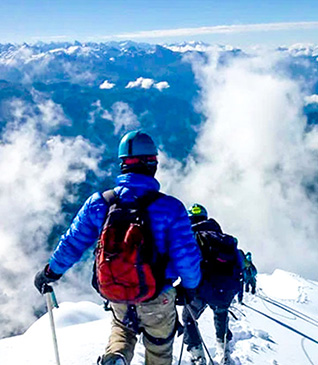
Friendship Peak Expedition
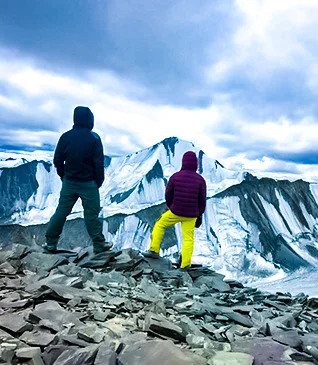
Dzo Jongo Peak Trek Expedition
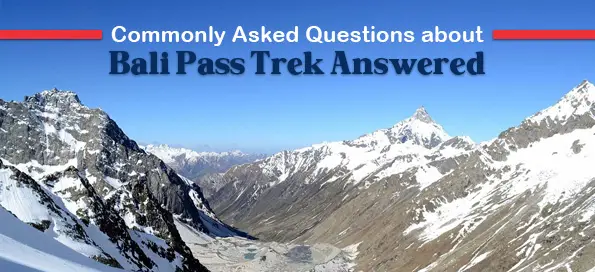
Commonly Asked Questions about Bali Pass Trek Answered
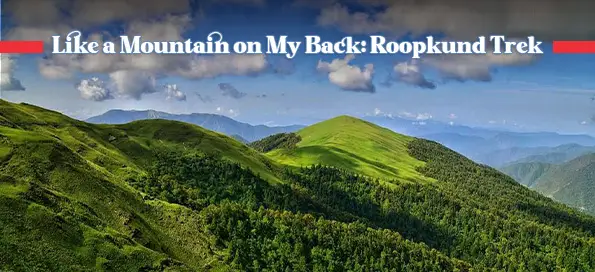
Like a Mountain on My Back: Roopkund Trek
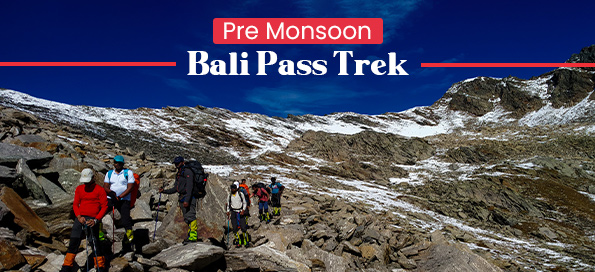
Bali Pass Trek in Pre Monsoon & Post Monsoon
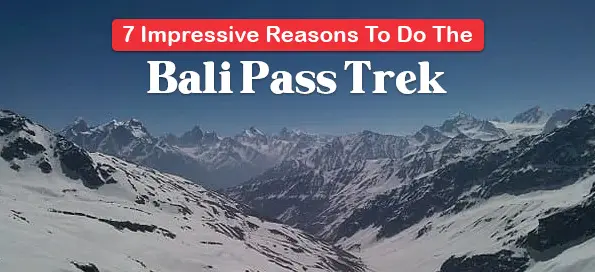
7 Impressive Reasons To Do The Bali Pass Trek
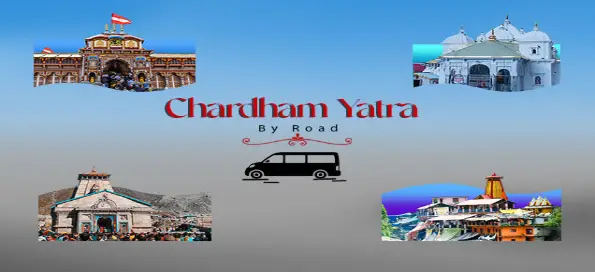
CHAR DHAM YATRA PACKAGE
.webp)
Buran Ghati and Rupin Pass Two Mesmerizing Treks in Himachal
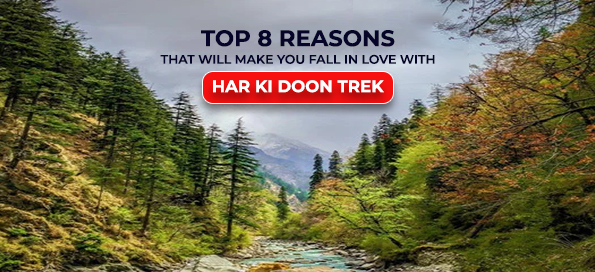
Top 8 Reasons That Will Make You Fall in Love with Har Ki Doon Trek
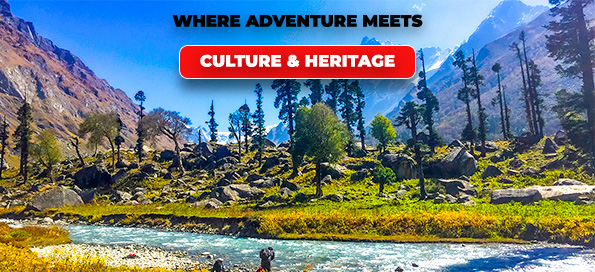
Where Adventure Meets Culture & Heritage
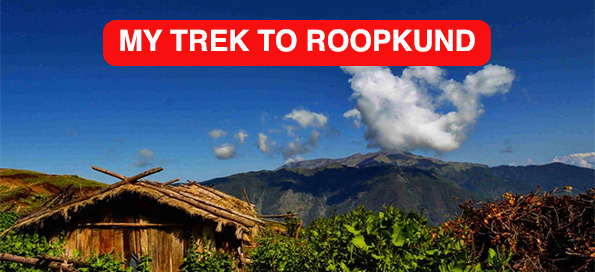
MY TREK TO ROOPKUND
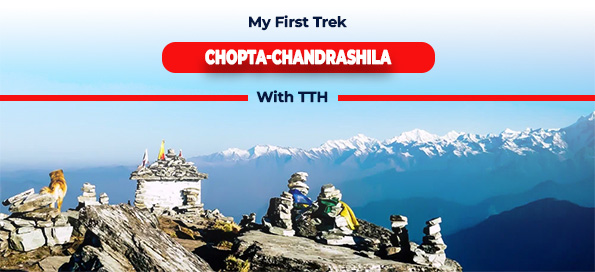
My First Trek Chopta-Chandrashila with TTH
Rent A Gear
Trek Articles
Quick Links
Trekking & Hiking
Mountaineering
Multi Sports
Himalayan Pilgrimage
Website Privacy
Terms & Condition
Contact Info
Get in touch with us. E-mail us Monday-Saturday (10 AM to 6 PM)
Address: Trek The Himalayas, Kaintura Plaza, Badrinath Road Tapovan, Rishikesh - 249201 Uttarakhand
Phone: 8191004846
Email: [email protected]
2010 Trek The Himalayas. All rights reserved

"The land of God"
Har ki dun trek.
May – September & December - January
₹ 9499 + 5% GST
“Not all those who wander are lost.”
Har ki dun trek, may - june - september - october, up to 15% off in may-jun batches for a limited period ✨, sankri - 6 days , difficulty level - 3, + rs. 1750 backpack offloading + rs. 2000 transport, sankri to sankri, ₹9499+ 5% gst.
Har Ki Doon is located in Uttarkashi district and is one of the best trekking in Uttarakhand state, is called the land of God. It is situated in the lap of mountains along the rivers Rupin and Supin, tributaries of Yamuna river. It is a very inaccessible region located between the upper Himalayas.
When it comes to trekking, Uttarakhand is the best place for trekking in India. Tourists visiting here can admire the natural beauty here. Har Ki Doon is one such amazing trek that has attracted trekkers across the world for decades.
The trek is located at an altitude of 3556 meters above sea level and is surrounded by cedar forest. The Himalayas Har-ki-Doon, also known as the Valley of the Gods, is a beautiful place to see in the modern era. Tourists visiting here will get a lot of peace as well as feel the beauty of nature. Moving towards Har-Ki-Doon, you will know many such areas of Garhwal, which are very beautiful, while trekking in Uttarakhand , you can feel the nature and see some of the most beautiful places in your life.
It is an 8-day long trek, starting from Dehradun and returning to Dehradun, during trekking, trekkers can see five beautiful places in Garhwal including Sankri, Taluka, Osla, Harkidoon and Jaundhar Glacier.
Govind National Park
Govind National Park is located in Uttarkashi district, it was established in 1980. This national park is spread over an area of 472 sq km. In Govind National Park, animals such as bears, snow leopard, black bear, monal are found.
How to reach Sankri?
Sankri is the starting point of the trek, so to reach Har ki Dun first you need to reach Sankri.
Airport - The nearest airport is Jolly Grant Airport. The distance of Sankri from Jolly Grant Airport is 223 kilometres. You can easily go by taxi from there.
Railway Station - Nearest railway station is the Dehradun railway station. The distance from Dehradun railway station to Sankri is 198 kilometres. From there you can easily go by taxi or car.
Day 1: Dehradun to Sankri (2,000 m) You will start the trek from Dehradun and drive to Sankri, which is the starting point of the trek. The drive takes around 10-11 hours, and you will pass through the towns of Mussoorie and Purola. You will reach Sankri by late afternoon or evening and spend the night at a guesthouse.
Day 2: Sankri to Taluka (1,900 m) to Seema (2,560 m) (Trek 14 km) After breakfast, you will start the trek from Sankri to Taluka, which is around 11 km away. You will reach Taluka by late morning, and from there, you will trek to Seema, which is around 3 km away. The total trek distance for the day is around 14 km, and it takes around 7-8 hours. The trail is a gradual ascent through dense forests of deodar and pine trees. You will cross the Supin River over a wooden bridge and reach Seema by evening. You will set up camp for the night.
Day 3: Seema to Har Ki Dun (3,566 m) (Trek 11 km) After breakfast, you will start the trek to Har Ki Dun. The trek is around 11 km long and takes around 6-7 hours. The trail is a gradual ascent through dense forests of deodar and pine trees. You will cross the Supin River over a wooden bridge and reach Har Ki Dun by afternoon. You will spend the night at a campsite near the valley.
Day 4: Har Ki Dun to Seema (Trek 11 km) You will start the trek back to Seema after breakfast. The trek is around 11 km long and takes around 5-6 hours. The trail is a gradual descent through dense forests of deodar and pine trees. You will reach Seema by afternoon and spend the night at the campsite.
Day 5: Seema to Taluka to Sankri (Trek 14 km) After breakfast, you will start the trek back to Taluka. The trek is around 14 km long and takes around 7-8 hours. The trail is a gradual descent through dense forests of deodar and pine trees. You will reach Taluka by late afternoon and drive back to Sankri. You will spend the night at a guesthouse in Sankri.
Day 6: Sankri to Dehradun You will start early in the morning and drive back to Dehradun. Your Har Ki Dun trek ends here.
Note: The itinerary may vary depending on weather conditions and other factors. It is advisable to check with team Walking The Himalayas for the latest updates and recommendations.
Included in the package
Certified Trek Leaders are provided to you by Walking The Himalayas.
All the trekking essentials like Tents, Sleeping Bags, Gaiters, Crampons, Liners, Cutlery , etc.
All the staff members from team Walking The Himalayas are experienced that includes Guides, Cooking Staff, Helpers, Porters .
We promise our travellers to provide delicious, hygienic & nutritious meals during the trek that includes morning tea, breakfast, lunch, evening snacks & dinner ).
Fully equipped medical kit, oxygen and safety equipment .
All f orest permits and camping charges .
Not included in the package
Transport to and from Sankri – Walking The Himalayas will arrange shared taxis for trekkers. These shared taxis will pick you up from Dehradun Railway Station or Airport. Taxi from Dehradun to Sankri costs around Rs. 6000 - 7000 per taxi and Rs. 9000 - 10000 per tempo one way. So if you are in a group of 6 - 10 persons then a taxi/tempo will cost around 1000 per person for one side.
Food during transit to and from the base camp – Walking the Himalayas doesn't include meals purchased during the journey to Sankri and back.
Backpack offloading charges – If you wish to offload your backpack, there will be an additional charge of Rs. 1,500 - 2000. The backpack cannot weigh more than 9 - 10 kgs. Walking The Himalayas does not allow Suitcases/Strollers/Duffel bags during the trek, so if you are bringing these then you have to take care on your own. These charges can vary for last minute offloading in case you decide to offload your bag after reaching Sankri (Rs.350 per day inclusive of taxes).
Personal expenses - Your trekking package doesn't include any kind of personal expenses.
Cancellation
If your trek gets called off at the last moment due to a natural calamity/unforeseen circumstances (like rains, snowfall, earthquake, landslides, strike, bandh etc.) we will not refund your money. Instead of money, Walking The Himalayas will issue a trek voucher for the full amount. You can easily redeem that voucher for the same amount for any of the treks available at the same price.
In case you wish to cancel your trek please email us at [email protected]
Cancellation charges are based on the total trek fee, irrespective of the amount paid either full or partial.
The cancellation policy of Walking The Himalayas is based on the original booking time and the original start date of the trek.
If you cancel a trek before 30 days of trek start date and get a full refund after deduction of 1.99% payment processing fee.
If you cancel a trek before 15 days of the trek start date and get a refund after a deduction of 20% of the total trek fee.
If you cancel a trek before 10 days of the trek start date and get a refund after a deduction of 40% of the total trek fee.
If you cancel a trek before 5 days of the trek start date and get a refund after a deduction of 60% of the total trek fee.
The Trek fee is non-refundable if you cancel within 4 days before the trek start date.
Trek cancellation due to weather:
In case of an incomplete trek due to weather conditions, you can opt for the same trek again throughout your lifetime on all our fixed departures for the same trek.
This attempt only covers the trek fee and will not include any rentals or the transportation amount paid earlier.
This is non-transferable.
Things to carry on Har Ki Dun Trek
Here is a list of essential items that you should carry on the Har Ki Dun trek:
1. Backpack: A sturdy and spacious backpack to carry your essentials.
2. Trekking shoes: A good pair of trekking shoes with a strong grip to navigate through rugged terrain.
3. Warm clothing: Warm layers of clothing such as thermal innerwear, fleece jacket, down jacket, and waterproof pants.
4. Trekking pants: Lightweight, quick-dry, and comfortable trekking pants.
5. Headwear: A woolen hat or beanie to keep your head and ears warm, and a sun hat or cap to protect your face from the sun.
6. Gloves: A pair of gloves to protect your hands from the cold.
7. Socks: A few pairs of thick, warm socks to keep your feet warm and dry.
8. Sunglasses: To protect your eyes from the sun and snow glare.
9. Personal medication: Any personal medication that you may need, such as painkillers, allergy medication, or altitude sickness medication.
10. First aid kit: A small first aid kit with bandages, antiseptic cream, and other essentials.
11. Water bottles: At least two water bottles with a capacity of 1 liter each to stay hydrated.
12. Trekking poles: To help you navigate through steep and uneven terrain.
13. Snacks: Energy bars, dry fruits, and other high-energy snacks to keep you going during the trek.
14. Sunscreen: To protect your skin from the sun.
15. Headlamp or flashlight: To navigate through the campsites at night.
It is important to pack light and carry only the essentials to avoid a heavy load. You can also rent or purchase some of these items at the base camp or from local shops.


A Complete Har Ki Dun Trek Guide
Quick Jumplinks to Navigate
One of the most ravishing valleys in the Western Himalayas, the Har Ki Dun Trek takes you through enchanting forests of alpine with extraordinary views of the surrounding mountain pinnacles. Located at the base of the majestic peak of Fateh Parvat, it surmounts a height of 3556 meters. This cradle shaped valley offers a variety of enchanting explorations ranging from nature’s compassion to bird viewing. Scattered with Himalayan flowers, the valley is also packed with thrilling wildlife. Encounter Sankri with its magnificent views of the Garhwal Mountains before you trail towards Taluka, which has the essence of vast meadows and the invigorating aroma of scented flowers. Plunge ahead through Osla with propitious encounters with deers and bores before you stroll to the euphoric Har Ki Dun Pass. Witness the frozen glaciers of Jaundhar and Swargarohini while charming landscapes of prairie and snowflakes garnish your scrutiny.
Here is the complete Har Ki Dun Trek Guide to prepare for an amazing trekking expedition in the beautiful Himalayas.
How to reach.
Launching ahead on your expedition amidst the Garhwal Himalayas, The Har Ki Dun Trek commences from the picturesque city of Dehradun , nestled in Uttarakhand . Arrive in the beautiful Dehradun by air, train, bus or car. Fly in to the Jolly Grant Airport from Delhi and other major cities, located 25 kms from Dehradun and ride the easily available cabs to reach the city centre. Dehradun is well connected by railways to major cities; this is the last station before one begins to ascend into the mountains. The Mussoorie Express, Shatabdi Express and Nizammudin Dehradun Special run regularly on these lines from New Delhi. Various other trains run frequently from Chennai, Lucknow, Kolkata, and Amritsar among others. There are numerous buses that ply every half an hour from the ISBT Kashmiri Gate in New Delhi and take approximately 6-8 Hours to reach Dehradun. Other Volvo and state-run buses are scheduled from Shimla and Mussoorie. You can also pre-check to book luxury buses or instead take a road trip and drive down through the pictorial roads of NH 72.
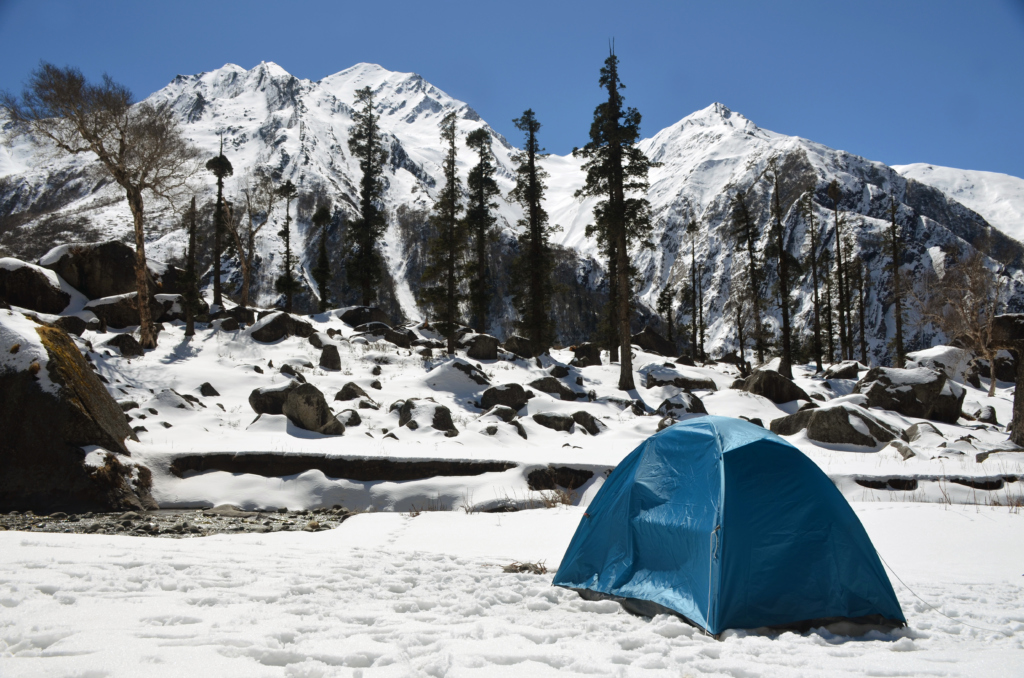
The entry point to the charismatic Har Ki Dun, Sankri is the basecamp of this exhilarating expedition. It is a scenic village that is conveniently situated at the astounding pinnacle of 1950 meters, in the Tons Valley with elating views of the Himalayas. It is the last village road head on the route to the trek and is magically located 13 kms inside the Govind Wildlife Sanctuary. Few private hotels can be discovered here along with a government-run guesthouse to accommodate travellers and trekkers. Apart from being the campsite for various treks, it also has amazing grounds for camping and bonfire. The beautiful sun setting behind the Himalayas coupled with the shimmer of the Swargarohini peak, makes Sankri an ideal basecamp amidst the ridges.
Also Read: 15 Best Himalayan summer Treks that are inevitable .
Best Season To Visit
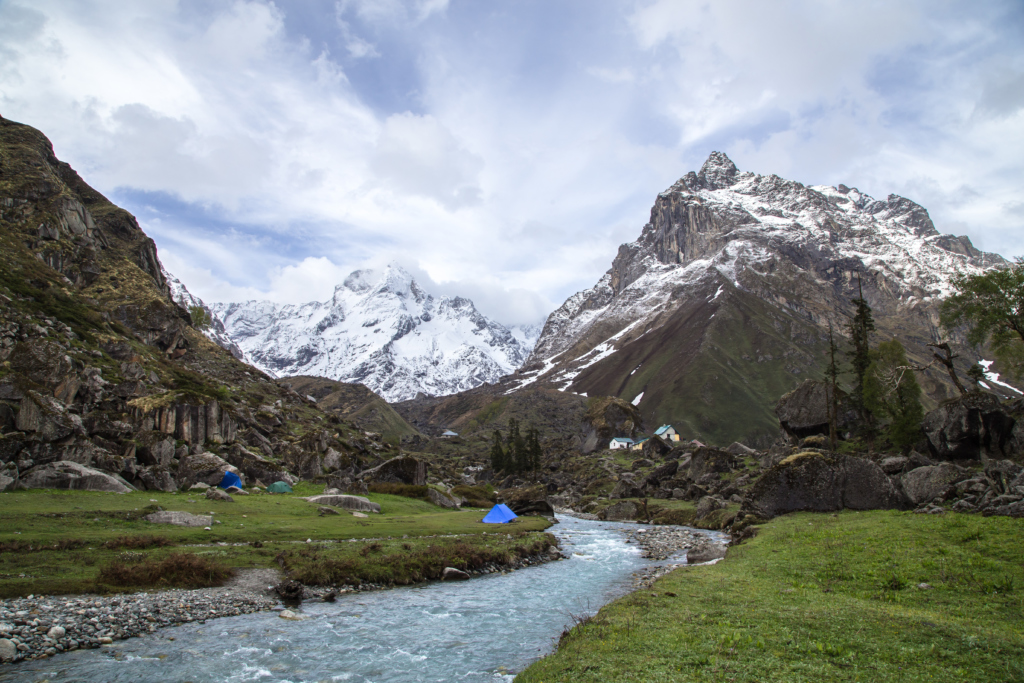
The Har Ki Dun Trek takes you from the celebrated city of Dehradun through an exhilarating drive to Sankri, which is the base camp of this trekking expedition. A fairly popular campsite amidst travellers and trekkers, this forms the commencing point of various explorative accounts. With an exquisite weather suitable for trekking all year round except for the monsoons, one can witness snow in the months of winter that may from December to the mid month of April. Spring season is the best time to engage in this trip, for the views of the flower-blooming meadows and valleys coupled with scattered snow makes an exciting journey. The average temperature ranges from 1°C to 5°C, although nights are reasonably colder with drastic dips below freezing point. Generally, most trekking enthusiasts undertake this trek anytime during the months of May to October, which as a safe weather condition and better predictable conditions of trekking.
About The Locals
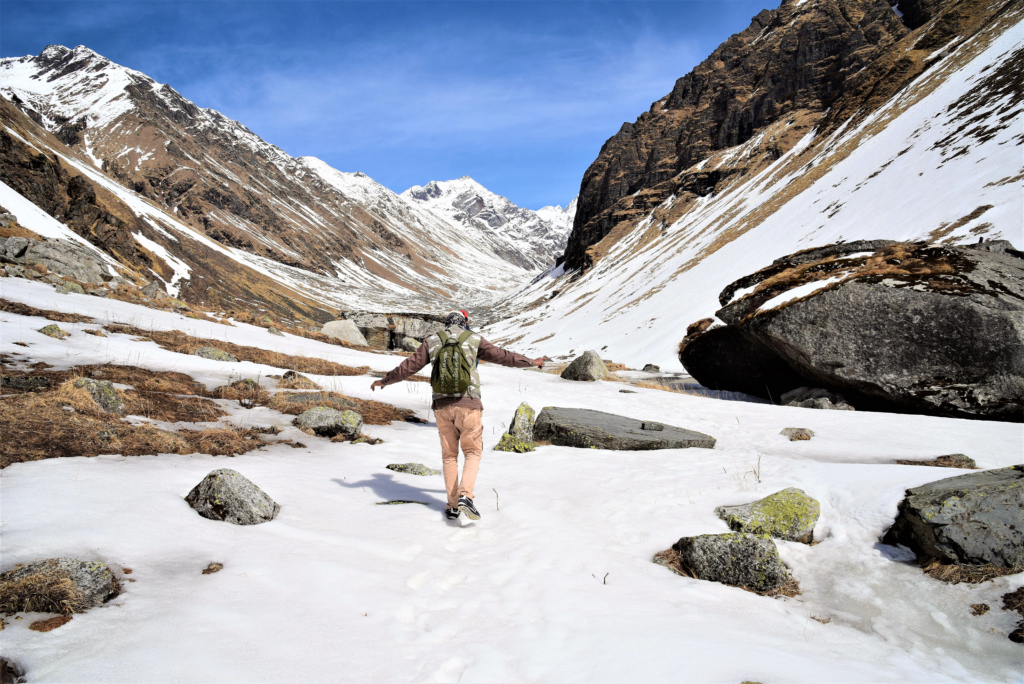
Abundant chronicles coupled with the fascinating culture of Uttarakhand make it a travel friendly state. The towns and villages in Uttarakhand are principally blessed with religious memorials that form the basis of the inhabitants’ history. Discover the traditions and practices of this beautiful region, where the culture and religion is kept close to heart while the way of life is amusing to witness. Tourism has bloomed since the past decade giving the citizens amended revenue. Their diversity and generosity towards travellers is well admired by all. Their benevolence and admiration for travellers fills your expedition with experiences that will stay a lifetime.
Also Read: 10 Best Himalayan Treks for Beginners .
Elevation Points
The Har Ki Dun trekking expedition begins from the beautiful city of Dehradun and takes you on an exhilarating drive to reach the basecamp at Sankri. The drive takes you through enchanting villages of Nainbagh, Purola and Naitwar among others. Sankri offers amazing views of the picturesque Himalayas, with its elevation at 1950 meters. Trekking from here to the mystical Taluka that sits at 2075 meters, one can witness the Tons River and the small settlement that rests here. Track ahead to Osla that stands at 2560 meters with its beautiful village adorned with a carved temple. Reach your trekking destination of Har Ki Dun that scales a majestic 3556 meters. Trace your steps back as you descend to Osla and then to Sankri before you are dropped off at Dehradun.
Required Entry fees at certain check points, permits for the trek and obligatory forest camping charges in the region for the entire length of the trek will be included as part of the trekking expedition of the organizers. Please carry your identification cards such as driving license or voter ID along with a passport size photo, a medical certificate ensuring your fitness for the trek and a disclaimer certificate ensuring your submission to voluntarily participate in this trek. You may be required to receive permits for the Govind Wildlife Sanctuary and/or any equivalent forest fees, as required.
Medical Advice and Emergency Numbers
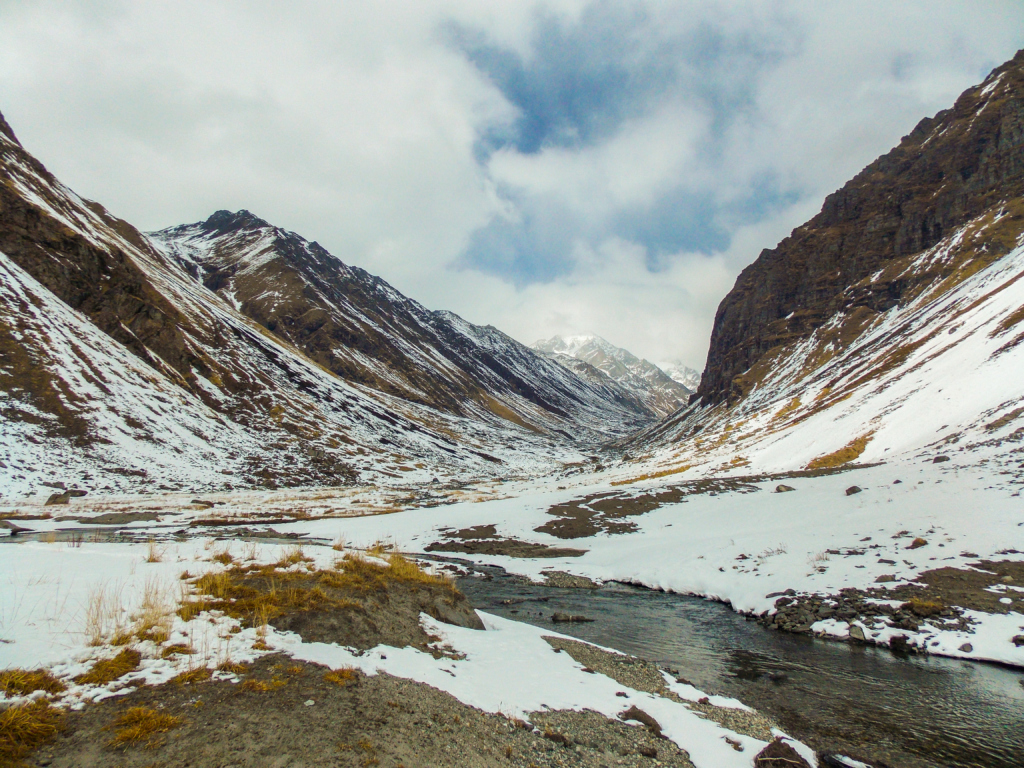
A well-equipped first aid kit will be accessible with the guides throughout the duration of the trek. We recommend that you carry your own individual resource of first aid items such as medicines, antiseptics, insect repellents, prescription drugs etc.
All precautionary measures shall be taken to ensure your safety yet there lays no harm in having awareness of the general know-how of healthcare. CPR and other common medical knowledge about altitude sickness (Acute Mountain Sickness) should be present.
This illness is associated with trekking with symptoms that range from headache, insomnia, gastrointestinal issues, lung problems, ataxia etc.
Please consult your doctor before your trip to procure prescription drugs for such possible situations and only consume them if required, as they are powerful and have strong effects, especially if taken during your trek. As Har Ki Dun lies in Uttarakhand, please keep with you at all times the following emergency contact details.
Uttarakhand Helpline: 0135 – 2710334, 0135 – 2710335, 0135 – 2710233 Army Control Number: 0135 – 2716201, 0135 – 2710925, 0135 – 2716201, 0135 – 2710925 Army Medical Emergency numbers : 18001805558, 18004190282, 8009833388 Police: 100 Fire: 101 Ambulance: 102 Chamoli Control Room : 01372-251437, 251077, 09411352136 Flood Information : 01372-251437, 09411352136
Advice and Expectations
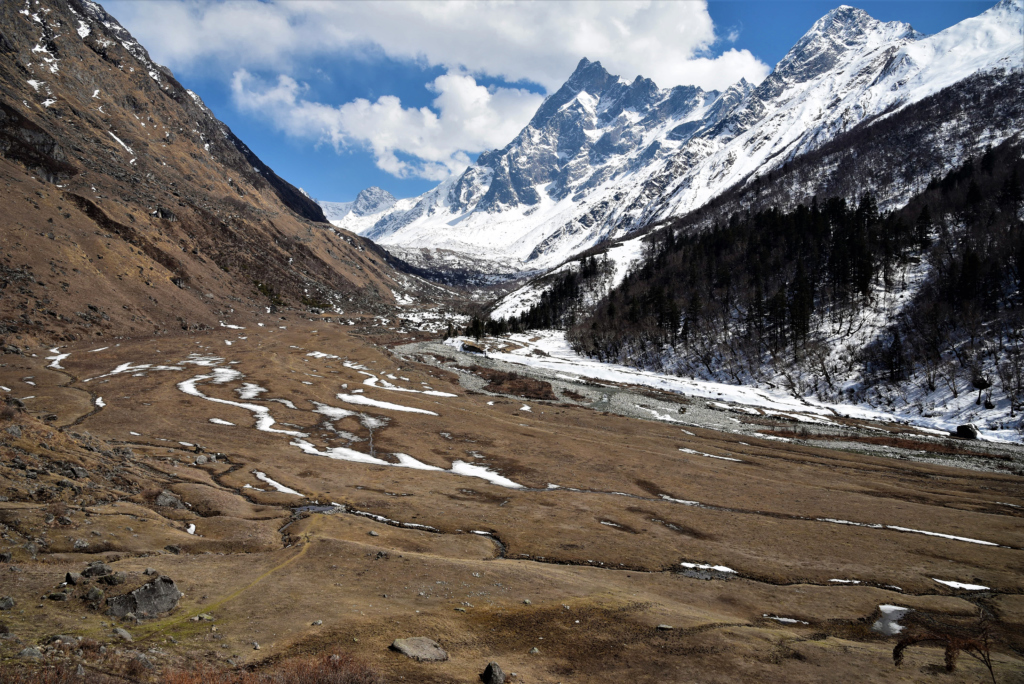
This expedition is the perfect experience to enjoy the thrill of the Himalayas yet it holds extreme conditions and is generally considered to have a moderate to hard level of difficulty.
Prepare thoroughly with regard to clothing and other protective gears to endure the unpredictable mountain weather, as it may get very cold. Keep your trekking gear safe and always keep essentials such as wind-proof jacket, dry socks and caps at hand. Make sure you choose correct and good quality footwear and fitted boots to avoid frostbites. Wear the right kind of socks to facilitate blood circulation.
Carry a sturdy sleeping bag that is durable and comfortable. Carry a good quality backpack that can ensure harsh conditions of wear and tear, especially with a plastic or waterproof lining. Carry your identification proof as you might be expected to furnish it with the officials.
Things To Carry
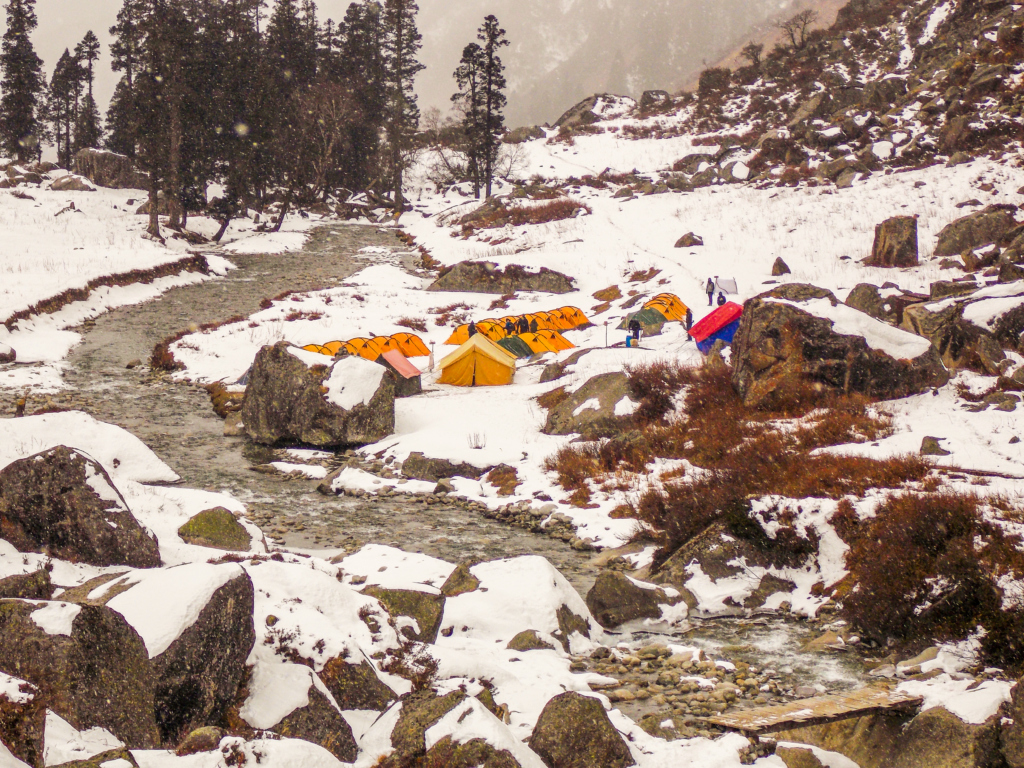
– Durable good-quality trekking shoes – Camping shoes for crossing streams – Thick woollen socks – Thermal innerwear – Heavy fleece clothes – Torch – Whistle – Covers to store used/wet clothing – Winter jacket and water proof coat – Trekking pants – Woollen cap, gloves, etc. – Sunglasses – Sun screen lotion and other toiletries – Water bottle – Trekking pole – Firs aid kit – Personal medication – Swiss knife
Attractions
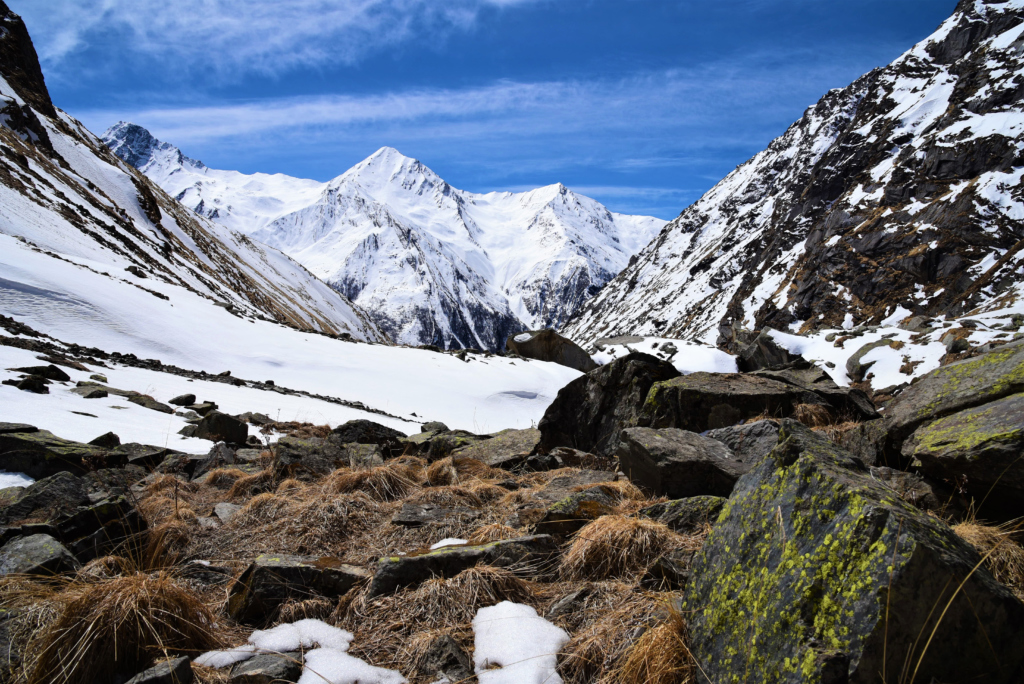
Dehradun – The capital city of the new state of Uttarakhand, Dehradun is a hill station that is nestled amidst the Garhwal region of the majestic Himalayas. It is one of the oldest cities in India and has a large number of tourists each year due to its picturesque landscapes and vibrant weather.
Nestled between the Ganges and the Yamuna, Dehradun is a popular retirement spot as it hosts a large Cantonment area apart from being a world famous holiday destination. Various historical sites of architectural value can be found here with auspicious temples that are renowned.
Sankri – Travelling through unspoilt and mixed Himalayan forests, Sankri is the roadhead for the Har Ki Dun Trek. A pretty village that offers a beautiful view of the Himalayas, Sankri consists of a few settlements of shops and guesthouses and mostly cater to trekking enthusiasts.
It is nestled at 1950 meters in the Uttarkashi District of Uttarakhand with a scenic paradise that jolts the naïve traveller. This lovely hamlet stands proud amidst the Swargarohini peak in its backdrop.
Taluka – An attractive colony en route to Har Ki Dun Pass, Taluka sits at an elevation of 2075 meters with striking valley views whilst meandering streams pass along the green marshlands.
It has a GMVN (Garhwal Mangal Vikas Nigam) guesthouse that accommodates trekkers and is run by the government. A private run forest guesthouse can also be visited here, which offers decent accommodation facilities for nature enthusiasts who wish to enjoy the bounty of paradise.
Osla – Osla is a clandestine village in the Mori Tehsil of the Uttarkashi District. This beautiful abode offers extraordinary sceneries within the prominent mountain backdrops.
Beautiful meadows and peaked mountaintops will exhilarate your senses with occasional unique flowers that adorn the green fields. The Temple of Duryodhan is sited here, which is believed to hold a significant historical significance by the locals.
The tears shed by the locals are believed to have formed the River Tamas when the demise of Duryodhan occurred at the battle of Kurukshetra. This is the reason the water of this river is not used for drinking.
Har Ki Dun – One of the most famous trekking getaways in the Uttarakhand region, the Har Ki Dun is a cradle shaped valley in the majestic Garhwal Himalayan region. It is situated on the foothills of Swargarohini Peak with scenic views of nature’s bounty. It is home to the enthralling Jaundhar glacier where nature’s exquisiteness engrosses every traveller.
The Har Ki Dun is called the ‘hanging valley of gods’ with high chances of sighting wildlife. The smell of pine combined with the sight of deodar trees will entice your senses whilst you trail through terraced mountain fields, conifer forests and lush green grasslands.
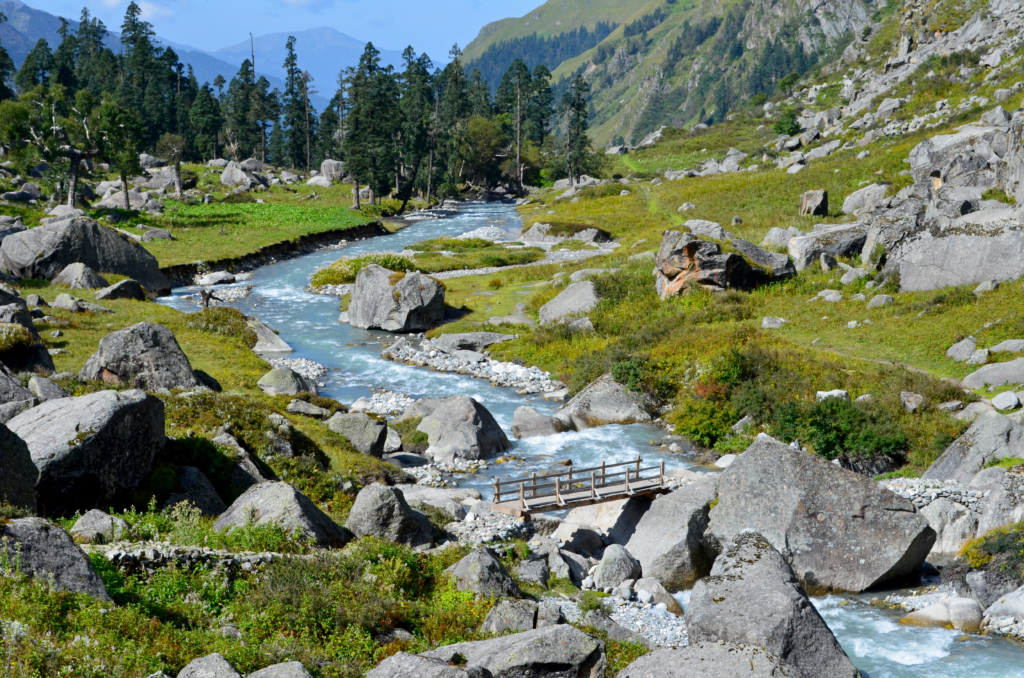
Day 01: Arrive at Dehradun, Drive to Sankri Day 02: Trek from Sankri – Taluka Day 03: Trek from Taluka – Osla Day 04: Trek from Osla – Har Ki Dun (11 km/5-6 Day 05: Trek from Har Ki Dun – Jaundhar Glacier – Har Ki Dun camp (15 km/7 Hours) Day 06: Trek from Har Ki Dun – Osla (11 km/3 Hours) Day 07: Trek from Osla – Sankri (26 km/7-8 Hours) Day 08: Drive to Dehradun (Reach at 7-8 PM)
Tips And Tricks
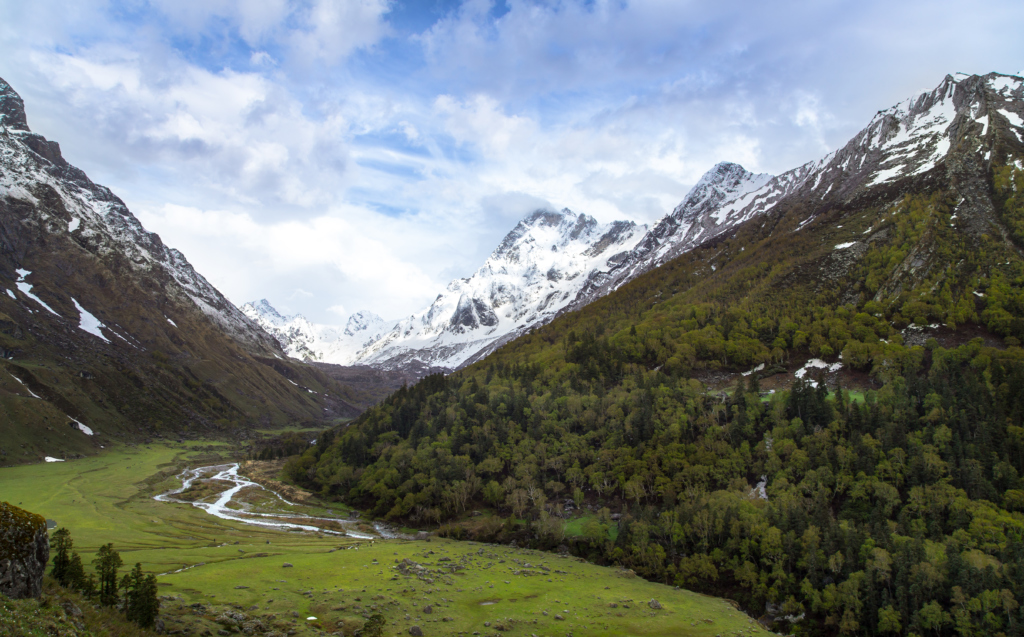
– Hydrate two days before your trek – you must triple your water intake to avoid dehydration. – Choose a shoe that is half a number larger than your normal size. It may be uncomfortable if one chooses a shoe size, which is one number smaller than your actual size. You may end up with sore fingers and blisters at the end of the trek. To avoid blisters, you can wear double layers of socks – a thin nylon one first followed by a thick Turkish sock. – In case you carry your camera or a mobile phone, make sure you carry enough supply of plastic waterproof bags to keep them safe. – Once you start trekking with the entire group, try and get your natural rhythm of walking. Never attempt to walk too fast or too slow as this can lead to premature fatigue. – It is advisable to carry a windcheater but it is not advisable to wear it while trekking. During trekking, our body produces solid heat and to regulate that, the heated muscles of our body sweat profusely. In a humid atmosphere with a hot and perspiring situation, we aggravate it by wearing windcheaters. All in all, it leads to a suffocated feeling. Our advice is to carry a windcheater in your sack and wear it only when you take a long halt.
What is the best time to go for Har Ki Doon Trek?
As per the Har Ki Dun Guide, the best time to plan your adventurous escapade is during the summer months from March till June and post-monsoon, between September to November. For someone interested in snowy trails, the winter season is also a good time to go for the Har Ki Dun trek, given that you are prepared for unexpected weather and get acquainted with the changing altitudes.
What will be the temperature at Har Ki Doon Trek?
Depending on what time of the year you are planning your Har Ki Dun Trek Guide, the temperatures would vary greatly. On average, the summer weather remains bright but pleasantly cool with temperatures ranging from 5 degrees at the lowest and 20 the highest. Monsoons and post-monsoons fluctuate between 7 and 3 degrees as the lowest and 20 to 13 degrees at the highest. Lastly, winters can have sub-zero temperatures with the lowest of -11 degrees and the highest 4 degrees.
What is Har ki Dun Trek difficulty level? What kind of physical fitness will be required to do Har Ki Doon Trek?
The Har ki Dun Trek has a grading of Easy to Moderate. It is a scenic trail that is perfect for beginners as well as experienced trekkers. Furthermore, one does not need to have a specific level of fitness or skills. All you need to do is incorporate walks and some cardio a few weeks before the trip if you do not exercise daily.
What is the Har Ki Doon trek route?
As per the Har Ki Dun Trek Guide, the activity will begin from Dehradun and take a course of 7 days to complete a circuit of 47 kilometres. A short drive from Dehradun takes you to Sankri, which is the base camp for the trek. The route that follows is like – Sankri – Taluka – Siyang – Dhatir village – Osla – Har Ki Dun – Juandhar glaciers -Swargarohini Basecamp – Osla – Sankri.
How is Har Ki Dun trek weather?
The Har Ki Dun Trek has pleasant weather throughout the year. There is heavy snowing during the peak winter months from December till February, and the entire trail remains covered in the snow till April. Around May, the temperatures start to rise as the weather transitions to bright summers. The temperatures, though, stay low even now. Monsoons bring along heavy rains in the lower regions, followed by the fall season that sees a drop in temperatures.
What is the Har Ki Dun Trek Distance?
The Har Ki Dun Trek starts from Sankri Basecamp and covers 47 kilometres to reach the Har Ki Dun mountain pass. The entire activity takes 7 days to complete, including travelling, stay and the trek itself.
Is this a good trek for a first-timer?
The Har Ki Dun Trek Guide grades the entire trail as easy to moderate, making it perfect for first-timers and amateur trekking enthusiasts. This is also a great year-long trek in which you get to see a different side of the region with every progressing season. Some things to keep in mind – pack adequately, follow the guide, and also maintain some level of physical fitness a few weeks before the trip.
How should I prepare for Har ki dun trek?
Here is a Har Ki Dun Trek Guide with ways to prepare for the activity:
Start exercising with more focus on cardio and endurance. Walks and jogs would be a good way to prepare. Eating healthy would also help build immunity, helping you in the higher altitudes. It is important to consult with your doctor before participating in the trek and get a medical check-up for underlying health concerns. Since the trek is lengthy, it is best to pack light but mindfully, carrying every necessary item. Choose the warmer months to go for the trek, this way you would not have to worry about packing heavy winter wear or deal with the freezing weather. If you are a first-timer, it is best to go for a guided group tour.
I have been travelling across India for a long time and I am using this blog to share my experiences with you so that you can see the tremendous beauty which India has to offer. Thrillophilia Blog
Leave a Comment Cancel reply

- Trekking & Travel Events
- Travel Organizations
- Himalayan Treks
- Maharashtra Treks
- Karnataka Treks
- Travel Guides
- Weekend Getaways
- Trekking Tips & Advice
Har ki Dun Trek – Comprehensive Guide (2024)
- Trekking Destinations
Embark on an exhilarating journey through the mystical trails of the Har Ki Dun Trek. Discover the untouched beauty of the Garhwal Himalayas as you immerse yourself in breathtaking landscapes and vibrant cultures.
Get ready to be captivated by majestic peaks, vibrant wildflowers, and the rich biodiversity of Govind National Park. Uncover the mythological significance of Har Ki Dun, and let the spiritual aura transport you to another world.
This comprehensive guide provides detailed itineraries, valuable tips, and personal insights to ensure an unforgettable adventure. Pack your bags, unleash your inner explorer, and let the mountains ignite your wanderlust.
Get ready to create cherished memories and forge a deep connection with the Himalayas. The call of the mountains awaits; are you prepared to answer it?
- Max Altitude: 11,660 Ft. (3,556M)
- Average Trekking Fees: ₹ 9000 – ₹ 12,000
- Distance: 48 kms
- Difficulty: Easy-Moderate
- Duration: 5-6 days
- Ideal For: Beginner & Experienced Trekkers Both
- Best Season: April – June & September – November
- Region: Uttarakhand
Table of Contents
Overview of the Har ki Dun Trek
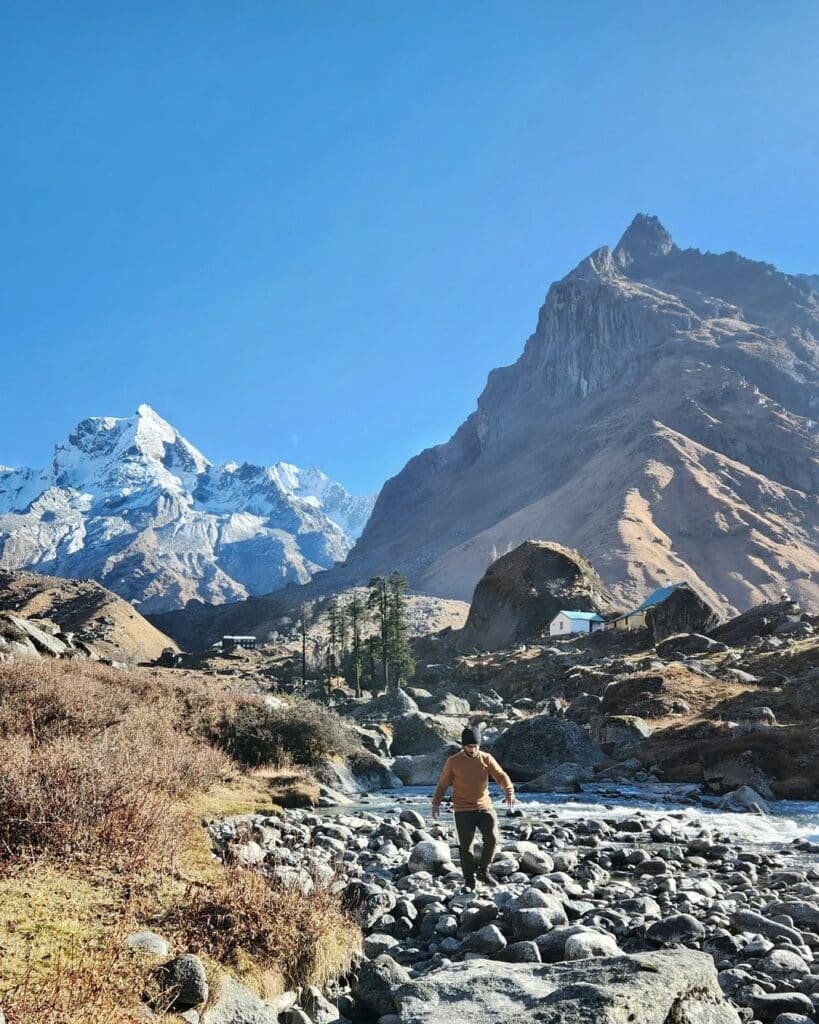
Har Ki Dun trail , revered as the “Valley of Gods,” is an exhilarating trekking experience in India’s Uttarkashi district of Uttarakhand area. Covering a distance of approximately 48 kilometres , it introduces trekkers to a blend of adrenaline-charged exploits and captivating natural splendour. The journey starts from the charming hamlet of Sankri and gradually threads through lush forests, winding rivers, ancient settlements, and stepped agricultural fields.
The path unravels awe-inspiring vistas of the Swargarohini group of peaks and Bandarpunch peaks , letting trekkers bask in the tranquil grandeur of the Himalayas. The trek caters to all, from novices to seasoned trekkers, featuring a easy-moderate level of challenge and reaching a peak altitude of 3,556 meters (11,660 feet) .
The route wends through Govind National Park , a haven of diverse flora and fauna, including numerous uncommon species. The optimal months for embarking on this trek are from April to June and September to December , offering the most agreeable climate.
The trek culminates in the breathtaking Har Ki Dun Valley which is also the catchment area & the major source for Yamuna river . Steeped in Hindu mythology, the trek’s conjectured to be the route the Pandavas took on their journey to heaven. This invigorating journey weaves natural splendour, thrill, and a sprinkle of mythology, securing it as a bucket-list item for any trekking enthusiast.
Trek Difficulty & Duration
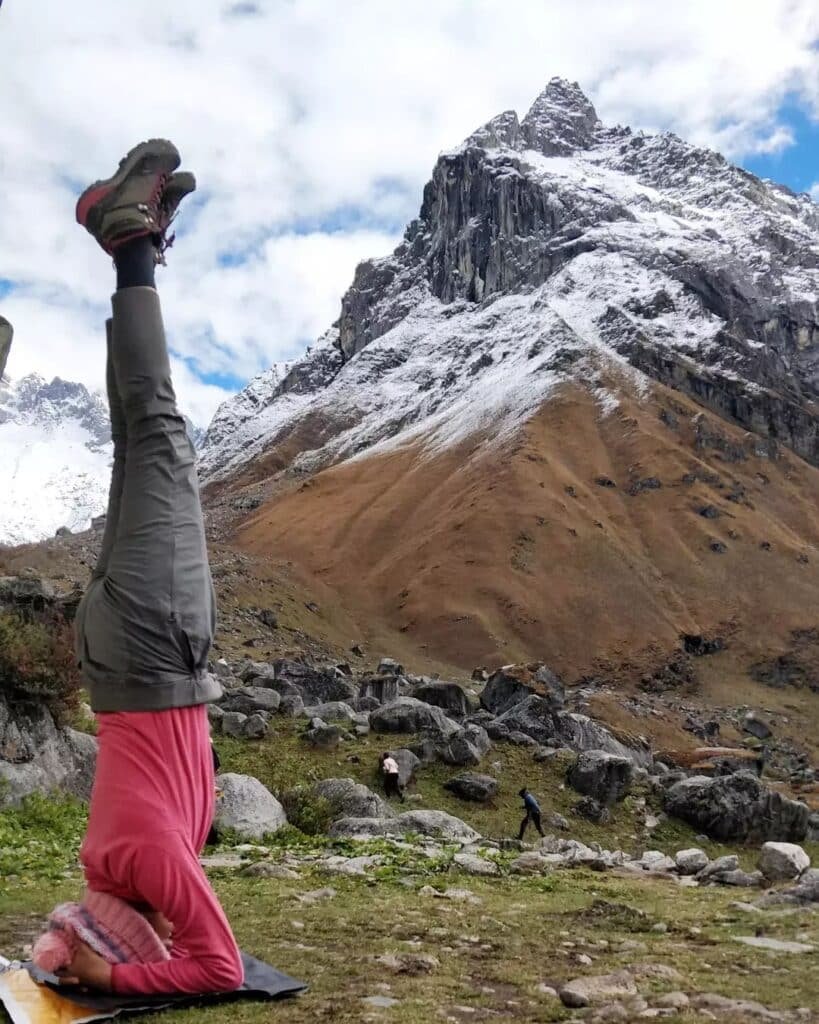
The trek is truly a journey of a lifetime. Generally, it takes about 7 to 8 days to complete, spanning an incredible 48 kilometres of diverse landscapes. Every day, you’ll cover roughly 6 to 7 kilometres , which means you’ll be trekking for about 4 to 6 hours each day – enough to keep you on your toes and give you plenty of time to soak in the vistas.
We won’t sugarcoat it; this trek is labelled as easy-moderate . Some parts are steep, and you’ll regularly climb up and descending down the rugged terrains. Plus, at its highest, the trek reaches a staggering 3,556 meters . It’s a demanding venture, but the breathtaking views and sense of accomplishment are worth every bead of sweat.
Fitness-wise, you’ll need to be in pretty good shape. A month before you head out, start working on your cardio . Run, cycle, swim – anything that gets your heart rate up. Pay attention to strength training , especially your leg muscles, considering the amount of walking and climbing involved.
Finally, remember to acclimatise. Spend a day or two at Sankri , the base camp, before you start the trek. You’ll need that time to adjust to the high altitudes and thin air. Ultimately, the trek is a roller coaster ride that’s not for the faint-hearted but absolutely rewarding for those with a taste for adventure.
Best Season for the Har ki Dun Trek
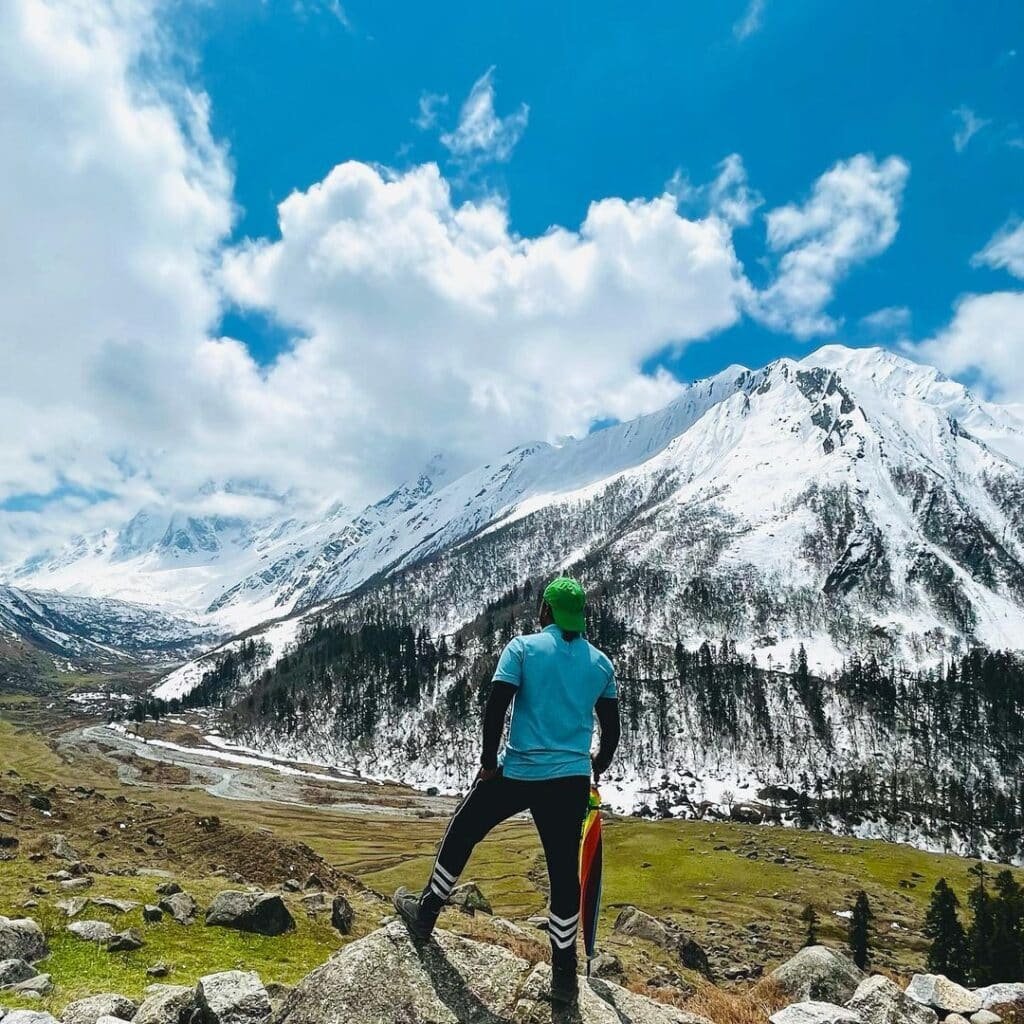
Embarking on the Har Ki Dun Trek is an extraordinary adventure that can be taken up during two distinct seasons, each boasting unique appeal and beauty.
Setting out between April and June , in the summer months, presents a reasonably favourable climate for trekking. Daytime temperatures typically range around a mild 14°C to 16°C . One of the main draws of the summer trek is the chance to witness the valley bursting into a kaleidoscope of blooming wildflowers . However, don’t forget to prepare for the cooler night temperatures, which can descend from -1°C to -5°C . Summer usually lures several trekking enthusiasts, making it an excellent time for those who enjoy bonding with adventurers.
In contrast, Autumn (September to December) carries a unique allure. After the monsoon, the sky becomes clear, revealing crisp, unobstructed views of the majestic peaks . Daytime temperatures during this period hover between 10°C and 12°C . Seeing the trees shedding leaves, creating a warm, autumn-coloured blanket along the trail, is an absolute visual treat. However, brace yourself for the cold nights, with temperatures potentially falling between -5°C to -10°C .
Each season has distinct pros and cons, and your choice should ideally align with your preferences. Whether it’s the summer’s lush wildflowers or the clear, star-lit autumn nights, the Har Ki Dun Trek promises a truly unforgettable experience.
Note: The trek is not accessible during the winter season.
Costing & Budgeting
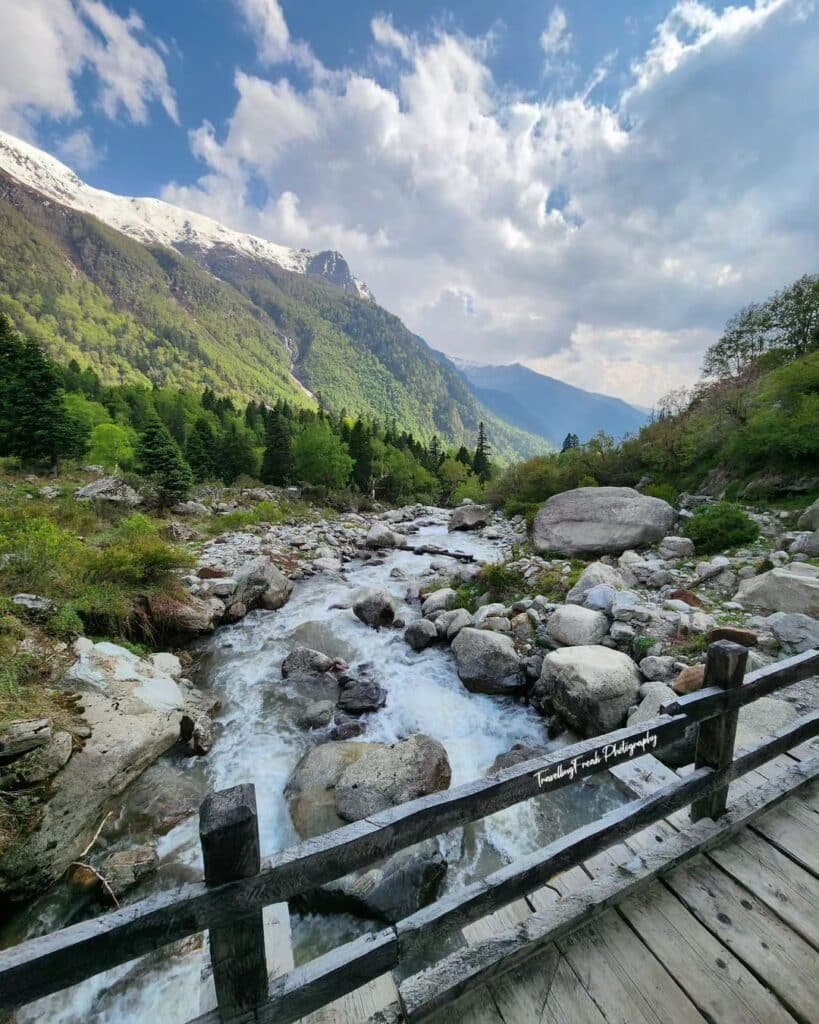
The trek to Har Ki Dun offers an adventure that’s hard to match, and the good news is it doesn’t require you to break the bank.
- Established trekking groups in India typically ask for a Trekking Fee somewhere around ₹9,000 – ₹12,000 . Given that this fee covers a significant chunk of your trekking needs, you’d agree it’s pretty good value for your money.
- Now, reaching Sankri, the kick-off point for the trek, will mean some Transportation costs. You could pick flights, trains, or buses depending on where you’re coming from and what suits your style. Though flights would zip you there fastest, they’ll most pinch your pocket. Trains and buses, however, could be easier on the wallet.
- Refrain from sweating over Accommodation charges during the trek because they’re wrapped up in the trekking fees. Whether it’s the comfort of a tent or a lodge you’ll be staying in depends on the stopovers planned in the trek.
- As for Equipment & Gear , you don’t need to shell out big bucks buying everything. Renting gear like trekking poles, shoes, and rucksacks is a smart move that can save a lot.
- The trekking fee also takes care of your Food & Water during the trek. But it wouldn’t hurt to pack extra munchies and water purification tablets to play safe when hunger strikes off meal times or when you need a hydration boost.
Planning your budget ahead of the trek can set you up for a hassle-free and fun trekking experience. After all, that’s what it’s all about.
How To Reach Sankri
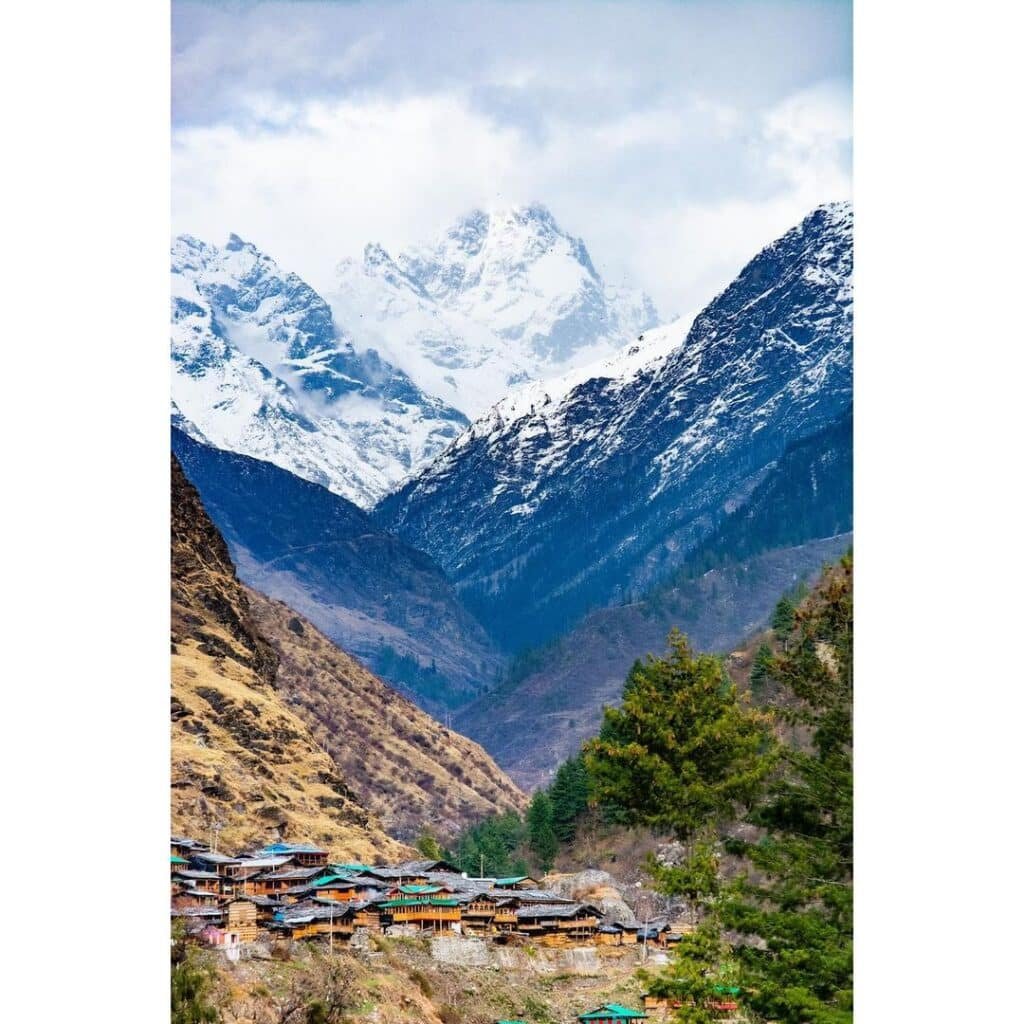
The trek begins with the adventurous journey to the base camp at Sankri . This experience stirs excitement and sets the tone for the incredible expedition that awaits.
- Air Travel:
The vast network of air travel in India brings you close to Sankri. The Jolly Grant Airport in Dehradun is the nearest airstrip, serving as a quick and efficient gateway for trekkers. But remember, the speed and comfort of air travel come at a higher cost. Once in Dehradun, a 200 km journey to Sankri awaits you, usually organised by your chosen trekking group.
- Railway Journey:
For those who relish the nostalgic charm of train journeys, hopping onto a train to Dehradun Railway Station is a fitting choice. Well-connected to various Indian metropolises, trains provide a comfortable and cost-effective travel alternative. The stretch from Dehradun to Sankri, approximately 200 km, is generally handled by your trekking team.
Should your wallet call for a more economical option, taking a bus could be your answer. Regular bus services operate from ISBT Dehradun to Sankri , providing a viable option for those travelling on a tight budget. The comfort level might be less than other options, but the affordability is a plus. Typically, your trekking group takes the ride from Dehradun to Sankri.
Regardless of your chosen mode of transportation, relish the journey and the scenic vistas that come with it. Be it by plane, train, or bus, the final leg of the trip to Sankri promises a burst of excitement, prepping you for the splendid trek ahead.
Detailed Har ki Dun Trek Itinerary

(Drive) Day 1: Dehradun to Sankri
- Distance: Approximately 200 km
- Time: Around 8-9 hours (including drive)
- Highlights: Start your adventure with a scenic drive from Dehradun to Sankri, the base point of the trek. Enjoy the picturesque landscapes, passing through charming towns and villages. Once you reach Sankri, take some time to relax, acclimatise, and prepare for the trek that lies ahead.
(Trek Starts) Day 2: Sankri to Taluka (Drive) Taluka to Pauni Garaat (Trek)
- Distance: Around 12 km
- Time: Approximately 6-7 hours
- Highlights: The trek starts by setting off from the picturesque village of Sankri towards Taluka. The trail leads through scenic landscapes, passing by charming small villages. After reaching Taluka, continue the journey to Pauni Garaat, soaking in the beauty of the surroundings.
Day 3: Pauni Garaat to Kalkattiyadhaar
- Distance: Approximately 8 km
- Time: Around 5-6 hours
- Highlights: Embark on a delightful trek from Pauni Garaat to Kalkattiyadhaar. The path takes you through enchanting forests, with wooden bridges adding a touch of rustic charm. As you trek next to the Supin river, the breathtaking views of the valley unfold before you. Reach Kalkattiyadhaar, a peaceful campsite amidst nature’s wonders.
(Sumit Day) Day 4: Kalkattiyadhaar to Har ki Dun & back to Kalkattiyadhaar
- Distance: Around 10 km
- Time: Approximately 9-10 hours
- Highlights: Brace yourself for the most anticipated day of the trek. Trek from Kalkattiyadhaar to the magnificent Har ki Dun Valley, a journey of approximately 8 km. Marvel at the majestic snow-capped peaks and vibrant meadows that surround you. Explore the ancient temples, immersed in the serene atmosphere. After savouring the wonders of Har ki Dun, retrace your steps back to Kalkattiyadhaar.
Day 5: Kalkattiyadhaar to Pauni Garaat via Osla
- Time : Around 5-6 hours
- Highlights: Begin the descent from Kalkattiyadhaar to Pauni Garaat, retracing the familiar trail. Take in the familiar landscapes and let the tranquil surroundings rejuvenate your spirit. Arrive at Pauni Garaat, where you can rest and reflect on your memorable journey.
(Last Day) Day 6: Pauni Garaat to Taluka and Drive to Sankri
- Time: Approximately 5-6 hours
- Highlights: Bid farewell to Pauni Garaat as you trek back to Taluka. From Taluka, hop on a vehicle that will take you on a scenic drive back to Sankri. Cherish the last glimpses of the breathtaking landscapes as you reminisce about the incredible adventure.
As you embark on this unforgettable journey, watch for significant landmarks such as the village of Taluka, the awe-inspiring Har ki Dun Valley, and the serene campsite at Kalkattiyadhaar. These landmarks are milestones, etching beautiful memories of your trekking expedition in the Garhwal Himalayas.
Highlights of the Har ki Dun Trek
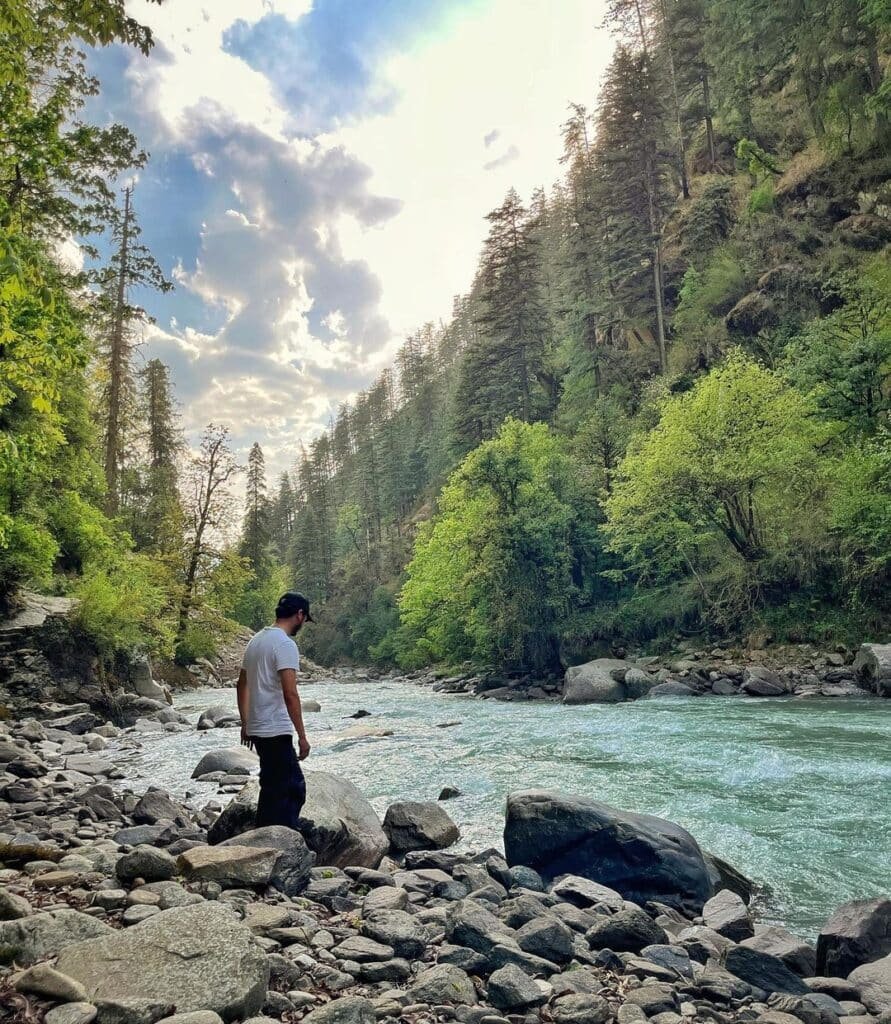
The trek is an incredible adventure that leaves trekkers in awe of its breathtaking highlights:
- Scenic Beauty : Brace yourself for a visual feast! The trek unfolds amidst awe-inspiring natural beauty, with picturesque landscapes, lush green meadows, dense forests, and shimmering streams. The imposing presence of the Swargarohini and Bandarpunch peaks creates a magnificent backdrop that will leave you speechless.
- Har Ki Doon Valley : The journey culminates in the stunning embrace of the Har Ki Doon Valley, nestled among the Garhwal Himalayas. This hidden gem offers an idyllic setting, boasting vast meadows that stretch as far as the eye can see. The panoramic views of the surrounding peaks create a serene ambience, inviting you to bask in its beauty.
- Cultural Immersion : The trek provides a unique opportunity to connect with the local communities residing in remote villages. Engage in heartfelt conversations, witness their vibrant traditions, and experience their warm hospitality. This cultural immersion adds a deeper appreciation and understanding to your journey.
- Mythological Significance : Step into the realm of mythology as you traverse the path believed to be taken by the Pandavas from the Mahabharata to ascend to heaven. Along the way, you’ll encounter ancient temples that carry the echoes of a rich and mythical past. Allow yourself to be enveloped by the spiritual aura of these sacred sites.
- Panoramic Views : Throughout the trek, you’ll be rewarded with awe-inspiring vistas from various viewpoints. The majestic snow-capped peaks, including Swargarohini, Hata peak, Bandarpunch, Kala Nag (black peak), and Jaundha, command attention and leave an indelible mark on your memory.
The trek invites you to embrace nature’s grandeur, immerse yourself in diverse cultures, and seek thrilling adventures. It’s an extraordinary journey that stirs the soul, creating treasured memories of breathtaking landscapes and forging a deep connection with the Himalayas.
Safety Tips & Precautions
While embarking on any trek, safety should always be a top priority. Here are some essential safety tips to keep in mind during the trek:
- Trek with an experienced guide, trek leaders and follow their instructions.
- Stay hydrated and carry an adequate supply of water.
- Pack light and carry only the essential items.
- Dress in layers to adapt to changing weather conditions.
- Respect the environment and maintain cleanliness.
- Inform someone about your trekking plans and expected return.
- Stay updated about weather conditions and local regulations.
- Avoid alcohol and smoking during the trek.
Essential Gear and Equipment
Before embarking on the trek, it is essential to pack the right gear and equipment to ensure a safe and comfortable journey. Here is a list of items you should consider carrying:
- Trekking shoes with good ankle support
- Backpack with rain cover
- Warm and waterproof clothing layers
- Sleeping bag suitable for sub-zero temperatures
- Trekking poles for better stability on uneven terrains
- UV-protected sunglasses and sunscreen
- Water bottles and water purification tablets
- Headlamp or flashlight with extra batteries
- First aid kit with essential medications
- Portable power bank for charging electronic devices
Get ready to embark on an extraordinary adventure through the captivating landscapes of the Har Ki Dun Trek. Every step you take will lead you to breathtaking vistas and unforgettable experiences. Nature’s splendour will surround you, from the majestic peaks of Swargarohini and Bandarpunch to the serene Har Ki Dun Valley.
Immerse yourself in the diverse wildlife of Govind National Park, and embrace the warm hospitality of the local communities residing in remote villages. The mythological significance adds a magical touch to the trek, connecting you to ancient traditions and stories of the past.
As you conquer challenging terrains and reach new heights, a sense of achievement will fill your heart. Let the beauty of wildflowers, cascading waterfalls, and panoramic views leave an indelible mark on your soul.
The Har Ki Dun Trek is not just an adventure; it’s an opportunity to rediscover yourself amidst the grandeur of the Himalayas. So, gear up, embrace the thrill of the unknown, and let this journey redefine your sense of adventure. Get ready to create lifelong memories and forge a deep connection with the majestic mountains that have inspired explorers for centuries.
Har Ki Dun trek is considered easy to moderate difficulty level, suitable for both beginners and experienced trekkers.
The Har Ki Dun trek covers a distance of approximately 48 kilometres in total.
The average trekking fees for the Har Ki Dun trek range from ₹9,000 to ₹12,000. This fee typically includes essential services provided by trekking organisations in India.
Har Ki Dun holds mythological significance and is believed to be the path the Pandavas took from the Mahabharata to ascend to heaven. The trek allows trekkers to explore ancient temples and experience the region’s rich cultural history.
Kuari Pass | Bhrigu Lake | Brahmatal Trek | Sar Pass Trek | Shrikhand Mahadev Trek | Buran Ghati Trek | Bali Pass Trek | Kareri Lake Trek | Rupin Pass | Tarsar Marsar Trek | Goechala Trek
- Uttarakhand
- No comments yet.
Add a comment
Leave a reply · cancel reply.
Your email address will not be published. Required fields are marked *
This site uses Akismet to reduce spam. Learn how your comment data is processed .
- Share via...

Home » Shop » Har Ki Dun Trek
- getting there
- Cost inclusions
- Detailed itinerary
- cancellations
- Har Ki Dun Booking Form
- 1 Week trek
- Easy Grade Treks in Himalayas
- Easy Snow Treks
- Family friendly
- Garhwal Treks
- Spring Treks
- Summer Treks
- Uttarakhand
Har Ki Dun Trek (camping variant):
Below is your complete guide to the Har Ki Dun Trek 2024 in the Garhwal Himalayas, Uttarakhand.
- Fixed group departure tours to Har Ki Dun autumn/post monsoon on 6th Oct and 10th Nov 2024 , starting from Dehradun (7 days).
- Private or customised tours for your friends and family as per your preferred dates. The trek fee will remain the same as listed if you are a group of approximately 10 trekkers.
- We also have the Har Ki Dun homestay variant of this trekking trail for those who like to stay in the village homestays and eat like the locals.
About the trek:
Har Ki Dun Trek is probably the finest river valley trail in India and has never lost its charm to trekkers around the globe. There are many reasons for stating so, though the beauty of the valley in itself is the primary attraction. The change of colours in each season makes this route a year-round choice for nature lovers (except for those monsoon months).
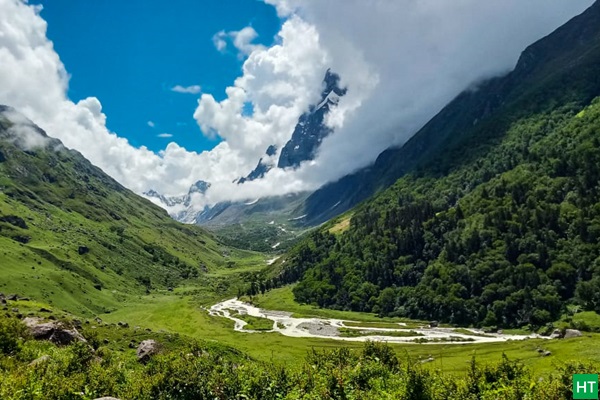
Gentle hike through this wide fertile valley, remote villages enroute, culture and hospitality of the people you can’t miss. It is indeed a lovely walk to the Har Ki Dun valley with fascinating views of Jaundhar glacier and surrounding Swargarohini group of peaks. The views of Swargarohini group, Bandarpunch range and Black peak (Kalanag) are pretty descent to mention modestly.
The walk culminates to a glacier carved spectacular valley, as if an amphitheatre ringed up by high spurs of rocky mountains. The sunrise and sunset at Har Ki Dun needs special mention. Early snow during November and ample amount of residual snow during spring makes this trek a compelling choice. Further exploration towards Marinda Tal/Jaundar glacier will surely ignite the adrenaline in your adventurous mind.
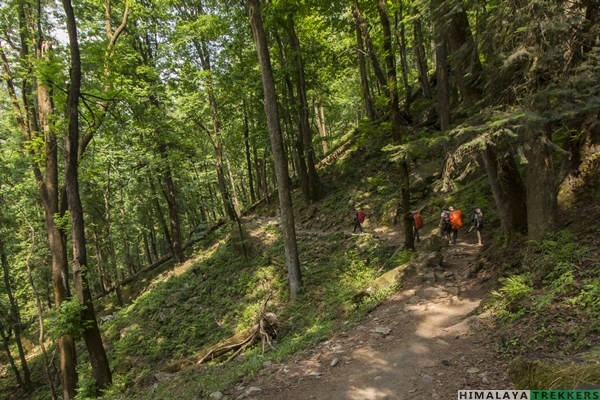
Due to the above facts, this trail is a must to visit for experienced hikers. The easy trail with gentle gradient makes it comfortable to beginners. No wonder that coupled with these two factors it is one of the most popular trek in Indian Himalayas.
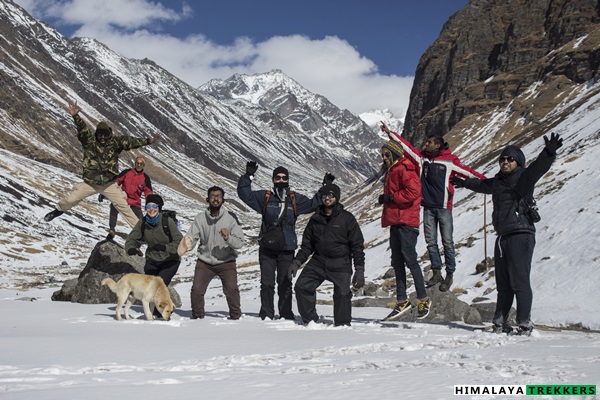
Brief Itinerary:
Day 1: Dehradun to Sankri – 200 Km by car – 9/10 hours. Lodge Day 2: Sankri to Taluka – 11 Km by car – 1 hour – Trek from Taluka to Chilurgad via Gangar – 10 Km – 5 hours. Camp Day 3: Trek to Simatra via Osla/Seema – 11 Km – 6 hours. Camp Day 4: Trek to Har Ki Dun, Exploration around Har Ki Dun and return to Simatra – 12 Km – 7/8 hours. Camp Day 5: Trek down to Chilurgad via Osla village – 5/6 hours. Camp Day 6: Trek to Taluka – 10 Km – 4 hours, by car Sankri – 1 hour. Lodge. Day 7: Drive to Dehradun – 200 Km – 9/10 hours.
Important notes on the itinerary and the tour programme:
- You need to reach on your own to Dehradun on Day 1 morning (latest by 7 am) or the previous night. Return to Dehradun on Day 7 evening (by 7 pm) . Arrange your tickets for inward journey and return from Dehradun accordingly. We will arrange transport to reach Sankri and return although cost is NOT included in the TREK FEE.
- Dehradun airport (Jolly Grant, DED) is
- Last ATM is at Mori, 25 Km before Sankri but don’t depend till you reach here. Withdraw cash well in advance either in Dehradun, Naugaon or Purola.
- Only BSNL and Vodafone network work at trek base Sankri, that too very limited connections. Make a phone call back to home from Mori while reaching Sankri. After Sankri there is no presence of network.
Altitude and distance profile graph for Har Ki Dun trek:
From the below graph you will get an idea of the gradient of the trail. Though the trail length is longer than the usual Easy grade treks but the elevation is gentle as we will be following the river valley.
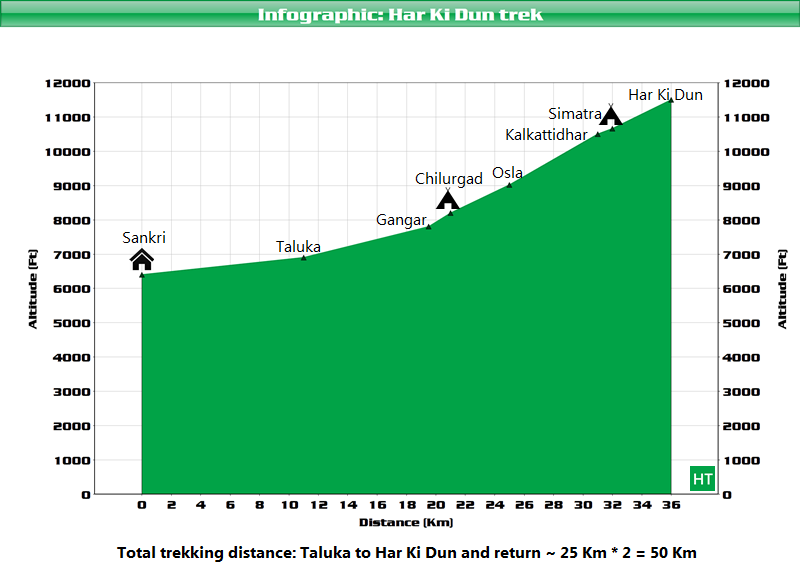
Har Ki Dun valley is on the far western flank of Garhwal in Uttarkashi district (Purola subdivision), Uttarakhand. The trek route lies entirely within the buffer and core region of Govind Pashu Vihar National Park . This catchment area is a major source of Yamuna through its largest tributary Tons river. To note, Har Ki Dun and Ruinsara Nallah form meandering Tamosa river, near Osla village. Tamosa flowing beside Taluka and below the village Sankri unites with Supin near Jakhol. Supin and Rupin combined at Netwar forms the Tons river.
Camping ban at Har Ki Dun
As per Uttarakhand High Court order ( Petition No. : 123/2014 ) , one can not camp on alpine and sub-alpine meadows/grasslands, locally called “Bugyal. Therefore forest department has revoked the permit to camp at Har Ki Dun effective from September’18. Starting from Oct’18, our highest camp is at Simatra after climbing Kalkatti Dhar. From Simatra we visit Har Ki Dun and return to camp for a day trip.
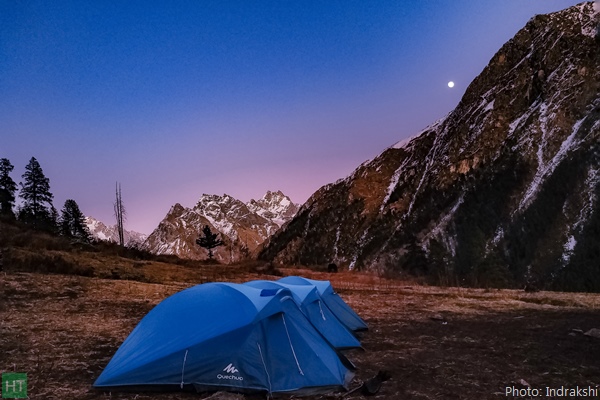
Best time to choose Har Ki Dun trek?
Har Ki Dun trail is truly an year around trek, apart from monsoon season of July/August when it not convenient to trek. Every season has something to offer, which is special on its own.
Note: As of 2019, Forest department is not issuing permit on this trail from December to February. Starting from December 2016, this is enforced considering the corridor of winter migration for wildlife overlapping the trail. At present no permit is given for winter Har Ki Dun trek from December to February .
As said above, this trek is still pretty beautiful in all the permitted seasons. If you are looking for snow, Spring (March/April) is ideal. Amount of residual snow depends on the actual snowfall during winter months though you can be sure to get some or ample amount of residual snow in spring. See more pictures of snow in 2019 update at the bottom of the page.
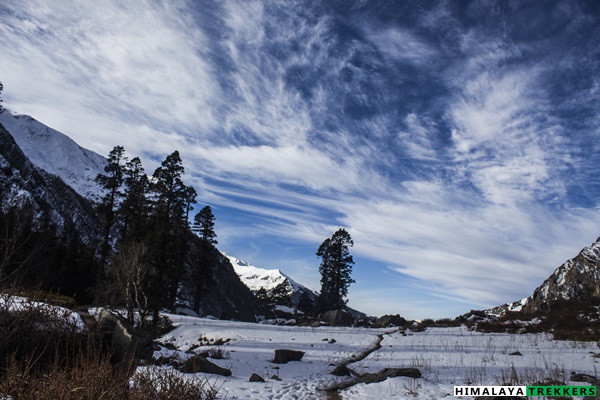
From May onward during the summer time, the valley turns into green, bright and luminous. Blue Pine, Deodar (Himalayan Cedar), Kharsu (Oak), Spruce, Silver Fir and Birch trees are lush and glossy green. Due to the heat glaciers melt faster and pour more water to the tributaries on Tons river. Day time temperatures are warm to pleasant and nights are cooler. If you don’t like cold atmosphere, certainly this is the season to choose.
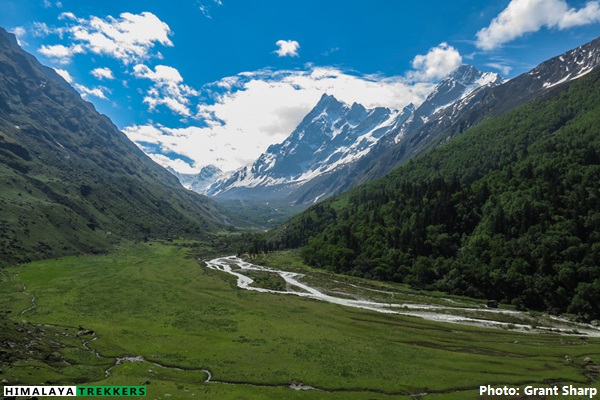
After monsoon is over by end of August, the valley remains lush green throughout September. As the fall approaches, slowly the grass turns into pale yellow. Maple, Chestnut, Walnut and other deciduous tree species take the autumn leaf foliage. The surrounding transformed into spectacular yellow, orange and bronze hue. Not only foliage but an early snow fall chance during late autumn is another basis that you choose this season.
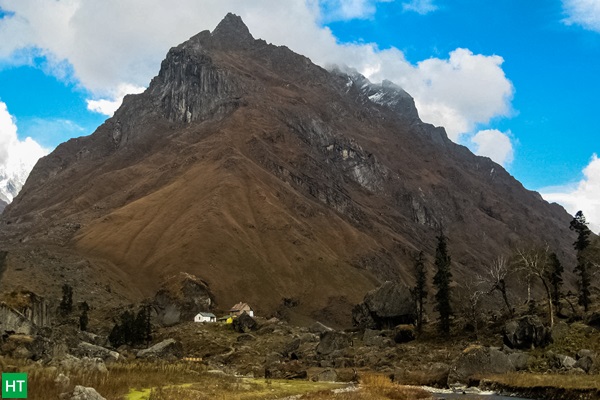
As you see, it is up to you to choose the best suitable time to trek in this beautiful valley. Its a beautiful route all around the year.
Interior villages, native people and culture during Har Ki Dun trek:
In recent days it is not common on Himalayas that you need to walk a full day to reach the last village on a trail from nearest motorable road. The trail starting from Taluka village extends the opportunity to see interior villages like Gangad, Powani and finally Osla. Neatly wooden crafted houses and dress of the local people resemble the neighbouring Kinnauri culture of Himachal Pradesh. Parents who are keen to initiate hiking and outdoor experience to kids on the Himalayas, this route is indeed a chart topper. If you are more keen on this type of interaction, check our Har Ki Dun in Gangar and Osla homestay .
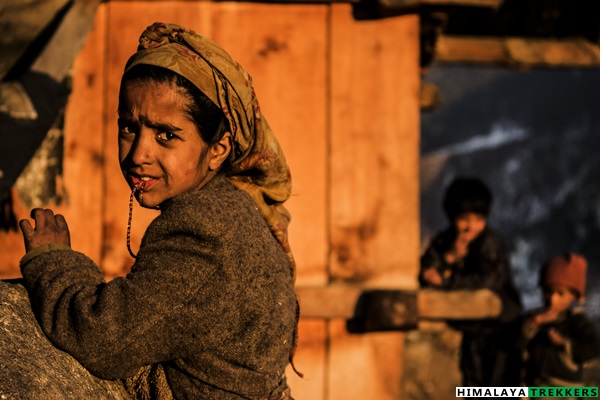
Osla temple and legends of Pandavas:
Starting in 1980’s some books/reports referred the temple at Osla village as “Duryodhana” temple. Even till date on most websites it is portrayed that Mahabharata character Duryodhana is worshipped here. The proposition is indeed interesting but this may not be the case. This is a Someshwar temple and an adoration of Lord Shiva. Till date a festival along with a two week long Mela (a village fair) is organised during monsoon in month of Sawan worshipping the idol/Doli. The Doli moves from one village to another, seasonally.
Also few websites point the trail as the legendary path taken by the Pandavas to the heaven. Swargarohini peaks don’t have any connection to Swargarohini glacier, a.k.a Satopanth Swargarohini trek route which starts from Badrinath and far away from this region.
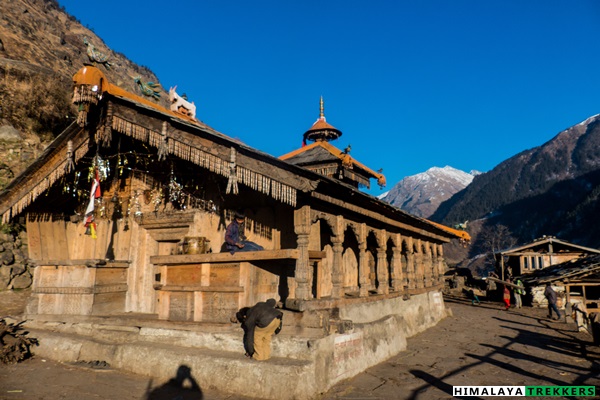
Har Ki Dun trek temperature range:
Summer (May/June): Day time weather remains warm, specially if it is sunny and scorching and can go as high as 25/30°C. Night/early morning temp at Har Ki Dun can be around 10°C to 5°C.
Fall/Autumn (Oct/Nov) or Spring (Mar/Apr): From October temperature starts cooling down. At Har Ki Dun temperature can plummet to freezing in the night/early morning. Be prepared for 0°C. Expect similar temperatures if you trek during spring.
Winter (Dec/Feb): In Dec the daytime temp remains cool and nights are cold. Night temp at Sankri, Seema and Har Ki Dun can be around 2°, -2° and -5°/-10° C.
What type of clothing should I bring for this trek?
It is important to carry proper clothing on this trek. Three layers of clothing are recommended at the campsite in the early morning or evening while you are outside your tent.
- Base layer (moisture-wicking layer; use synthetic and avoid cotton): A quick-dry base layer (dry-fit t-shirt, half or full sleeves) & trekking pants (synthetic, preferably quick-dry, and some wind- or water-proof material is useful)
- Mid layer (warm clothing): Usually a warm jacket (synthetic, hollow fibre, fleece, or down jacket, etc.), but you may use combinations of layers as well (e.g., a light jacket + hoodies + a sweater or a thermal, which you may already have with you).
- Outer layer (weatherproofing): a windproof and waterproof jacket with a hood is best, or a poncho or raincoat.
Note that we don’t have any gear renting facilities, although at some bases, you may get a few on the spot. You may read our opinion on whether should you buy or rent your trekking gear to get a broader understanding.
Check a comprehensive List of things to carry in a himalayan trek or download the PDF. Also read how to choose right trekking gear before purchasing any gear.
Access to Har Ki Dun trek base Sankri:
We may arrange a pickup from Dehradun to Sankri and return. This will be on a cost to cost basis and shared by the availing team members. You pay directly to the driver, sharing equally. The fare is ₹ 6000 for a Tata Sumo, one way and can accommodate 5 to 6 people. Whereas a Tempo Traveller charges ₹ 900 (10 to 12 seats) one way. Approximately, ₹ 2000 per person when you avail both ways. This cost is not included in the TREK FEE.
Or else you may reach Sankri independently and join us here. Here is a road map with major points en route to Sankri.
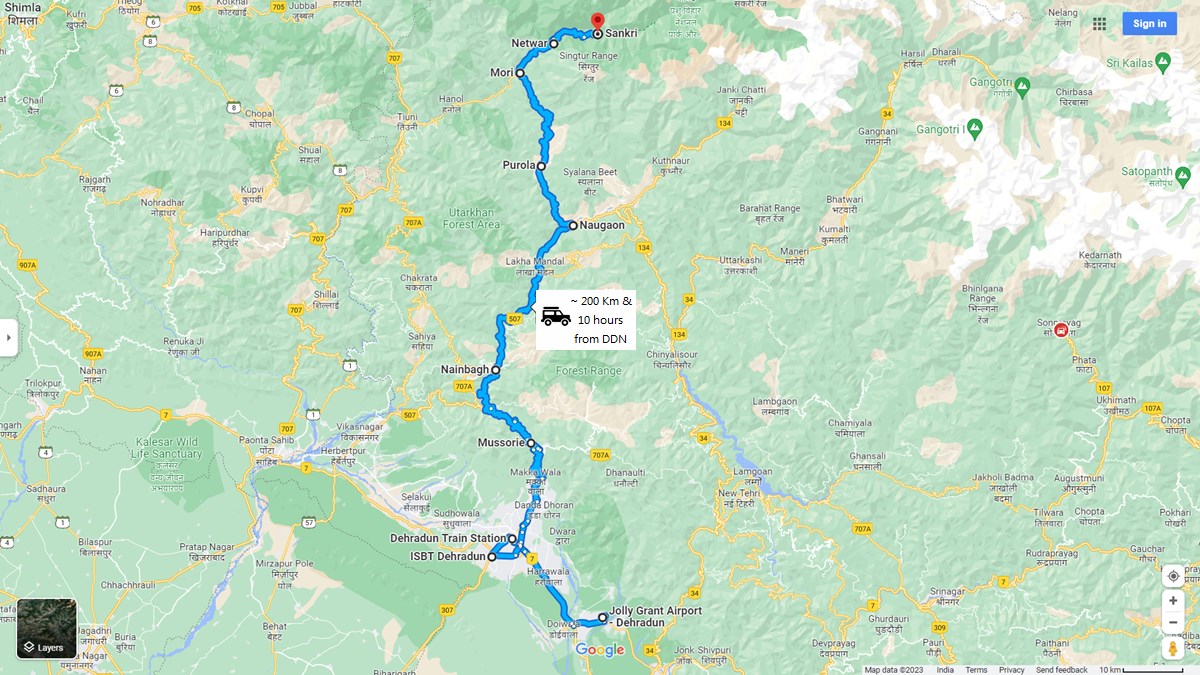
Updates from Har Ki Dun trek Spring/Summer , March to May 2019:
Finally spring has arrived on mountains. As you may know by this time that, last winter was harsh, accompanied with consistent snowfall. This area is westernmost part of Uttarakhand, bordering Himachal, and receives more snowfall than other similar routes. Frequent snowfall took place as late as beginning of March. We hope that the trail will open by mid of April, after some snow slogging and you will get residual snow at Har Ki Dun, as late as May.
Here is our first team of the season reaching till Kalkatti Dhar on 22nd March’19.
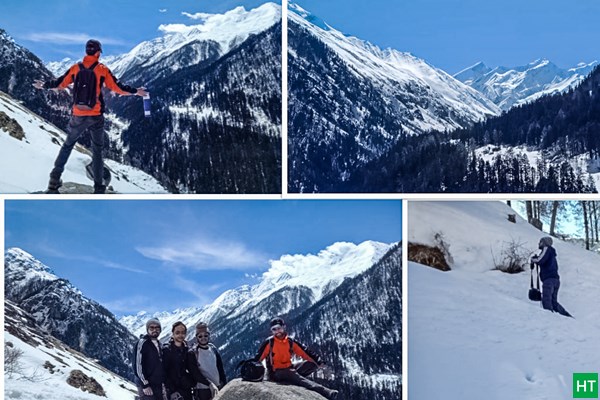
From mid April teams have started reaching Har Ki Dun comfortably. Below are the most recent pictures from our teams. We are hopeful that you will get scattered snow as late as mid/later half of May.
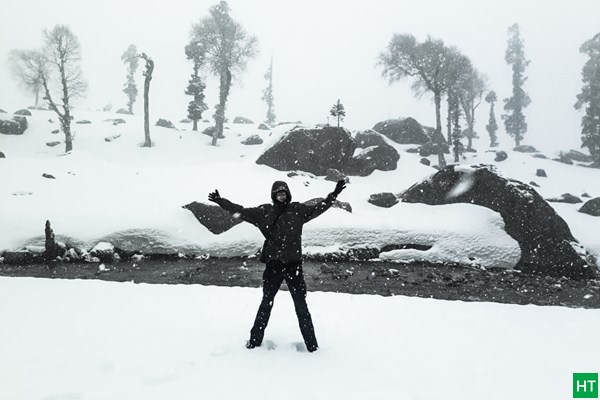
Why treks with HT?
Duration: 5 days of trek; Walking to Har Ki Dun, exploration and return. Dehradun to Dehradun in 7 days.
Prerequisite: Ideal first Himalayan trek with basic physical fitness.
Grade: Easy
Physicality: 5.5/10
Trail Length: 50 Km
Highest Point: Har Ki Dun valley ~ 3500 m/11500 ft.
Seasons: March to June (snow) and September to November.
Further Option: Continue to further north and cross Borasu Pass to reach Chitkul on Baspa valley in Kinnaur. (Difficult grade trek). Explore Jaundhar glacier (2 days side trip)
Access: Trek starting point and end point is Sankri.
Rail station: Dehradun (STN Code: DDN)
Airport: Delhi; Jolly Grant in Dehradun (Airport Code: DED)
Upcoming scheduled dates for Har Ki Dun trek:
- You can check the scheduled Fixed Departure dates in the calendar available inside Booking Form or inside REGISTER NOW form. Tour starting Dates are highlighted as per our itinerary ( Day 1 of 7 days itinerary ).
- At present BOOK NOW functionality is disabled . You can get all the information in your email by submitting the REGISTER NOW form.
- If you are a group of people and available dates are not matching then you may select Custom date mode (by clicking the Select your custom date) and fill in the displayed form.
- You can also check all the available dates at a glance in our TREK CALENDAR .
- Trekkers need to reach Dehradun on Day 1 morning (latest by 8 am) or the previous night. Return to Dehradun on Day 7 evening by 7 pm. Arrange your tickets for inward journey and return accordingly.
How to reach Sankri (The trek base):
Nearest Rail station: Dehradun (Station Code: DDN)
Nearest Airport: Delhi, Jolly Grant in Dehradun (Airport Code: DED)
Based upon your request we will arrange a pick up and drop from Dehradun to Sankri and back. This will be shared equally by the team members on actual basis. You pay directly to the driver/transporter. The fare is Rs 5500 for a Tata Sumo/Mahindra Maxx one way. This can accommodate 6 to 8 people. A Tempo Traveller charges Rs 9000 (12-14 seat) one way. This is NOT included in TREK FEE and to be paid directly to the driver/owner.
If you wish to reach our Trek Base Sankri on your own by public transportation:
- There are 2/3 privately operated buses from Dehradun (near DDN railway station on Gandhi road) To Sankri. The 200 Km journey will take around 10/12 hours. The busses start at 5:30/6/7 am.
- While returning from Sankri take the morning bus to Dehradun/Vikasnagar and reach by 7 pm.
How to reach Dehradun:
For the treks at Uttarkashi district in Garhwal , one has to reach the capital city of Uttarakhand, Dehradun, specially the trek starting from Sankri, Yamunotri etc. Haridwar, Rishikesh and Dehradun are 3 nearby cities in the area and one can move from one to another by public vehicles like bus or shared Jeeps.
For more options to reach Haridwar you can check here .
Haridwar to Dehradun: 55 Km and may take one and half to 2 hours.
Dehradun to Rishikesh: 45 Km and may take around one and a half hour.
You can fly or by train reach New Delhi as per your convenience from any part within India.
There are direct trains from Kolkata to Dehradun.
KUMBHA EXPRESS – Train No. – 12369 ( Very good option to reach Haridwar by 5 pm; You can take a bus from the terminus just opposite to the railway station referred as Roadways bus stand/ISBT and reach Dehradun in one and half hour. Spend the night in Dehradun and start your onward journey by car next morning.)
UPASANA EXPRESS – Train No. – 12327 ( Very good option to reach Dehradun directly by 5 pm; Spend the night in Haridwar and start your onward journey by car next morning)
DOON EXPRESS – Train No. – 13009 ( Don’t book this train when you plan a long onward journey immediately in the morning)]
Avoid booking wait listed (WL) tickets in AC classes (1A/2A/3A) or Chair Car (CC). Book Sleeper class (SL)/Second Sitting class (2S) tickets which have normally more seats/berths and hence much better chance to get confirmed.
You can reach Dehradun easily from New Delhi by train or bus (~ 6/7 hours) and is around 260 Km.
Following trains are good to reach Haridwar and run daily.
DDN JANSHTBDI – Train No. 12055 (Arrives DDN in the evening @ 9:10 pm, good choice when you stay the night in Dehradun and have a long drive ahead next day) NANDA DEVI EXP – Train No. 12205 (arrives DDN early morning @ 5:40 am)
Always avoid booking waitlisted (WL) tickets in AC classes (1A/2A/3A) or Chair Car (CC). Book Sleeper class (SL)/Second Sitting class (2S) tickets which have normally more seats/berth and hence much better chance to get confirmed.
Govt. Road Transport (Roadways of Uttarakhand, Uttar Pradesh, Delhi, Haryana, Punjab etc.) buses are frequently available in day time and night from Kashmiri Gate ISBT ( http://www.delhi.gov.in/wps/wcm/connect/doit_transport/Transport/Home/ISBT/Fare+Chart ). Tickets are available on board for these regular type buses. From Delhi Airport or Station you can reach ISBT Kashmiri Gate via Delhi Metro service ( http://www.delhimetrorail.com/metro-fares.aspx ). It is only 4 Km from NDLS and can be reached easily by booking an auto rickshaw.
For privately operated bus, you can book online from different portals. Select a boarding point suitably. Overnight Volvo/A.C/Push back buses are available. Normally these buses take up to 7 hours to reach Dehradun ISBT. You can book an auto rickshaw for Railway Station (5 Km away)/Hotel Drona (GMVN) or take a shared auto (Route No. 5) from ISBT.
[There are two major bus terminus in Dehradun. The buses from Delhi/Haridwar goes to the ISBT (Inter State Bus Terminus) and the other one is the Parvatiya Depot (Hill Depot, from where you can get the buses going up the hills like Uttarkashi, Barkot, Purola etc) located just beside the Railway station.
Nearest Airport Jolly Grant is 25 Km away from Dehradun. book a private taxi to reach Dehradun city. This airport is accessed from Dehradun, Haridwar and Rishikesh easily. The flights are mostly via Delhi.
For night stay in Dehradun:
Trekkers reaching on the previous day before the journey to the actual trek base need to stay the night in Dehradun. There are several options in Dehradun for spending a night while staying in Premium, Standard or Budget accommodation. Options vary from Privately operated Hotels/Lodges, to state run Tourist Rest Houses.
State run GMVN (Garhwal Mandal Vikas Nigam) operates Hotel Drona complex is 10 minutes walking from the railway Station. You can book an auto rickshaw. From ISBT it is around 5 Km. You can book an auto rickshaw to Hotel Drona (GMVN) or take a shared auto (Route No. 5) from ISBT (Inter State Bus Terminus). This is a reliable and a decent choice for Standard accommodation. The have restaurant and room service. Check the following for online booking of the above: http://www.gmvnl.com/newgmvn/tour/booktrh.asp You can call or visit GMVN nearest office or even send an email for more information.The information is available at: http://www.gmvnl.com/newgmvn/online_reservation/#
Return from Dehradun:
Normally you reach Dehradun from any trek base by 6/7 pm in the evening. You can take any train after 9 pm or regular bus service as mentioned above to reach Delhi or directly to your homeward journey in the same night.
TREK FEE: ₹ 12,950 (Sankri to Sankri) + 5% GST
Inclusions:
2 night’s accommodation at Sankri (Day 1 & Day 6) in lodge on triple sharing basis and dinner. Men and women will be given separate rooms in Fixed Departures.
Car drop from Sankri to Dhatmeer (trek starting point) and return.
All meals during the trek (Day 1 dinner to Day 6 dinner, B, L, D) . Regular Indian style nutritious vegetarian food during the trek (including occasional eggs), breakfast packed or hot lunch (depending upon the time you reach a campsite), (light refreshments in the evening), dinner by 7:30-8 pm. Morning and evening tea.
Excellent Trekking Guide, who will be a local to this particular area and has profound knowledge of the trekking trails around.
Cook and support staff, Porters and packed animals for carrying the central logistics of the trek.
Stay in tents on twin sharing basis during the trek.
Camping equipment like Sleeping bag, Carry mattress, Gaiters, Micro spikes/Crampon. (Bring your own sleeping if you have a high altitude specific personal Sleeping Bag. This is always better for hygienic reasons.)
Kitchen tent, dining tent and toilet tent as required during the trek.
Any entry fee, camping charges, forest levy required for the trek.
Basic Medical & First Aid kit.
Travel cum Medical Insurance Policy covering high altitude trekking tours (For Indian nationals it is included in the TREK FEE, up to 60 years of age). It covers your trek as well as your return journey to Dehradun, i.e. 7 days itinerary.
Exclusions:
Transportation from Dehradun to and back. ₹ 6500 for a Tata Sumo and ₹ 10000 for a Tempo Traveller. (approx. ₹ 1000 per person one way for the pick up and drop when shared with fellow trekkers, payable directly to the driver.)
We assume that you will carry your personal rucksack or backpack with all your personal belongings. If you want to offload your rucksack and be carried on a horse, then you need to pay an additional ₹ 2000 for the entire duration of the trek (5 days). The rucksack should not weigh more than 10 kg.
₹ 3000 + 5% GST per person additional charge for foreigners towards various permits/entry tickets/levies and simple english speaking guide.
Any tip/gratuity to the HT support staff.
Anything that is NOT mentioned in the “Inclusions” or personal in nature.
Drive to Sankri: 200 Km - 10/11 hours
Pickup in the morning from Dehradun and reach Sankri (~ 1900 m, 6230 ft) . Distance around 200 Km and can take 9/10 hours. The road is one of the most scenic in Garhwal region while we go up to the classy hill station of Mussoorie at the beginning, turquoise Yamuna river in the middle and conifer forests of blue pine and meandering Tons river at the later half of the journey. The major points are Mussorie, Yamuna Pool, Damta, Nawgaon, Purola, Mori and Netwar. Mori is the last place from where you can get a confirmed mobile phone network and also has a SBI ATM . Though Sankri has a BSNL tower but network doesn’t remain most of the time! After crossing Netwar we reach the check post of Govind Vanya Jibh Vihar (Govind National Park) from where the permits need to be obtained. Sankri has few private lodges and a GMVN operated Tourist Rest House (TRH) and couple of basic restaurant to serve food. Night stay in lodge/homestay.
Drive to Taluka: 1 hour; Trek to Seema: 14 Km - 6/7 hours
Wake up early in the morning to see the first sun light on Sankri. It is a small stretch of Bazaar and the adjacent village. After breakfast we prepare to start our trek. There is a motor able Kaccha road from Sankri to Taluka heading up the valley. The bumpy 11 Km ride takes around 45 minutes to reach Taluka (~2100 m/6900 ft). Our walk starts from Taluka. The camping ground is adjacent to the Forest Rest House. There is a small tea shop at the end of the road and 2/3 very small provision stores. We directly take the stony stair cases to get down almost to the river bed and start walking along the Tamosa river, keeping it on our left (“True Left” of the river). It is an easy gently walk gradually moving up the valley. Snow is encountered at patches where sun doesn’t get a chance to enter for longer duration. After walking for an hour we cross a side stream and move on to an flat opening on the left hand of the trail. Local people are seen in an interval with heavy loads on their back aiming to stock provisions for long winters. There are few villages in this valley like Datmir, Gangar, Powani and Osla, the last one being the farthest. Walking along the valley in the shades of conifer and occasional snow patches for 9 Km, we reach a side stream and cross the bridge to get on the main valley again. This place has also a bridge on the Tamosa river and the Village named “Gangar” is mostly on the other side of the river. From here we continue our gradual walk for another hour to reach an opening with a new concrete construction for a proposed school. A bridge on Tamosa is built here to reach the village of Osla. We keep our track while the river is on our left and walk another hour inside a sun shed thick forest to reach Seema (~2500 m, 8200 ft). The last stretch remains snowy in winter and avoid slush. One GMVN TRH and a Forest Rest House along with a solitary private Dhaba (Opens from Jun till Oct) to serve food. Prior booking of the any of these is highly recommended for trekkers who don’t have camping setup. Camping ground is also nearby. Seema is not a village but only a tourist shelter point. The village Osla is on the other side of the river, almost ~ 215 m/700 ft above the river bed. Total distance is 14 Km and may take 6/7 hours. We camp for the night.
Trek to Har Ki Dun: 11 Km - 5/6 hours
We start in the morning on the stoned trail and reach the suspension bridge at Seema. The trail straight ahead goes to Ruinsara Tal and further to Bali Pass or Dhumdharkandi Pass. Cross the Tamosa river and climb up to reach the trail which is going along the river upstream. From now onward the river will be on our right (“True Right” of the river) and we gradually go up to reach a vast green expanse which is a huge clearing for farming by the people of Osla. From here the peaks facing north and north east opens up and the views of Banderpunch group and Swargarohini group are breathtaking along with Black Peak (Kalanag). We gradually skirt the mountain for another hour to reach the base of the steady climb to Kalkatti Dhar. From here we can see the Ruinsara valley takes a right turn , while we take a left turn. Har Ki Dun Nallah and Ruinsara Nallah meets below Kalkatti Dhar to form Tamosa river. It is normally windy while we climb to Kalkatti Dhar. After reaching the the highest point on the shoulder of the mountain we turn left and gradually go down. First time after Seema we again enter into the forest and descend steadily to a side stream. In winter the waterfall remains frozen. This is a good place to have lunch. From here we gradually climb in to a forest canopy of Silver Fir , Cedar and Oak. Crossing the forest we enter in to the wider valley with occasional Birch ( Bhurja Patra in Hindi) and Rhododendrons. The valley is teemed with bird life. Buntings, Flycatchers and Mountain Fiches are abundant. Himalayan Langur and Blue Sheep are common in this valley. There are reported sightings of elusive Snow Leopard in this region. Now the river bed is almost at the same level and Har Ki Dun valley approaches. The camping ground is near the river and several tents can be pitched. Walk another 10 mins to cross the Har Ki Dun Nallah over a small wooden bridge. Forest Rest house (FRH) is a minutes walk from here. GMVN TRH is another 10 mins ahead. It is mandatory in winter to book in advance for any of these huts. Caretaker only comes along with the keys for a prior booking. During summer food is available in GMVN TRH. There are two rooms at FRH and one dormitory at GMVN which can be booked. It is better to come with own tent and provisions in season to avoid any hassle. Total distance is 11 Km and may take 5/6 hours. Average height of the valley is ~ 3500 m/11500 ft. Camp for the night.
Exploration Day towards Marinda Tal or Jamdar Glacier: 8/10 Km - 4/5 hours
Wake up early in the morning to see the sunrise on Swargarohini group of peaks. Changing colour is magnificent to watch and unforgettable. The Forest Rest House (FRH) is located some what centrally in this vast expanse of the valley. Heading straight from FRH is Har Ki Dun peak. On the right towering Swargarohini and to the left is Hata peak. Two streams are coming from two different directions, one from Jaundar glacier and other from Borasu pass watershed to Har Ki Dun and forming the Har Ki Dun Nallah. Har Ki Dun is a big enough valley sitting in the middle with forking of trails in different directions. Treeline recedes here in all directions. Today is an exploration day amidst snow or simply one can sit back at the campsite and relax while sipping a cup of coffee. After breakfast one can either go to explore the Jaundar glacier or to Maninda Tal area, which are on different directions. The snout of Janudar glacier is 8 Km from Har Ki Dun. The trail is not defined and on snow, boulder and moraine, involving descent and ascent. It is pretty difficult to reach the snout of the glacier and return to the campsite in a single push. A camping is required in between. It is advisable to venture and advance in this direction only till noon and retrace back by 3 pm. On the other hand, Maninda Tal is about 2 hours walk from Har Ki Dun and is in the route towards Borasu Pass trail which connects this valley to Baspa valley in Kinnaur, Himachal Pradesh. The area is a shallow formation of clogged water resulting from a flattened bed of the stream. The valley heading upward looks splendid from here. Lammergeier and Himalayan Griffons encircle the valley surrounded by rocky cliffs. Pug marks of Snow Leopard following a flock of Bharal (Blue Sheep) is common. Return to Har Ki Dun by lunch time and take the hot lunch prepared freshly. From the FRH cross the wooden bridge on the Har Ki Dun Nallah walk toward the camping ground in the afternoon. Kedarkanta peak is clearly visible and the highest point in this direction. Sunset is mesmerising , reflecting the last rays of sun on Har Ki Dun Nallah and peak. Changing golden hue makes any trekker a spellbound spectator. It is a good idea to collect firewood to setup a fire in the night. This is already a fragile ecosystem, so ONLY collect branches and twigs which are already fallen from the trees. The FRH has a fireplace inside. Nights are pretty cold here and the temperature can plummet to -10 deg C outside the night in winters. Night stay in tent.
Trek to Osla/Seema: 11 Km - 5 hours
Today after breakfast we start our return journey toward Seema. It is a gentle descent along downstream till we reach the waterfall which remains frozen in winter. From here we climb up to Kalkatti Dhar and descend gradually to the vast crop field. Approaching the Seema bridge, we take the trail straight heading toward the village Osla, instead of directly going down to Seema. It is a memorable experience to visit a village like Osla, nestled on the lap of mountain. The houses are mostly build of wooden structure with slate as the roof. Houses are two storied, lower being the cattle shelter and firewood/fodder store, upper being the residence of the family. Though few satellite TV dishes are present on top of few houses but the village lacks very basic facilities. A satellite phone is available to connect to the outer world. One can make a phone call to home by paying nominal charge, if a connection is available. The village is spread along the slope of the mountain and a temple is the heart of the village. Wood crafted temple is more than a century old. It is a legend that Duryodhan, the eldest brother of the Kauravas is worshipped in this temple. The deity of the temple resides at different temples of the villages of this valley, turn by turn. The rule being same across the Himalaya, summer is higher, and winter is lower. It is a chance to meet local children and people, knowing their livelihood, custom and culture, social structure. It is worthwhile to spend some time with joyful kids in the village. After spending some time in the village we take the trail down toward the Seema bridge and by crossing the suspension bridge we reach Seema. Night accommodation in tent.
Trek to Taluka: 14 Km - 6/7 hours; Drive to Sankri: 1 hour
We retrace our trail back to Taluka. From here take the car to reach the trek end point Sankri. Night stay in lodge/homestay.
Drive to Dehradun: 200 Km - 10 hours
In the morning we start our return journey and reach Dehradun by 7 pm. Trip ends here.
P.S.: Distances and altitudes are approximate and may not be exact.
- We assume that you have read and understood our “Terms & Conditions” ( https://himalayatrekker.com/terms-and-conditions ) before Booking a trek/tour.
- To reserve your place in a scheduled Fixed Departure trek or a Customised/Private trek pay 25% of the TREK/TOUR FEE as the initial “Booking Deposit” . You can pay by Net banking/Draft/Cheque/Credit/Debit/AMEX cards. This will ensure your participation in the desired trek and we will reserve your place in the scheduled date. You need to pay the remaining amount at least 15 days before Trek Starting Date .
- If you book a Trek/Tour before 14 days or less from Trek/Tour Starting Date, you need to pay the full TREK/TOUR FEE .
Cancellations:
- “Booking Amount” i.e. 25% of the TREK/TOUR FEE is Non-Refundable at any stage.
- If in case you are not able to make it due to unavoidable reason(s), we provide you a very flexible choice of Shifting to another trek within next one year . One year is counted from the starting date of the trek/tour you booked initially with us.
- In case you postpone your trip you need to inform minimum of 15 days before the trek/tour starting date. (Though we suggest to inform us earlier if known)
- In case you postpone a trek/tour before 15 days of the scheduled Trek/Tour Starting date or prior , you may shift to another group of the same trek/tour scheduled in the same season or within next one year. You may shift to another suitable route also. For changing any, you need our approval first. Your request must be in written communication through your registered email with us.
- If you cancel/postpone a trek/tour from 14 days to 8 days before tour starting date , your Booking Amount is Non-Refundable. We will not take any request of shifting dates. We will charge 50% of the amount as Cancellation Charges and process refund of remaining 50%. You may also shift to another group within next year but 25% Booking Amount will be deemed as Cancellation Charge and the rest amount will be transferred to the shifted group.
- If you cancel a trek/tour 7 days (i.e. a week) before Trek/Tour Starting Date or later , there will be NO REFUND.
- In case of any unforeseen incident including but not limited to natural calamities like flood, earthquake, landslide, forest fire or any political unrest, if we are compelled to cancel the trek/trip, you will be entitled to redeem the full amount for the same/similar kind of trek/trip within next one year.
If you need more clarifications write in to [email protected]

Tour Reviews
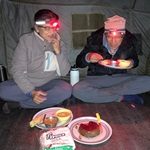
just wanted to let you know that we just got back from our trekking trip. The trip was wonderful and your team took great care of us. We would not have lived through this experience without their kindness and care. I can’t thank them enough. The staff was very good and always on top to please us. Devonder, our guide knew enough English to speak with my husband, and I was able to talk in Hindi with them. So, we were able to communicate well. They cooked a special cake for us to celebrate our wedding anniversary on Sunday
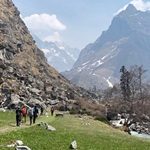
Entire HT team members were professionals in their areas. They started their support from the initial days of our planning (we being first time Trekkers). Well behaved team members acted as a good team, guided & supported us to enjoy our trekking. Excellent experience. All the best to HT Team….
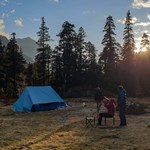
We did the Har Ki Dun trek in November 2019, and it was honestly one of the most amazing experiences we have ever had. The trek itself is beautiful already, but the guides explaining things about the local life and villages on the way made it even better. The food was good, we slept in nice tents and the guides made sure we were doing okay all the time. Overall, a wonderful time spent in one of the prettiest places on our planet!
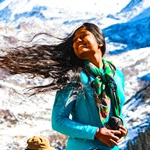
We went for the Har ki Dun Trek from the 18th November. It was really a different experience. We camped for the first time. The arrangements for camping every day was very aptly made by our guides and their helpers. We could survive on such high altitude and low temperature just because of them. The awesome finger-liking food that was made for us and served hot everyday kept us going. Our guides, Rohit and Chandraprakash deserve a special mention and thanks for their continuous support, in literally every step. They made sure none of us have any problem during the trek. Whenever we stopped for sitting down, either to rest every few minutes or to just take photos, they would patiently wait with us. They never rushed us. They guided us very patiently. And as friends. This is our 2nd trek with HT and we are very happy with everything.
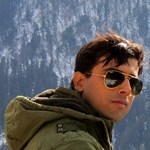
It was my first winter trek so I was a bit skeptical in attending when I cam to know about it from my friend. However, once I enrolled into it, it turned out to be the best experience of my life. Being the only person from North India (actually from West India… :)) in the group of all south Indians and Bengali, I never felt, for a single moment, that I am not part of the group. Jokes cracked, delicious meals eaten, never on time departures, snow clad peaks and valleys, becoming friends with strangers, there are so many things I remember even today. I would definitely like to trek again with HT for their non-formal environment, excellent time management, delicious meal arrangement and guidance…
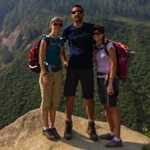
The trekking was amazing, we all very much enjoyed being in the Himalayas, with spectacular scenery and clear air! The logistics and planning were great, it was easy to set it up with you by email, and when we started the trek everything went well. Rajan was an excellent guide, very accommodating and made us feel at home.
Leave a Review
Cancel reply.
You must be logged in to post a comment.
You May Also Like

Dev Kyara Trek
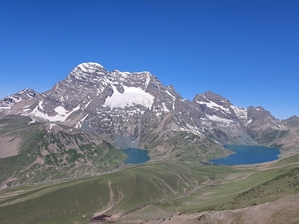
Kashmir Great Lakes Trek
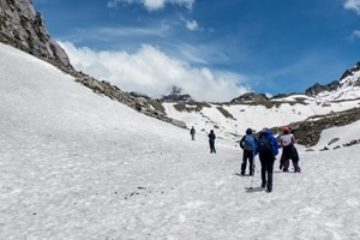
Hampta Pass Trek
Submit this form that we can email you all the necessary details and call you to discuss., tour starting date: green boxed dates indicate starting of a scheduled fixed departure tour (day 1 of our tour itinerary). please check the calendar and choose a suitable fixed departure date (green boxed) unless dates are not matching or you are looking for a customised/private trip., i accept the terms & conditions.
A Complete Guide to Trekking Tours in India
India Tours
International tours, destination wedding, medical tourism, plan your trip.
- Trekking in India
Har Ki Dun Trek
- Accommodation
- Sightseeing
- Trip Highlights
- Best Time to Visit
About Har Ki Dun Valley
With gradual descends and easy ascends, Har Ki Dun Trek in the Garhwal Himalayas is an ideal pick for the beginners. Trek to Har Ki Dun, a valley situated at the base of Fateh Parvat and has mesmerizing views of azure blue skies and a dense forest of chestnut, deodar, and sycamore.
Har Ki Dun is one of the best treks in Uttarakhand that let’s you walk along sparkling, playful, flowering streams and waterfalls and even climb a gentle gradient. With each step, the landscape becomes more spectacular. The hills give way to mountains, and the mountains to giants until the valley opens into a cupped palm of Har Ki Doon.
Due to its good road connection via the Borasu Pass, Har Ki Dun Valley is also considered as the base point of many Himalayan peaks. The maximum elevation of Har Ki Dun Valley is 3566 m and the trekking trail offers the sight of beautiful Bandarpunch, Kalanag, and Swargarohini peaks.
The extravagant nine-day long Har-ki- Dun trek starts from Sankri, a tiny village in the Garhwal Himalayan Range. The trek further continues to Taluka and the side of Rupin River and Supin River, from where the views of the Indian Himalayas are stunning. From Taluka, the trekking trail moves to Osla and one can enjoy the breathtaking view of dense forest dotted with chestnut and walnut trees. From Osla, a steady ascend leads to Har ki Dun. Upon visiting Har Ki Dun Valley, one can explore Morinda Lake, Jaundhar Glacier, and Borasu Pass.
Har Ki Doon Valley Trip Highlights
- Attractions of Har ki Dun Trek – villages of Sankri, Saud, Taluka, Osla and Seema and mountain peaks like Bandarpoonch, Kalanag, and Swargarohini.
- Witness the culture & traditions of the village.
- Explore Jaundhar Glacier and Morinda Lake.
- Camping opportunity.
Best Time to Visit Har Ki Dun
Summer (April to June) & Post Monsoon (September to December) is an ideal time to do this trek. If you are interested in snow trekking then the best time to visit is winters. Climatic conditions in the high altitudes vary from the plains; take adequate time to get acclimatized to high altitudes.
You can expect pleasing weather during the summer season. Usually, there is no fog and sky remains clear most of the time. If you are planning a trek in summer season then don’t forget to carry light woolen clothes as temperature remains low during the night.
Sankri: 5°C Seema: 1 to 2°C Har Ki Dun: (-1° C) to -2°C
In Monsoon:
During the monsoon, the trekking trails remain more prone to landslide. Roads remain blocked, but the scenic beauty is worth all the risk.
Serenity and solitude are at its best during winters at Har Ki Dun Valley. The region is blessed with snowfall during winters and the accommodation options also few. If travelling during the winter season then don’t forget to carry warm clothes, jackets, raincoats, fleece jackets and thermals.
Sankri: (-1) °C Seema: (-3) °C Har Ki Dun: (-15) °C to (-10) °C
Where is the Har Ki Dun Valley?
Har ki Dun is a cradle shape hanging valley nestled below the Har Ki Dun peak, towards the western side of the Garhwal Himalaya. At an elevation of 3556 meters, Har ki Dun valley is accessible through Govind National Park– known for its rich variety of flora and fauna. The trekking trail passes through dense forest sprinkled with chestnuts and walnuts trees along with willows and Chinar, glaciers basins, pine forest, spectacular ancient villages, and a chance to experience the wonderful slow-paced local lifestyle.
Har Ki Dun Trek (Detailed Itinerary)
Delhi – dehradun – mussoorie, other benfits (on arrival).
- Stay Included
AC train from New Delhi railway station will arrive at Dehradun by noon. On arrival, you will meet your travel guide, who will transfer you to the hotel in Mussoorie for an overnight stay. During the drive, you can enjoy the majestic beauty of Dehradun and Mussoorie.
Mussoorie – Sankri (166 kms/ 5-6 hrs)
After breakfast, on the second day, you will drive to Sankri, which is starting point of our trek. On a journey to Sankri, you will pass through attractions like Kempty Falls, Purola and Mori. Before embarking on the trek, ensure that you have enough of bottled drinking water and energy bars to keep you going. After your arrival in the vicinity, you will check in a hotel or tourist rest house.
Sankri – Taluka (1900 m/6232 ft) 14 kms/4-5 hrs
The day will start with healthy breakfast and then go for a drive to Taluka, which is 14 km/4-5 hours away from Sankri. During the drive, one can witness the magical beauty of the surroundings and also enjoy the stunning views of the towering mountains and dense forest. You will be transferred to a hotel, once you will arrive at Taluka. Taluka has guest houses and a few shack shops providing daily provisions to the local inhabitants. Overnight in tourist rest house/tent.
Taluka – Osla (2560 m / 8400 ft) (13 kms/6-7 hrs)
Wake up in the morning, enjoy the breakfast and start your trekking expedition to the Osla Village, a tiny hamlet on one side of the Rupin River. Initially, the trail descends, further it will lead to left side of the valley, which later adjoins the Rupin River. After trekking for few kilometers, tourists will see the dense forest of Chestnut, Walnut and Willows trees. Further, the trail will take you to the Gangar village, and after crossing streams and climbing, you will reach a point from where they can enjoy the panoramic view of Oslo village. Next stopover point will be Seema Village, a small town on the opposite side of Osla village, separated by the swift river. Overnight in tourist rest house/tent.
Osla – Har – Ki Dun (3566 m / 11700 ft) (12 kms/6-7 hrs)
The trekking trail to Har – Ki Dun from Oslo starts from the left side of the valley and further passes through the fields, followed by a bridge that crosses the Rupin River. Next stopover point is Kalkatti Dhar, from where one can enjoy the view of Har Ki Dun valley. Look out for Kalang (black peak) and Bandarpoonch ranges when you are close to Kalkatti Dhar. From Kalkatti Dhar, there is an uphill climb to Har KI Dun valley. After about 6 to 7 hours, finally arrive at Har Ki Dun valley; overnight stay in Har Ki Dun valley.
The sixth day is meant for relaxing. After the healthy breakfast, you can explore the valley, capture some magnificent views on the camera, or just chill at the campsite. Also, you can see the rarely found Brahma Kamal flower around Morinda Lake, a beautiful alpine lake that can be covered with a short trek from the campsite. If you are still up for exercise and stiff climbing, you head northeast up the valley 4 km to the Jaundar glacier. This may require technical skills and it may be better to walk up just a couple of kilometers there and back. Overnight in Har Ki Dun campsite.
Har Ki Dun – Osla
Return the same way to civilization. Overnight stay in Osla village tourist rest house/ tent.
Osla – Taluka (13 kms/3-4 hrs)
The eight-day is the second last day of the trek, covering a distance of 13 km through steeper terrains and stunning environs with sights of migratory birds disappearing in the snow-peaked mountains. Overnight stay at the guest house or hotel in Taluka.
Taluka (13 kms/3-4 hrs) – Sankri - Dehradun (215 Kms, 6 hrs) - Delhi
The trek for the last day is relaxing and fun walk through the forest and on manmade roads. This day is highlighted by a back drive to Dehradun. Following your arrival in Dehradun; at about 05 pm, the adventure of the Har Ki Dun trekking comes to an end.
Fill Enquiry Form Below
Why tmi for trekking holidays, experienced.
An experienced trekking tour operator, with a team of an experienced adventure enthusiast ensure to give our clients well-designed trekking tour packages.
We are certified by major tour and travel associations in India and world like IATA, IATO, TAAI, IMF & MOT (Ministry of Tourism, Govt of India).
Happy Customers
TMI has received numerous accolades from its happy customers for its excellent services and best adventure holidays.
Local Offices
We have local office in Ladakh, Uttarakhand, Sikkim, Jammu & Kashmir, & Himachal Pradesh for our customers to find assistance anytime and anywhere.
Related Tour Packages
08 Nights - 09 Days
Adi Kailash Trek
17 Nights - 18 Days
Auden’s Col Trek
6 Nights - 7 Days
Auli Gorson Bugyal Trek
Auli snow view trek.
8 Nights - 9 Days
Bagini Glacier Trek
12 Nights - 13 Days
Bali Pass Trek
5 Nights - 6 Days
Brahmatal Trek
Chenap valley trek.
4 Nights - 5 Days
Chopta Chandrashila Trek
11 Nights - 12 Days
Darma Valley Trek
Dayara bugyal dodital trek, dayara bugyal trek.
14 Nights - 15 Days
Dhumdhar Kandi Pass Trek
Dodital lake trek.
7 Nights - 8 Days
Dodital Yamunotri Trek
Gangotri kedarnath trek.
9 Nights - 10 Days
Gangotri Nandanvan Trek
Gangotri tapovan trek, gulabi kantha trek.
10 Nights - 11 Days
Har Ki Dun Ruinsara Tal Trek
Hemkund sahib trek, kafni glacier trek, kalindikhal trek, kanari khal trek, kedar kantha trek, kedarnath trek, kedarnath vasuki tal trek, kedartal trek.
15 Nights - 16 Days
Khatling Sahasratal Trek
Kuari pass tapovan trek, kuari pass trek, lamkhaga pass trek, masar tal lake trek via khatling glacier, mayali pass trek, milam glacier trek, nag tibba trek.
16 Nights - 17 Days
Nanda Devi East Base Camp
20 Nights - 21 Days
Nanda Devi Inner Sanctuary Trek
Nanda devi trek, nandi kund trek, panch kedar trek, panchachuli bc trek, pangarchulla peak climb trek.
13 Nights - 14 Days
Panpatia Col Trek
Panwali kantha trek, pindari glacier trek, pithoragarh sin la pass trek, pithoragarh to lipulalekh trek, roopkund trek, rupin pass trek, satopanth lake trek, shivling base camp trek, sunderdhunga bc trek, valley of flowers trek, more about trekking in garhwal, our latest informative travel blogs, explore the hidden natural treasure of himalayas with these unexplored treks in uttarakhand, india trekking guide: best informative blogs on india himalayas trekking tour, where to visit in uttarakhand and himachal for adventure, chilling, and finding peace for a post-lockdown holiday, india trekking information at a glance, trekking destinations.
- Uttarakhand
Special Interests Treks
- Wildlife Treks
- Spiritual Treks
- Weekend Treks
- Cultural Treks
- Family Treks
Best Time for Trekking in India
- Best Time to Do Ladakh Trek
- Best Time to Do Uttarakhand Trek
- Best Time to Do Sikkim Trek
- Best Time to Do Himachal Trek
- Best Time to Do Kashmir Trek
- Best Time to Do Garhwal Trek
Fixed Departure Tours
- Fixed Departure for Ladakh
- Fixed Departure for Uttarakhand
- Fixed Departure for Sikkim
- Fixed Departure for Himachal
- Fixed Departure for Kashmir
Seasonal Treks
- Spring Season Treks
- Summer Season Treks
- Monsoon Season Treks
- Autumn Season Treks
- Winter Season Treks
Essential Links
- Things to Carry
- Terms & Condition
- Trekking Equipment
- Trekking Permit
How It Works
- Tell us details of your holiday plan.
- After you submit the form, one of our travel experts will get back to you with customised holiday package based on your requirement, within 24 hours.
- Grab the deal and start packing your bags for an indelible holiday with Tour My India.
Call Us for details
+91-9212553106
Request a quote.
How to Find the Best Time to Trek Har Ki Dun- A Complete Guide
Uttarakhand has always been a popular destination for trekkers and mountain lovers. This place takes you through a quest full of picturesque valleys, trails and streams. Har ki Dun , Nag Tibba, Phulara, and Kedarkantha are one of the most popular treks amongst bag packers. Now when one has plenty of options, getting confused is pretty normal.
It is almost that time of the year where you begin to plan your summer vacation to unwind and to take a break from busy city life. And congratulations for landing on the right page as you have been yearning for mountains and we have got you all covered with one of the most loved treks in Uttarkashi – Har ki Dun.
A little intro about Har ki Dun…
Har Ki Dun, nestled in the Garhwal Himalayas of Uttarakhand, India, is a picturesque valley known for its stunning landscapes and trekking opportunities.

How to Find the Best Time to Trek Har Ki Dun Trek
The valley looks different in different seasons. In winter, it is snow-covered, while in summer, it transforms into a mesmerizing lush green landscape. The variation adds to the trek’s allure. The best time to trek Har Ki Dun mainly depends on the experience one is seeking and personal preferences:
Read below to find the best time to Visit Har ki Dun.

Spring (April to June):
This post-winter season period shows some breathtaking views of the valley where flowers bloom to their complete potential, making it an ideal time for nature lovers and trekkers. The weather during these months is usually pleasant, with moderate temperatures, excellent visibility of surrounding peaks and clear skies. A perfect time for content creators this place offers some beautiful views that will for sure make your heart skip a beat.
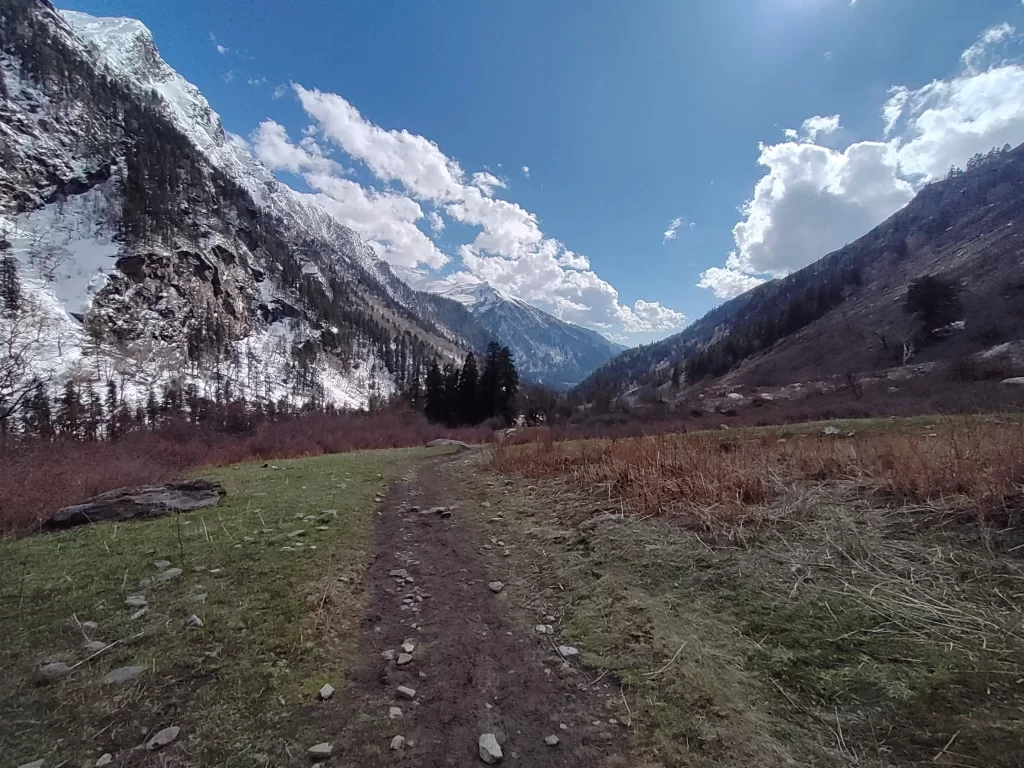
Monsoon (July to September):
These months bring occasional rainfall with challenging trails. The valley becomes verdure and scenic. Due to slippery trails trekking during this time gets bit challenging and the possibility of landslides is also high. However, many trekkers still choose monsoon in mountains to witness the verdant beauty of valley. For them this becomes best time to visit Har ki Dun for adventurous experiment. Challenging trails bring bigger responsibilities but that does not make this place any less popular. Yes, there is a best part to it, that you will get less rush during this season.
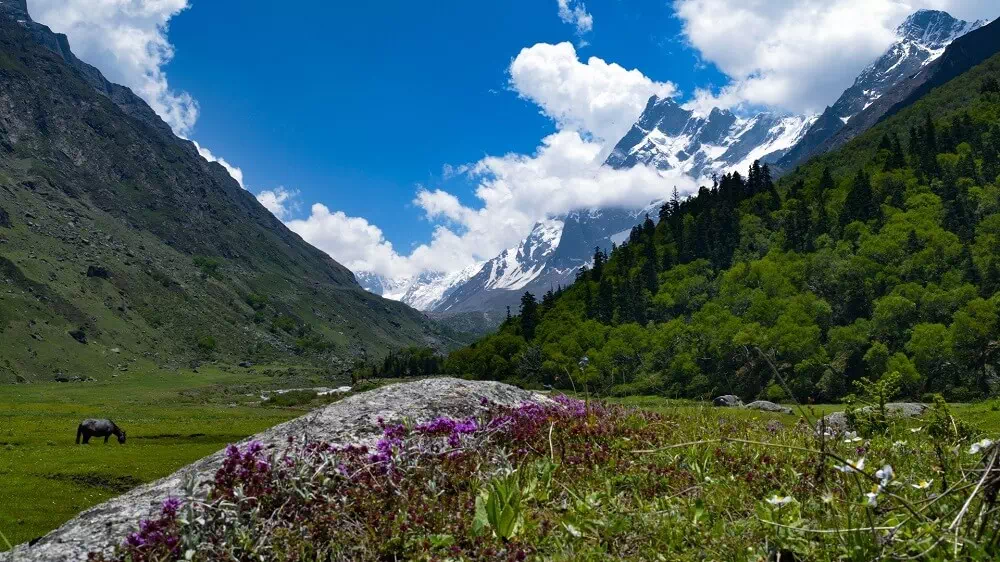
Autumn (October to November):
Breathtaking landscapes, clear skies, crisp air, and the surrounding peaks adorned with beautiful colors of autumn can be witnessed in this season. During these months the trekking conditions are quite good which makes Hark i Dun a favorable time for trekkers. For those who are seeking stunning views with clickable moments and comfortable weather, this is the time when the valley is at its finest. Pack your bags in autumn for some heavenly encounter with nature.
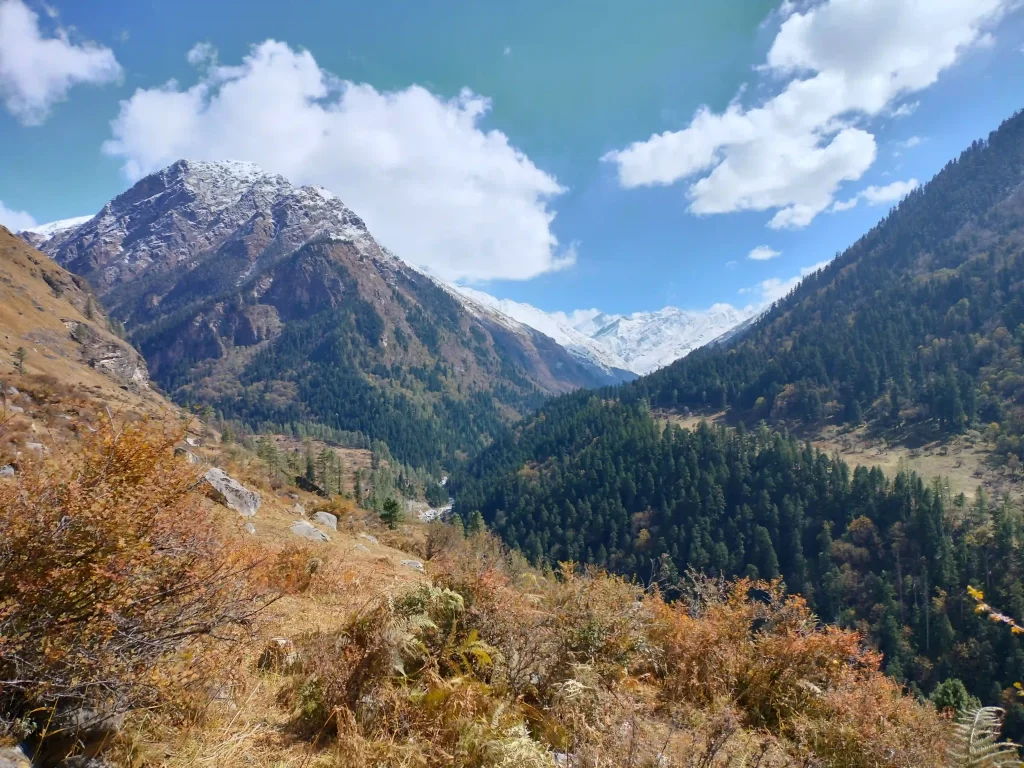
Winter (December to March):
During these months Har Ki Dun receives heavy snowfall. The valley is transformed into a winter wonderland and does not look less than a fairytale. Mostly, the trek is closed during the winter season allowing only experienced and expert trekkers as trekking during this particular period of time becomes challenging and not recommended for inexperienced or first-time trekkers. The weather goes harsh and extreme cold does not make right choice for people with health conditions. However, for experienced adventurers looking for snow trekking, this period might captivate their soul.
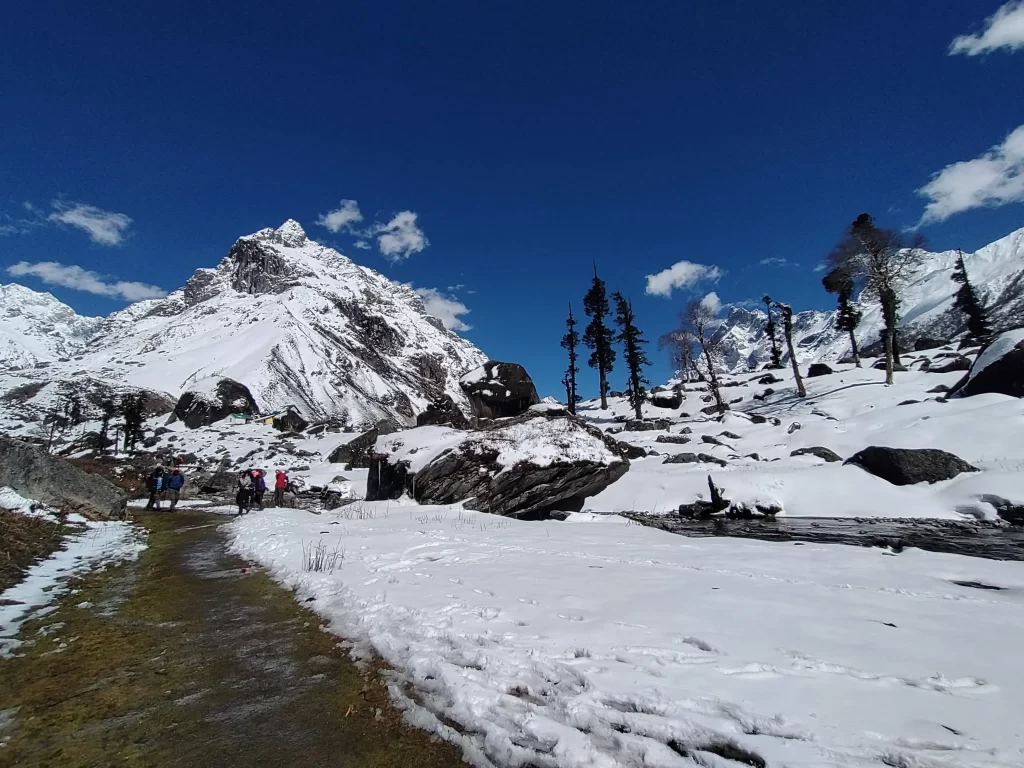
Why you should be setting heart on this lovely trek this season?
Har ki Dun is just not a trek- it is an experience that you will cherish throughout your life. It provides generous amount of opportunities for avid adventurers. Not just trekking, there are options for bird watching, camping and photography. The place is quite famous amongst vloggers as well.
So what are the other things that make Har ki Dun best place to trek?
Scenic Beauty :
Har Ki Dun is well known for its stunning natural beauty. The panoramic views of snow-capped peaks, dense forests, lush green meadows, and glistening streams are wonderful sights to encounter. The valley is beautiful and mesmerizing all year long, whether it’s adorned with vibrant flowers in spring and summer or covered in snow during winter.
Trekking Paradise:
Har ki Dun can be considered as a trekker’s paradise which has a relatively moderate trek trail, making it accessible to both experienced as well as beginners. During the course of trek one can witness picturesque landscapes and old-world villages. Moreover, it offers glimpses of local culture and lifestyle.
Biodiversity:
Rich in biodiversity, this valley is home to a variety of flora and fauna. Wildlife enthusiasts see it as a sanctuary. It is basically the heart of nature lovers. Right from spotting different species of birds to deer, this valley holds a lot in its embrace. If you are lucky enough, you might even spot Himalayan black bears and leopards.
Cultural Experience:
The place is colonized by the native Garhwali people who have a rich culture and customs. Often travelers get the opportunity to connect with local people, experience their warm friendliness, and find out about their traditions, food, and lifestyle.
Peace and Serenity:
Har Ki Dun Trek is known as one of the best treks for the individuals who are looking for solace and peace as it is relatively less crowded in comparison to some other famous trekking destinations in the Himalayas. This tranquility allows trekkers to experience a sense of serenity and peace amid the natural surroundings.
Adventure and Exploration:
Apart from trekking, visitors often wonder if this valley has to offer some add on adventurous element to the visit. One can get plenty of opportunities for camping, photography, and exploration of nearby attractions like Jaundhar Glacier, Swargarohini Peak, and Ruinsara Lake.
Har Ki Dun is a trek that is accessible to both beginners and experienced trekkers. The moderate difficulty level allows a wide range of people to enjoy the beauty of the region. Its breathtaking natural beauty and trek takes you through lush green meadows, dense pine forests, and offers panoramic views of snow-capped Himalayan peaks.
Overall, Har Ki Dun is the harmonious blend of natural beauty, adventure, cultural immersion, and the sense of tranquility it offers to anyone who visits this pristine valley.
In conclusion, the best time to trek Har Ki Dun primarily depends on one’s interests and comfort level with weather conditions. For most trekkers and nature enthusiasts, the ideal times are typically spring (April to June) and autumn (October to November) when the weather is pleasant, and the valley exhibits its most alluring facets.
So, what are you waiting for? It is the time to completely immerse in the beauty of mountains camping amid fully natural surroundings and enjoy the serenity of the night sky. Be mindful and choose campsite which has stunning views. Be mindful and leave no trace to make a difference by saving the environment.
Looking for best trekking partner?
Himalaya Shelter is one of the best and most liked trekking organizers with a team of experienced trainers. They have been organizing treks in Himalaya for many years now and gained a great retention rate with their guests. Currently they are offering 10% off to the early bird for choosing them as their partner for Har Ki Dun. Visit their website to learn more about it: Himalaya Shelter
Har ki Dun VS Kedarkantha Trek | Har ki Dun Trek | Kedarkantha Trek | Bali Pass Trek | Phulara Ridge Trek | Valley of flowers trek | har ki Dun vs Valley of flowers | Har ki Dun Vs Kuari Pass | 10 Moderate Treks in Uttarakhand | Monsoon Trek in India | Gaumukh Tapovan trek | Kashmir Great Lakes trek | Nag Tibba Trek | Kuari Pass trek | CHOPTA CHANDRASHILA TREK | Uttarakhand | Har ki Dun Vs Roopkund | Treks | treks in Uttarakhand | Treks from Dehradun
- Pingback: How to Find the Best Time to Trek Har Ki Dun- A...
Leave a comment Cancel reply
Your email address will not be published. Required fields are marked *
Save my name, email, and website in this browser for the next time I comment.
Related Blogs
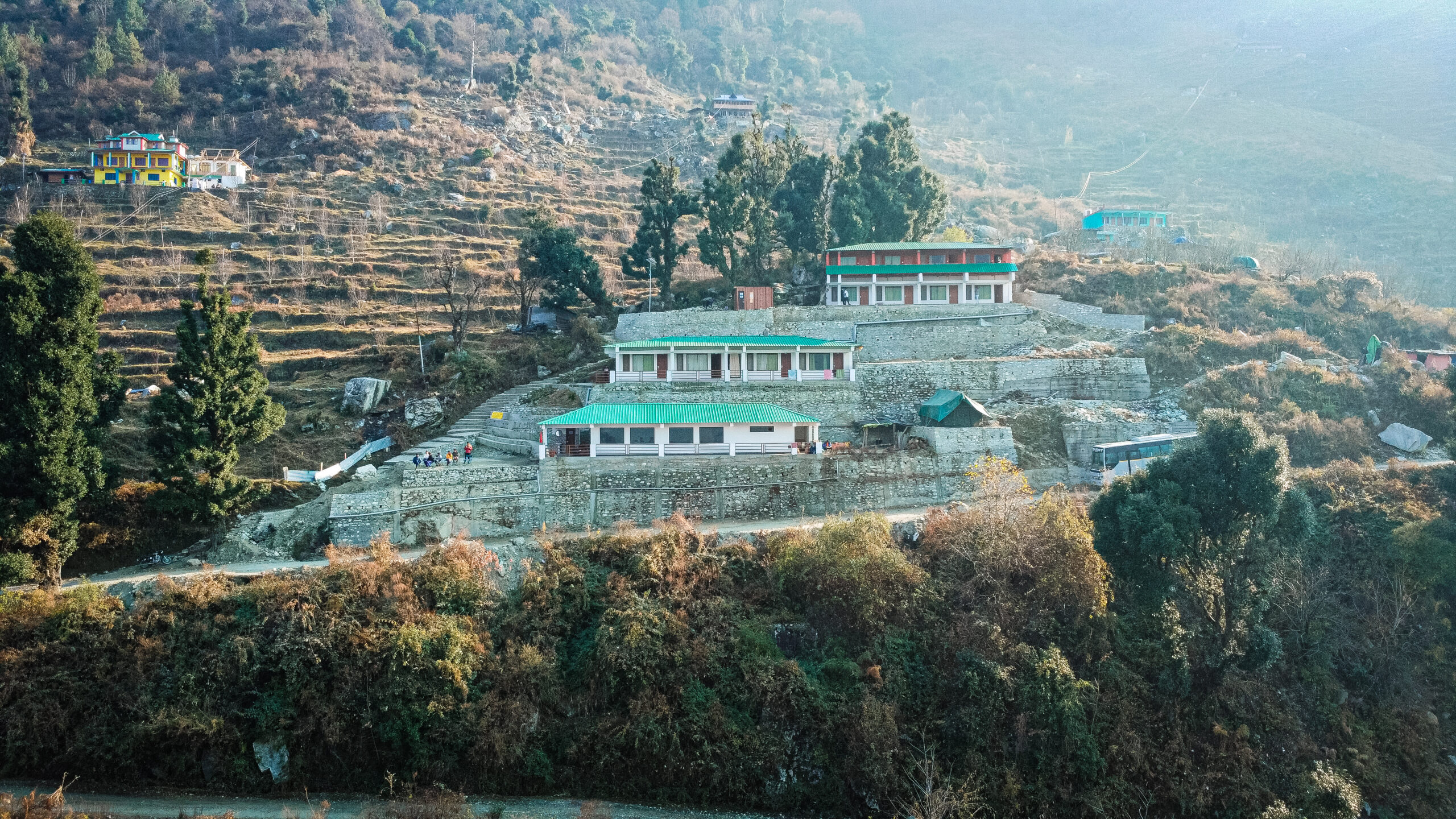
March 4, 2024
Work from Mountains: My Unforgettable Experience with Himalaya Shelter
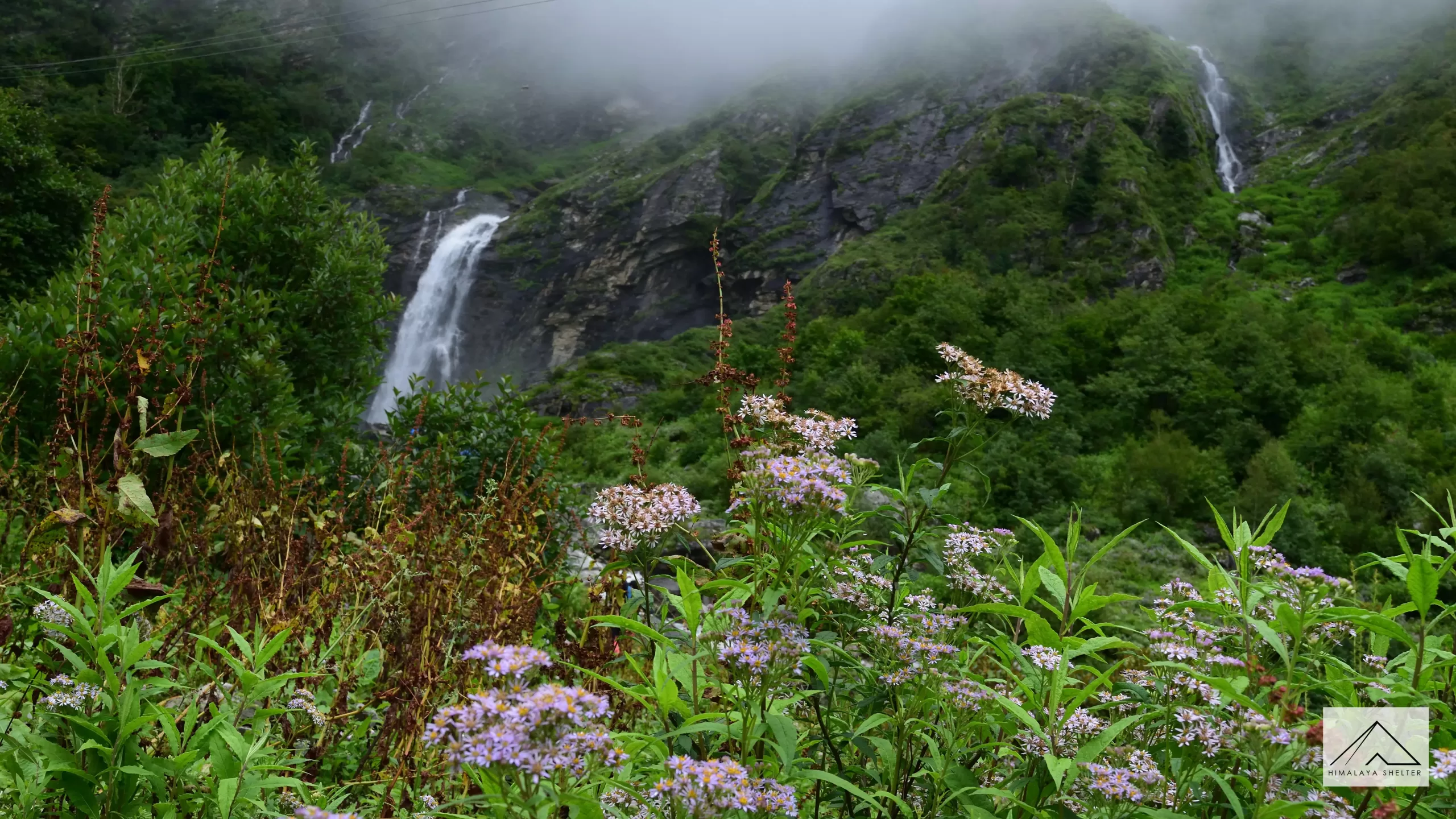
January 19, 2024
Valley of Flowers the ‘Most Beautiful Monsoon Trek in India’
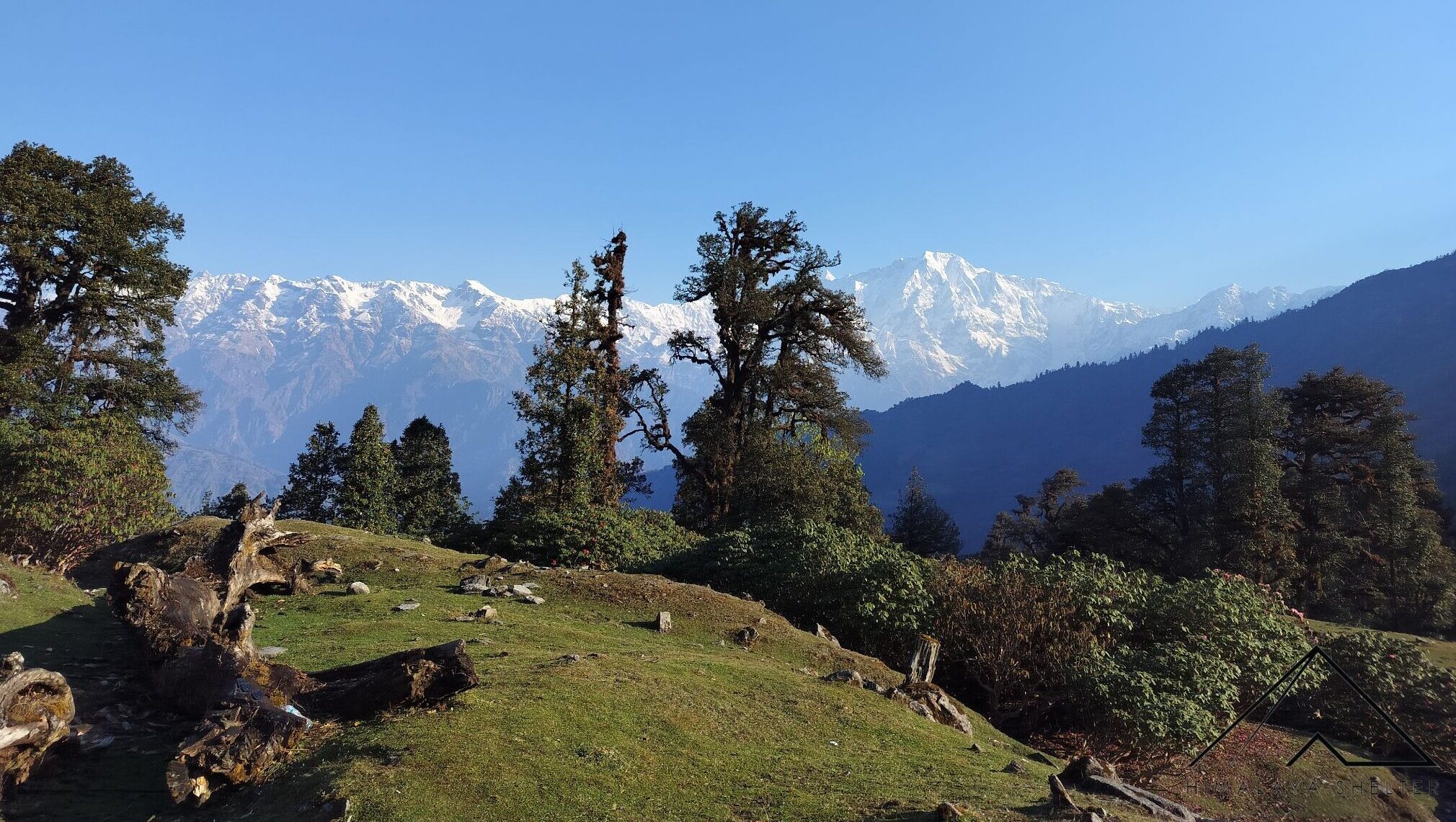
May 1, 2024
Ranthan Kharak- A Trek To Fairyland In The Kumaon Himalayas
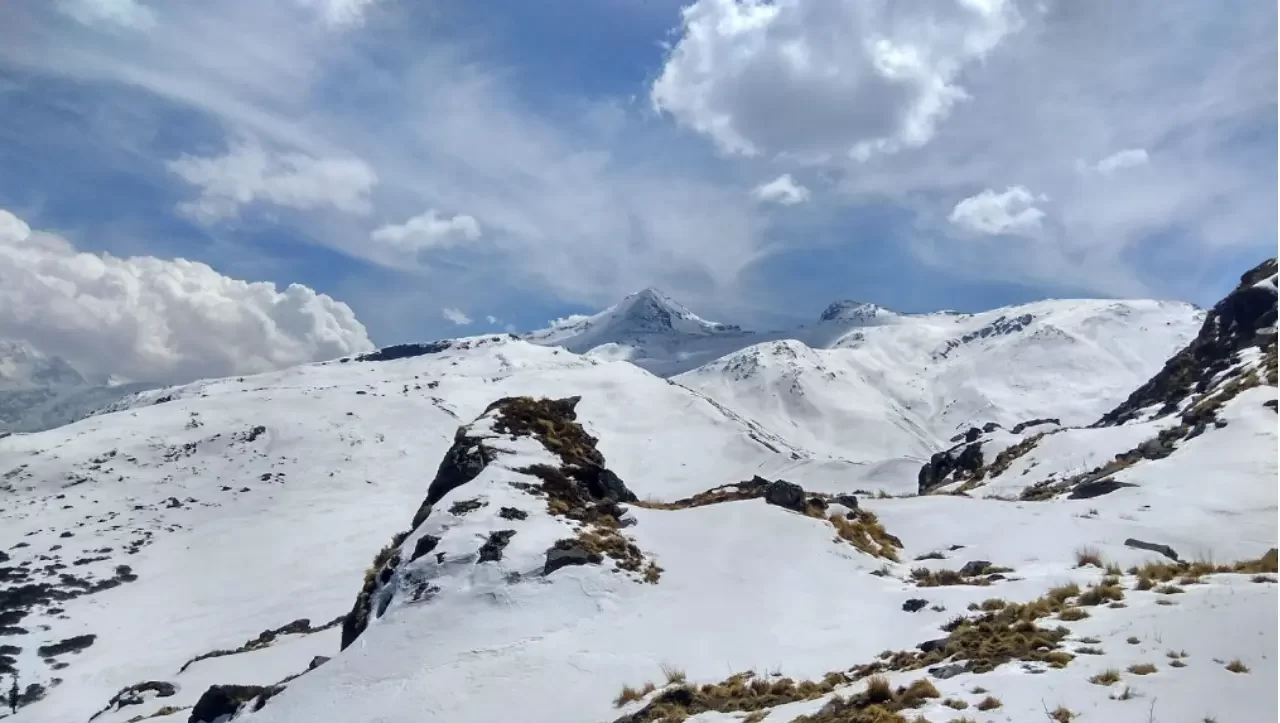
April 29, 2024
Pangarchulla Peak in early spring
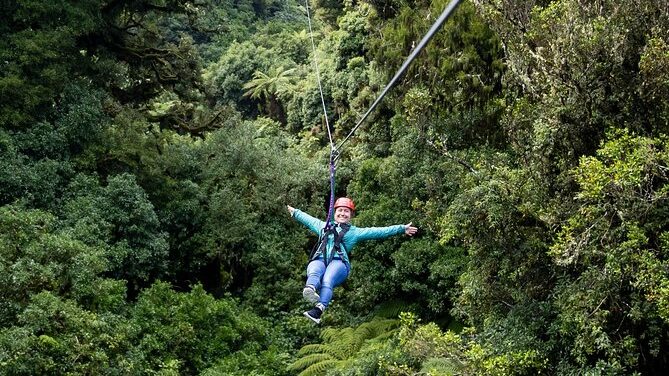
March 28, 2024
Things to do near/at Sankri
A complete guide about the beautiful Himalayan village named Sankri. This article contains all the details that you need to know about Sankri. The best treks from Sankri, The best accommodation in...

March 20, 2024
Customize your Trek with Himalaya Shelter
A comprehensive guide for trekkers and adventure enthusiasts curious about the structure of a customized trekking program. This article outlines all the facilities provided within our customized trekking programs.

March 14, 2024
Top 30 Best Places to Visit and best treks to do in Mussoorie:
A complete guide about the best places to visit near Mussoorie, the famous picnic destinations in Mussoorie, best trekking places near Mussoorie
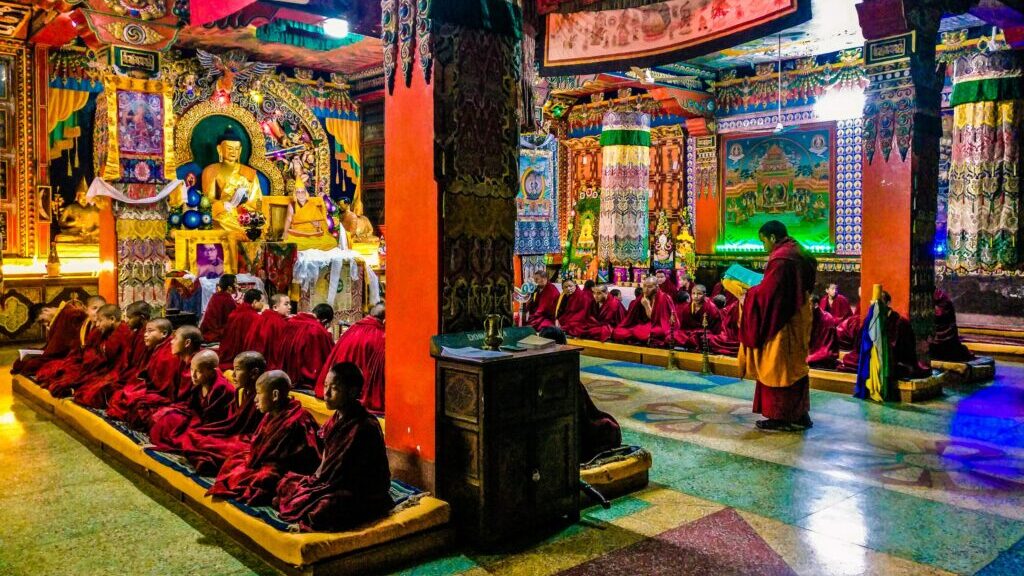
March 11, 2024
Best Treks to do & Best Places to Visit in Dehradun
A complete guide about the best places to visit near Dehradun, the famous picnic destinations in Dehradun, best trekking places near Dehradun
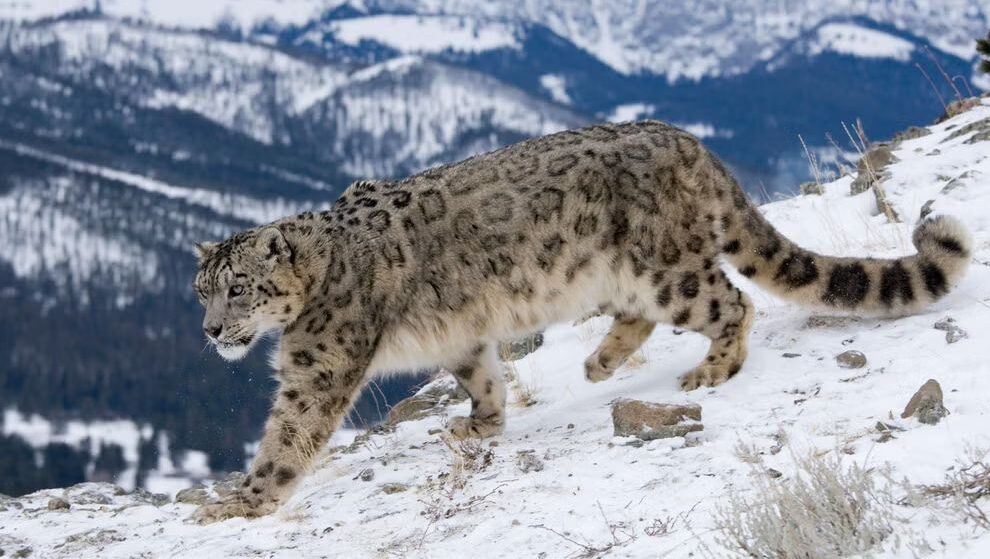
February 2, 2024
National Parks of Uttarakhand-A Journey through Uttrakhand's Spectacular National Parks
A complete guide to the most popular and famous National parks of Uttrakhand, India along with the trekking destinations associated with them.
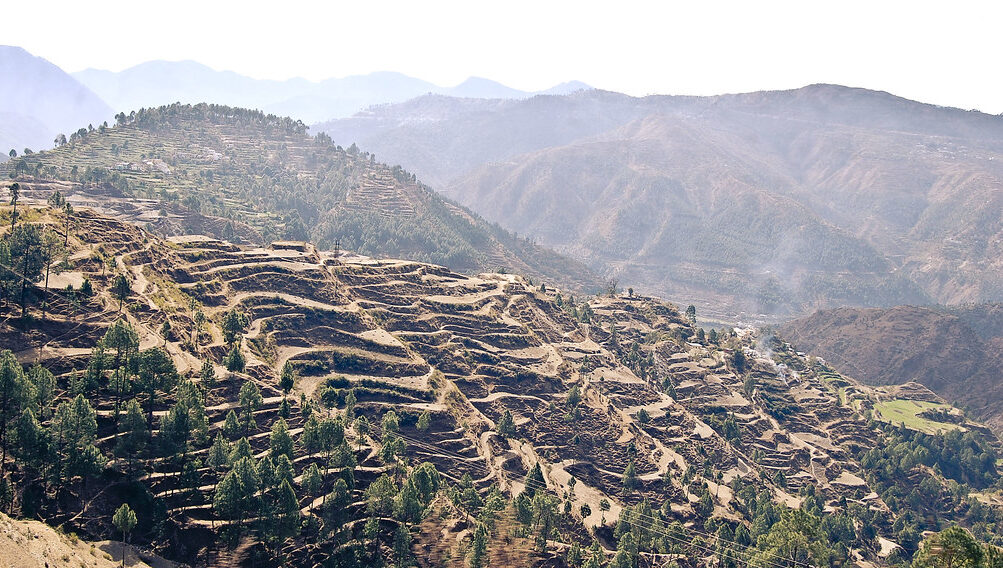
Ranikhet, India: Your handbook to 'Land of the Queen'
January 13, 2024
Best Monsoon Treks in India
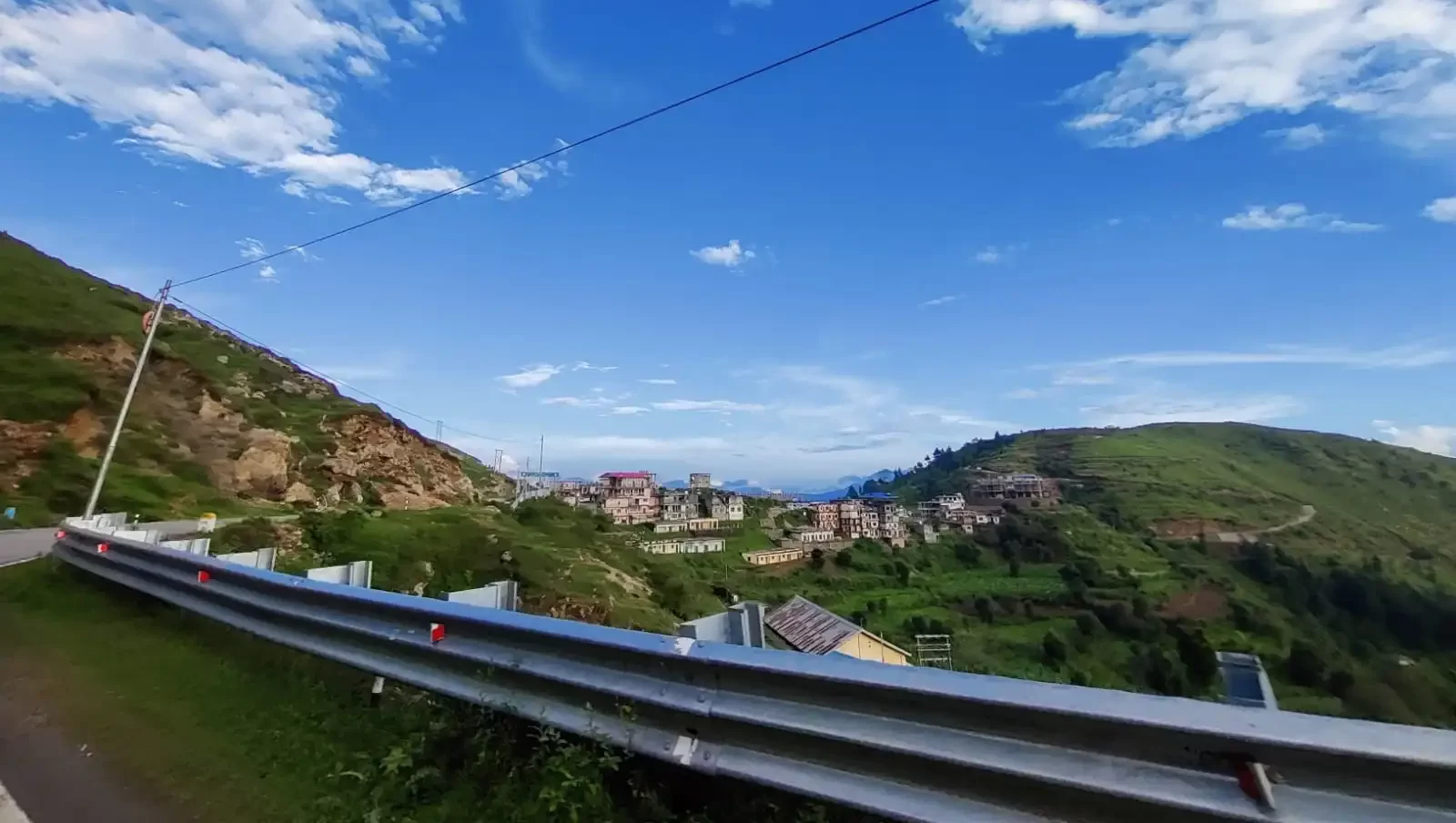
Chakrata: An Offbeat Hill Station in Uttarakhand

January 12, 2024
Eco-friendly Exploration of the Himalayas
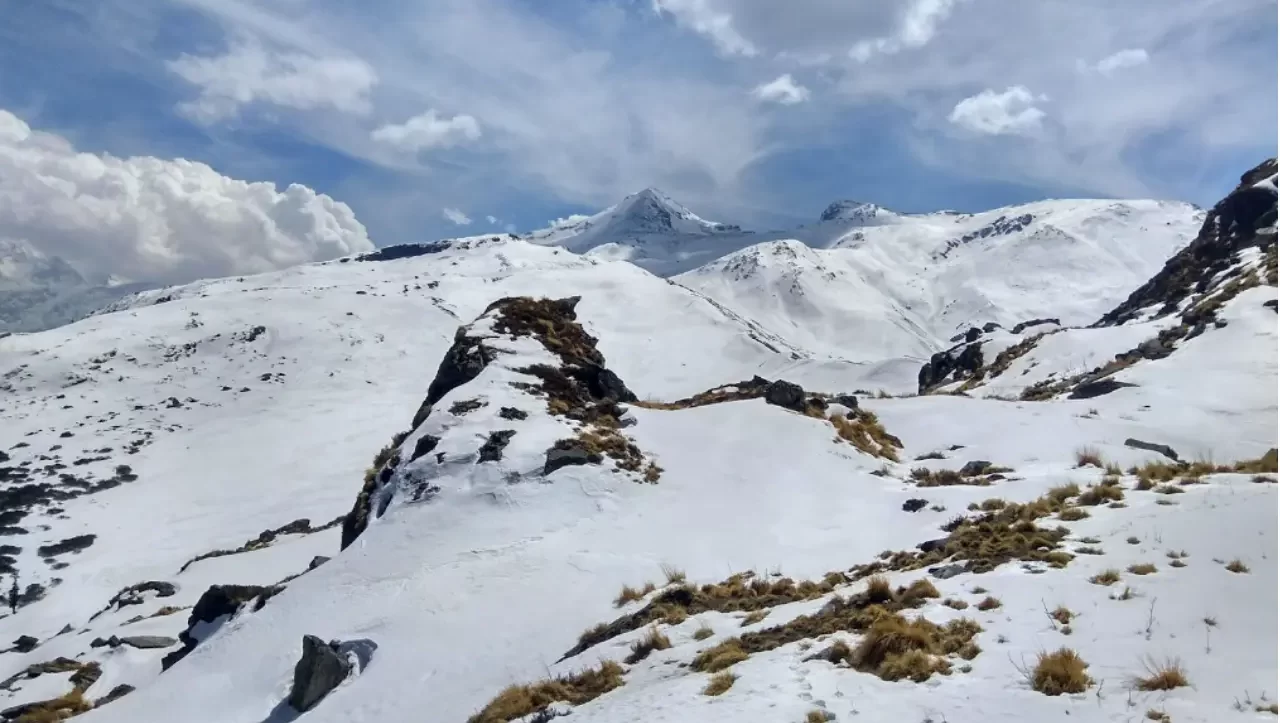
Top 10 Moderate Treks in Uttarakhand
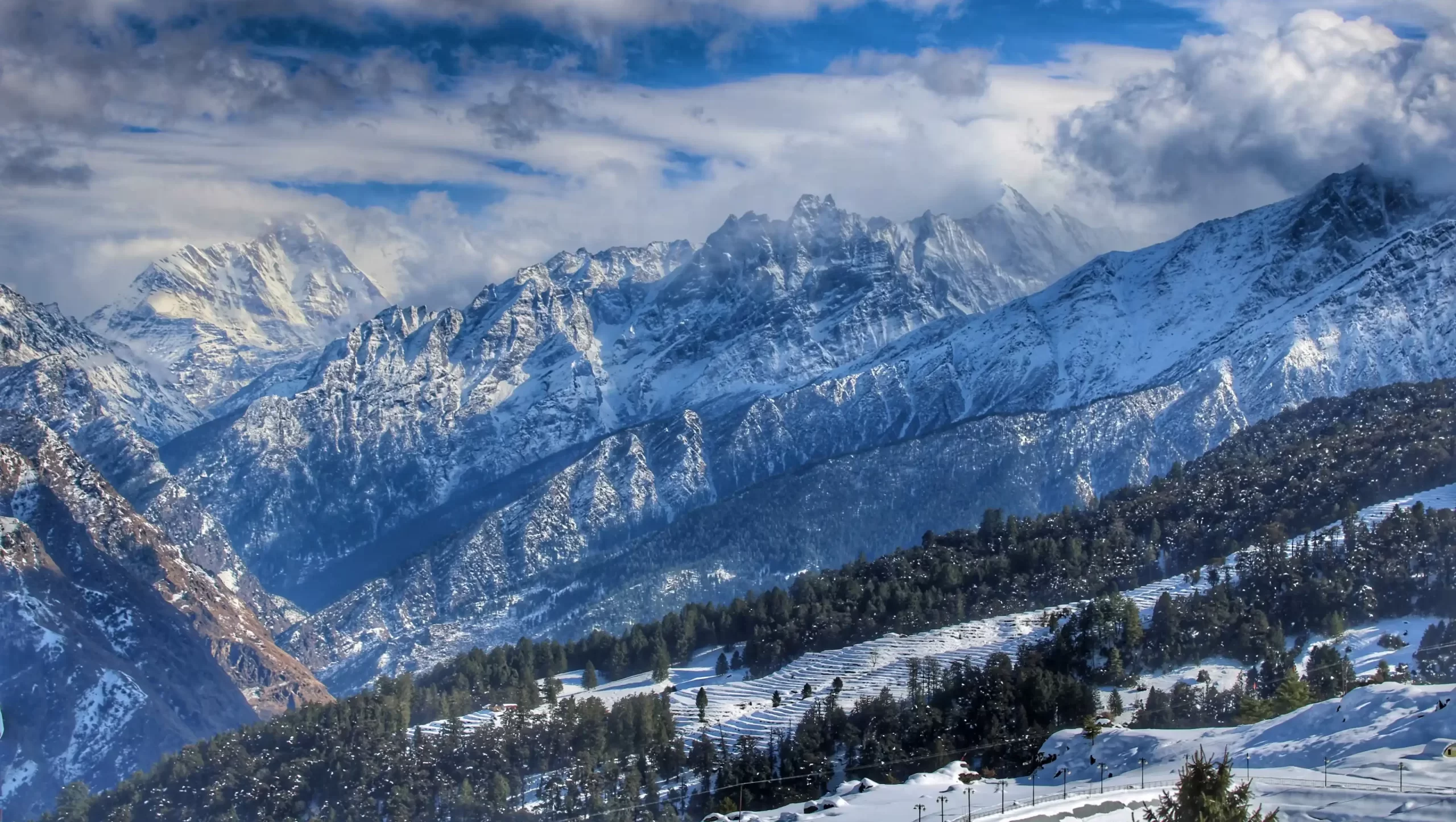
January 11, 2024
Auli Uttarakhand- Your Ultimate Adventure Destination to Visit
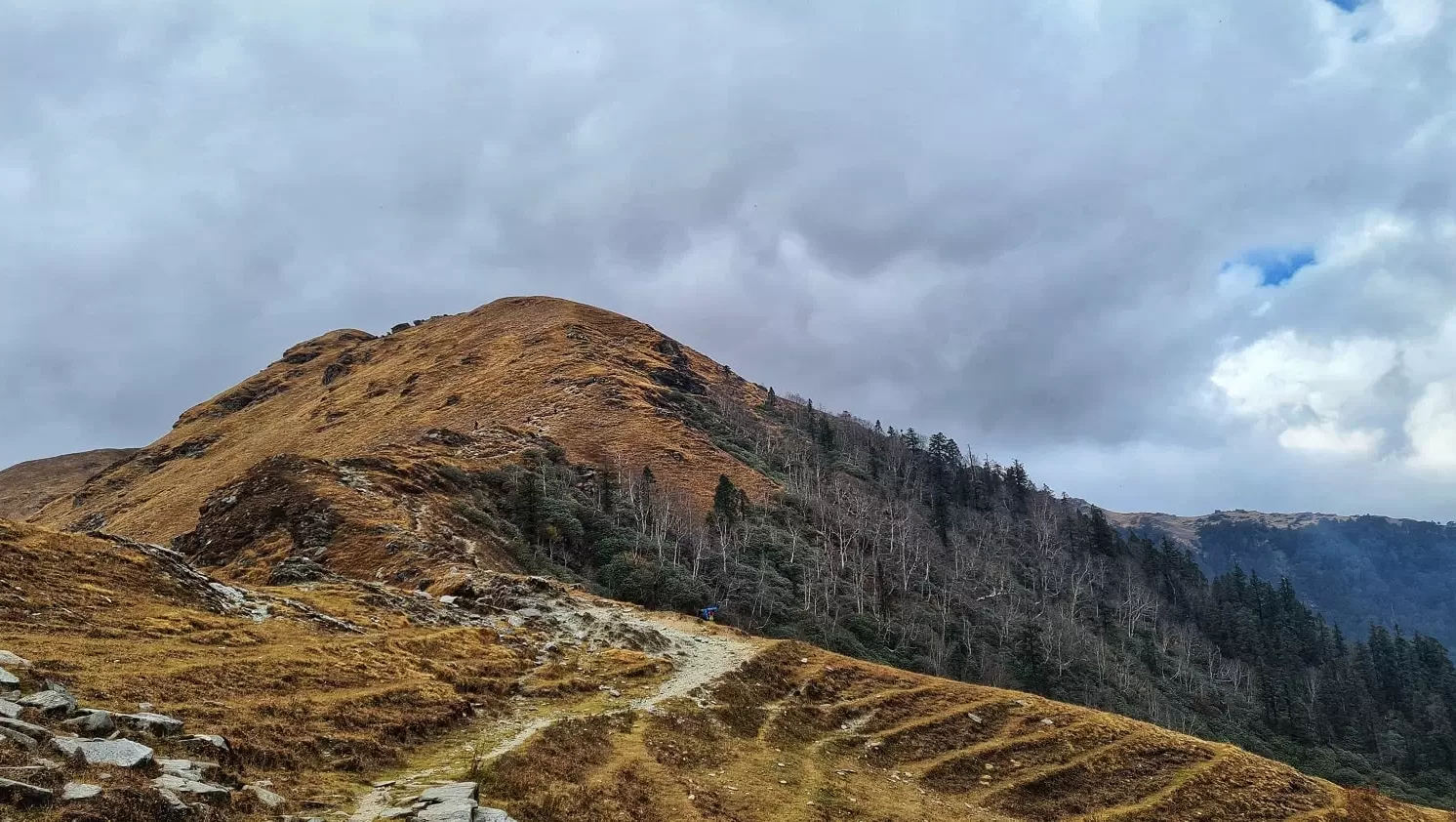
January 9, 2024
Phulara Ridge Trek Blog - All you will need to know
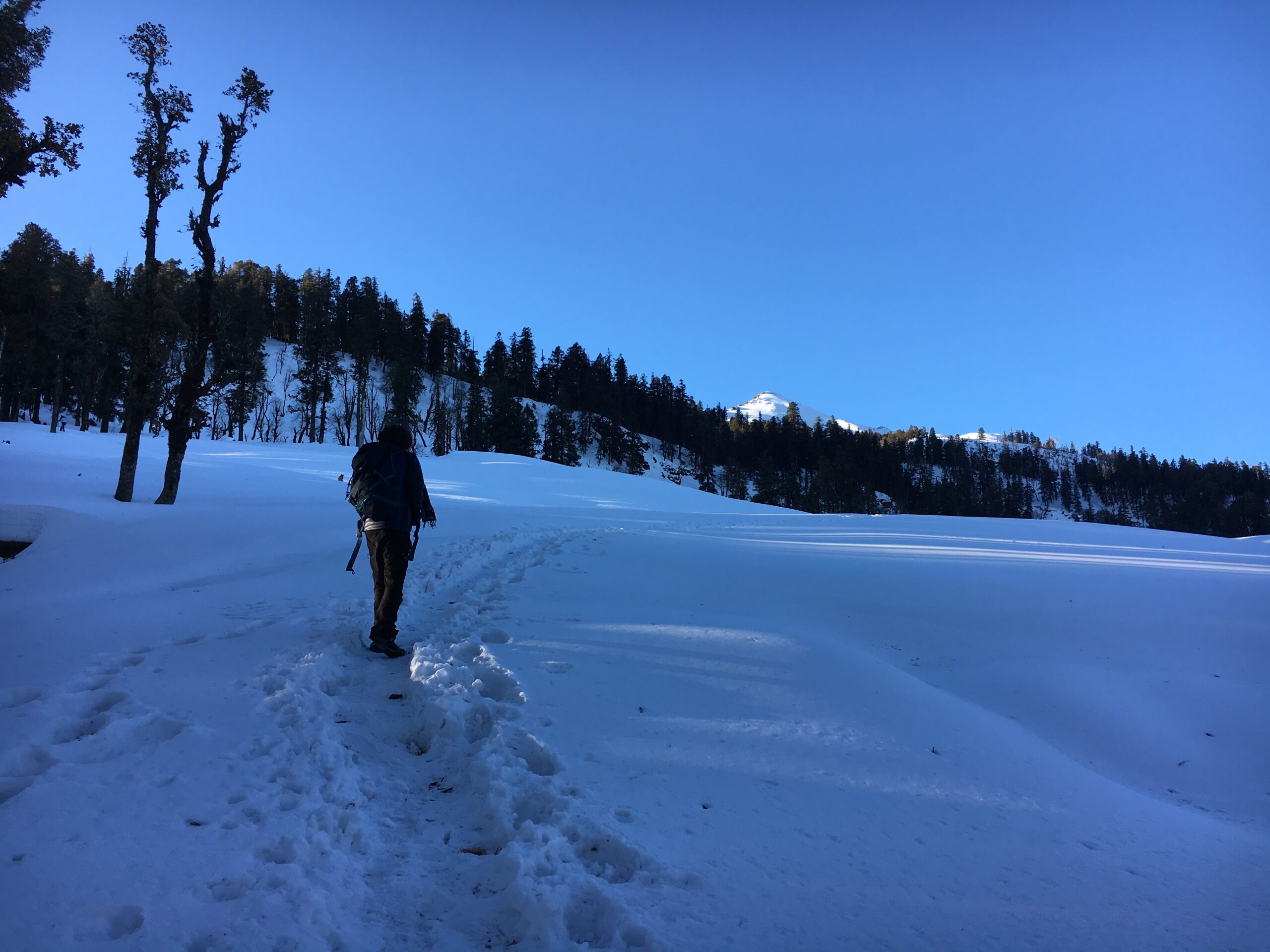
December 11, 2023
Kedarkantha Trek: Peaks and Panoramas in a Himalayan Odyssey
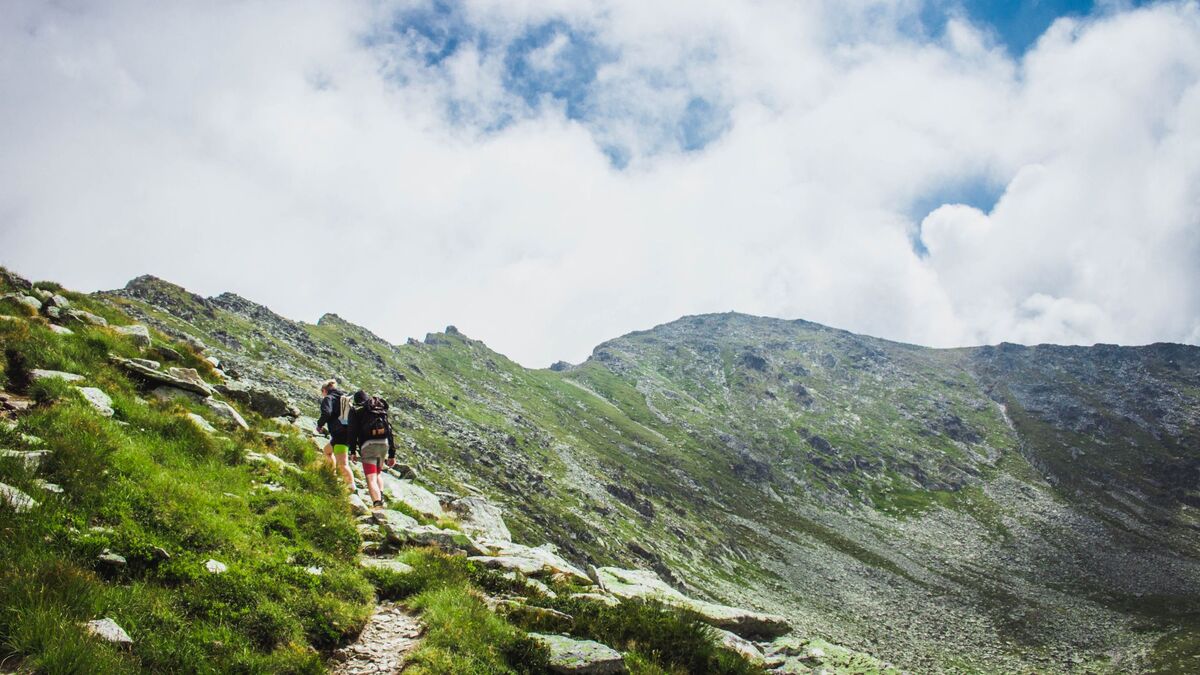
September 28, 2023
8 Essential Safety Tips for Trekking in the Himalayan Mountains for a Safe Journey
Trekking in the Himalayas offers a unique experience, combining imposing peaks, serene valleys, and diverse cultures. Preparation and safety are crucial.

September 25, 2023
14 Best Destinations for Spiritual Trekking in the Indian Himalayas
Explore the divine heights of the Indian Himalayas with our guide to the 14 Best Destinations for Spiritual Trekking.
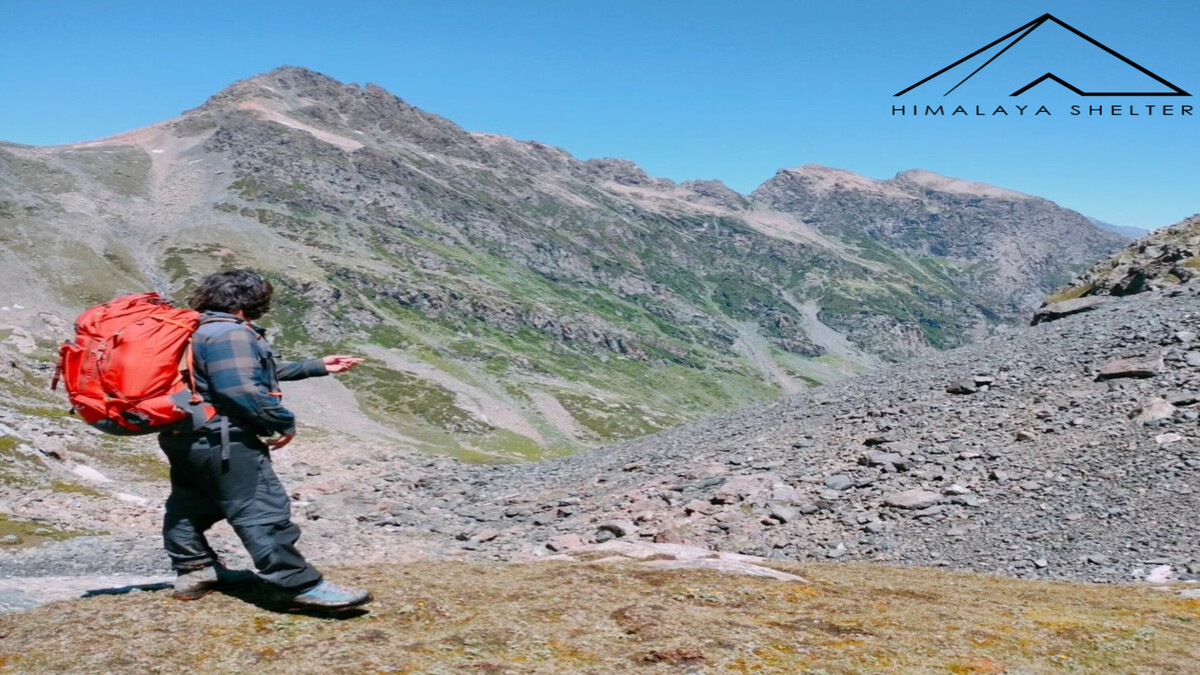
September 22, 2023
Solo or Group Trekking in the Himalayas: Which is Best for You
Explore the pros and cons of solo and group trekking in the majestic Himalayas to find out which suits your trekking style best.
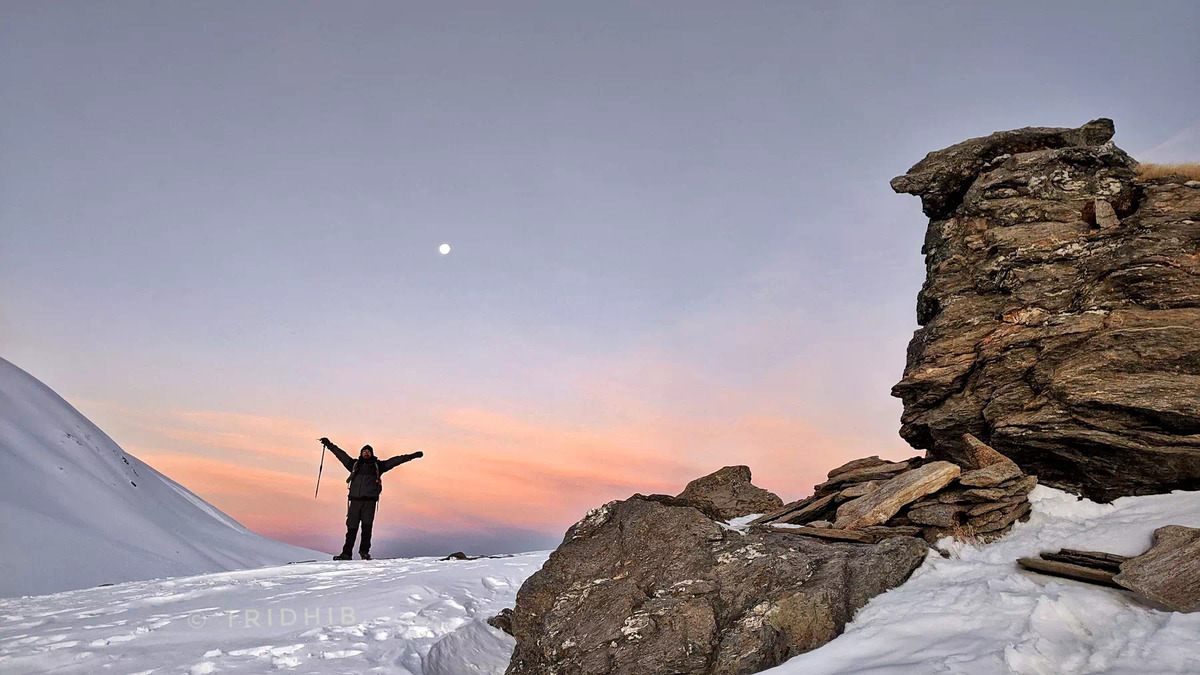
13 Best Himalayan Treks To Do in October, November, and December in India
Discover stunning treks to do in Himalaya in October, November, and December in India.

September 18, 2023
Himalayan Trekking Permits: A Complete Guide for Adventurers
Explore our comprehensive guide to Himalayan Trekking Permits, designed for adventurers like you.
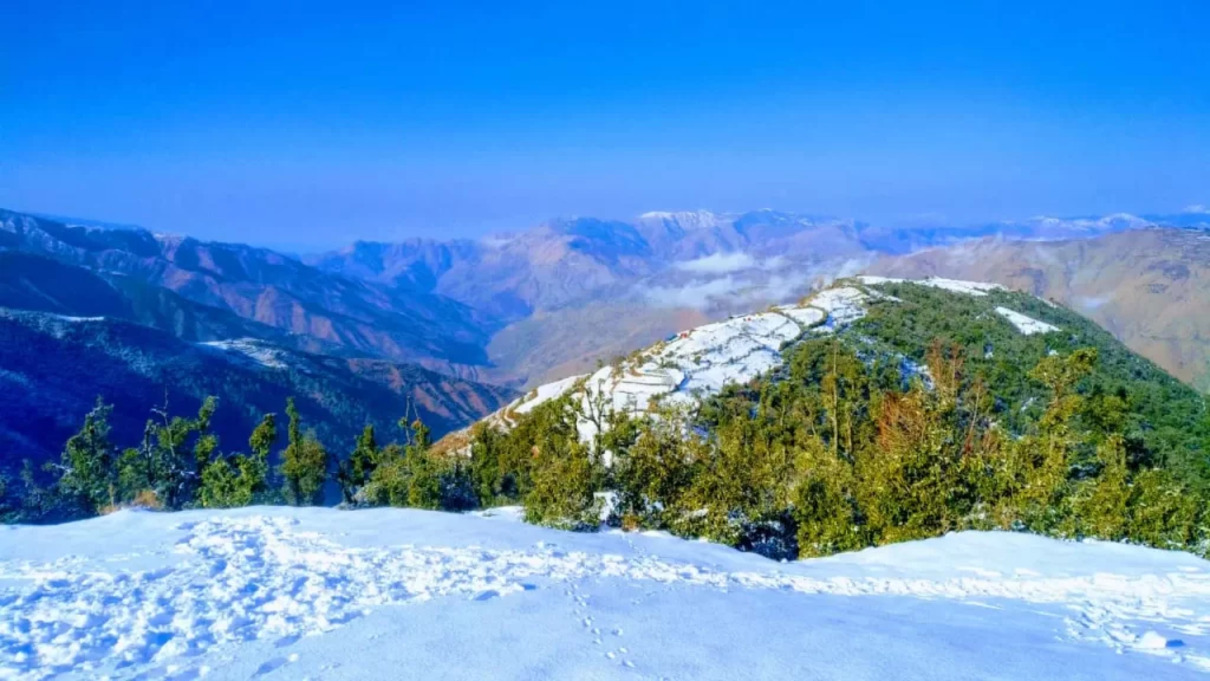
Discover the Top 15 Trekking Places in Kashmir in 2023 From Lakes to Peaks
Discover the top trekking places in Kashmir featuring stunning lakes and towering peaks.
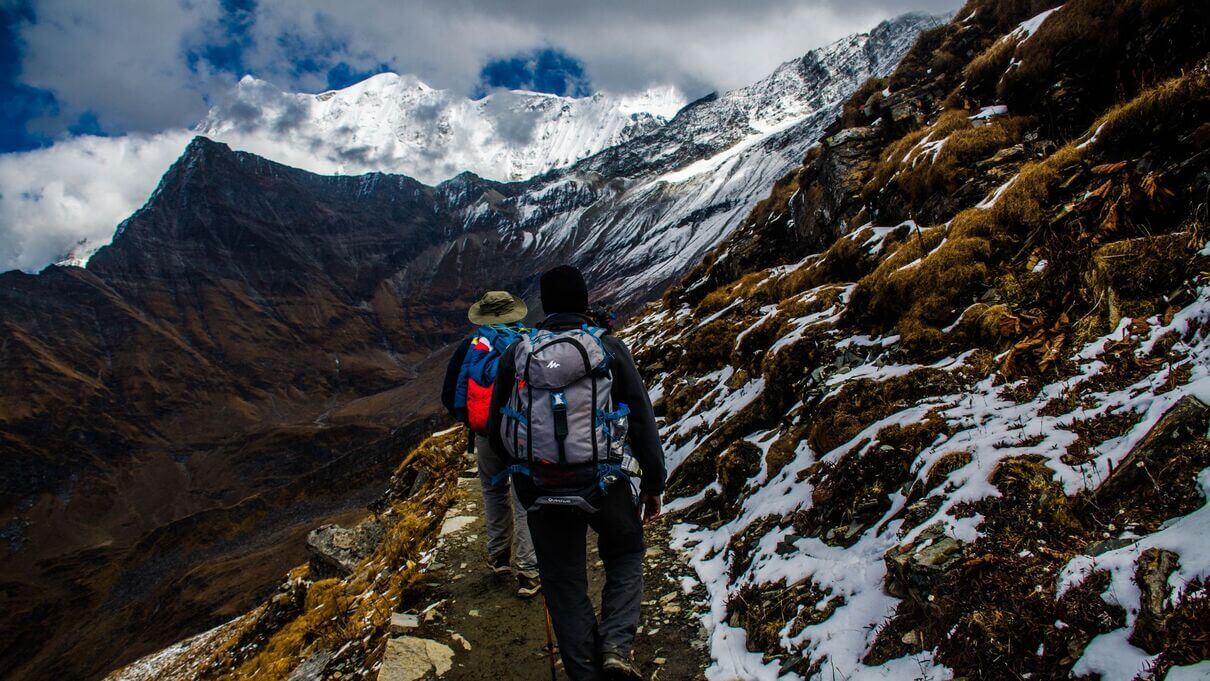
August 23, 2023
Discover the Must-Have Hiking Essentials for Beginners in the Himalayas
Prepare well for beginner Himalayan treks: essentials, best routes, high altitudes, fees, and cultural immersion for a secure adventure.
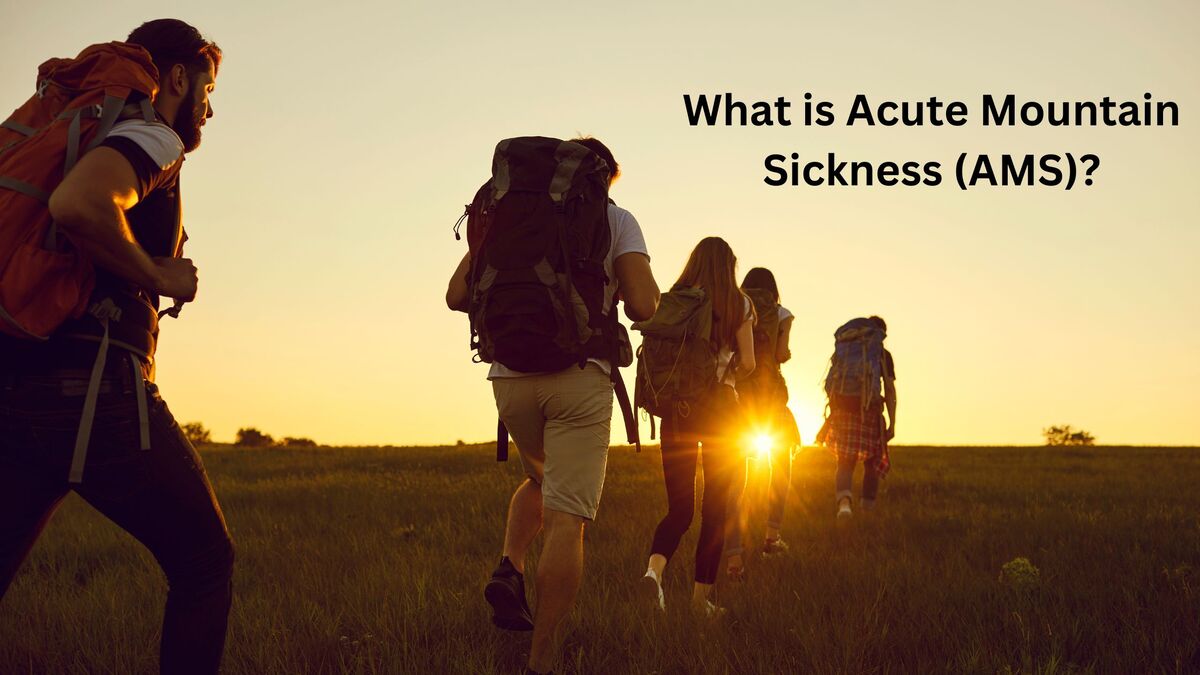
August 18, 2023
Understanding Acute Mountain Sickness: Causes, Symptoms, and Treatments
Discover the causes, symptoms, prevention strategies, and effective treatments for Acute Mountain Sickness (AMS).

August 16, 2023
10 Stunning Treks Near Manali, Himachal Pradesh in 2023
Explore Himachal's stunning landscapes with thrilling Manali treks. Experience extraordinary walks amidst magnificent mountains and serene roads.

August 14, 2023
9 Best Short Treks in Uttarakhand for 1, 2, or 3 Days for a Weekend Escape
Explore Uttarakhand's stunning weekend getaways with short treks, immersing yourself in nature's beauty and adventure on these breathtaking trails.
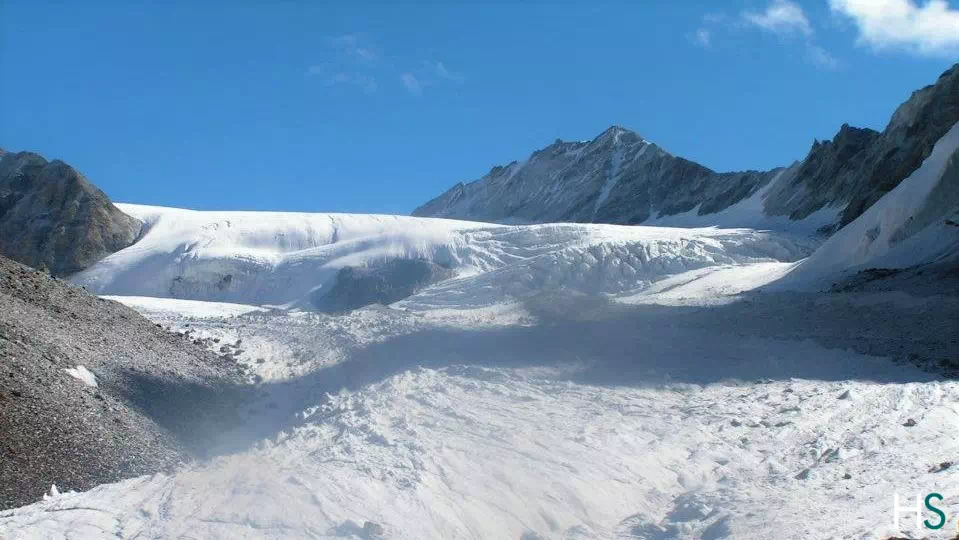
August 9, 2023
10 Toughest and Most Difficult Treks in India in 2023 to Push Your Boundaries
Discover the toughest and most difficult treks in India and test your endurance in the breathtaking landscapes of the Himalayas.
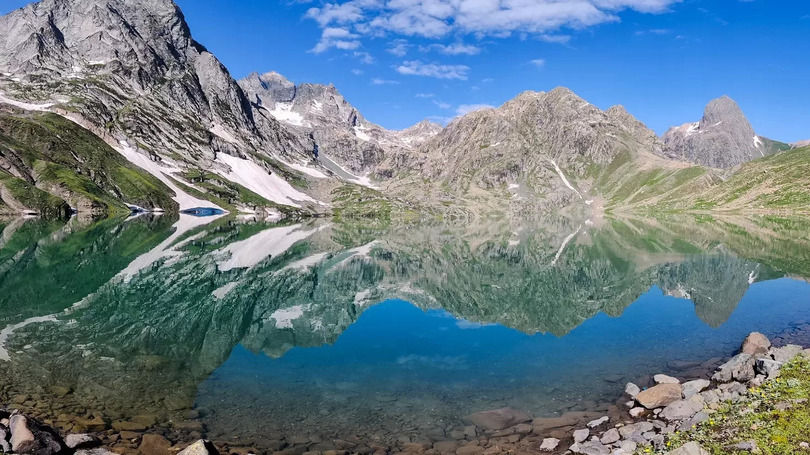
July 25, 2023
11 Best Places to Visit in Sonamarg, Things to Do & Attractions
Sonamarg, in India, captivates with its stunning landscapes. Nestled in Kashmir, it's a serene haven for nature and adventure enthusiasts.
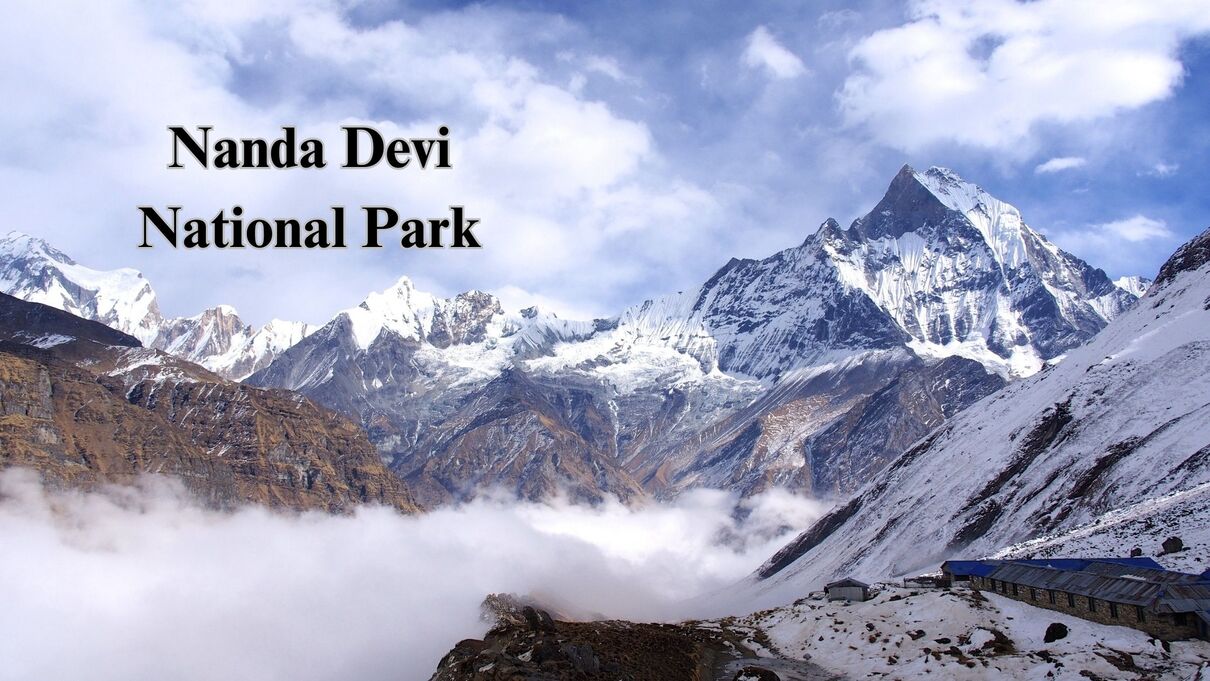
July 24, 2023
Nanda Devi National Park, Uttarakhand - How To Reach, Best Time to Visit
Nanda Devi National Park, in Uttarakhand, India, is a UNESCO World Heritage Site known for its stunning Himalayan landscapes.
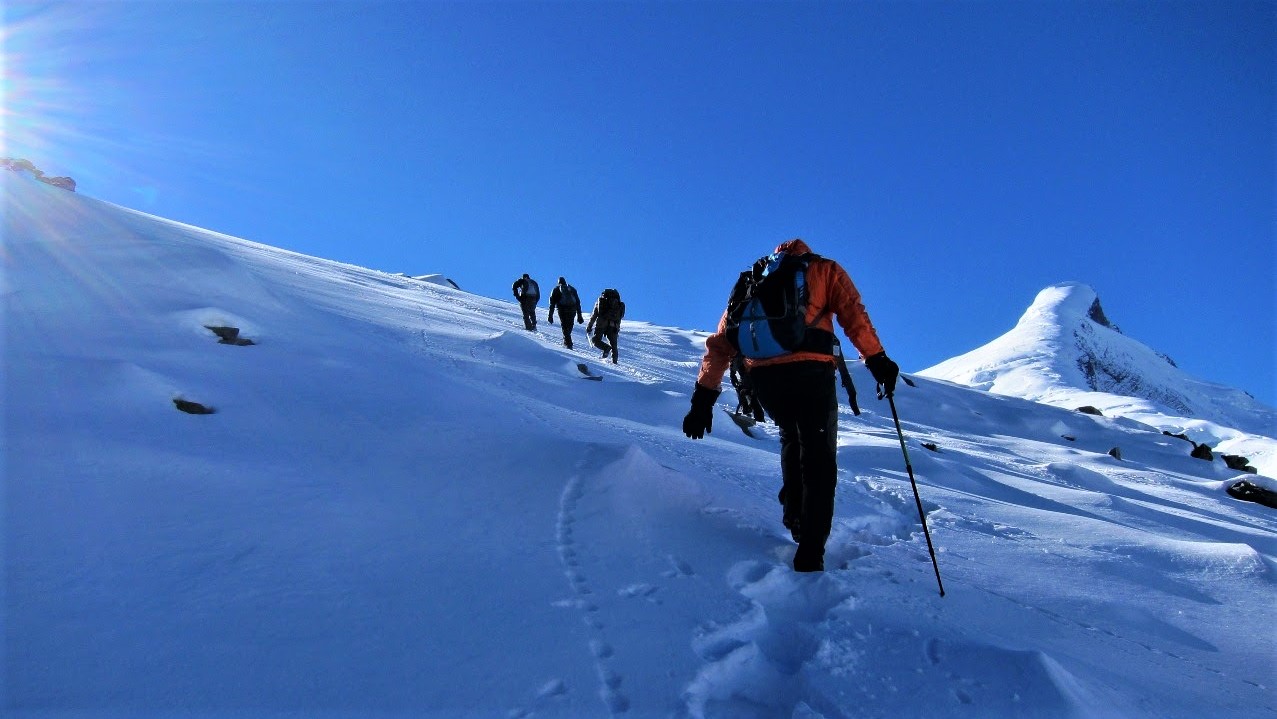
July 19, 2023
15 Best Himalayan Treks for Beginners in India in 2023
Discover beginner-friendly treks in India's Himalayas. Experience breathtaking mountain beauty, push limits, and connect with nature in stunning landscapes.
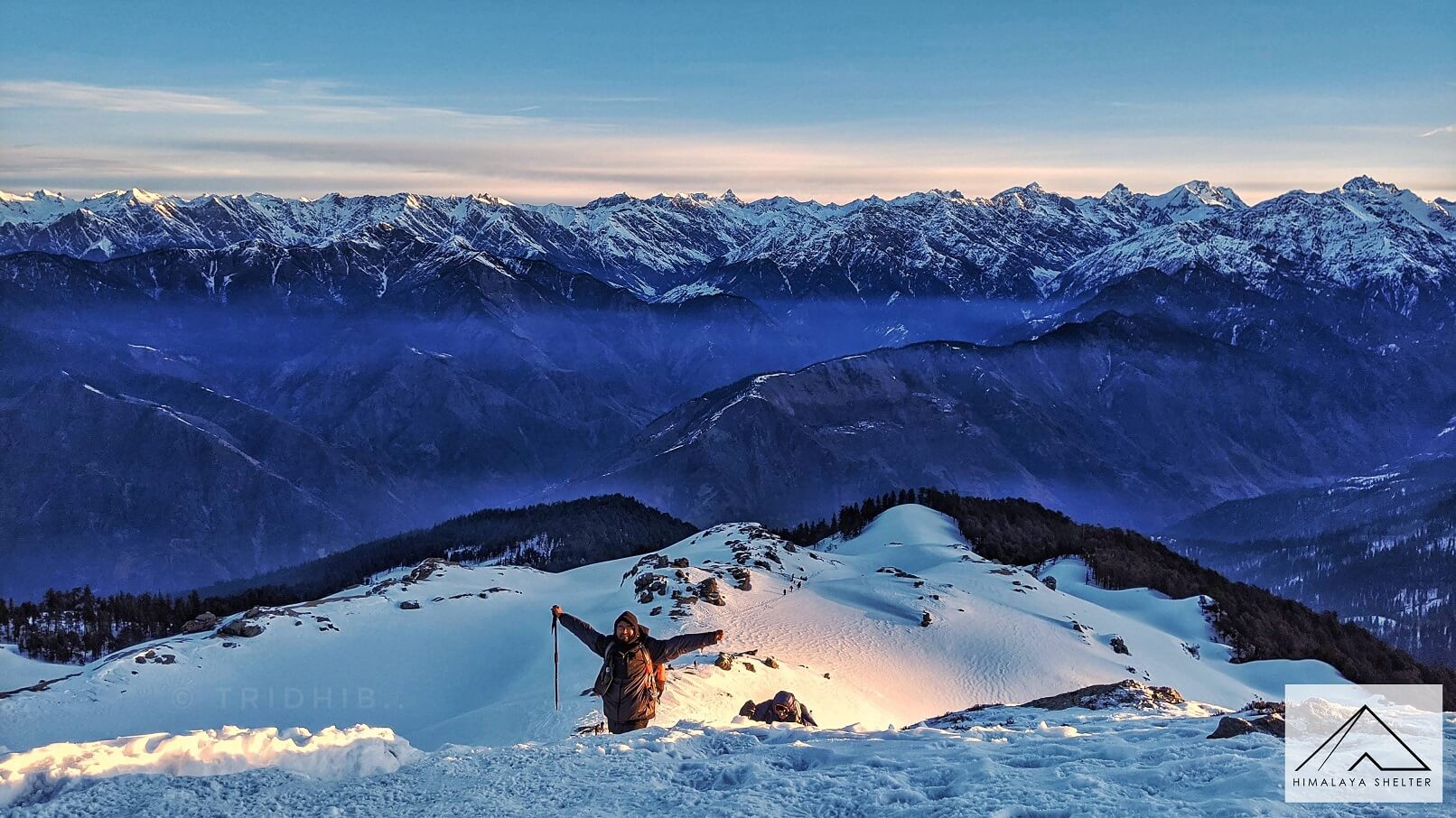
July 18, 2023
Top 15 Highest Mountain Peaks of Uttarakhand in 2023
The state of Uttarakhand boasts of two of the top three mountains in India. Read the blog to find out about the famous peaks of Uttarakhand...
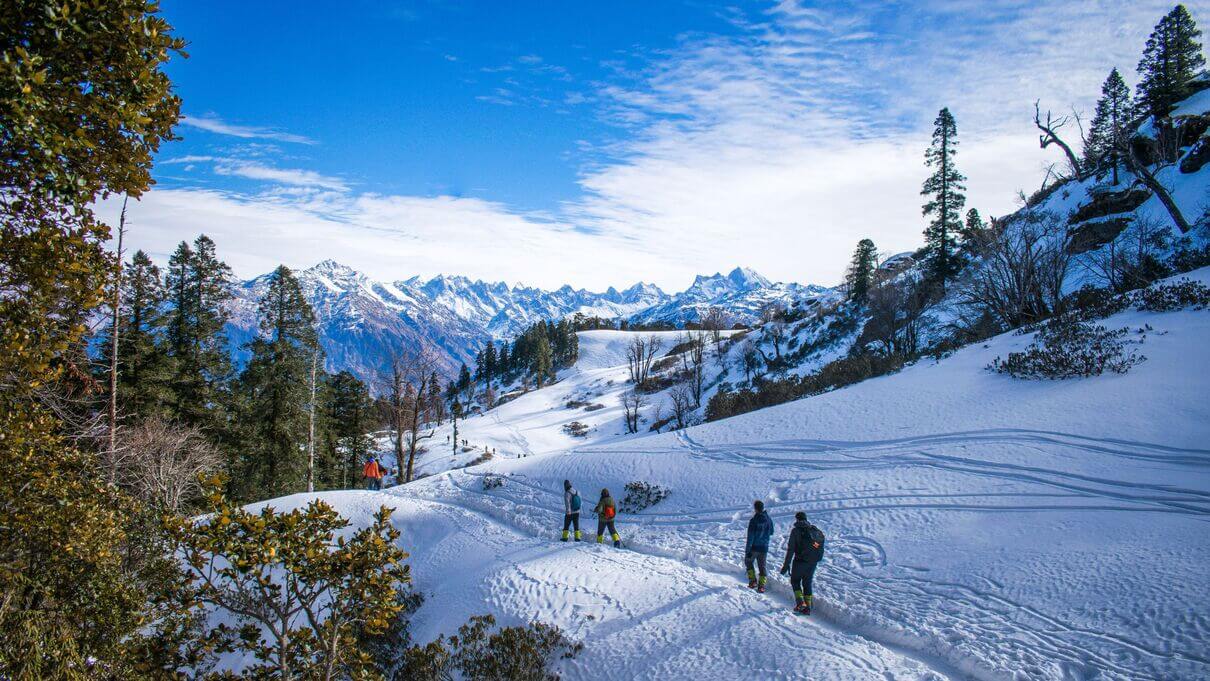
July 13, 2023
Trekking in Rishikesh: 10 Best Treks near Rishikesh
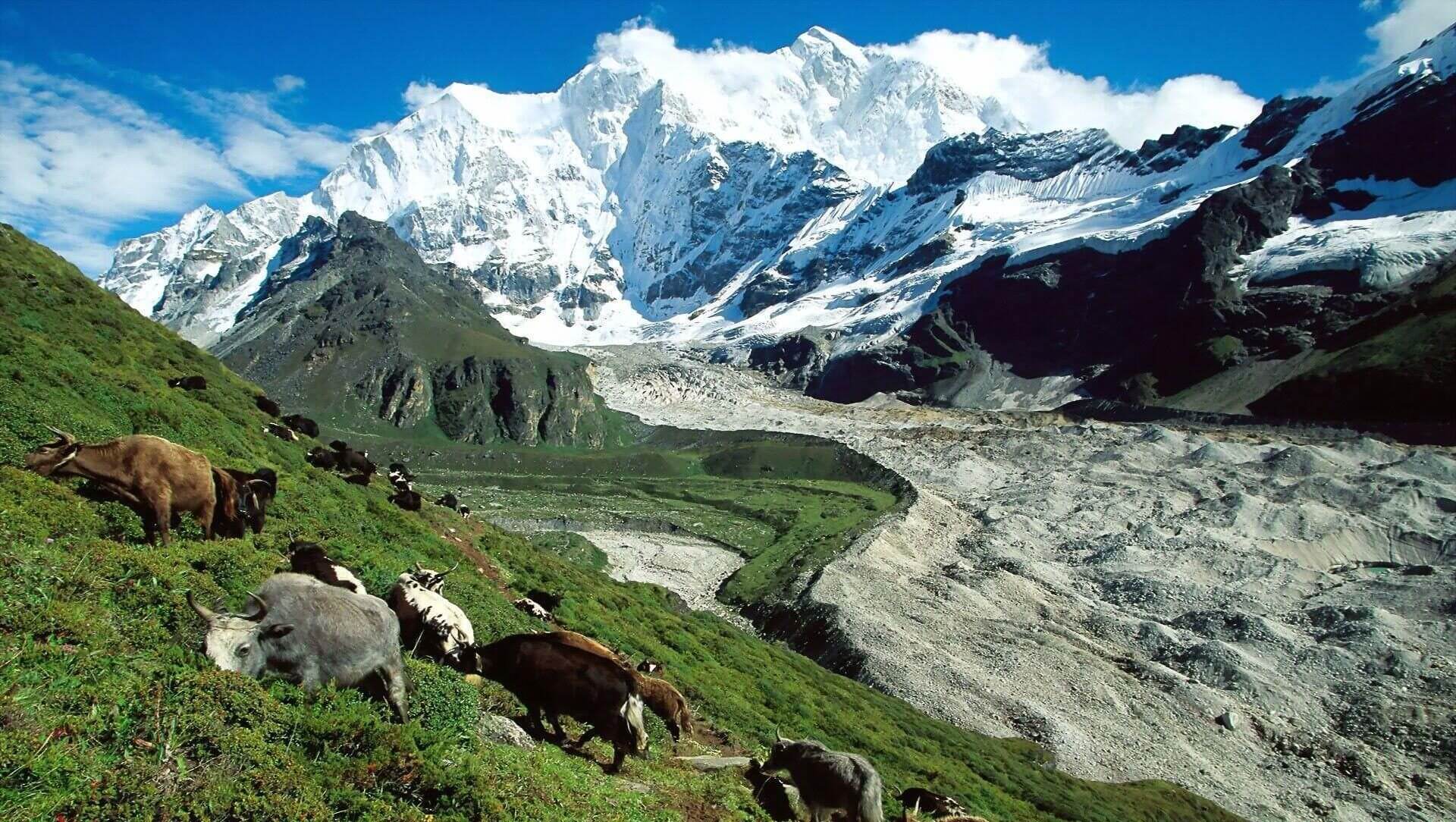
July 11, 2023
13 Best Monsoon Treks in India to Do in June to September 2023
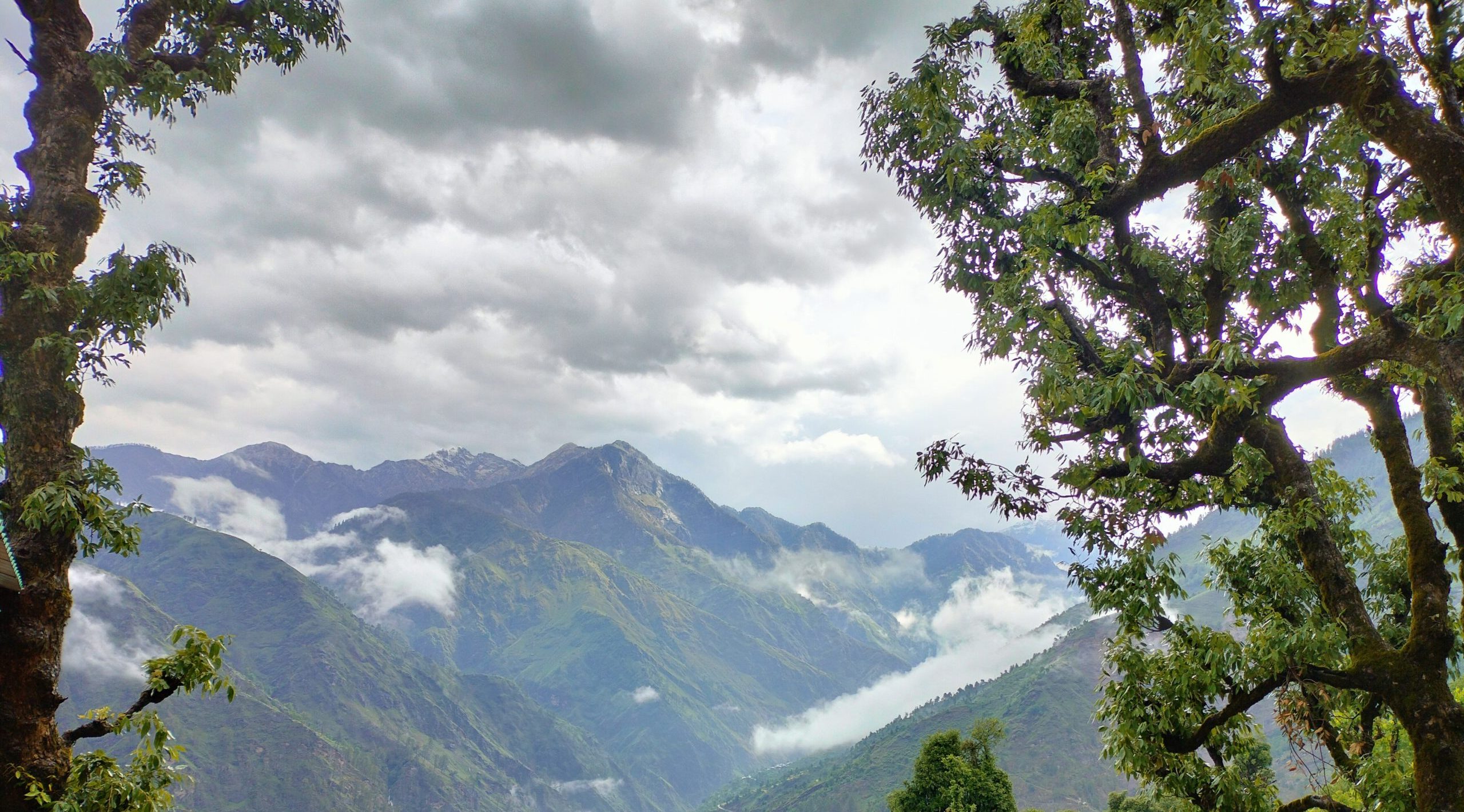
June 19, 2023
Sankri beyond the base of Har ki Dun - Trekker's experience
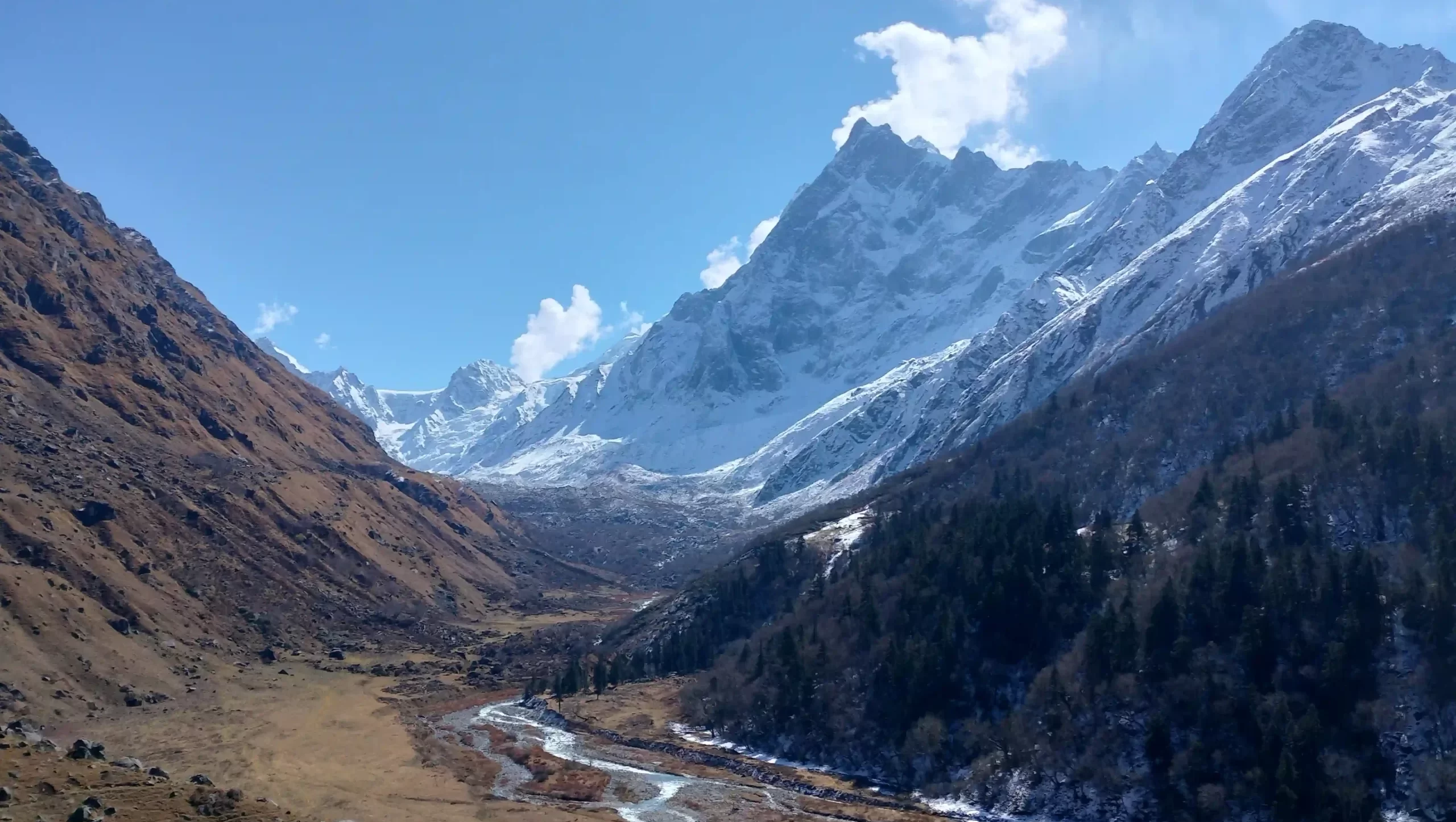
Your Guide to Altitude, Elevation, and Distance of Har ki Doon Trek
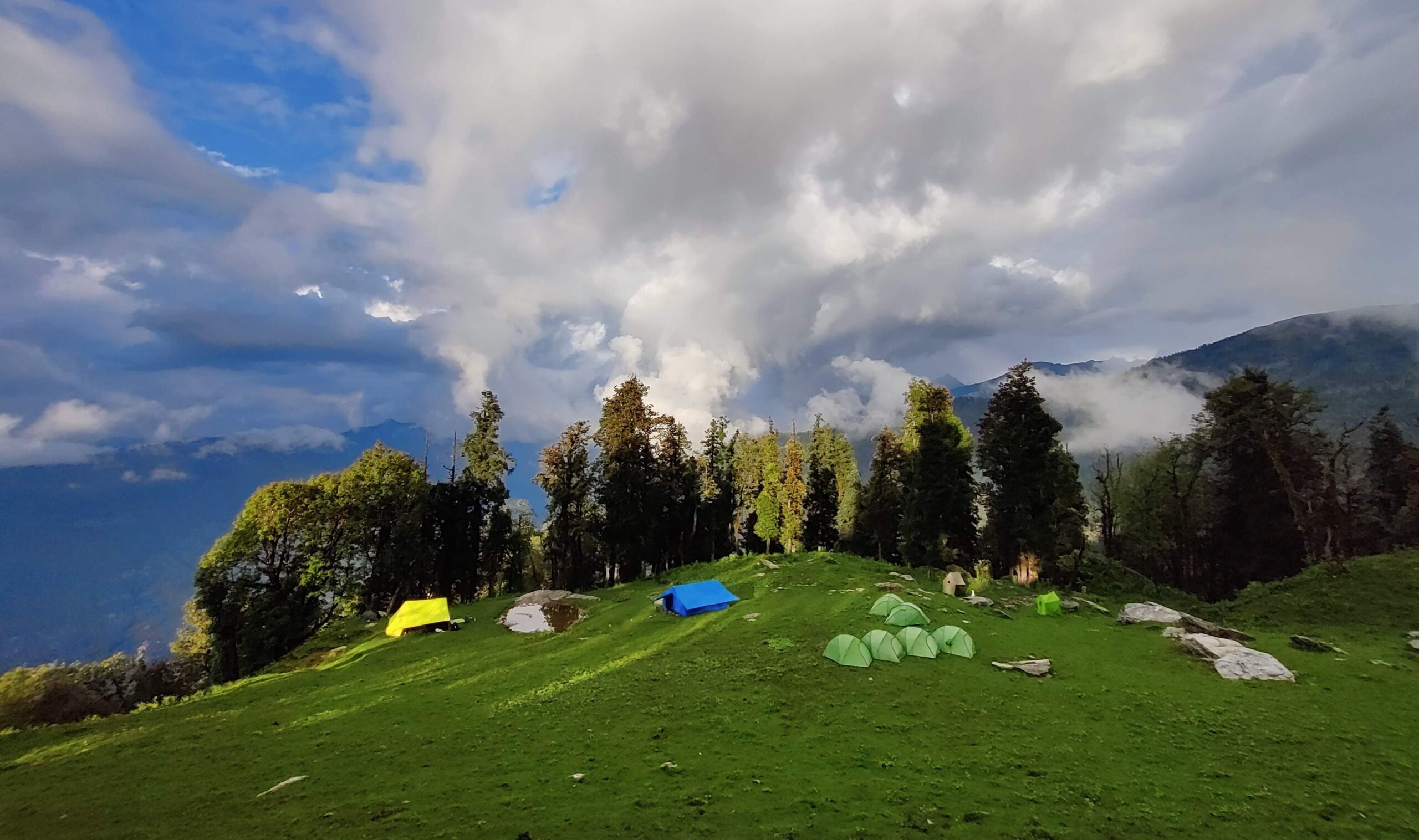
December 1, 2022
Your All-Year Adventure In Uttarakhand
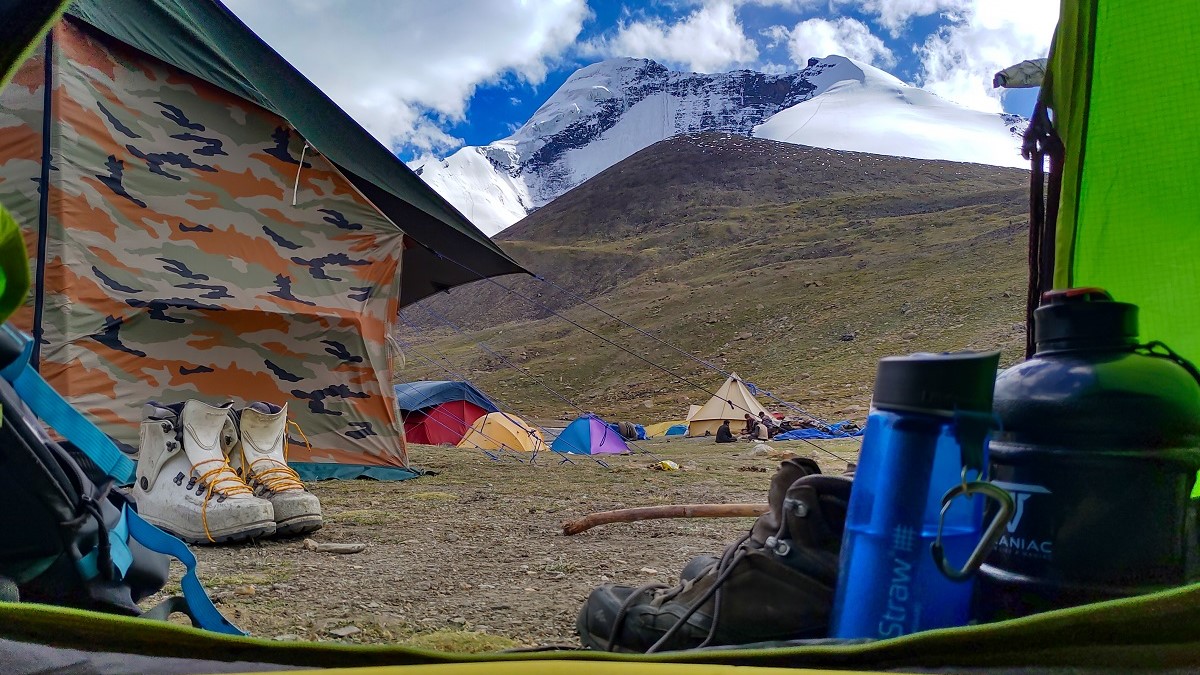
September 10, 2021
Why Is Hydration Important during Himalayan Treks?
Garhwal Himalaya offers thrilling treks. Hydration is crucial, and it's essential to drink water regularly, even in colder temperatures.
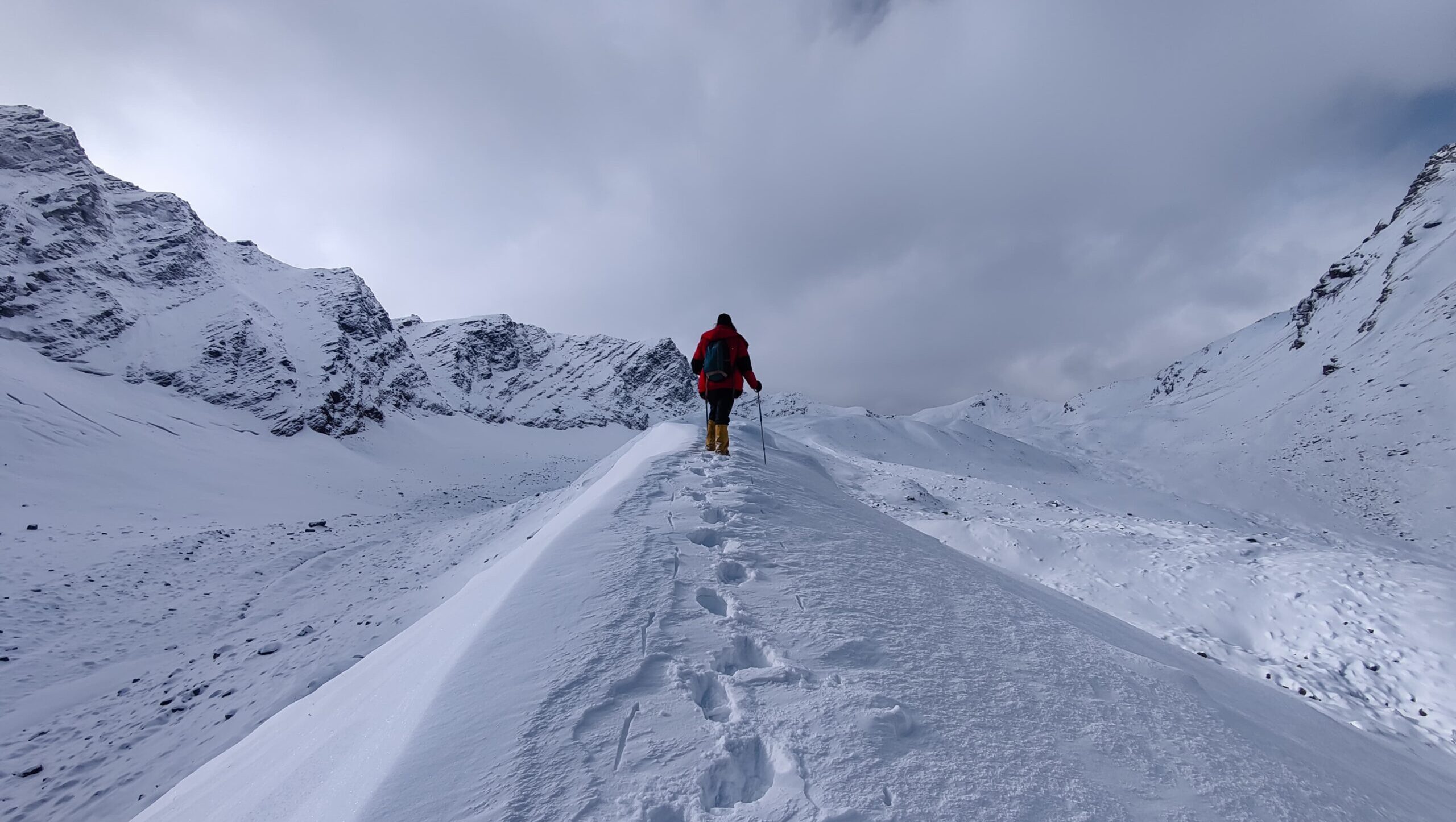
February 1, 2024
Why Bali Pass Should Be Your Next Trek?
Why Bali Pass Trek should be your very next trek? The complete guide. This artiucle has answer of almost all your questions.
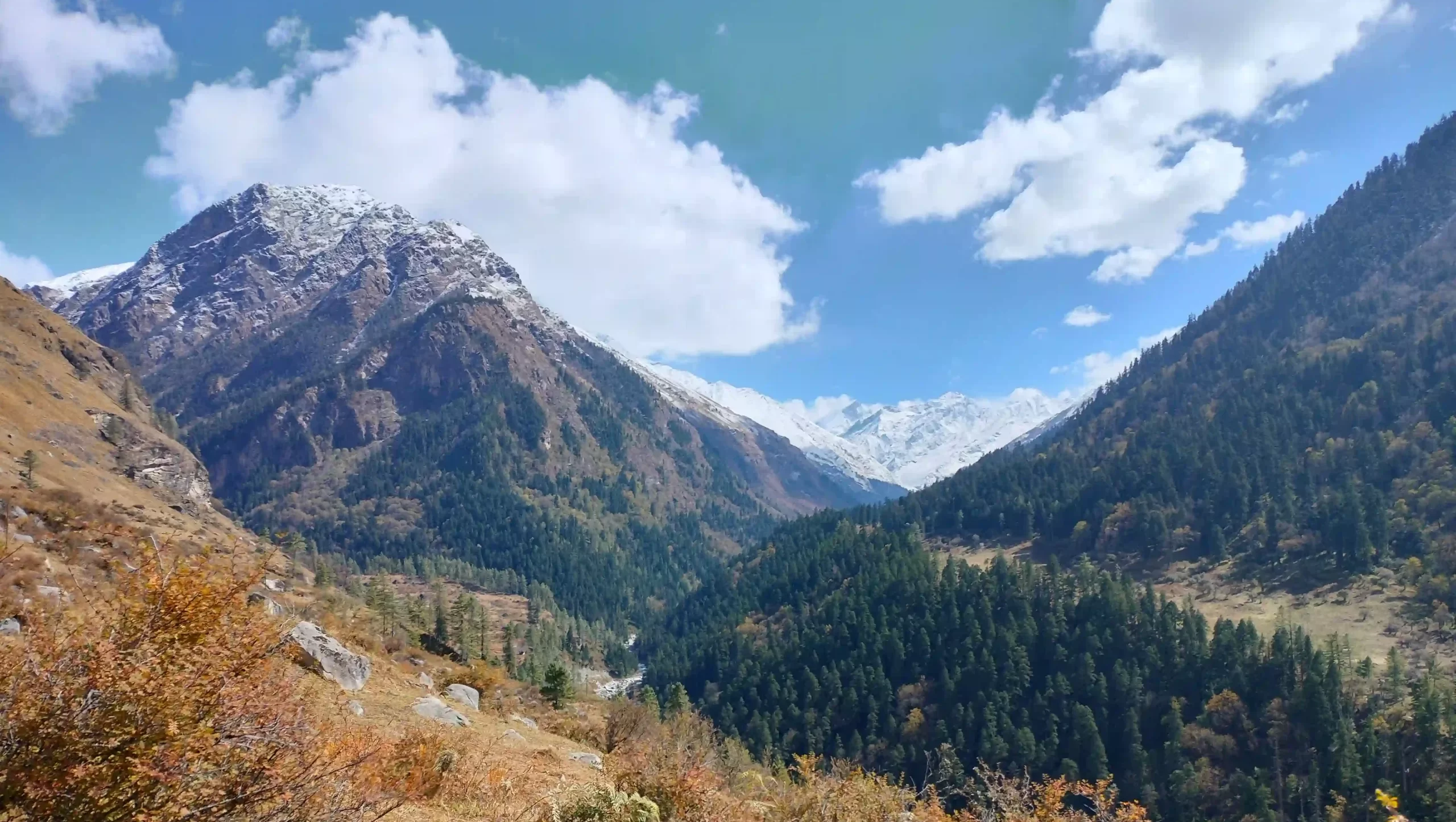
What's the difference between Har Ki Dun and Roopkund Trek?
September 4, 2021
Valley of Flowers and Hemkund Sahib
A day wise visual blog from Valley of Flowers & Hemkund Sahib trek...
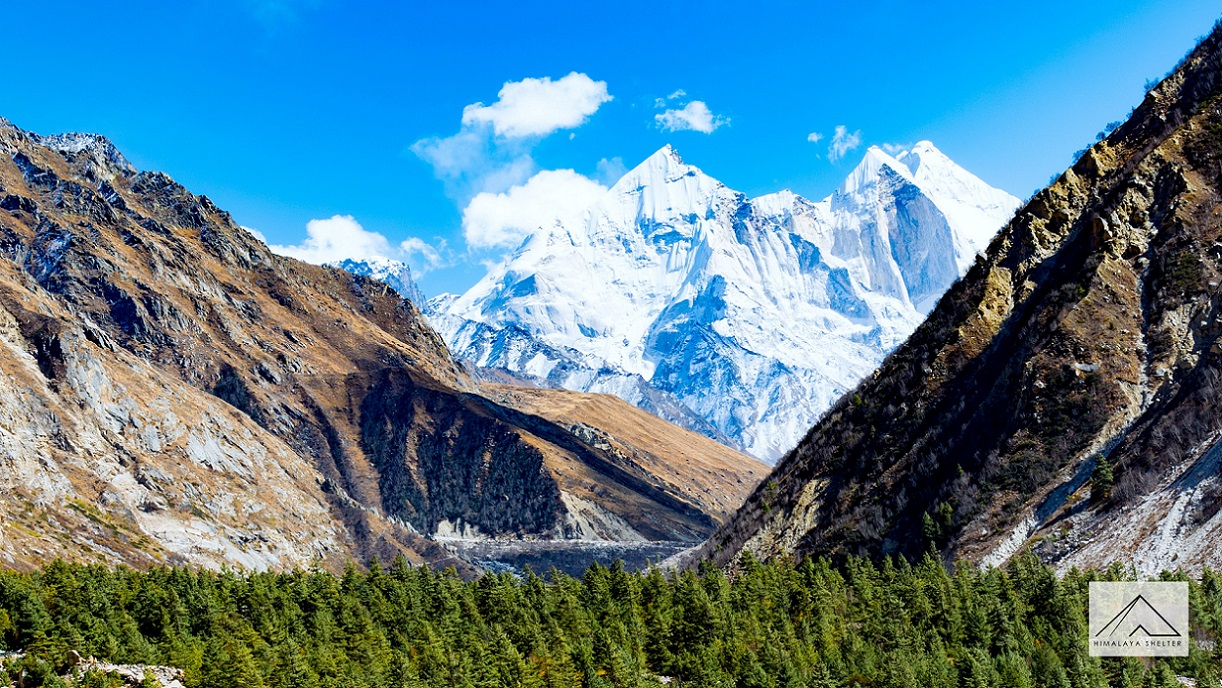
September 8, 2021
Uttarakhand - Your all year adventure destination
The “Land of Gods” is blessed with five distinct seasons. Read the blog to find out about Uttarakhand's all year adventures...

March 2, 2023
Unforgettable: Kashmir Great Lakes Trek in the Himalayas Explained
Embark on the Kashmir Great Lakes Trek, a unique journey exploring seven breathtaking alpine lakes amid Himalayan grandeur.
Har Ki Dun Trek
The Har Ki Dun Trek is a captivating journey that takes you deep into the heart of the Garhwal region of Uttarakhand, India. Known for its breathtaking natural beauty and rich cultural heritage, this trek offers a perfect blend of adventure and exploration.
The trail to Har Ki Dun winds through dense forests, charming villages, and scenic meadows adorned with colorful wildflowers. As you ascend, you will be treated to magnificent views of snow-capped peaks, gushing rivers, and cascading waterfalls.
One of the highlights of the Har Ki Dun Trek is reaching the Har Ki Dun Valley, a picturesque and secluded valley surrounded by towering mountains. The valley is known for its pristine beauty and is believed to be the mythical Swargarohini, the path to heaven.
Along the trek, you will have the opportunity to interact with the warm and welcoming locals, who will share their folklore and traditions. You can also witness their way of life, which has remained untouched by modernity.
The Har Ki Dun Trek is suitable for both beginners and experienced trekkers, offering a moderate level of difficulty. It is best undertaken from April to June and September to November when the weather is pleasant, and the trails are accessible.
Whether you are seeking an adventurous experience, a close encounter with nature, or a glimpse into the rich cultural heritage of the Himalayas, the Har Ki Dun Trek promises an unforgettable journey filled with awe-inspiring landscapes and cherished memories.
Arrival in Sankri
- Arrive in Sankri, a scenic village in Uttarakhand.
- Meet your trekking guide and fellow trekkers.
- Acclimatize to the altitude and explore the village.
- Overnight stay in a guesthouse.

Sankri to Taluka
- Begin the trek from Sankri to Taluka, a small hamlet.
- Trek through dense forests, cross a few streams, and enjoy the beautiful surroundings.
- Reach Taluka and set up camp.
- Overnight camping in Taluka.
Taluka to Osla
- Trek from Taluka to Osla, a charming village.
- Witness the traditional way of life and interact with the locals.
- Enjoy the panoramic views of the snow-capped peaks.
- Set up camp in Osla and spend the night under the starry sky.
Osla to Har Ki Dun
- Start the trek from Osla to Har Ki Dun.
- Trek along the Supin River, cross wooden bridges, and pass through meadows.
- Reach Har Ki Dun Valley, a mesmerizing destination surrounded by towering mountains.
- Explore the valley, enjoy the breathtaking views, and capture memorable photographs.
- Overnight camping in Har Ki Dun.
Har Ki Dun to Osla
- Trek from Har Ki Dun to Osla.
- Descend through the scenic trail, enjoying the natural beauty around you.
- Reach Osla and relax at the campsite.
- Overnight camping in Osla.
Osla to Sankri
- Trek from Osla to Sankri, retracing your steps.
- Take in the last glimpses of the stunning landscapes.
- Reach Sankri and celebrate the successful completion of the trek.
Depart from Sankri
- Depart from Sankri with beautiful memories of the Har Ki Dun Trek.
Note: Please note that the itinerary is subject to change based on weather conditions, group fitness level, and other factors. The trekking guide will provide updates and adjustments as needed to ensure a safe and enjoyable experience.
Please check the Inclusions and Exclusions before booking the trip. If you have any questions feel free to communicate with us.
- Breakfast and Dinner
- First Aid box
- Trekking Equipments
- Guide For Trekking
- All Permits
- Farewell dinner
- Personal Expenses
“Pristine Beauty”
I was rewarded with breathtaking views of snow-capped peaks and cascading waterfalls. The pristine beauty of the valley was simply mesmerizing.
“Delightful”
Camping in the Har Ki Dun Valley was a delightful experience.
Har Ki Dun Trek is considered a moderate-level trek, suitable for beginners with basic fitness and trekking experience. However, it is recommended to have prior trekking experience and good physical fitness to enjoy the trek comfortably.
The best time to undertake the Har Ki Dun Trek is from May to June and September to November. During these months, the weather is pleasant, and the trails are accessible. However, it is advisable to check the weather conditions and consult with local guides before planning the trek.
The Har Ki Dun Trek is usually completed in 6-7 days, including arrival and departure from Sankri. The actual trekking duration is approximately 4-5 days, depending on the itinerary and the pace of the group.
The Har Ki Dun Trek is considered a moderate-level trek. It involves walking on uneven terrain, ascending and descending trails, and crossing streams and rivers. It requires a good level of physical fitness, endurance, and acclimatization to high altitudes.
While there are no strict age restrictions, it is recommended that participants be at least 12 years old to undertake the Har Ki Dun Trek. However, the trek requires a good level of physical fitness, so participants should assess their own abilities and consult with medical professionals if needed.
The maximum altitude reached during the Har Ki Dun Trek is approximately 11,700 feet (3,566 meters) at the Har Ki Dun Valley. It is important to acclimatize properly and follow the instructions of the trekking guide to avoid altitude-related issues.
During the trek, accommodation is usually in tents or guesthouses/campsites along the route. Tents are provided for overnight camping, while guesthouses or campsites offer basic facilities such as dormitory-style or shared rooms with common washrooms.
It is highly recommended to hire a local trekking guide or join a reputable trekking company for the Har Ki Dun Trek. A guide not only ensures your safety but also provides valuable information about the route, weather conditions, and local culture.
The Har Ki Dun Trek falls within the Govind Wildlife Sanctuary, and a permit is required to enter the sanctuary. The necessary permits can be obtained in Sankri or arranged by the trekking company or guide.
Some essential items to pack for the Har Ki Dun Trek include trekking boots, warm clothing, rain gear, sleeping bag, trekking poles, sunscreen, hat, sunglasses, first aid kit, and personal toiletries. It is advisable to carry a backpack with necessary items and keep it lightweight.
.png?w=auto&h=400)
Har Ki Dun Trek
Har ki dun trek overview.
The Har ki Dun valley is appealingly surrounded by snow-capped mountains and alpine greenery, making it one of the most stunning trekking destinations exhibiting Uttarakhand’s exceptional natural grace. The beautiful Har Ki Dun Valley stands at a fascinating altitude of 3566 meters in a cradled form nestled in the middle of the Govind Ballabh Pant National park, which you can explore on your trek. The beauty of the Har Ki Dun trek is renowned for its pleasant weather all the time as the valley has mild climate in the spring and summer. You can witness a beautiful variety of wildlife with pretty flowers that are in their full bloom.
The name Har Ki Dun beautifully merges the words Dun (valley) and Har ki (Gods), implying it's the valley of Gods which aligns with the legendary background attached to it. One of the main draws of the walk is Swargarohini Peak, where it is said that the Pandavas used it to ascend to heaven. You will find the well-known Duryodhana temple set in the village of Osla which sheds light on the long-standing customs and beliefs of the people who are devoted followers of Duryodhana and revere him as God.
The valley receives snowfall every few weeks as winter approaches, turning the valley's lush green hues into immaculate whiteness. The Har Ki Dun trek deserves to be on your bucket list if you seek the ideal blend of primeval traditions and mountain splendor in a trek. There is a lot to witness and explore on this trek, especially the stunning and breathtaking vistas of the valley.
Book Har ki Dun Trek Package
Har ki dun trek, uttarakhand, essential information of har ki dun trek.

Maximum altitude- 11,675 ft above the sea level (3566m).
Grade- Easy to moderate.
Duration- 7 days & 6 nights.
Trekking distance- 47 km.
Trail type- Easy to moderate and less challenging trek with panoramic views of the lavish meadows and grasslands.
Rail head- The closest rail road stations are Rishikesh, and Dehradun.
Airport- Jolly Grant Airport, Dehradun
Snow Season- December to early March
Service from- Dehradun, Sankri, Taluka, Seema, and Osla
Base camp- Sankri
Best season- In the summer from April to June & September to December
Region- Dehradun, Uttarakhand
Who can participate- Anyone with a knack of nature, beauty, and adventure can take up on this exciting trek, however, you must be physically fit and healthy to comfortably take this trek.
Short Itinerary for Har ki Dun Trek
Day 1: Your journey begins as you drive from Dehradun to Sankri which is at 1950 meters.
Day 2: Your 2nd day begins with a smooth drive from Sankri to Taluka by road and then goes on trek from Taluka to Seema Village.
Day 3: This day begins with trekking from Seema to Osla where you trek for 12 kms.
Day 4: Start your 4th day with trekking from Jaundhar Glacier/Maninda Tal, where you explore the glacier and the rest of the landscape.
Day 5: Take your time on the return journey to Osla and spend the night there in a cozy rest hut or tent.
Day 6: Your day 6 starts with trekking from Seema to Taluka and then a smooth drive from Taluka to Sankri (1950 meters).
Day 7: Conclude your trekking expedition by driving back from Sankri to Dehradun.
Har ki Dun Trek Detailed Itinerary

Arrive at Dehradun & Drive to Sankri (Drive 220 km, Elevation 1950 m)-
- Arrive at Dehradun, the stunning capital of Uttarakhand and the center of Indian education, to commence your Har ki Dun trek.
- Take in Uttarakhand's beauty while simultaneously listening to music and chatting with your loved ones.
- Have your delicious meal to keep you full after a brief period of relaxation.
- Visit the quaint village of Sankri, where you will settle into a hotel or resort and relax for the remainder of the day.

Sankri to Taluka (Trek Distance: 10 kms, Duration: 6 hrs):
Following a substantial breakfast, the Har ki Dun walk will start. Ensure that you have enough water and nutritional snacks prior to beginning the hike.
Hike on to Osla, a location at an elevation of roughly 2560 meters, after arriving in Taluka.
Come across wild orchids throughout the road, and if you are lucky, you would be able to witness howling deer, leopards, bores, and more.
Traverse the Ton River and go through the Siyan Gad to reach the settlement of Dhatmir.
Prepare to spend the night in cozy tents beneath the stars, where a campfire will provide warmth and a variety of folklores will keep your attention stimulated.

- Osla to Har ki Dun Trek (Trek Distance: 8 kms, Duration: 6 hours):
- Begin your Har ki Dun trek in a peaceful valley filled with the aroma of nature.
- Discover the concealed aspect of the Garhwal Himalayas while taking in the beautiful vistas of the valleys and imposing mountains.
- Relax and have your meals, and converse with other tourists while exchanging trip tales.
- Most notably orchids, a representation of love, the slow rise to har ki Dun is decorated with vegetation and animals.
- Soak in the amazing vistas of Swaragarohini and the Jaundhar Glacier from the altitude of roughly 6200 meters.
- After a delicious meal, unwind for the evening under the 88 luminaries that make up the night sky.

- Har ki Dun - Jaundhar Glacier (Trek Distance: 15 kms, Duration: 9 hours)-
- Begin your trip over the Jaundhar Glaciers after a nutritious breakfast.
- Enjoy the stunning vistas of a 55 km wide expanse of snow and beautiful grasses.
- You may also enjoy the snow if it’s winter; if not, relax on the grass and take in the peace and quiet.
- Prepare to unwind for the evening with a memorable trip, and a session of approximately 16 km of hiking.

Har ki Dun - Osla (Trek Distance: 5 kms, Duration: 8 hours): - Since the journey back to Osla will take some time, you are suggested to stay hydrated at all times. - On the journey home, take in the splendor of one of the most stunning landscapes, vistas, nature, etc. - Spend the night at Osla in one of the offered rest huts or tents. Wish yourself a little pleasure.

Osla to Sankri (Trek Distance: 10 kms, Duration: 6 hours): - If you happen to be a fan of the natural world, this trek is your paradise. - You will soon be treated to the vistas of nomadic birds moving into the snow-capped Himalayas while enjoying delicious meals. - Your excursion of roughly 6-7 hours will reach a conclusion at Sankri after a trek of about 10 km through more difficult topography and breathtaking surroundings. - Once you are done with your dinner, take some rest.

Departure from Sankri: - Your Har ki Doon trek itinerary will end here, and you will be traveling back to Dehradun, where you will arrive roughly at 8 pm. - You will return home with recollections of your wonderful trip to tell your friends.
What to Pack for Har ki Dun Trek?

When you embark on a week-long Har Ki Dun Trek, you must withstand several days of arduous walking in a variety of climatic situations. Therefore, you need to pack some high professional trekking equipment like a comfortable pair of trekking footwear, a neck gaiter, waterproofing and breathable top layers, a backpack, and headgear, micro-spikes for boots for improved traction on snow, a flashlight, etc. to ensure that the walk is comfortable and effective for the entire team. The list of necessities for practically any multi-day Himalayan trip is provided here. For your information, this covers both individual clothing items and designated trekking equipment.
- Waterproof high ankle trekking boots as there will be a lot of walking on your trekking.
- Gaiters, only if there is more than 6 inches of fresh snow.
- Microspikes or mini ice crampons if there is hard snow.
- Waterproof trek trousers and jackets to keep you warm enough on your trek.
- Down jacket to keep you warm if the temperature drops to -10 or -15 degrees.
- Trek Poles are highly necessary for hard snow.
- Flash lights
- Waterproof outer and fleece inner gloves
- Neck warmers
- Headgears to protect your head.
- Sunglasses to protect you from direct UV rays.
- A couple of thermal inners.
- At least 4 pairs of socks with 2 cotton and 2 woolen.
- 2 or 3 T-shirts, preferably full sleeves.
- Lightweight trekking pants or trousers to help you in trekking comfortably.Warm innerwear.
First-Aid Kit Necessities-
- Sunscreen (SPF 50+)
- Waterproof Band-Aids
- Analgesic Spray (Preferably Volini, Moov, or Relispray)
- Antiseptic Liquid like Dettol or Savlon
- Antiseptic Powder, preferably Povidone-Iodine based powers like Cipladine or Savlon.
- Bandages and Crepe bandages
- Pain medicines as prescribed by the doctors.
It's likely that the typical or novice trekker wouldn't have all of this gear with them, and it might be extremely pricey to buy everything needed for just one trek. Renting all necessary gear prior to your walk makes perfect sense, with the exception of personal apparel. Always reserve the necessary equipment in advance to guarantee that it will be there for you once you reach Sankri.
Know Before You Go for Har ki Dun Trek

- Despite being rated easy, the Har ki Dun trek distance is significantly longer than several other treks. To tackle this, the trekkers must be in good physical shape. If anyone finds it difficult to carry the luggage, there are also ponies and porters available for rent, notably throughout the hiking season.
- It is important to bring a professional tour guide with you on your walk. The expert would be able to assist you if you were to deviate from the path easily.
- In order to survive the erratic mountainous weather, which could get very cold, be sure to be well-prepared with clothing and essential safety clothing.
- Maintain your hiking equipment secure and always have necessities available, such as a windproof coat, dry socks, and hats.
- To prevent frostbites, be sure to use the proper, high-quality boots and appropriate boots. Choose the correct socks to help with blood flow.
- Bring a comfy, robust sleeping bag with you. Bring a sturdy rucksack with an interior made of plastic or waterproof materials that can withstand rough wear and tear. Bring documentation with you in case the authorities ask you to show it.
- Be ready for regular rainstorms while you are on the trekking trails.
- Keep yourself hydrated at all times to safeguard.
- Make sure you stay close to the campsite and, of course, your trekking team.
- Be extremely careful during this time because the trail gets slick after the snow melts or during the downpour. Make a list of essential items and keep them handy all the time.
- Brisk walking drills with a backpack containing the essentials for the expedition should be done before taking a trekking excursion. Assess the maximum weight you can lift without discomfort.
- Use walking poles to aid you up steep inclines.
- Eliminate littering! If necessary, bring extra plastic bags so that you can carry the junk back and discard it there.
- Be careful while trekking down since when descending, a person's full weight moves downward, raising the danger of stumbling or slipping.

- Driving to Sankri Market- 210 km (1920 meters) and takes 8/9 hours.
- Drive from Sankri to Taluka via cab with a distance of 11 km and same day trekking to Cheludgad Camp which is 12 km (2600 meters) away, taking at least 4 to 5 hours.
- Trek from Seema Village in Har ki Dun (13 km), taking 6 ton 7 hours.
- Trek from Har ki Dun to Jaundhar Glacier while visiting OSLA Village (13 km) which takes 5 to 6 hours.
- Trek from Osla to Taluka to Sankri, which takes 4 to 5 hours (13 km).

By Air- The closest airport to Har Ki Dun is Jolly Grant Airport in Dehradun. Only 200 kilometers separate the airport in Dehradun from Sankri (Har Ki Dun). Sankri (Har Ki Dun) is accessible from Dehradun via bus, taxi, and sharing taxi. The airport in Dehradun is well interconnected to other important airports in India.
By Rail- Sankri's closest railroad stations are those in Haridwar, Rishikesh, and Dehradun (Har Ki Dun). All of India's main cities are very well interconnected by rail to these three transport hubs. But for Har Ki Dun, the majority of individuals choose to travel to Dehradun Railway Station. Dehradun to Sankri direct bus service is available (Har Ki Dun). Sankari (Har Ki Dun) is moreover highly accessible via sharing taxis and cabs.
By Road- You must first travel to Dehradun before you can get to the destination as the Har ki Dun trek distance from Dehradun is approximately 99 km. The major cities of India are easily accessible by road to Dehradun, which is also the capital of Uttarakhand. You can then take an early-morning bus from Dehradun to Sankri after that. You should be aware that just three buses depart Dehradun for Sankri each morning (Har Ki Dun).
After that, you can take a bus to Purola and Mori, from where you can take a pooled taxi to get to Sankri (Har Ki Dun). The following information pertains to vehicles from Dehradun to Sankri in Har Ki Dun-1st Bus- A private bus starts at 5:30 am2nd Bus- Another private bus starts at 6:30 am3rd Bus- A public bus starts at 8:00 am.

April to June and September through December is considered the best time to go for Har ki Dun Trek. But you can take the adventurous Har ki Dun trek at any time of the year as the weather in Har ki Dun is ideal for trekking and accommodates hikers of all skill levels. The weather remains pleasant, though it might face abrupt decreases in temperatures at times from 6 degree celsius to -11 degree celsius at night. Now, to describe that in detail, let's check out how the temperature remains in the three seasons and how it is ideal for trekking. Winter Season- A close-up, continuous panorama of the snow-covered Himalayan summits is only possible during the winter season. Camping in the middle of wilderness is one of the most popular things to do in Har ki Dun during the winter.Summer Season- Har Ki Dun Trek in the summer is particularly special because of the scenery and the comfortable weather. The valley is completely covered with tropical gardens during the summertime. Throughout the nighttime, the sky is clean and provides a stunning clear night sky, making it possible to see the fictional Milky Way galaxy. Monsoon Season- If you are taking a Har ki Dun trek in the monsoon season, then you must note that it rains regularly in the Uttarakhand Himalayas, making the trek even more beautiful to check out. The days are comfortable to walk around, however the mornings and evenings might get chilly.
General Trivia About Har ki Dun Trek

Har Ki Doon valley is encircled by mountains, and en route you can also discover locations associated with Hindu mythology. The valley is host to the about 350-year-old remnants of the Lord Shomeshwar Mahadev shrine and pandavas.
Locals claim that Pandavas have traveled this route to paradise as well. Imagine hiking the same path the Pandavas did.
These villagers' attire amply reflects their connections to their genealogical origins, as well as their customs and culture. The bulk of the people rely on farming for their primary source of income. Some of them make their own clothing for overcoats, while others farm rajma, rice and potatoes for their livelihood. You can buy their goods straight from them since doing so increases their revenue.
Osla hamlet, with customs from the Mahabharata era, is reachable by trekking to Har Ki Doon valley. The residents of this village revere Duryodhan, a dishonored figure from the Mahabharata. According to beliefs, Duryodhan may have been a blessing for the natives here throughout that time, and as a result, the temple was created in his honor. The peasants still solely pray to Duryodhan; they do not pray to any other gods.
Why to Go for Har ki Dun Trek?
India's Uttarakhand region contains the lovely valley of Har Ki Doon. Its length is 56 kilometers, and the views are breathtaking. You'll get mind-blowing views of the Himalayan peaks as the walk winds through verdant grasslands and rich greenery. It is one of the most well-liked paths in Uttarakhand as it lets you walk on a smooth path on the trek. Additionally, you'll get to visit some of the finest well mountains in the entire globe.
You will find a lot to explore on this Har ki Dun trek. The valley is stunning and has breathtaking views as Jumdar Glacier serves as the trek's starting point. Although there are some rocky parts, the topography is fairly easy to moderate. An impressive waterfall marks the end of the road which is the trek's endpoint and provides up-close vistas of some of the most stunning Garhwal Himalayan peaks.
The Swargarohini peak as well as the surrounding Kala Nag and Bandar Poonch mountains will be clearly visible to you. There are countless birds in the area. The Himalayan Langur and Blue Sheep are just two of the many species that call the region their abode.
You May Also Book
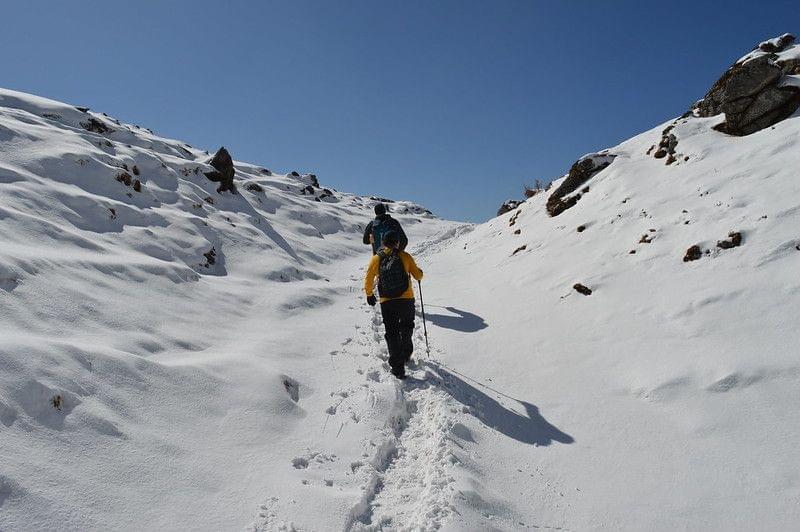
FAQ's of Har ki Dun Trek
What is the trekking distance of har ki dun trek.
Har ki Dun trek distance is around 47 km and it takes a full week to accomplish. Despite this long distance, the trek brings the riches of nature and cultural significance where you can enjoy and relax and soak in the heavenly nights. You can also take a leisurely stroll across the grasslands or the orchid tracks while trekking the route, which makes Har Ki Dun trek one of the best trekking trains in Uttarakhand.
How should I prepare for my Har ki Dun trek?
To embark on a Har ki Dun trek journey, you must remember to have the right hiking equipment, and as the area gets a lot of rain, you should have woolens. Your identification is something else you shouldn't forget because you'll require it at the inspections. You can arrange your leisure by simply creating an itinerary that is appropriate for the elevations and weather conditions, or you can just reserve a bundle from the providers.
What is the difficulty level of Har ki Dun trek?
The Har Ki Dun trip, one of the well-known treks in the Garhwal Himalayas, is generally easy to moderate to tackle as it is frequently associated with first-time trekkers. This trip leads to the lush Har Ki Doon valley, which is the most popular route for enjoying excitement in the Himalayas. It is situated at the foothills of Fateh Parvat at 3556 m. It is not recommended for anyone who has respiratory problems or who is physically harmed to do so. The only athletic preparation needed for this hike is high endurance.
What clothes do I need to pack for my Har ki Dun trek?
On this expedition, adventure seekers are likely to bring the essential items with them. Wardrobe necessities include thick wool and thermal clothing, waterproof outerwear, UV protection, and breathable outerwear. Keep with you a pair of snow boots, trekking poles, and hiking boots, lotions and lip balm, torch, water bottle, additional carry bags for damp clothes, and of course a whistle. Make sure you cross-check your list twice.
What is the maximum altitude of Har ki Dun trek?
The maximum height or altitude of Har ki Dun trek is 11,500 ft or 3566 meters.
Treks in Himachal
Treks in uttarakhand, weekend treks in india, treks in ladakh & kashmir, treks in nepal, treks in sikkim.
.png?w=auto&h=400)
The content and images used on this site are copyright protected and copyrights vests with the respective owners.
© 2024 www.heyhimalayas.com All rights reserved.
Username or E-Mail
Forget Password?
Do not have an account?
Already a member.

- Our Mountaineering Experience
- UTILIZATION OF TREK FEE
- OUR COMMITMENTS
- Declaration Form
- Top Destinations
- Expeditions
- Maintenance
- Destinations
- One Day – One Time
- Portfolio Grid
- Portfolio Masonry
- Portfolio Modern
- Portfolio Side Thumbnail
- Tour & Treks
- How the payment works
- Admin – Transaction Page
- Admin – Single Transaction
- Customer – Wishlist
- Single Posts
Har Ki Dun Trek
Adding item to wishlist requires an account, already a member.
Username or E-mail
Don't have an account? Create one.

Why Book With Us?
- No-hassle best price guarantee
- Customer care available 24/7
- Nights Camping & Hotel Stay
- Free Best Quality Delicious Food
Get a Question?
Do not hesitage to give us a call. We are an expert team and we are happy to talk to you.
+91-7579143813
Trek Overview
Har ki Dun Trek – Enchanting beauty trek to the valley of Gods
Har Ki Dun is a fascinating valley in the Garhwal Himalayas at an altitude of 3645 m, also known as “The Valley of Gods”. It is surrounded by alpine vegetation and is highly rich in Flora and Fauna. Borasu Pass connects Har Ki Dun to Baspa valley, it is the main source of Yamuna River and the river flows through the valley. Har ki Dun is known for its captivating beauty, alluring greenery, serene environment, and breathtaking views.
Har Ki Dun has an invigorating climate which soothes the mind
“Himalayan Monal” The state bird of Uttarakhand and many other animals can be spotted in the forest region. This valley offers the best views of Jaundhar Glacier, Swargarohini Peaks I II & III, Bandarpoonch and Black Peak, they are visible altogether. Har Ki Dun Trek can be done in winters and summers both, it has a different charm in different seasons, in winters there are all snow-covered mountains and in summers there is soothing greenery all around. This place has an invigorating climate that soothes the mind.
Scenic views In Har Ki Dun Trek
This place is extremely beautiful with the best scenic views. It is said that there is a river which has not emerged yet and people don’t know about it. Here are famous temples of Lord Someshwar, people come here to worship them as it is the divine Valley of Gods. To reach Har Ki Dun you have to go through some villages like Osla where you can have a glimpse of the local life of villagers and their traditional values. At Osla there is Duryodhana’s temple. This place is related to Hindu mythology and has the best scenic views so this trek becomes a delight for trekkers.
The Best drive with HPMA
Welcome to HPMA – Transport – Pick up to you from Dehradun Railway Station Drive to Sankri. Sankri is the starting point of many treks and here is our Hotel Swargarohini Palace and our HPMA Office.
Har Ki Dun Valley, it is one of the most beautiful valleys in the Western Himalayas. This is god shiva valley A delight for trekkers, both in summer and winter, this valley is accessible through Govind National Park – known for its rich variety of flora and fauna. The trail through alpine meadows, moraine ridges, glacier basins, pine forests, and ancient villages, gives you spectacular valley views and a chance to experience the wonderful slow-paced local lifestyle.
We are Per Day Climb Altitude for this trek
Note – Level: The trek experience and moderate Har-ki-dun trek valley is classified Trek. We are going about (2,000 feet) in altitude per day.
1. Dehradun -( 730Meters )
2. Sankri – (1920, Meters )
3. Cheludgad Campsite – (2648, Meters )
4. Hal chain (3000, Meters )
5. Har-ki-dun (3645, Meters ) (11796feet)
Trek Highlights
Duration : 8 days (Dehradun to Dehradun)
Best Season : Throughout the year
Level : Moderate
Highest Point : (3,645 m)
Trekking distance : 56 km
Weather: Nights are cold and day temperature is pleasant during the season.
Average Temperatures : (winters) (-3°C to -5°C) (-5°C to -10°C) (summers) (5°C to 15°C)
Location Chart : Dehradun, Mussoorie, Purola, Netwar, Sankri, Taluka. It is located in the north-eastern part of Uttarakhand starting is near the Himachal border, heading east and then south.
Getting to the Base Camp and HPMA Office Sankri
Take an overnight train to Dehradun from Delhi. New Delhi-Dehradun A/C special train from New Delhi station is the best option. The train reaches Dehradun at 5.40 am. If you Meet to our office member and drive to Sankri base camp office Har-ki-dun Road Sankri.
Jolly Grant Airport is the airport serving Dehradun, located about 25 km from the city. There is a daily flight from Delhi to Dehradun
Note:- Bangalore to Dehradun Flight Available & Delhi to Dehradun
Nandadevi Express – Train no: 12205 (Departure 11:50pm; Arrival – 5:40am) Dehradun Express – Train no: 12687 (Departure – 9:10pm; Arrival – 5:00am)
There is a regular bus service from Delhi to Dehradun, from Delhi, ISBT Kashmere Gate.
We would suggest you take only government buses from ISBT Kashmere Gate. Private buses ply from outside ISBT and they are not trustworthiness.
Usually, buses drop you at Dehradun ISBT. From there you have to come to Dehradun Railway Station to meet us railway station 6:30 Am.
Day 1: Dehradun to Sankri (210km) (7/8hours) (1920m
Our pick up point is Dehradun Railway station or ISBT, meet us there and then drive towards Sankri you can have your breakfast at Kempty Fall which is a famous picnic spot and is famous for a waterfall. Have your lunch in middle of your journey at Purola. It’s a picturesque drive to Sankri, you will get fetching views from your window and the drive will be through Dehradun, Mussoorie, Nainbagh, Damta, Newman, Purola, Mori, Netwar these are beautiful places in the Himalayas.
Sankri lies in Govind Wildlife Sanctuary of Uttarkashi district, it is a village with a mini market famous for wooden huts which serve delectable food. You will see apple orchards here and greenery all around. Reach Sankri have a glace of snow covered mountains, this place is pollution free, enjoy the invigorating climate. We own a hotel there named “Swargarohini” Relax, have your meal and overnight stay in hotel.
Day 2: Drive from Sankri to Taluka (11km) trek to Cheludgad/Seema (13km) (2,700m) (4/5hours)
Have your breakfast and then leave for Taluka by taxi, it is 11km away from Sankri when you reach there take a short break and start your trek towards Cheludgad, the trail takes you through dense pine forest, varieties of animals live in this region as it is rich in flora and fauna. The trail is rough and is not a very good condition.
When you trek through the dense forest, trees accompany you and languor’s hanging from one tree to another can be spotted there. Chirping of birds can be heard and rare species of birds can be seen here. The “Himalayan Monal” state bird of Uttarakhand is found in this area.
If you lack time to reach Cheludgad camp then 2 km ahead Taluka there is a campsite near a stream which is water source for that campsite. Setup your tents and enjoy dinner and night stay in tents.
Day 3: Cheludgad to Seematra (7km) (4/5hours) (3400m)
Today’s trek is 7 km long and it can be done in 4-5 hours, have your breakfast early morning and packed lunch will be provided. Trek from Cheludgad to Seematra. You can know about the traditional values of people living here by talking to villagers, this place has got scenic views and is extremely beautiful. The greenery is eye pleasing and heartwarming and in the month of winters it remains covered by snow and looks alluring.
This place is related to mythology and you can know about many stories of Pandavas and Kauravas. Villagers here grow potato, Rajma and Red rice is very famous her. They have sheep’s and the villagers use their wool to weave coats, folk dresses and jackets. Here is a very famous village named OSLA there is a temple of “Someshwar Mahadev” trek towards this village, the walk is easy along the side of river. Reach your campsite with beauty all around, enjoy food and stay at tents.
Day 4: Seematra to Har-ki-dun (7 km) (3/4 hours) (3645m)
Have your breakfast early at Seematra which is 7km away from here, start your trek with packed lunch to “Har ki Dun” valley or the “The Valley of Gods”. On the trail to Har ki Dun valley you will come across many stream from where you can fill your water bottles, ascend slowly there are number of pine trees on the way. From there the snow-capped mountains glimmer from a distance and attracts the eye of visitor, the views from there are fetching and captivating.
This area is home to a number of animals and birds, colorful flowers bloom making this place more beautiful, spotting Himalayan birds is a delight as they look adorable. Now, as you go further the climb gets steep when you cross this region you will see Har Ki Dun a field all covered by snow which is divided by Karmanasha stream.
This valley looks divine with exotic views and inherent beauty, from there you can have amazing views of mountains standing tall. Swargarohini from here looks the most beautiful. The environment of this place is soothing and peaceful, it is believed that Pandavas ascend to heaven was through this idyllic valley. Your campsite for today is this ideal place, spend your night in the divine aura and have your food in tents.
Day 5: Har-Ki-Dun campsite (3km/9km|) (4/6hours) (Manida lake) (Jaundhar Glacier)
Nothing can be better than a morning in “Har Ki Dun” valley, the views are inexplicable. The sounds of flowing water can be heard and the chirping of birds with first ray of sun on the mountains makes this place look like a scenery. The reflection of sun rays enhances the beauty of “Himalayas” and the greenery is eye pleasing.
Have your breakfast and explore this idyllic place, it can be easily explored in 1-2 hours after that spend time in peace there creating memories away from your busy schedule. You can explore Manida Lake which is 3km away from here, trek towards Hata Peak and the meadows with alpine flowers welcome you, and there you can find a rare flower “Brahma Kamal” which is not easily found.
From there you can have majestic views of glaciers and if you want to go Jaundhar glacier then the trail is through ridges and it isn’t easy to reach there, the trail remains covered by snow but further becomes normal. Only after reaching the final ridge you can have sight of Jaundhar glacier and other peaks. Return to campsite, dinner will be served there in tents and have relaxing stay in tents.
Day 6: Har-Ki-Dun to Cheludgad and leave for OSLA village (13 km) (5/6 hours)
Today’s trek from Har Ki Dun to OSLA via Cheludgad is long one but descend is easy and you will reach your campsite in 5-6 hours. Start your trek and we will provide packed lunch, have it in middle of your trek. On the way Black Peak and Bali Pass are visible which looks bewitching, with the views of these great mountains mesmerizing landscapes and sights makes it picture perfect.
This downhill trek is easy with exotic views, continue trekking and you will reach OSLA village, there is a very famous temple of “Duryodhana”. The people here are away from cities, their lives are simple and in most of the houses goats and cows are there. Pollution free serene environment, traditional and religious values of this place will amaze you. Get back to Cheludgad campsite setup your tents there and spend your nights in peace away from city life.
Day 7: From Cheludgad to Taluka (13 km) (2400 m), on same day drive to Sankri by taxi (11 km) (5/6 hours)
This is the last day of your trek today you will get back to Sankri from where you started, bid goodbye to this place and start your trek towards Taluka. Descending is easy, have a glance of snow covered mountains and the greenery around you, it looks captivating. Have lunch in between of your journey. Reach Taluka take a break for some time then leave for Sankri by taxi, you will reach there in 2 hours. Enjoy your food and stay in “Swargarohini Palace”.
Day 8: Drive from Sankri to Dehradun by taxi (210 km) (7/8 hours)
Leave for Dehradun early so that you can reach by 6:00 pm.
Include / Exclude
What is included in this trek.
Transport from Dehradun to Dehradun
Forest Permit and entrance fee
Accommodation in Hotel
Accommodation in tents on twin share basis during trekking.
All meals, Breakfast, Day Pack, Lunch, Pack Lunch, Tea,Coffee, Snacks, Soup, Dinner
All camping gear including
Separate Tent, High quality
Liner, Pillow, Separate Toilet tents, Dining Tent, Chair, Dining table
your uploading
Guide, Porters, cook, Helper
Mules, Kitchen team
Good Experience local Trek Leader guide
Walkie Talkie, for contact each other’s
Micro crampons
Hiking Pole
What is not included In this trek
Personal Toiletry Items
Personal Medical Kit
Medical Certificate
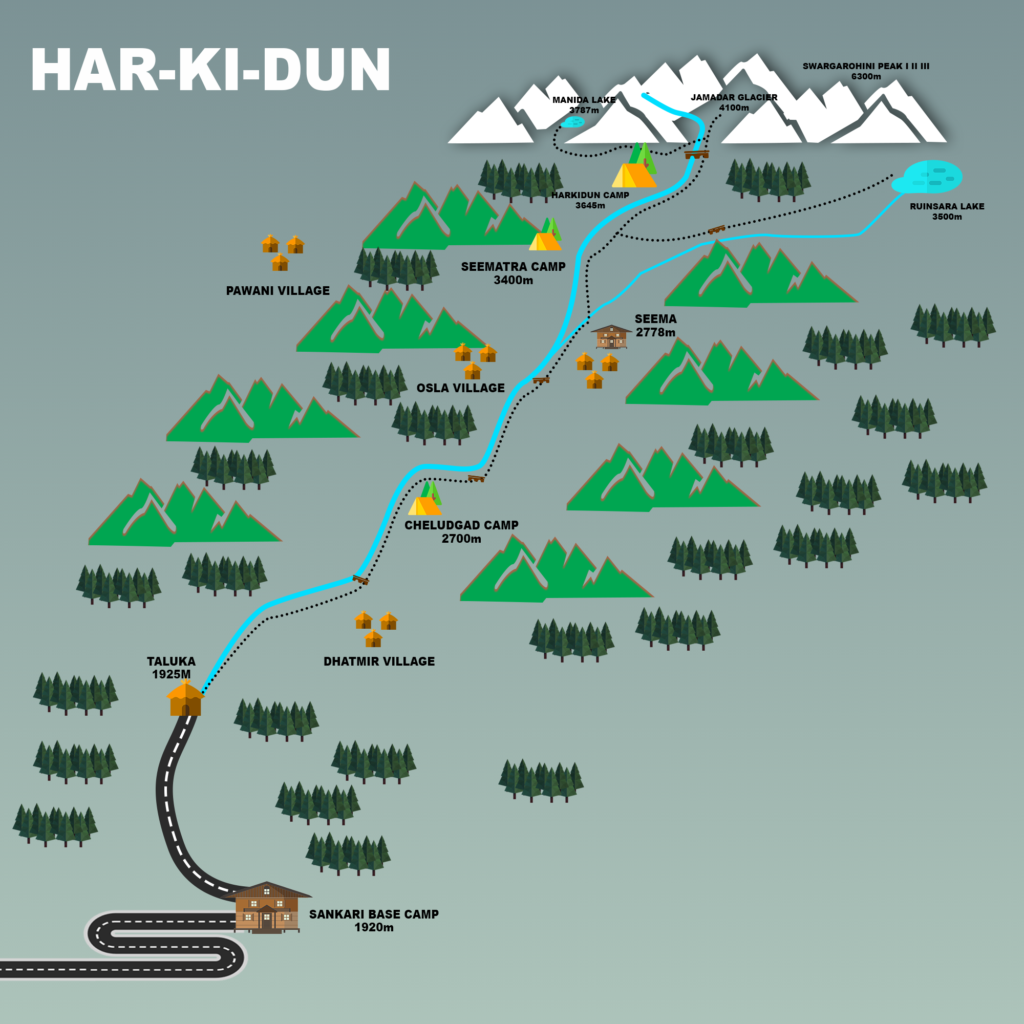
Related Tours

Vasuki Tal Trek

Hampta Pass Trek
- +91 9611102222
- [email protected]

- Upcoming Treks Two Day Treks One Day Treks Karnataka
- Himalayan Treks
- We also offer Corporate Outings Member Registration
- About Our Company Our Social Responsibility Career @ BMC BMC Building a Team in Chennai Contact us

- Har Ki Dun Trek, Himalayas - 2023
- Need help for booking
- Himalayan Treks & Expeditions
- Himalayan Treks in Uttarakhand
Cloaked in mystery, and located at an altitude of 3566m, this almost untouched land is situated in the westernmost part of the Himalayas. A challenge to the adventurers, Har-ki-Dun is supposed to have shared part of its history with the Pandavas. Har-ki-Dun (Har stands for Hari, or Lord Krishna, the blue-god, and Dun means valley), lies in the westernmost Himalayas of Garhwal, sharing its boundary with eastern Himachal Pradesh, and is dominated by the Swargarohini peak (6096m).
- Minimum Age : Above 15 Years
- Maximum Age : Below 45 Years
Few important points to note before you decide to register:Click Here
What is included in the tour.
- Transport from Dehradun to Dehradun
- All vegetarian meals starting from Dinner on Day 1 to Breakfast on the last day.
- Tented accommodation throughout the trek on a triple sharing basis.
- Guesthouse/Homestay Accommodation on 1st and last Day
- Professional guide, cook and support staff
- Camping equipment with Clean sleeping bags and mats (Good quality ¾ or 4 season ‘A’ shaped or dome tents)
- Kitchen tents, common tents, toilet tents
- Forest entry charges for Indian nationals
- Porter and mule support to carry camping equipment only.
What is NOT included in the tour
- Any expenses of personal nature like phone call etc.
- Personal expenses like tips, personal medicines, phone calls etc.
- Travel from Delhi to Dehradun.
- Any transport support during the trek apart from what is included above
- Any cost or services not mentioned in the Inclusions
- Accommodation in Dehradun
- Cost arising due to unforeseen incidents like bad weather, medical evacuation, road blocks etc
- Porter/mule charges to carry personal luggage can be arranged at an additional cost of INR 300 per day (1 soft bag per person < 12 kg)
Basics Gears
- Trekking Shoes
- Trekking Pole
- One Water Bottle (one litre)
- Trekking Jacket
- Warm Layers
- Two trek pants
- Full sleeve dry-fit T-shirts
Accessories
- Sunscreeen Lotion (SPF 50/70)
- Lip Balm (SPF 30)
- Synthetic hand gloves
- Three pair of Socks
- Raincoat/Poncho is a must
- Daypack (Recommended), for summit Day
- Plastic cover (for wet clothes in winters and rainy season)
Mandatory Documents
- Original and photocopy of government photo identity card- (Passport, Aadhaar Card, Driving license or voters ID)
Day - 1 Dehradun to Sankri ( 210 Kms, 8- 9 Hours Drive)
We Pick up all the participants from Dehradun Railway Station around 6:00 am. After a short briefing, the scenic drive to Sankri begins. This amazing road trip slowly changes from straight City Roads to zigzag bends of Mussoroie Mussorie – “Queen of the Hills” is a quaint hill station, situtated 32km away from Dehradun City. As soon as we are about to reach mussorie , you will witness a beautiful view of Doon Valley. The astonishing beauty of the small city surrounded by dense Forest and lower Himlayan range is hard to describe in words.
We cross popular hill towns like Nainbagh, Damta, Naugaon, Purola (kamal Ganga flows alongside the route), Mori, Natwar( Confluence of Rupin supin ) on our way to Sankri. After Purola the drive to Sankri passes through a beautiful stretch of Pine forests.
Finally, after the long drive of 9 hours we reach Sankri by evening. Nestled at an elevation of 6400 ft, Sankri is a quaint village as well as a small market with couple of shops around. Most of the shops retails with Warm clothes, Trek Essentials and rental gears. Sankri is the base camp of many popular as well as unexplored treks in Govind Pashu Wildlife Sanctuary. This region is delight for beginners to start with their trekking experience and also for Professionals to boost up their endurance with some of the most challenging trails in India.
Today’s accommodation and dinner will be in a Guesthouse/Homestay in Sankri or Saud. After a short briefing about the next day schedule, we head towards our allotted rooms.
Day - 2 Sankri to Chilurgad – 1 Hrs Drive and 5-6 Hrs Trek .
Post Breakfast, we start today’s journey. We board a local vehicle from sankri to reach Taluka, the starting point of Har ki Dun Trek. After a crazy one hour ride through the curvy and bumpy roads, the vehicle drops us near the Taluka village.
Taluka is a small village with a few shops and Government guest houses. The trek begins from here starting from a narrow rocky path. The fragrance of cedar trees can be felt around Taluka. The trek begins from a well marked trail along the supin river on our left. The intense tone and gushing rapids of the river makes our journey more fascinating.
During summer season, one can spot huge farmlands covered up with Chaulai, a local crop. The treks stretch with little ascends and descends making the trail an easy as well as a bonus for today. After walking for a distance, we spot a tiny settlement on the ridge, known as Datmer village. Several paths can be discovered to reach Datmer village. A beautiful sculptured wooden bridge can be seen which passes to the forest, This bridge is identified as Baranti pull often crossed by locals to collect wood stock. Trees like walnut, maple, and oak are most common on this trail. One can find walnut lying on the trail during autumn season .
As soon as we will reach Chilurgad, tents can be seen pitched at a distance. The camping site offers a graceful view of little streams that merges into the supin river. Enjoy the chilly evening with sips of tea and a view of Grand peaks covered with snow.
Day - 3 Chilurgad to Seematra (4-5 hrs trek)
Osla village can be seen from chilurgad campsite cradled on the cliff, across the growling supin river. From Chilurgard the route to reach osla village is linked by a neat wooden bridge. Osla is the last village on the route to har ki dun and a key attraction for every explorer visiting this valley. The landscape of the alluring village is surrounded by snow-capped peaks and terraced farms. Each season delivers varied complexions about the elegance of the habitat. During the late monsoon, the area blooms up with a local crop known as Chaulai. This red crop turns pink with period and adds a magnificent color around the territory. As you move further and walk out of the village territory, you can spot a magnificent waterfall at a distance. The splendid view of the waterfall is a perfect delight to look at. Moving ahead on the trail, a small temple devoted to Kanda Rani can be glimpsed. The climb turns up to a steep slope after we cross the last tea point. Soon we reach a huge camping ground, Kalkatudhar which was earlier used by the locals as farmland, the tree line cannot be noticed at this part of the wide meadow. Kalkatidhar is a large pastureland which offers an eye-catching view during different seasons. This passage of the trek is steep and fatiguing, so it takes a little while to complete. The Himalayan ranges like Bndarpoonch and Black peak are visible from this part of trek. Leaving the meadows behind as we move forward through the narrow trail, After a half hour journey , we finally reach seematra. This camping site is a small clearing area covered up by treeline all around. Overnight stay will be in tents.
Day - 4 Seematra to Har ki dun and back to Seematra (5-6 Hrs Trek)
The trail to reach Har ki doon from seematra is easiest, if compared to other days of the trek. Another stunning and rumbling waterfall is encountered after a gradual ascend, locally named as Dorberta. We will cross a small stream with the help of stones after the waterfall. After this the trail enters up to a forest which is covered up with bhojpatra trees(Himalayan Birch).
The short uphill trail takes us close to the har ki dun valley and a sudden change of surroundings can be felt. The majestic glacial mountains deliver proximate view and the river also accompanies us. The panoramic landscape of the heavenly scenery leaves first-time visitors awestruck. All the grand peaks are situated in such a way that it creates a scenario to relax and admire the beauty of the nature. In the center, Har ki dun peak standstill with ravishing colors during different seasons while towards it’s left lies the Hata peak and on the right lies the arrangement of Jaundar glacier and the mighty peak of “Swargarohini”.
Many people are mystified with the name of the river formed at this place, while the locals name this river as Thamsa, many trekking agencies mention it as Supin River. The thamsa river forms up from the streams flowing up from different regions of Jaudhar, Borasu, and Hata Glaciers.
If everything goes on as per our schedule, we trek towards Marinda tal. Marinda tal is 3 km away from the north of the Har ki dun valley. This lake is formed up by a huge boulder obstructing the stream which flows down from the Borasu pass. Covering up today’s magnificent topography in our senses, we trek back to our respective campsites.
Day 5: Seematra to Chilurgad (3 Hrs Trek)
Today we use the same route the one which we arrived from. Descending is not so time consuming as climbing uphill but you need to be careful while walking on the rocky terrain.
As we reach kalkatidhar, we spend a few minutes admiring and capturing the view around the place. Moving ahead on the trail we also spot two streams entering from the two different parts of the valley, Har ki Dun valley, and Ruinsara valley. The Har ki dun valley connects the Baspa valley through the Borasu pass and the Ruinsara valley connects the Har ki dun valley to Yumnotri valley through Bali pass. When we reach osla village, an ordinary lifestyle of Himalayan villages can be observed. You can chat with locals, visit old wood structure houses, or discover the heritage and culture of the community. Osla has a temple dedicated to lord Someshwara which is believed to be another form of Lord Shiva. In late August a festival is celebrated to worship lord shiva and people from nearby villages reach on foot to osla to celebrate this auspicious festival.
The Stare of the locales must be anxious but if you talk to them they are very warm-hearted and always welcoming to the outsiders. After spending a good time in the village we head down to the chilurgard campsite. The night halt will be in Chilurgad.
Day 6: Chilurgad to Sankri (Trek: 4-5 Hours, Drive: 1 Hour)
Today is the last day of trek. We leave from our campsite to start our trek towards sankri, the journey is mostly on a descending path. You need to be aware of descending tactics to avoid any leg injury. We walk step by step admiring the beauty and landscapes of the Valley. Finally, we reach back to taluka from where our vehicle takes us back to sankri. The day ends as we reach back to sankri.
Day 7: Sankri to Dehradun ( Drive: 8-9 Hours)
A memorable journey to Har ki Dun ends as we hit road to reach Dehradun. We arrive Dehradun by Evening, all the participants are dropped at Dehradun Railway Station. With memories full of bag we bid goodbye to all our teammates.
1] There is a different permission charge for Foreigner & the difference amount should be paid by the participant on spot.
2] Itinerary can be changed, in case of snow, rainfall and landslides.
3] We advice you keep a extra day and plan your travel because the weather in the himalaya is unpredictable.
Important: Himalayan Treks are been conducted through our local vendors.
- INCLUSIONS/EXCLUSIONS
- THINGS TO CARRY
OTHER POPULAR TOURS

Kashmir Great Lakes Trek, Himalayas - 2023

Trek to Hampta Pass

Mt.Yunam Trekking Expedition
OTHER ACTIVITIES

- Dispute Resolution
- Privacy Policy
- Terms & Conditions
- Cancellation Policy

- Summer Treks
- Popular Treks
- Winter Treks
- Difficult Treks
- Latest Treks
- +91-8445363881
- +91-8439264816
- [email protected]

Har ki Dun Trek
- Share This Post:
Har ki Dun trek in Uttarakhand, India, is a captivating journey through the Garhwal Himalayas. Lasting around 7 to 8 days, this moderate trek offers a diverse terrain of lush forests, meandering rivers, and charming villages. Trekkers traverse through the picturesque Govind National Park, home to a variety of flora and fauna. The highlight of the trek is reaching the enchanting Har ki Dun valley, surrounded by towering snow-capped peaks. With its pristine beauty, cultural immersion, and moderate difficulty, the Har ki Dun trek is a perfect adventure for nature enthusiasts and trekkers seeking a Himalayan retreat.
History of Har ki Dun Trek
The history of the Har ki Dun trek traces back to ancient times when it served as a crucial route for trade and pilgrimage between the villages of the Garhwal region in Uttarakhand, India. The name "Har ki Dun" translates to "Valley of Gods," reflecting its significance in Hindu mythology. Legends suggest that this valley was visited by the Pandavas during their exile in the Mahabharata era. Over the years, the route gained popularity among trekkers and explorers for its stunning natural beauty, rich biodiversity, and cultural heritage. Today, the Har ki Dun trek continues to attract adventurers seeking a glimpse into its storied past while exploring its pristine landscapes.
Har Ki Dun Watching Flora, fauna and Animals
Har Ki Dun, nestled in the Garhwal Himalayas of Uttarakhand, India, is a haven for diverse flora, fauna, and wildlife. The valley's lush forests are adorned with a rich variety of alpine flora, including rhododendrons, oak, and pine trees, adding vibrant colors to the landscape. Trekkers may encounter a plethora of fauna, such as Himalayan black bears, musk deer, and langurs, amidst the dense foliage. Birdwatchers are delighted by sightings of colorful avian species like the Himalayan Monal and Koklass Pheasant. The valley's pristine ecosystem supports a delicate balance of life, offering a rewarding experience for nature enthusiasts and wildlife lovers alike.
Mountain ranges visible from Har ki Doon
Har Ki Dun, trekkers are treated to breathtaking views of the majestic Swargarohini and Bandarpunch mountain ranges. These towering peaks, adorned with snow-capped summits, create a stunning backdrop against the azure sky, adding to the allure of the Har Ki Dun valley in Uttarakhand, India.
Why you should go for Har ki Doon Trek?
Har Ki Dun trek offers a myriad of reasons to adventure seekers. The journey through the Garhwal Himalayas of Uttarakhand, India, promises an immersive experience amidst pristine natural beauty, rich biodiversity, and cultural heritage. Trekking through lush forests, quaint villages, and picturesque valleys, one encounters stunning vistas of snow-capped peaks and meandering rivers. The trek not only provides physical rejuvenation but also offers a spiritual retreat, with the opportunity to explore ancient temples and delve into the region's mythology. Har Ki Dun trek is an ideal choice for those seeking adventure, serenity, and cultural enrichment in the lap of the Himalayas.
Har Ki Dun Trek the Majestic valley in Garhwal Himalayas
The Har Ki Dun trek unfolds in the majestic Garhwal Himalayas of Uttarakhand, India, showcasing a valley of unparalleled beauty. Trekking through this enchanting landscape offers glimpses of towering peaks, verdant forests, and meandering streams. The valley's serene ambiance, surrounded by snow-capped mountains, creates a truly captivating experience for trekkers. Whether it's the pristine wilderness, the rich biodiversity, or the cultural heritage of the region, Har Ki Dun trek stands as a testament to the awe-inspiring grandeur of the Garhwal Himalayas, leaving adventurers spellbound by its majestic allure.
Truth Behind The Myths
The Har Ki Dun trek, while steeped in mythology and folklore, also holds truths that debunk some of the myths surrounding the region. While legends claim that the valley was once the path to Swargarohini, the mythical stairway to heaven, modern geology and scientific understanding suggest otherwise. Additionally, stories of mythical creatures inhabiting the valley have been dispelled by the presence of real wildlife such as Himalayan black bears and musk deer. Despite the myths, the true allure of Har Ki Dun lies in its breathtaking natural beauty, rich biodiversity, and cultural heritage, offering trekkers a genuine Himalayan experience.
Weather conditions
The weather conditions during the Har Ki Dun trek vary depending on the season. During the summer months from May to June, the weather is generally mild with daytime temperatures ranging from 10°C to 20°C. However, sudden rain showers and occasional thunderstorms are possible, so it's important to be prepared for varying weather conditions. In the winter months from October to March, temperatures drop significantly, often reaching below freezing point, with heavy snowfall and icy conditions prevalent. Trekkers should be equipped with appropriate clothing and gear to handle the cold weather and potential snowfall during this time.
Key points to keep in mind on harkidun track in winter
For a winter trek to Har Ki Dun, prepare for harsh weather with freezing temperatures and heavy snowfall. Wear insulated clothing and waterproof boots for safety on icy trails. Due to limited facilities, carry enough food, water, and camping gear. Plan trekking schedules around shorter daylight hours and be aware of altitude sickness symptoms. Pack emergency supplies like a first aid kit and communication devices. Check weather forecasts and local guidelines before trekking, and consider hiring experienced guides for added safety. With careful preparation and awareness of winter conditions, enjoy a challenging and rewarding trekking experience in Har Ki Dun.
Winter Season
- Snow-Covered Landscape: During winter, Har Ki Dun transforms into a picturesque winter wonderland with pristine snow covering the valley and surrounding peaks.
- Challenging Trekking Conditions: Trekking in winter presents challenges such as navigating icy trails, dealing with freezing temperatures, and braving potential snowstorms.
- Serene Ambiance: Despite the challenges, winter in Har Ki Dun offers a serene ambiance with fewer trekkers, allowing for a peaceful and tranquil experience amidst the snowy wilderness.
Summer Season
- Lush Greenery: In summer, Har Ki Dun comes alive with lush greenery as meadows burst into bloom with colorful wildflowers, creating a vibrant landscape.
- Pleasant Weather: Summer brings mild and pleasant weather to the region, making it an ideal time for trekking with comfortable daytime temperatures.
- Abundant Wildlife: The warmer months attract a variety of wildlife to the valley, offering opportunities for wildlife enthusiasts to spot animals such as deer, langurs, and various bird species.
Monsoon Season
- Heavy Rainfall: During the monsoon season, Har Ki Dun experiences heavy rainfall, leading to swollen rivers, muddy trails, and increased risk of landslides.
- Reduced Visibility: The valley often gets shrouded in mist and fog during monsoon, reducing visibility and obstructing views of the surrounding peaks.
The height gain we are going to cover at Har Ki Dun Trek
The Har Ki Dun trek covers an altitude range of approximately 6,000 to 11,700 feet above sea level. Starting from the base camp at around 6,000 feet, trekkers gradually ascend through lush forests, charming villages, and scenic meadows. The highest point reached during the trek is the Har Ki Dun valley itself, situated at an altitude of around 11,700 feet, offering breathtaking views of the surrounding Himalayan peaks.
The Main point of Har Ki Dun Trek
The main points of the Har Ki Dun include its stunning natural beauty, rich biodiversity, and cultural significance. Trekking through lush forests, picturesque meadows, and charming villages, trekkers encounter breathtaking views of snow-capped peaks and pristine landscapes. The trek also offers opportunities to explore the region's diverse flora and fauna, as well as its cultural heritage through interactions with local communities and visits to ancient temples. Overall, the Har Ki Dun provides a memorable adventure amidst the majestic Himalayas.
Short Itinerary of Har Ki Dun Trek
Day 1: Arrival in Sankri village from Dehradun (200 km, 8-9 hours by road).
Day 2: Trek from Sankri to Taluka (12 km, 5-6 hours).
Day 3: Trek from Taluka to Osla (13.5 km, 6-7 hours).
Day 4: Trek from Osla to Har Ki Dun (11 km, 6-7 hours).
Day 5: Visit Har Ki Dun valley and nearby areas.
Day 6: Trek from Har Ki Dun to Osla (11 km, 5-6 hours).
Day 7: Trek from Osla to Sankri (25 km, 8-9 hours), and drive back to Dehradun
How to Reach Har Ki Dun Trek?
Har Ki Dun starting point, travelers typically arrive at Dehradun, Uttarakhand, via air, rail, or road. From Dehradun, hire a taxi or take a bus to Sankri village, which serves as the base camp for the trek. The journey from Dehradun to Sankri takes approximately 8-9 hours by road. Alternatively, travelers can take a direct bus from Dehradun to Sankri, which operates regularly during the trekking season. Sankri is well-connected by road to Dehradun and serves as the gateway to the Har Ki Dun, offering stunning views of the Himalayas along the way.
Option 01:- By Train
By Train: Arrive at Dehradun Railway Station, which is well-connected to major cities across India. From Dehradun, hire a taxi or take a bus to Sankri village, the base camp for the trek.
Option 02:- By Air
By Air: Fly to Jolly Grant Airport in Dehradun, the nearest airport to Har Ki Dun. From the airport, hire a taxi or take a bus to Sankri village, approximately 200 km away.
Option 03:- By Bus
By Bus: Take a bus from major cities like Delhi to Dehradun, which offers regular bus services. From Dehradun, travel to Sankri village by taxi or local bus.
Included/Exclude
- Forest Permit and entrance fee
- Accommodation in Hotel on twin share basis
- All meals: breakfast, packed lunch, tea, coffee, snacks, soup and Dinner
- Good Experience Local Trek Leader guide and Technical guide
- Medical Kit
- Oxygen Cylinders
- Personal Insurance
- Medical Certificate
- Personal toiletry Items
- Personal Medicine kit
Tour Amenities
Related tours.

- Amenities 5
Chopta Tungnath & Chandrashila Trek
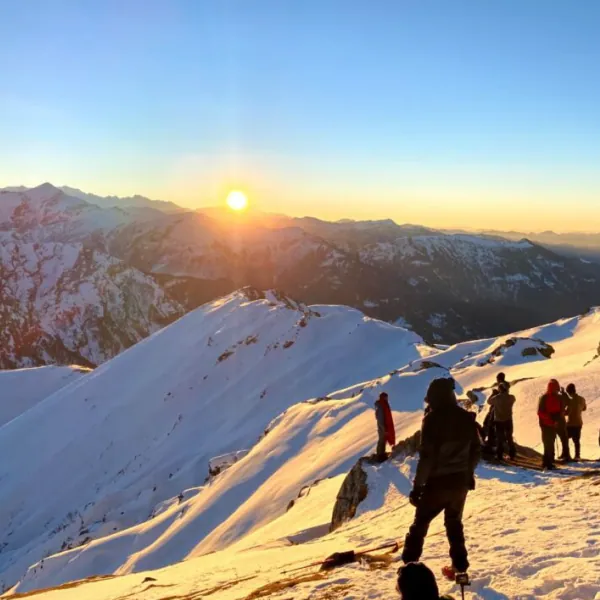
Kedarkantha Trek
Review scores, one thought on “har ki dun trek”.
Nice service and good food best trek leader and good manegement team the hidden Himalaya
Add a Comment Cancel reply
Save my name, email, and website in this browser for the next time I comment.
Tour Information
Tour location, languages support.
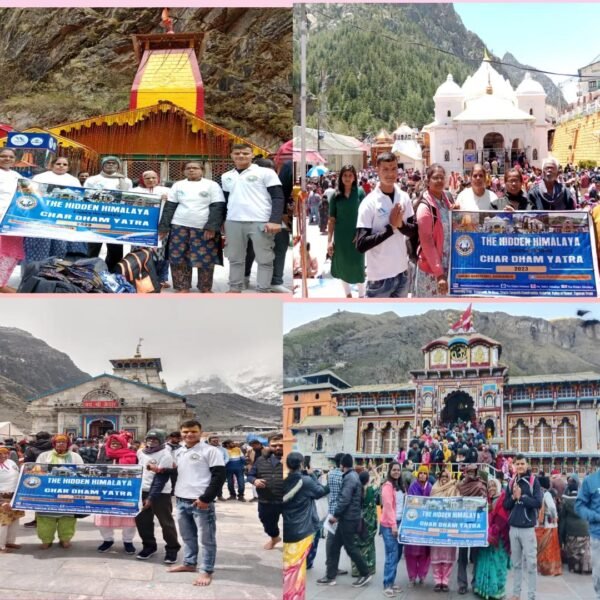
Char Dham Yatra

Mount Srikantha Expedition
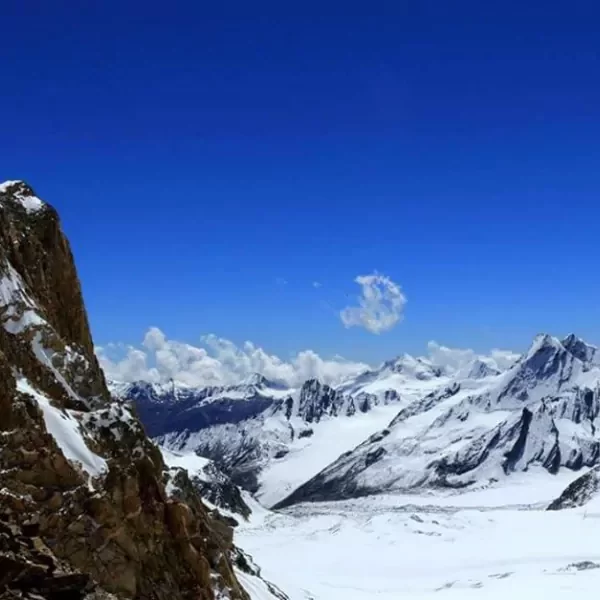
Khatling Glacier Trek
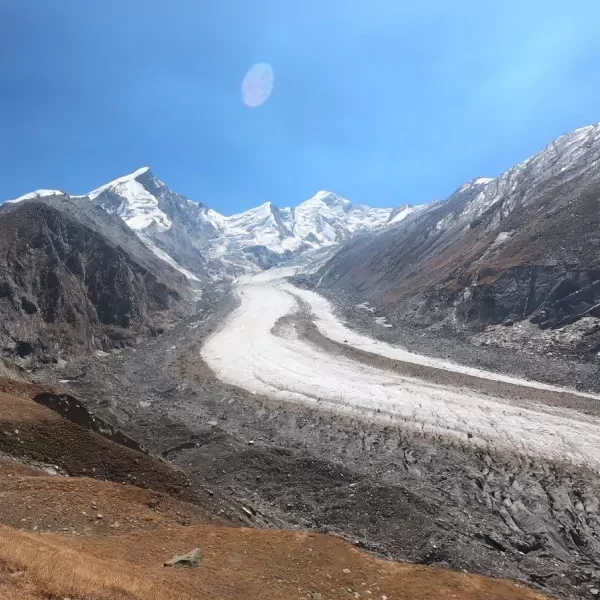
Black Peak Expedition

Satopanth Expedition

Roopkund Trek

Expeditions

Reset Password
WhatsApp The Hidden Himalaya
- Har Ki Dun Trek
- GETTING THERE
- DETAILED ITINERARY
- COST INCLUSIONS
- CANCELLATIONS
- Easy Grade Treks in Himalayas
- Easy Snow Treks
- Family Friendly
- Garhwal Treks
- One Week Trek
- Spring Treks
- Summer Treks
- Uttarakhand
- Winter Treks
Har Ki Dun Trek:
- Private/customised treks for your own group/family is open from 2nd may , 17th may , 13th june 1st, SEP to OCT 30 every saturday , sunday and 2nd oct. is fixed departure .
- There will be 2nd OCT fixed Group departure trek to Har Ki Dun in autumn/summer.
About the trek:
Har Ki Dun trek is probably the finest river valley trail in India, and never lost its charm to trekkers around the globe. There are many reasons for stating so, though the beauty of the valley in itself is the primary attraction. Change of colours in each season makes this route a year around choice for nature lovers.

Gentle hike through this wide fertile valley, remote villages enroute, culture and hospitality of the people you can’t miss. It is indeed a lovely walk to the Har Ki Dun valley with fascinating views of Jaundhar glacier and surrounding Swargarohini group of peaks. The views of Swargarohini group, Bandarpunch range and Black peak (Kalanag) are pretty descent to mention modestly. The walk culminates to a glacier carved spectacular valley, as if an amphitheatre ringed up by high spurs of rocky mountains. The sunrise and sunset at Har Ki Dun needs special mention.

Early snow during November and ample amount of residual snow during spring makes this trek a compelling choice. Further exploration towards Marinda Tal/Jaundar glacier will surely ignite the adrenaline in your adventurous mind.
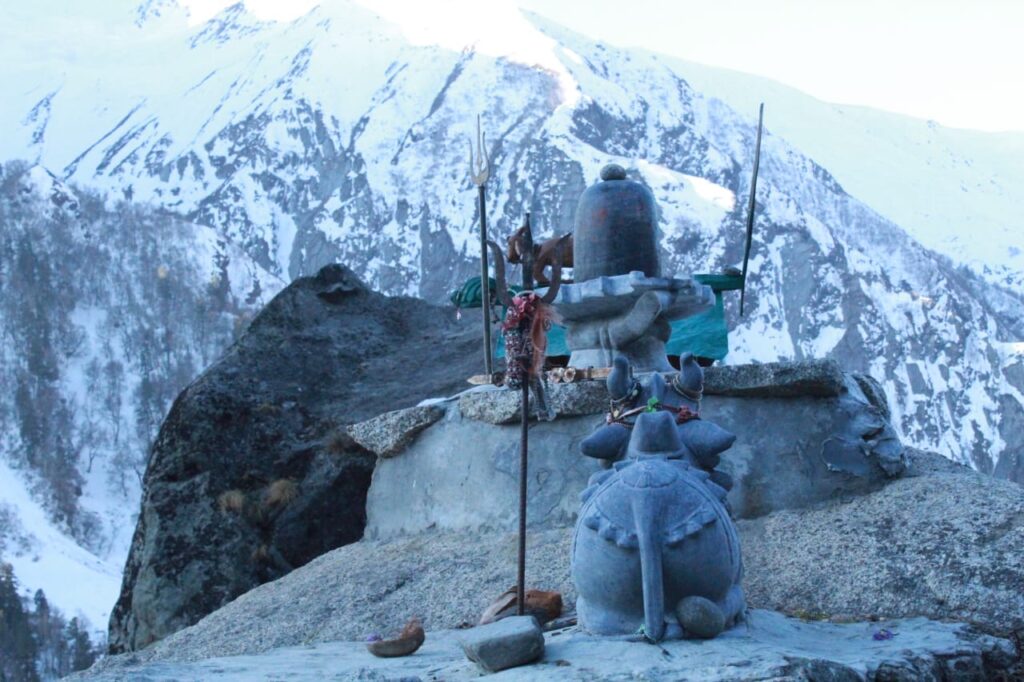
Due to the above facts, this trail is a must to visit for experienced hikers. The easy trail with gentle gradient makes it comfortable to beginners. No wonder that coupled with these two factors it is one of the most popular trek in Indian Himalayas.
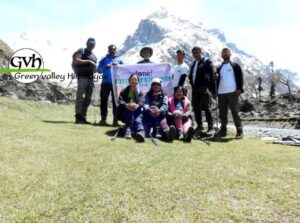
Brief Itinerary:
Day 1: Dehradun to Sankri – 200 Km by car – 9/10 hours. Lodge Day 2: Sankri to Taluka – 11 Km by car – 1 hour – Trek from Taluka to Chilurgad via Gangar – 10 Km – 5 hours. Camp Day 3: Trek to Simatra via Osla/Seema – 11 Km – 6 hours. Camp Day 4: Trek to Har Ki Dun, Exploration around Har Ki Dun and return to Simatra – 12 Km – 7/8 hours. Camp Day 5: Trek down to Chilurgad via Osla village – 5/6 hours. Camp Day 6: Trek to Taluka – 10 Km – 4 hours, by car Sankri – 1 hour. Lodge. Day 7: Drive to Dehradun – 200 Km – 9/10 hours.
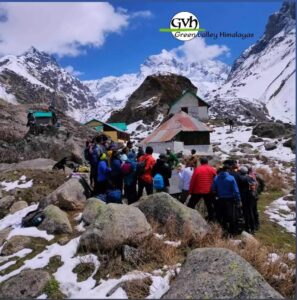
Important Note:
- You need to reach on your own to Dehradun on Day 1 morning (latest by 7 am) or the previous night. Return to Dehradun on Day 7 evening (by 7 pm) . Arrange your tickets for inward journey and return from Dehradun accordingly. We will arrange transport to reach Sankri and return which is included in the TREK FEE .
- Last ATM is at Mori, 25 Km before Sankri but don’t depend till you reach here. Withdraw cash well in advance either in Dehradun, Naugaon or Purola.
- Only BSNL and Vodafone network may work at trek base Sankri, that too very limited connections. Make a phone call back to home from Mori while reaching Sankri. After Sankri there is no presence of network.
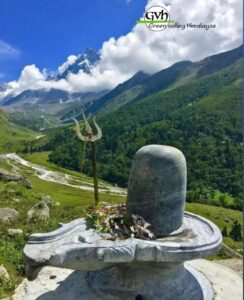
Har Ki Dun valley is on the far western flank of Garhwal in Uttarkashi district (Purola subdivision), Uttarakhand. The trek route lies entirely within the buffer and core region of Govind Pashu Vihar National Park . This catchment area is a major source of Yamuna through its largest tributary Tons river. To note, Har Ki Dun and Ruinsara Nallah form meandering Tamosa river, near Osla village. Tamosa flowing beside Taluka and below the village Sankri unites with Supin near Jakhol. Supin and Rupin combined at Netwar forms the Tons river.

Camping ban at Har Ki Dun (Updated March 2019)
As per Uttarakhand High Court order ( Petition No. : 123/2014 ) , one can not camp on alpine and sub-alpine meadows/grasslands, locally called “Bugyal. Therefore forest department has revoked the permit to camp at Har Ki Dun effective from September’18. Starting from Oct’18, our highest camp is at Simatra after climbing Kalkatti Dhar. From Simatra we visit Har Ki Dun and return to camp for a day trip.

Best time to choose Har Ki Dun trek?
Har Ki Dun trail is truly an year around trek, apart from monsoon season of July/August when it not convenient to trek. Every season has something to offer, which is special on its own.
Note: As of 2019, Forest department is not issuing permit on this trail from December to February. Starting from December 2016, this is enforced considering the corridor of winter migration for wildlife overlapping the trail. At present no permit is given for winter Har Ki Dun trek from December to February .
As said above, this trek is still pretty beautiful in all the permitted seasons. If you are looking for snow, Spring (March/April) is ideal. Amount of residual snow depends on the actual snowfall during winter months though you can be sure to get some or ample amount of residual snow in spring. See more pictures of snow in 2019 update at the bottom of the page.
From May onward during the summer time, the valley turns into green, bright and luminous. Blue Pine, Deodar (Himalayan Cedar), Kharsu (Oak), Spruce, Silver Fir and Birch trees are lush and glossy green. Due to the heat glaciers melt faster and pour more water to the tributaries on Tons river. Day time temperatures are warm to pleasant and nights are cooler. If you don’t like cold atmosphere, certainly this is the season to choose.
After monsoon is over by end of August, the valley remains lush green throughout September. As the fall approaches, slowly the grass turns into pale yellow. Maple, Chestnut, Walnut and other deciduous tree species take the autumn leaf foliage. The surrounding transformed into spectacular yellow, orange and bronze hue. Not only foliage but an early snow fall chance during late autumn is another basis that you choose this season.
As you see, it is up to you to choose the best suitable time to trek in this beautiful valley. Its a beautiful route all around the year.
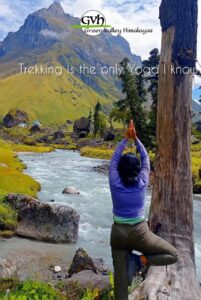
Interior villages, native people and culture during Har Ki Dun trek:
In recent days it is not common on Himalayas that you need to walk a full day to reach the last village on a trail from nearest motorable road. The trail starting from Taluka village extends the opportunity to see interior villages like Gangad, Powani and finally Osla. Neatly wooden crafted houses and dress of the local people resemble the neighbouring Kinnauri culture of Himachal Pradesh. Parents who are keen to initiate hiking and outdoor experience to kids on the Himalayas, this route is indeed a chart topper. If you are more keen on this type of interaction.
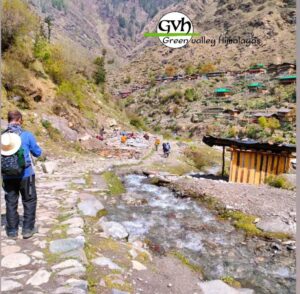
Osla temple and legends of Pandavas:
Starting in the 1980s some books/reports referred to the temple at Osla village as the “Duryodhana” temple. Even to date on most websites, it is portrayed that Mahabharata character Duryodhana is worshipped here. The proposition is indeed interesting but this may not be the case. This is a Someshwar temple and an adoration of Lord Shiva. To date, a festival along with a two week-long Mela (a village fair) is organised during monsoon in the month of Sawan worshipping the idol/Doli. The Doli moves from one village to another, seasonally.

Also, few websites point to the trail as the legendary path taken by the Pandavas to heaven. Swargarohini peaks don’t have any connection to the Swargarohini glacier, a.k.a Satopanth Swargarohini trek route which starts from Badrinath and is far away from this region.
Har Ki Dun trek temperature & clothing you need:
Summer (May/June): Daytime weather remains warm, especially if it is sunny and scorching and can go as high as 25/30°C. Night/early morning temp at Har Ki Dun can be around 10°C to 5°C.
Fall/Autumn (Oct/Nov) or Spring (Mar/Apr): From October temperature starts cooling down. At Har Ki Dun temperature can plummet to freezing in the night/early morning. Be prepared for 0°C. Expect similar temperatures if you trek during spring.
Winter (Dec/Feb): In Dec the daytime temp remains cool and nights are cold. Night temp at Sankri, Seema and Har Ki Dun can be around 2°, -2° and -5°/-10° C.
You need to be careful while selecting the proper clothing for this trek. Three layers of clothing is highly recommended.
a) A base layer – preferably a quick-dry t-shirt. b) Mid layer – a warm jacket (Double layer or Fleece jacket ). c) Outer layer – A windproof cum waterproof.

Access to Har Ki Dun trek base (Sankri):
We will arrange a pickup from Dehradun railway station to Sankri and back. This will be shared by the team members on an actual basis and paid directly to the driver. You pay directly to the driver/owner. The fare is ₹ 5500 for a Tata Sumo/Mahindra Maxx one way. This can accommodate 6 to 8 people. A Tempo Traveller charges ₹ 9000 (12-13 seats) one way. Comes around ₹ 1500- 2000 per person both ways for the pickup and drop when shared with fellow trekkers, payable directly to the driver. This is NOT included in TREK FEE.
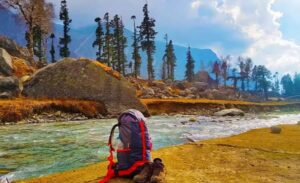
To reach the trek base Sankri independently or on public transportation, check the details in GETTING THERE TAB.
Updates from Har Ki Dun trek Spring/Summer, March to May 2019:
Finally, spring has arrived in the mountains. As you may know by this time, last winter was harsh, accompanied by consistent snowfall. This area is the westernmost part of Uttarakhand, bordering Himachal, and receives more snowfall than other similar routes. Frequent snowfall took place as late as the beginning of March. We hope that the trail will open by mid April, after some snow slogging and you will get residual snow at Har Ki Dun, as late as May.
Available Dates:
Duration: 5 days of trek; Walking to Har Ki Dun, exploration and return. Dehradun to Dehradun in 7 days.
Prerequisite: Ideal first Himalayan trek with basic physical fitness.
Grade: Easy
Physicality: 5.5/10
Trail Length: 50 Km
Highest Point: Har Ki Dun valley ~ 3500 m/11500 ft.
Seasons: March to June (snow) and September to November.
Further Option: Continue to further north and cross Borasu Pass to reach Chitkul on Baspa valley in Kinnaur. (Difficult grade trek). Explore Jaundhar glacier (2 days side trip)
Access: Trek starting point and end point is Sankri.
Rail station: Dehradun (STN Code: DDN)
Airport: Delhi; Jolly Grant in Dehradun (Airport Code: DED)
Upcoming scheduled dates for Har Ki Dun trek:
- You can check the scheduled Fixed Departure dates in the calendar available inside Booking Form or inside REGISTER NOW form. Tour starting Dates are highlighted as per our itinerary ( Day 1 of 7 days itinerary ).
- At present BOOK NOW functionality is disabled . You can get all the information in your email by submitting the REGISTER NOW form.
- If you are a group of people and available dates are not matching then you may select Custom date mode (by clicking the Select your custom date) and fill in the displayed form.
- You can also check all the available dates at a glance in our TREK CALENDAR .
- Trekkers need to reach Dehradun on Day 1 morning (latest by 8 am) or the previous night. Return to Dehradun on Day 7 evening by 7 pm. Arrange your tickets for inward journey and return accordingly.
How to reach Sankri (The trek base):
Nearest Rail station: Dehradun (Station Code: DDN)
Nearest Airport: Delhi, Jolly Grant in Dehradun (Airport Code: DED)
Based upon your request we will arrange a pick up and drop from Dehradun to Sankri and back. This will be shared equally by the team members on actual basis. You pay directly to the driver/transporter. The fare is Rs 5500 for a Tata Sumo/Mahindra Maxx one way. This can accommodate 6 to 8 people. A Tempo Traveller charges Rs 9000 (12-14 seat) one way. This is NOT included in TREK FEE and to be paid directly to the driver/owner.
If you wish to reach our Trek Base Sankri on your own by public transportation:
- There are 2/3 privately operated buses from Dehradun (near DDN railway station on Gandhi road) To Sankri. The 200 Km journey will take around 10/12 hours. The busses start at 5:30/6/7 am.
- While returning from Sankri take the morning bus to Dehradun/Vikasnagar and reach by 7 pm.
How to reach Dehradun:
For the treks at Uttarkashi district in Garhwal , one has to reach the capital city of Uttarakhand, Dehradun, specially the trek starting from Sankri, Yamunotri etc. Haridwar, Rishikesh and Dehradun are 3 nearby cities in the area and one can move from one to another by public vehicles like bus or shared Jeeps.
Haridwar to Dehradun: 55 Km and may take one and half to 2 hours.
Dehradun to Rishikesh: 45 Km and may take around one and a half hour.
You can fly or by train reach New Delhi as per your convenience from any part within India.
There are direct trains from Kolkata to Dehradun.
KUMBHA EXPRESS – Train No. – 12369 ( Very good option to reach Haridwar by 5 pm; You can take a bus from the terminus just opposite to the railway station referred as Roadways bus stand/ISBT and reach Dehradun in one and half hour. Spend the night in Dehradun and start your onward journey by car next morning.)
UPASANA EXPRESS – Train No. – 12327 ( Very good option to reach Dehradun directly by 5 pm; Spend the night in Haridwar and start your onward journey by car next morning)
DOON EXPRESS – Train No. – 13009 ( Don’t book this train when you plan a long onward journey immediately in the morning)]
Avoid booking wait listed (WL) tickets in AC classes (1A/2A/3A) or Chair Car (CC). Book Sleeper class (SL)/Second Sitting class (2S) tickets which have normally more seats/berths and hence much better chance to get confirmed.
You can reach Dehradun easily from New Delhi by train or bus (~ 6/7 hours) and is around 260 Km.
Following trains are good to reach Haridwar and run daily.
DDN JANSHTBDI – Train No. 12055 (Arrives DDN in the evening @ 9:10 pm, good choice when you stay the night in Dehradun and have a long drive ahead next day) NANDA DEVI EXP – Train No. 12205 (arrives DDN early morning @ 5:40 am)
Always avoid booking waitlisted (WL) tickets in AC classes (1A/2A/3A) or Chair Car (CC). Book Sleeper class (SL)/Second Sitting class (2S) tickets which have normally more seats/berth and hence much better chance to get confirmed.
Govt. Road Transport (Roadways of Uttarakhand, Uttar Pradesh, Delhi, Haryana, Punjab etc.) buses are frequently available in day time and night from Kashmiri Gate ISBT ( http://www.delhi.gov.in/wps/wcm/connect/doit_transport/Transport/Home/ISBT/Fare+Chart ). Tickets are available on board for these regular type buses. From Delhi Airport or Station you can reach ISBT Kashmiri Gate via Delhi Metro service ( http://www.delhimetrorail.com/metro-fares.aspx ). It is only 4 Km from NDLS and can be reached easily by booking an auto rickshaw.
For privately operated bus, you can book online from different portals. Select a boarding point suitably. Overnight Volvo/A.C/Push back buses are available. Normally these buses take up to 7 hours to reach Dehradun ISBT. You can book an auto rickshaw for Railway Station (5 Km away)/Hotel Drona (GMVN) or take a shared auto (Route No. 5) from ISBT.
[There are two major bus terminus in Dehradun. The buses from Delhi/Haridwar goes to the ISBT (Inter State Bus Terminus) and the other one is the Parvatiya Depot (Hill Depot, from where you can get the buses going up the hills like Uttarkashi, Barkot, Purola etc) located just beside the Railway station.
Nearest Airport Jolly Grant is 25 Km away from Dehradun. book a private taxi to reach Dehradun city. This airport is accessed from Dehradun, Haridwar and Rishikesh easily. The flights are mostly via Delhi.
For night stay in Dehradun:
Trekkers reaching on the previous day before the journey to the actual trek base need to stay the night in Dehradun. There are several options in Dehradun for spending a night while staying in Premium, Standard or Budget accommodation. Options vary from Privately operated Hotels/Lodges, to state run Tourist Rest Houses.
State run GMVN (Garhwal Mandal Vikas Nigam) operates Hotel Drona complex is 10 minutes walking from the railway Station. You can book an auto rickshaw. From ISBT it is around 5 Km. You can book an auto rickshaw to Hotel Drona (GMVN) or take a shared auto (Route No. 5) from ISBT (Inter State Bus Terminus). This is a reliable and a decent choice for Standard accommodation. The have restaurant and room service. Check the following for online booking of the above: http://www.gmvnl.com/newgmvn/tour/booktrh.asp You can call or visit GMVN nearest office or even send an email for more information.The information is available at: http://www.gmvnl.com/newgmvn/online_reservation/#
Return from Dehradun:
Normally you reach Dehradun from any trek base by 6/7 pm in the evening. You can take any train after 9 pm or regular bus service as mentioned above to reach Delhi or directly to your homeward journey in the same night.
Drive to Sankri: 200 Km – 10/11 hours
Pickup in the morning from Dehradun and reach Sankri (~ 1900 m, 6230 ft) . Distance around 200 Km and can take 9/10 hours. The road is one of the most scenic in Garhwal region while we go up to the classy hill station of Mussoorie at the beginning, turquoise Yamuna river in the middle and conifer forests of blue pine and meandering Tons river at the later half of the journey. The major points are Mussorie, Yamuna Pool, Damta, Nawgaon, Purola, Mori and Netwar. Mori is the last place from where you can get a confirmed mobile phone network and also has a SBI ATM . Though Sankri has a BSNL tower but network doesn’t remain most of the time! After crossing Netwar we reach the check post of Govind Vanya Jibh Vihar (Govind National Park) from where the permits need to be obtained. Sankri has few private lodges and a GMVN operated Tourist Rest House (TRH) and couple of basic restaurant to serve food. Night stay in lodge/homestay.
Drive to Taluka: 1 hour; Trek to Seema: 14 Km – 6/7 hours
Wake up early in the morning to see the first sun light on Sankri. It is a small stretch of Bazaar and the adjacent village. After breakfast we prepare to start our trek. There is a motor able Kaccha road from Sankri to Taluka heading up the valley. The bumpy 11 Km ride takes around 45 minutes to reach Taluka (~2100 m/6900 ft). Our walk starts from Taluka. The camping ground is adjacent to the Forest Rest House. There is a small tea shop at the end of the road and 2/3 very small provision stores. We directly take the stony stair cases to get down almost to the river bed and start walking along the Tamosa river, keeping it on our left (“True Left” of the river). It is an easy gently walk gradually moving up the valley. Snow is encountered at patches where sun doesn’t get a chance to enter for longer duration. After walking for an hour we cross a side stream and move on to an flat opening on the left hand of the trail. Local people are seen in an interval with heavy loads on their back aiming to stock provisions for long winters. There are few villages in this valley like Datmir, Gangar, Powani and Osla, the last one being the farthest. Walking along the valley in the shades of conifer and occasional snow patches for 9 Km, we reach a side stream and cross the bridge to get on the main valley again. This place has also a bridge on the Tamosa river and the Village named “Gangar” is mostly on the other side of the river. From here we continue our gradual walk for another hour to reach an opening with a new concrete construction for a proposed school. A bridge on Tamosa is built here to reach the village of Osla. We keep our track while the river is on our left and walk another hour inside a sun shed thick forest to reach Seema (~2500 m, 8200 ft). The last stretch remains snowy in winter and avoid slush. One GMVN TRH and a Forest Rest House along with a solitary private Dhaba (Opens from Jun till Oct) to serve food. Prior booking of the any of these is highly recommended for trekkers who don’t have camping setup. Camping ground is also nearby. Seema is not a village but only a tourist shelter point. The village Osla is on the other side of the river, almost ~ 215 m/700 ft above the river bed. Total distance is 14 Km and may take 6/7 hours. We camp for the night.
Trek to Har Ki Dun: 11 Km – 5/6 hours
We start in the morning on the stoned trail and reach the suspension bridge at Seema. The trail straight ahead goes to Ruinsara Tal and further to Bali Pass or Dhumdharkandi Pass. Cross the Tamosa river and climb up to reach the trail which is going along the river upstream. From now onward the river will be on our right (“True Right” of the river) and we gradually go up to reach a vast green expanse which is a huge clearing for farming by the people of Osla. From here the peaks facing north and north east opens up and the views of Banderpunch group and Swargarohini group are breathtaking along with Black Peak (Kalanag). We gradually skirt the mountain for another hour to reach the base of the steady climb to Kalkatti Dhar. From here we can see the Ruinsara valley takes a right turn , while we take a left turn. Har Ki Dun Nallah and Ruinsara Nallah meets below Kalkatti Dhar to form Tamosa river. It is normally windy while we climb to Kalkatti Dhar. After reaching the the highest point on the shoulder of the mountain we turn left and gradually go down. First time after Seema we again enter into the forest and descend steadily to a side stream. In winter the waterfall remains frozen. This is a good place to have lunch. From here we gradually climb in to a forest canopy of Silver Fir , Cedar and Oak. Crossing the forest we enter in to the wider valley with occasional Birch ( Bhurja Patra in Hindi) and Rhododendrons. The valley is teemed with bird life. Buntings, Flycatchers and Mountain Fiches are abundant. Himalayan Langur and Blue Sheep are common in this valley. There are reported sightings of elusive Snow Leopard in this region. Now the river bed is almost at the same level and Har Ki Dun valley approaches. The camping ground is near the river and several tents can be pitched. Walk another 10 mins to cross the Har Ki Dun Nallah over a small wooden bridge. Forest Rest house (FRH) is a minutes walk from here. GMVN TRH is another 10 mins ahead. It is mandatory in winter to book in advance for any of these huts. Caretaker only comes along with the keys for a prior booking. During summer food is available in GMVN TRH. There are two rooms at FRH and one dormitory at GMVN which can be booked. It is better to come with own tent and provisions in season to avoid any hassle. Total distance is 11 Km and may take 5/6 hours. Average height of the valley is ~ 3500 m/11500 ft. Camp for the night.
Exploration Day towards Marinda Tal or Jamdar Glacier: 8/10 Km – 4/5 hours
Wake up early in the morning to see the sunrise on Swargarohini group of peaks. Changing colour is magnificent to watch and unforgettable. The Forest Rest House (FRH) is located some what centrally in this vast expanse of the valley. Heading straight from FRH is Har Ki Dun peak. On the right towering Swargarohini and to the left is Hata peak. Two streams are coming from two different directions, one from Jaundar glacier and other from Borasu pass watershed to Har Ki Dun and forming the Har Ki Dun Nallah. Har Ki Dun is a big enough valley sitting in the middle with forking of trails in different directions. Treeline recedes here in all directions. Today is an exploration day amidst snow or simply one can sit back at the campsite and relax while sipping a cup of coffee. After breakfast one can either go to explore the Jaundar glacier or to Maninda Tal area, which are on different directions. The snout of Janudar glacier is 8 Km from Har Ki Dun. The trail is not defined and on snow, boulder and moraine, involving descent and ascent. It is pretty difficult to reach the snout of the glacier and return to the campsite in a single push. A camping is required in between. It is advisable to venture and advance in this direction only till noon and retrace back by 3 pm. On the other hand, Maninda Tal is about 2 hours walk from Har Ki Dun and is in the route towards Borasu Pass trail which connects this valley to Baspa valley in Kinnaur, Himachal Pradesh. The area is a shallow formation of clogged water resulting from a flattened bed of the stream. The valley heading upward looks splendid from here. Lammergeier and Himalayan Griffons encircle the valley surrounded by rocky cliffs. Pug marks of Snow Leopard following a flock of Bharal (Blue Sheep) is common. Return to Har Ki Dun by lunch time and take the hot lunch prepared freshly. From the FRH cross the wooden bridge on the Har Ki Dun Nallah walk toward the camping ground in the afternoon. Kedarkanta peak is clearly visible and the highest point in this direction. Sunset is mesmerising , reflecting the last rays of sun on Har Ki Dun Nallah and peak. Changing golden hue makes any trekker a spellbound spectator. It is a good idea to collect firewood to setup a fire in the night. This is already a fragile ecosystem, so ONLY collect branches and twigs which are already fallen from the trees. The FRH has a fireplace inside. Nights are pretty cold here and the temperature can plummet to -10 deg C outside the night in winters. Night stay in tent.
Trek to Osla/Seema: 11 Km – 5 hours
Today after breakfast we start our return journey toward Seema. It is a gentle descent along downstream till we reach the waterfall which remains frozen in winter. From here we climb up to Kalkatti Dhar and descend gradually to the vast crop field. Approaching the Seema bridge, we take the trail straight heading toward the village Osla, instead of directly going down to Seema. It is a memorable experience to visit a village like Osla, nestled on the lap of mountain. The houses are mostly build of wooden structure with slate as the roof. Houses are two storied, lower being the cattle shelter and firewood/fodder store, upper being the residence of the family. Though few satellite TV dishes are present on top of few houses but the village lacks very basic facilities. A satellite phone is available to connect to the outer world. One can make a phone call to home by paying nominal charge, if a connection is available. The village is spread along the slope of the mountain and a temple is the heart of the village. Wood crafted temple is more than a century old. It is a legend that Duryodhan, the eldest brother of the Kauravas is worshipped in this temple. The deity of the temple resides at different temples of the villages of this valley, turn by turn. The rule being same across the Himalaya, summer is higher, and winter is lower. It is a chance to meet local children and people, knowing their livelihood, custom and culture, social structure. It is worthwhile to spend some time with joyful kids in the village. After spending some time in the village we take the trail down toward the Seema bridge and by crossing the suspension bridge we reach Seema. Night accommodation in tent.
Trek to Taluka: 14 Km – 6/7 hours; Drive to Sankri: 1 hour
We retrace our trail back to Taluka. From here take the car to reach the trek end point Sankri. Night stay in lodge/homestay.
Drive to Dehradun: 200 Km – 10 hours
In the morning we start our return journey and reach Dehradun by 7 pm. Trip ends here.
P.S.: Distances and altitudes are approximate and may not be exact.
TREK FEE: ₹ 10450 (Sankri to Sankri) + 5% GST
Book for 5 persons or more and get flat 10% Group Discount on TREK FEE
Inclusions:
2 night’s accommodation at Sankri (Day 1 & Day 6) in lodge on twin sharing basis and dinner. Men and women will be given separate rooms in Fixed Departures.
Car drop from Sankri to Taluka (trek starting point) and return.
All meals during the trek (Day 1 dinner to Day 6 dinner) . Regular Indian style nutritious vegetarian food during the trek (including occasional eggs), breakfast packed/hot lunch (depending upon the time you reach a campsite), snacks, dinner along with coffee/tea/soup.
Excellent Trekking Guide, who will be a local to this particular area and has profound knowledge of the trekking trails around.
Specialised Cook, Support staff, Porters/Packed Animals for carrying the central logistics of the trek.
Stay in tents on twin sharing basis during the trek.
Camping equipment like Sleeping bag, Carry mattress, Gaiters, Micro spikes/Crampon. (Bring your own sleeping if you have a high altitude specific personal Sleeping Bag. This is always better for hygienic reasons.)
Kitchen tent, dinning tent and toilet tent as required during the trek.
All permit fee, camping charges, forest levy required for the trek.
Basic Medical & First Aid kit.
Exclusions:
Transportation from Dehradun to and back. ₹ 5500 for a Tata Sumo and ₹ 9000 for a Tempo Traveller. (₹ 1500- 2000 per person both ways for the pick up and drop when shared with fellow trekkers, payable directly to the driver.)
We assume that you will carry your personal Rucksack/Backpack with all your personal belongings. If you want to offload your Rucksack and be carried by our Pack Animal/Porter then you need to pay additional ₹ 1500 for the entire duration of the trek. The Rucksack should not weigh more than 10 Kg.
Anything which is NOT mentioned in the “Inclusions” or personal in nature.
- We assume that you have read and understood our “Terms & Conditions” ( https:// greenvalleyhimalayas .com/terms-and-conditions ) before Booking a trek/tour.
- To reserve your place in a scheduled Fixed Departure trek or a Customised/Private trek pay 25% of the TREK/TOUR FEE as the initial “Booking Deposit” . You can pay by Net banking/Draft/Cheque/Credit/Debit/AMEX cards. This will ensure your participation in the desired trek and we will reserve your place in the scheduled date. You need to pay the remaining amount at least 15 days before Trek Starting Date .
- If you book a Trek/Tour before 14 days or less from Trek/Tour Starting Date, you need to pay the full TREK/TOUR FEE .
Cancellations:
- “Booking Amount” i.e. 25% of the TREK/TOUR FEE is Non-Refundable at any stage.
- If in case you are not able to make it due to unavoidable reason(s), we provide you a very flexible choice of Shifting to another trek within next one year . One year is counted from the starting date of the trek/tour you booked initially with us.
- In case you postpone your trip you need to inform minimum of 15 days before the trek/tour starting date. (Though we suggest to inform us earlier if known)
- In case you postpone a trek/tour before 15 days of the scheduled Trek/Tour Starting date or prior , you may shift to another group of the same trek/tour scheduled in the same season or within next one year. You may shift to another suitable route also. For changing any, you need our approval first. Your request must be in written communication through your registered email with us.
- If you cancel/postpone a trek/tour from 14 days to 8 days before tour starting date , your Booking Amount is Non-Refundable. We will not take any request of shifting dates. We will charge 50% of the amount as Cancellation Charges and process refund of remaining 50%. You may also shift to another group within next year but 25% Booking Amount will be deemed as Cancellation Charge and the rest amount will be transferred to the shifted group.
- If you cancel a trek/tour 7 days (i.e. a week) before Trek/Tour Starting Date or later , there will be NO REFUND.
- In case of any unforeseen incident including but not limited to natural calamities like flood, earthquake, landslide, forest fire or any political unrest, if we are compelled to cancel the trek/trip, you will be entitled to redeem the full amount for the same/similar kind of trek/trip within next one year.
If you need more clarifications write in to [email protected]
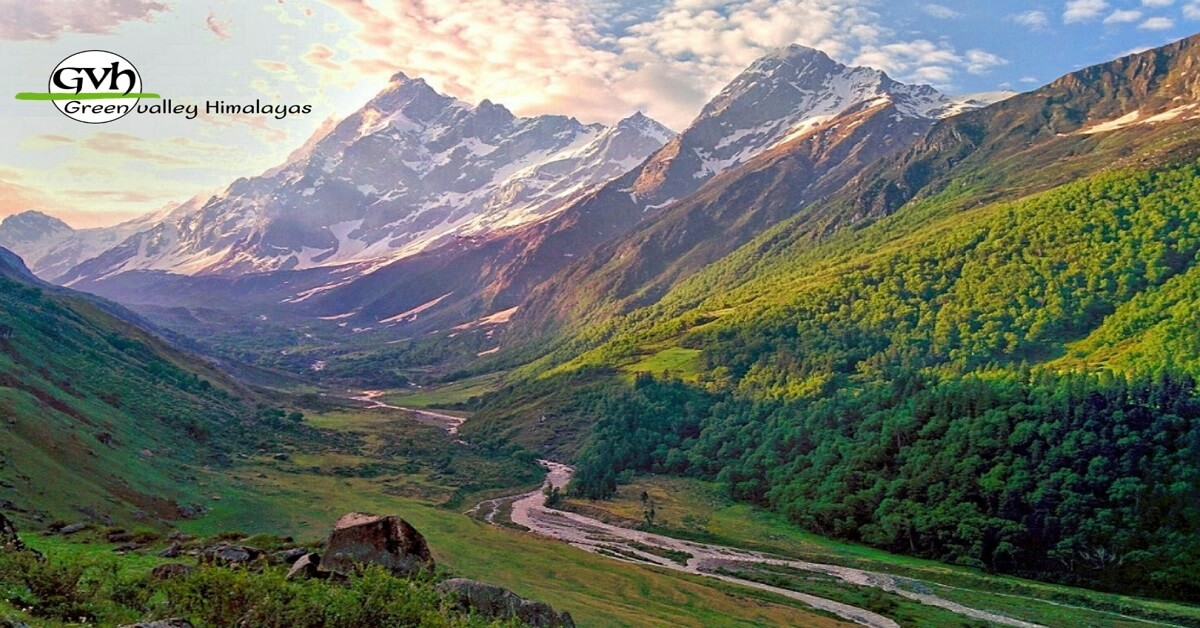
Leave a Review
Cancel reply.
Save my name, email, and website in this browser for the next time I comment.
Tour Reviews
This was my first trek in my life and the most Memorable one with GVK. Arjun and his entire team were so friendly taking care of us just like their own family. Superb hygienic healthy meals, comfortable cozy sleeping bags, good tents, excellent camp sites, great knowledge about flora and fauna, medical knowledge. Arjun has a great leadership quality and he very well managed a group with varying age groups. Thank you Lodi ji for the delicious food. I’m gonna do all my further treks with GVK and highly recommend others to chose them for the best experience.. All the very best Arjun, Prakash Rawat and their entire team.
Provided an amazing experience taking care of every detail right from a wonderful stay at beautiful guest houses and campsites, taking care of health and safety, providing superb food(hygienic, tasty and a huge variety) and making unforgettable memories. GVH has a really friendly and hardworking team who cater to all requests without a fuss with great knowledge about the flora, fauna, mountains and medical requirements. Having a bond with the locals they helped us mingle immensely. The small group(5 to 10 ppl) creates a wholesome experience that no other trekking service can provide. I was really happy having chosen them for my trek and would recommend them anyday for any trek.
Very good planning ….good decisions of leader .in hard situation..like heavy rainfall…snowfalll…….other servises..like food .tents ..sleeping bags ..r good ……homely.. environment…..Green valley.Himalaya leader Arjun Rawat ….all the best…
Wonderful Trek planning …good food …leader n other helping persons….caretaking ……..leader completed basic.medical course….. .Arjun Rawat ..n team .all the best to u for future ….
I am trekking/hiking for more than 8 years. For the first time I joined hands with Arjun Bhai during 2017 winter Trek kedharkatha organized by HT. By the time I remember Arjun Bhai doing his degree and at his young age he is having caliber to lead the 10 members team. Now I am very proud to see him to start own organisation http://www.greenvalleyhimalayas.com and leading many team under his supervision. Staff are accomodating, caring and well knowledgeable. After 2017, i came back again to Sankri for Bali pass in 2018 and har ki doon in 2021. I highly recommend green valley Himalayas incase of any planning for solo Trek , personal trek or group trek.
One of the best trek groups. Trek leader and support staff were amazing and helped us in every person.
Went on Har Ki Dun trek with GVH They are very professional and very well.
I am very happy with the services provided by GREEN VALLEY HIMALAYAS.. i will always recommend GREEN VALLEY HIMALAYAS first over any other group, even indiahikes.
In GREEN VALLEY HIMALAYAS they feel happy to help you and always take initiative to give you a local touch. They performed local dance in sankri.
From the point where their staff welcomed us to the very last moment. They were very helpful. Total paisa vasool. 😊 It was awesome experience.
Believe me. Dont even think twice.
Thank You for making my trek a great success. 😊 GVH
Har ki Dun trek is one of the best treks in India and when it is done with Green Valley Himalayas one gets the best of everything on this trail. It was excellent to trek with Arjun , he described every detail of the stories connected to the trail. The flora and fauna of this area and the mountains. I will definitely come back for more treks with GVH and the hospitality of the people of Ganghar and Osla is unforgettable.
I went with them in 2015. I have been on a few Himalayan treks but this is the most memorable. Not only they help you through the trek but also make it enjoyable. From the young lads to elderly people, everyone from our group enjoyed the adventure. Thanks for the memories! 🙂
You May Also Like

Ronti Saddle Cross Trek

Borasu Pass Trek
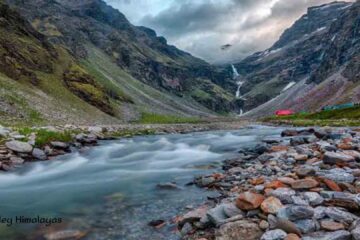
Rupin Pass Trek
Get best quote.
Fill this will get in touch for further details

- Almora District
- Bageshwar District
- Chamoli District
- Champawat District
- Dehradun District
- Haridwar District
- Nainital District
- Pithoragarh District
- Pauri Garhwal District
- Rudraprayag District
- Tehri Garhwal District
Udham Singh Nagar
- Uttarkashi District
- Char Dham Yatra 2024
- Kartik Swami Temple
- Madhyamaheshwar Temple
- Kedarnath Dham
- Bansi Narayan Temple
- Bhavishya Badri Temple
- Narsingh Devta Temple
- Gopinath Temple
- Rudranath Temple
- Kalimath Temple
- Vishwanath Temple
- Kalinka Temple
- Kausani Hill Station
- Ranikhet Hill Station
- Kamal Tal Lake
- Sariyatal Lake
- Khurpatal Lake
- Chamba Hill Station
- Dhanaulti Hill Station
- Normal Trekking
- High Altitude Trekking
- Water Sports
- White water rafting
- Rajaji National Park
- Gangotri National Park
- Assan Barrage Bird Sanctuary
- Binsar Wild Life Sanctuary
- Jim Corbett National Park
- Nanda Devi National Park
- Valley of Flowers National Park
- Homestays in Uttarakhand
Use the form below to contact us directly.
Please complete all required fields.
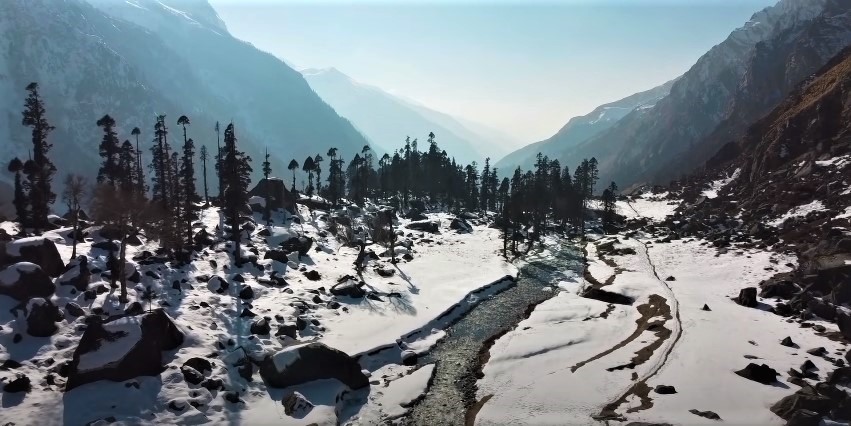
Har ki Dun Trek 2024
Har Ki Dun trek is a popular trekking destination in the Garhwal region of Uttarakhand, India in Uttarkashi District. It's known for its scenic beauty, lush green forests, and meadows, making it an ideal destination for nature lovers and adventure enthusiasts.
The trek starts from Sankri village and takes you through the Govind Wildlife Sanctuary, where you can spot a variety of flora and fauna. The trail passes through small hamlets, dense forests, and beautiful meadows, offering panoramic views of the Himalayas.
The trek to Har Ki Dun is moderate in difficulty and can be completed in around 6-7 days. The trek is around 47 km long and takes you to an altitude of 11,675 feet. The trail is well-marked and can be done without the help of a guide, but it's always advisable to hire a local guide to ensure your safety.
The best time to visit Har Ki Dun is during the summer months from April to June and the post-monsoon season from September to November . During these months, the weather is pleasant, and the temperature ranges from 10°C to 25°C, making it ideal for trekking. The monsoon season from July to August should be avoided as the region experiences heavy rainfall, which can make the trekking route slippery and dangerous.
Activities to do near Har ki Dun Trek | Things to do in Har ki Dun Trek
Here are some activities you can do near the Har Ki Dun trek:
- Visit the Govind National Park : The Har Ki Dun trek passes through the Govind National Park, which is home to a variety of flora and fauna. You can take a guided tour of the park and spot animals like musk deer, snow leopards, and Himalayan black bears.
- Explore the Ruinsara Valley : The Ruinsara Valley is located near the Har Ki Dun trek and is known for its scenic beauty and panoramic views of the Himalayas. You can trek to the valley and camp there overnight.
- Visit the Osla Village : The Osla Village is a small hamlet located near the Har Ki Dun trek and is known for its ancient temples and scenic beauty. You can visit the village and interact with the locals to learn about their culture and way of life.
- Trek to the Kedarkantha Peak : The Kedarkantha Peak is a popular trekking destination located near the Har Ki Dun trek. The trek offers panoramic views of the Himalayas and takes around 5-6 days to complete.
- Photography : The Har Ki Dun trek offers numerous opportunities for photography. You can capture the beautiful landscapes, snow-capped mountains, and unique flora and fauna on camera.
Famous Tourist Attractions near Kedartal Trek | Places to visit near Kedartal Trek
Har Ki Dun trek is a popular trekking destination in Uttarkashi, Uttarakhand, India . Here are some famous tourist attractions near the Har Ki Dun trek :
- Kedarkantha Trek : This trek is one of the most popular treks in Uttarakhand and offers stunning views of the Himalayan range. It is located near the Har Ki Dun trek and can be easily accessed.
- Yamunotri : It is a famous pilgrimage site and one of the Char Dham Yatra destinations. The temple of Goddess Yamuna is located here, and it is believed that a dip in the holy water of Yamuna River can cleanse one's sins.
- Govind Wildlife Sanctuary : It is located near the Har Ki Dun trek and is home to various species of wildlife, including the snow leopard, black bear, and musk deer. It is also a popular bird watching destination.
- Ruinsara Lake : It is a serene and picturesque lake located at the base of the Swargarohini peak. The lake is surrounded by alpine meadows and offers stunning views of the Himalayan range.
- Sankri Village : It is a charming and peaceful village located near the Har Ki Dun trek. The village offers a glimpse into the local culture and way of life of the people of Uttarakhand.
- Rupin Pass Trek : It is a challenging and scenic trek that offers stunning views of the snow-capped Himalayan peaks. The trek starts from Dhaula and ends in Sangla and passes through beautiful valleys and dense forests.
- Tons Valley : It is a beautiful and remote valley located near the Har Ki Dun trek. The valley is known for its stunning landscapes and is a popular destination for adventure activities like trekking, camping, and rafting.
Tour Itinerary
Day wise itinerary to har ki dun trek | har ki dun trek full guide.
Har Ki Dun trek is a popular trekking destination in Uttarakhand, India known for its scenic beauty and lush green forests. The moderate trek takes around 6-7 days to complete and offers panoramic views of the Himalayas. It's an ideal destination for nature lovers and adventure enthusiasts. Here is a day-wise itinerary for the Har Ki Dun trek starting from Dehradun:
Day 1: Dehradun to Sankri
- The first day of the trek involves a drive from Dehradun to Sankri, which is around 200 km and takes around 8-9 hours.
- Sankri is a beautiful village and the starting point of the trek.
- You can stay in a guesthouse or a tented accommodation in Sankri.
Day 2: Sankri to Taluka to Seema
- On the second day, you will drive from Sankri to Taluka, which is around 12 km and takes around 30 minutes.
- From Taluka, you will start trekking towards Seema, which is around 14 km and takes around 6-7 hours.
- The trail passes through beautiful forests and small hamlets.
- You can stay in a guesthouse or a tented accommodation in Seema.
Day 3: Seema to Har Ki Dun
- On the third day, you will trek from Seema to Har Ki Dun, which is around 11 km and takes around 5-6 hours.
- The trail passes through beautiful meadows, dense forests, and waterfalls.
- Har Ki Dun is a beautiful valley surrounded by snow-capped mountains.
- You can stay in a guesthouse or a tented accommodation in Har Ki Dun.
Day 4: Har Ki Dun to Seema
- On the fourth day, you will trek back from Har Ki Dun to Seema, which is around 11 km and takes around 5-6 hours.
- You can enjoy the beautiful views of the valley while trekking back.
Day 5: Seema to Taluka to Sankri
- On the fifth day, you will trek from Seema to Taluka, which is around 14 km and takes around 6-7 hours.
- From Taluka, you will drive back to Sankri, which is around 12 km and takes around 30 minutes.
Day 6: Sankri to Dehradun
- On the last day, you will drive back from Sankri to Dehradun, which is around 200 km and takes around 8-9 hours.
- You can explore the beautiful city of Dehradun before departing.
How to Reach
Location and how to reach har ki dun.
Location : Uttarkashi, Garhwal Region, Uttarakhand.
Nearest Railway Station to Har ki Dun : 200 km, Dehradun Railway Station.
Nearest Airport to Kedartal Har ki Dun: 279km, Jolly Grant Airport, Dehradun.
Sankri Village is from where Har ki Dun Trek starts is well connected with major roads and several major cities.
Best Time to Visit
Best time to visit har ki dun trek | best time to explore har ki dun trek.
The best time to do the Har Ki Dun trek is during the summer months of April to June and the autumn months of September to November . During these months, the weather is ideal for trekking with clear skies and moderate temperatures.
The winter months (December to February) are not recommended for trekking as the region experiences heavy snowfall, making the trekking trail inaccessible and challenging.
The monsoon season (July to August) should also be avoided as the region receives heavy rainfall, making the trekking trails slippery and dangerous. If you are still planning to visit during monsoon, be update with road and weather conditions.
Inclusions & Exclusions
Inclusion
- During the trek, there will be places to stay in Camps or Tents (Camping)
- At Trek, all meals will be provided ( Healthy Food)
- At Camps, Bonfire will be provided according to weather conditions.
- For the Trek, there is fees for trekking permits and forest campsites.
- Trekking Supplies (Tents, Sleeping Bags, Ice Axes, Ropes, etc.)
- Expert Trek Leaders will there to Guide (Certified in basic/advanced mountaineering courses)
- A skilled trek crew (Guides, Chefs, Assistants, porters/mules) is available.
- Protective Gear (First Aid Kit, Medical Kit, Oxygen cylinders (if necessary), stretcher, etc.)
- Trek Certificate for Completion.
- Basic Survival Techniques in forest by using natural resources etc.
- GST (Service Tax)
- Offloading Fees for Backpacks (Rs.250 Per day/Per bag)
- Food on the way to Base and from Pick and Drop
- Offloading fees for backpacks (Rs. 250/day/bag)
- Anything not mentioned in Inclusion
- Any personal Expense
Cancellation Policy
At the time of booking, full payment is required.
For the Cancellation due to any reasons, Uttarakhand Guide must be notified of the same in writing at [email protected] . At the time we receive your written cancellation statement, refunds policies will be applicable according to following conditions:
Cancellation before 30 days from the start of Trip
10 % will be deducted from total
Cancellation between 21 to 30 Days from start of Trip
35 % will be deducted
Cancellation between 10 to 21 Days from start of Trip
50 % will be deducted
Cancellation less than 10 days from start of Trip
No amount will be refunded
Note: After the cancellation date, the refund will be handled within 10 working days.
Cancellation fees will be determined based on the total trip cost, and they may vary depending on the date of departure and the date of cancellation.
There will be no refunds:
- For any missed/unused tour services, including meals, owing to any reason.
- If the tour's services are changed, altered, revised, cancelled, or not used.
- If a customer cancels or is forced to cancel the tour due to changes in the itinerary or travel
- If the consumer is dissatisfied with any of the operator's services
Top Destinations

Uttarkashi, kashi of north is situated on the banks of river Bhagirathi at an altitude of 1158 m above sea level.
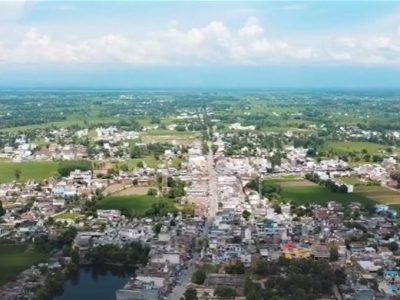
Udham Singh Nagar is a district located in the state of Uttarakhand in Kumaon Region, India. It was carved out of the Nainital district and came into existence on 30th September 1995.
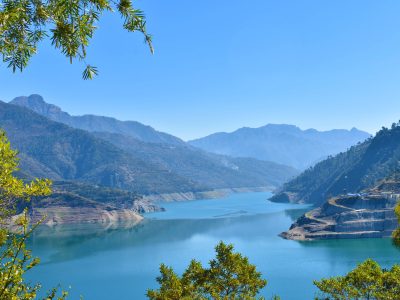
Tehri Garhwal
Tehri Garhwal District, located in the state of Uttarakhand, India, is a mesmerizing region renowned for its natural beauty, spiritual significance, and cultural heritage.
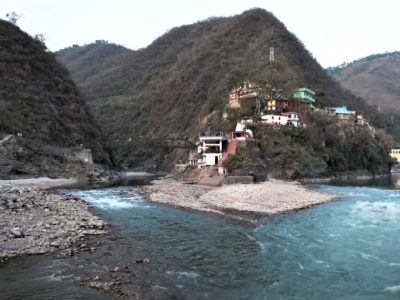
Rudraprayag
Rudraprayag is a picturesque town located in the Rudraprayag district of Uttarakhand, India. It holds significant religious and cultural importance as it is situated at the confluence of two sacred rivers, Alaknanda and Mandakini.

Pithoragarh
Nestled in the eastern reaches of the picturesque Kumaon region, Pithoragarh stands as a breathtaking district in the scenic state of Uttarakhand, India.
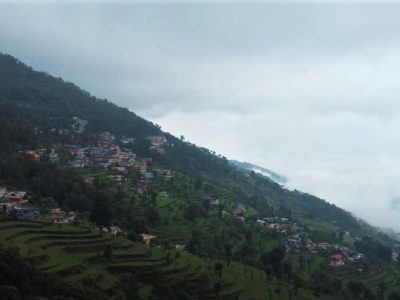
Pauri Garhwal
Pauri Garhwal District, situated in the breathtaking state of Uttarakhand, India, is a hidden gem that offers a soul-stirring experience for tourists seeking a blend of natural beauty, spiritual serenity, and cultural heritage.
Discover Uttarakhand
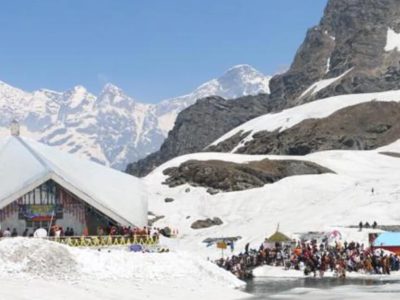
Pilgrim’s body recovered day after avalanche
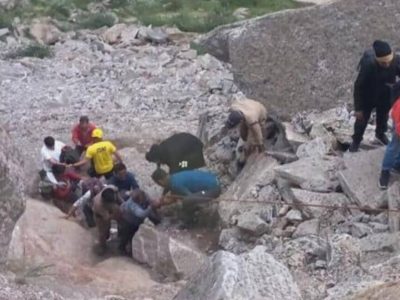
Over 180 Adi Kailash pilgrims rescued from landslide-hit road stretch
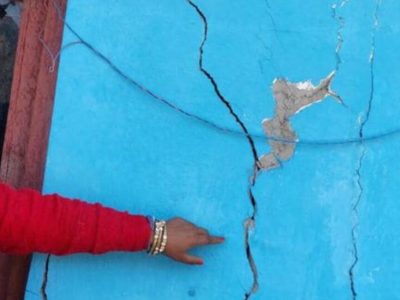
Monsoon sparks apprehensions of further geological instability in Joshimath
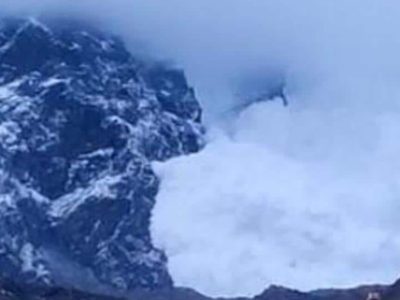
Massive avalanche hits mountains around Kedarnath Temple
Trending tourist places.
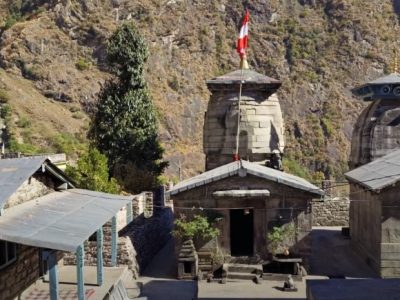
Yogdhyan Badri Temple – Chamoli, Uttarakhand
Yogdhyan Badri is one of the sacred Panch Badri temples located in the picturesque state of Uttarakhand, India. Situated amidst…
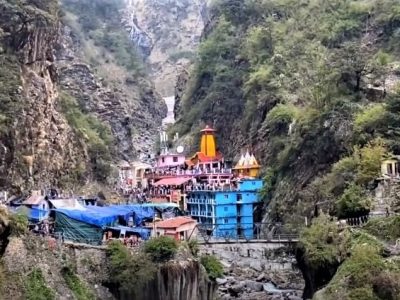
Yamunotri Dham Trek
Yamunotri Dham is one of the four sacred sites, collectively known as Chota Char Dham, which are located in the…
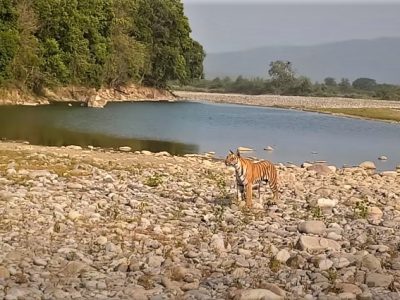
Wild Life Safari in Uttarakhand
The state is home to several national parks and wildlife sanctuaries, providing a chance to observe a wide range of…
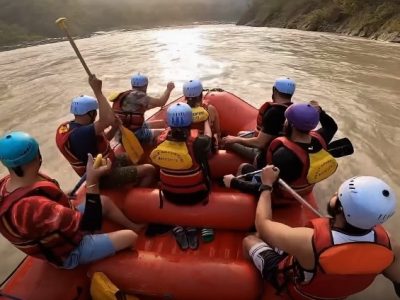
White Water Rafting

From Kedarnath To Valley Of Flowers: 10 Most Popular Trekking Places In India
New Delhi: Trekking is a great way to get exercise, improve physical health, and boost your mood. The fresh air, stunning scenery, and physical challenge really help to reduce stress and anxiety. To break away from the monotony of life, here are the 10 most popular trekking places in India for you to conquer your next challenge.
Valley of Flowers
Located in the Nanda Devi Biosphere Reserve in Uttarakhand, this national park is a UNESCO World Heritage Site and is famous for its meadows bursting with colourful wildflowers during the monsoon season (July August). The trek to the Valley of Flowers is moderate and starts from Govindghat, a small town near Joshimath.
This holy town in Uttarakhand is nestled in the Garhwal Himalayas and is one of the Char Dhams, the four sacred Hindu pilgrimage sites. The trek to Kedarnath is challenging, but the stunning views of the Himalayas and the spiritual significance of the place make it a worthwhile journey.
This glacial lake in Uttarakhand is also known as the "Mystery Lake" because of the hundreds of human skeletons found near its shores. The trek to Roopkund is moderate to difficult and offers breathtaking views of the surrounding mountains.
This valley in Uttarakhand is known as the "Valley of Gods" and is home to several glaciers and meadows. The trek to Har Ki Dun is moderate and offers stunning views of the Swargarohini peak.
Markha Valley
Located in Ladakh, this high-altitude valley is home to Buddhist monasteries, nomadic settlements, and stunning scenery. The Markha Valley trek is moderate to difficult and offers a unique glimpse into the culture and landscape of Ladakh.
Chandrashila Trek
This trek in Uttarakhand starts from Chopta and offers stunning views of the Himalayas, including the Nanda Devi and Trishul peaks. The trek is moderate and can be done in a day or two.
Dzongri-Goechala Trek
This trek in Sikkim is one of the most challenging treks in India and offers stunning views of the Kanchenjunga massif. The trek is also culturally rich, as it passes through several Buddhist villages.
Pin Parvati Pass Trek
This trek in Himachal Pradesh is known for its challenging terrain and stunning views of the Pir Panjal range. The trek is moderate to difficult and can be done in 5-7 days.
Dudhsagar Falls Trek
Located in Goa, this trek is a moderate one that leads to the Dudhsagar Falls, one of the highest waterfalls in India. The trek is surrounded by lush green forests and offers stunning views of the Western Ghats.
Kheerganga Trek
This trek in Himachal Pradesh is known for its hot springs, which are said to have medicinal properties. The trek is moderate and offers stunning views of the Parvati Valley.


COMMENTS
Har Ki Dun catchment area is a major source of the Yamuna River System and the main source of the largest tributary of Yamuna. Har Ki Dun Trek takes you through some of the most charismatic alpine meadows and pine forests which is a treat to the eyes. During winters the snow-covered trails of Har Ki Dun Trek looks mesmerizing as and when the ...
About Har Ki Dun Trek Har Ki Dun trek, which is the most popular trek in the Garhwal Himalayas. The height of the Har Ki Dun trek is 3600 meters. It starts from Sankri - A Small Paradise and Taluka which are the last road point of this trek. Har ki Dun trek comes along this route in 4 Himalayan Villages, the first Dhatmir, Gangad, Panwani, and Osla village are the last villages of this area ...
The Har Ki Dun Trek Map showcases the enchanting trail through the Garhwal Himalayas, leading to the picturesque Har Ki Dun Valley. Meandering alongside the Tons River, the map highlights the breathtaking views of snow-capped peaks and lush meadows, offering a captivating adventure for trekkers and nature enthusiasts alike.
Har ki dun trek is one of the most popular treks which starts from Sankri village. Book this trek at the best price with the Safest Adventure Company(TTH). ... Address: Trek The Himalayas, Kaintura Plaza, Badrinath Road Tapovan, Rishikesh - 249201 Uttarakhand. Phone: 8191004846. Email: [email protected].
Day 3: Seema to Har Ki Dun (3,566 m) (Trek 11 km) After breakfast, you will start the trek to Har Ki Dun. The trek is around 11 km long and takes around 6-7 hours. The trail is a gradual ascent through dense forests of deodar and pine trees. You will cross the Supin River over a wooden bridge and reach Har Ki Dun by afternoon.
One of the most ravishing valleys in the Western Himalayas, the Har Ki Dun Trek takes you through enchanting forests of alpine with extraordinary views of the surrounding mountain pinnacles. Located at the base of the majestic peak of Fateh Parvat, it surmounts a height of 3556 meters. This cradle shaped valley offers a variety of enchanting ...
Embarking on the Har Ki Dun Trek is an extraordinary adventure that can be taken up during two distinct seasons, each boasting unique appeal and beauty. Setting out between April and June, in the summer months, presents a reasonably favourable climate for trekking.Daytime temperatures typically range around a mild 14°C to 16°C.One of the main draws of the summer trek is the chance to witness ...
Har Ki Dun Trek (camping variant): Below is your complete guide to the Har Ki Dun Trek 2024 in the Garhwal Himalayas, Uttarakhand. Fixed group departure tours to Har Ki Dun autumn/post monsoon on 6th Oct and 10th Nov 2024, starting from Dehradun (7 days). Private or customised tours for your friends and family as per your preferred dates.
The maximum elevation of Har Ki Dun Valley is 3566 m and the trekking trail offers the sight of beautiful Bandarpunch, Kalanag, and Swargarohini peaks. The extravagant nine-day long Har-ki- Dun trek starts from Sankri, a tiny village in the Garhwal Himalayan Range. The trek further continues to Taluka and the side of Rupin River and Supin River ...
Since 2007, we have brought out treks that have become India's most famous treks: Roopkund, Rupin Pass, Buran Ghati, Kedarkantha, Kashmir Great Lakes, Tarsar Marsar, Brahmatal, Phulara Ridge—the list goes on. In 2023 alone, we brought out five new treks in Indian trekking. We know treks better than anyone.
Har Ki Dun, nestled in the Garhwal Himalayas of Uttarakhand, India, is a picturesque valley known for its stunning landscapes and trekking opportunities. How to Find the Best Time to Trek Har Ki Dun Trek. The valley looks different in different seasons. In winter, it is snow-covered, while in summer, it transforms into a mesmerizing lush green ...
Cradling the Garhwal Himalayas, Har ki Dun is considered the 'Valley of Gods' and is also one of the oldest Himalayan trekking trails. Surrounded by snow-clad mountains and alpine vegetation, the trek takes you to an altitude of 3,566 m and acts like a gateway to heaven. According to the legend, Pandavas climbed on this stairway to heaven. The smell of well-adorned pine and deodar and the ...
The Har Ki Dun Trek is a perfect blend of adventure and tranquility, ... or a glimpse into the rich cultural heritage of the Himalayas, the Har Ki Dun Trek promises an unforgettable journey filled with awe-inspiring landscapes and cherished memories. Show more... Duration. 7D/6N. Stay. Camps. Meals. 2. Group Size. 15. Age. 12+ Pickup. Sankri. 1 ...
Essential Information of Har ki Dun Trek. Maximum altitude- 11,675 ft above the sea level (3566m). Grade- Easy to moderate. Duration- 7 days & 6 nights. Trekking distance- 47 km. Trail type- Easy to moderate and less challenging trek with panoramic views of the lavish meadows and grasslands. Rail head- The closest rail road stations are ...
Har ki Dun Trek - Enchanting beauty trek to the valley of Gods. Har Ki Dun is a fascinating valley in the Garhwal Himalayas at an altitude of 3645 m, also known as "The Valley of Gods". It is surrounded by alpine vegetation and is highly rich in Flora and Fauna. Borasu Pass connects Har Ki Dun to Baspa valley, it is the main source of ...
Ruinsara Tal (3500M), a clear water lake is at the foot of Mt. Kalanag and is about 14Kms from Osla/Seema. Ruinsara Tal is another attractive place for trekkers in the Uttarkashi district of Uttarakhand. The lake is surrounded by Alpine Pastures and low Rhododendrons and is considered as sacred by the inhabitants of the Har-Ki-Doon Valley.
Cloaked in mystery, and located at an altitude of 3566m, this almost untouched land is situated in the westernmost part of the Himalayas. A challenge to the adventurers, Har-ki-Dun is supposed to have shared part of its history with the Pandavas. Har-ki-Dun (Har stands for Hari, or Lord Krishna, the blue-god, and Dun means valley), lies in the ...
Har ki Dun Trek. Har ki Dun trek in Uttarakhand, India, is a captivating journey through the Garhwal Himalayas. Lasting around 7 to 8 days, this moderate trek offers a diverse terrain of lush forests, meandering rivers, and charming villages. Trekkers traverse through the picturesque Govind National Park, home to a variety of flora and fauna.
Duration: 5 days of trek; Walking to Har Ki Dun, exploration and return.Dehradun to Dehradun in 7 days. Prerequisite: Ideal first Himalayan trek with basic physical fitness. Grade: Easy Physicality: 5.5/10 Trail Length: 50 Km Highest Point: Har Ki Dun valley ~ 3500 m/11500 ft. Seasons: March to June (snow) and September to November.
The trail passes through small hamlets, dense forests, and beautiful meadows, offering panoramic views of the Himalayas. The trek to Har Ki Dun is moderate in difficulty and can be completed in around 6-7 days. The trek is around 47 km long and takes you to an altitude of 11,675 feet.
Har Ki Dun or the Valley of Gods is settled in the Garhwal Himalayas of the Uttarkashi district of Uttarakhand. At 12,000 ft, Har Ki Dun trek is considered one of the most dazzling river valley treks in India. Har Ki Dun trek comes under Govind Wildlife Sanctuary National Park and is blessed with charming beauty, a refreshing climate as well as green meadows.
Trek the Himalayas · 6d · Follow ... This trail connects the stunning Har ki Dun Valley with the Ruinsara Valley, passing through notable landmarks such as Har ki Dun Valley, Ruinsara Tal, the ancient Osla village, and the revered Yamunotri Dham. Throughout the journey, trekkers are treated to breathtaking views of towering Himalayan peaks ...
This holy town in Uttarakhand is nestled in the Garhwal Himalayas and is one of the Char Dhams, the four sacred Hindu pilgrimage sites. ... The trek to Har Ki Dun is moderate and offers stunning ...
Bookings Open for Summer Treks‼️ 🔸Hampta Pass Trek 🔸Sar Pass Trek 🔸Kashmir Great Lakes Trek 🔸Har Ki Dun Trek 👉Trek with India's Safest & Biggest Trekking Organisation 👉 Call / WhatsApp 9999-779-236 #trekkersofindia #hamptapass #sarpass #harkidun #kedarkanthatrek #kashmirgreatlakes #trekkingindia #trekkersofmaharashtra ...